“Give it all back to St. Albans!”
Referring to an 1849 petition to repeal the 1846 Hartland – St Albans Town Line changes which included portions of Main Street
*
(Update in Progress as of 4/23/2024)
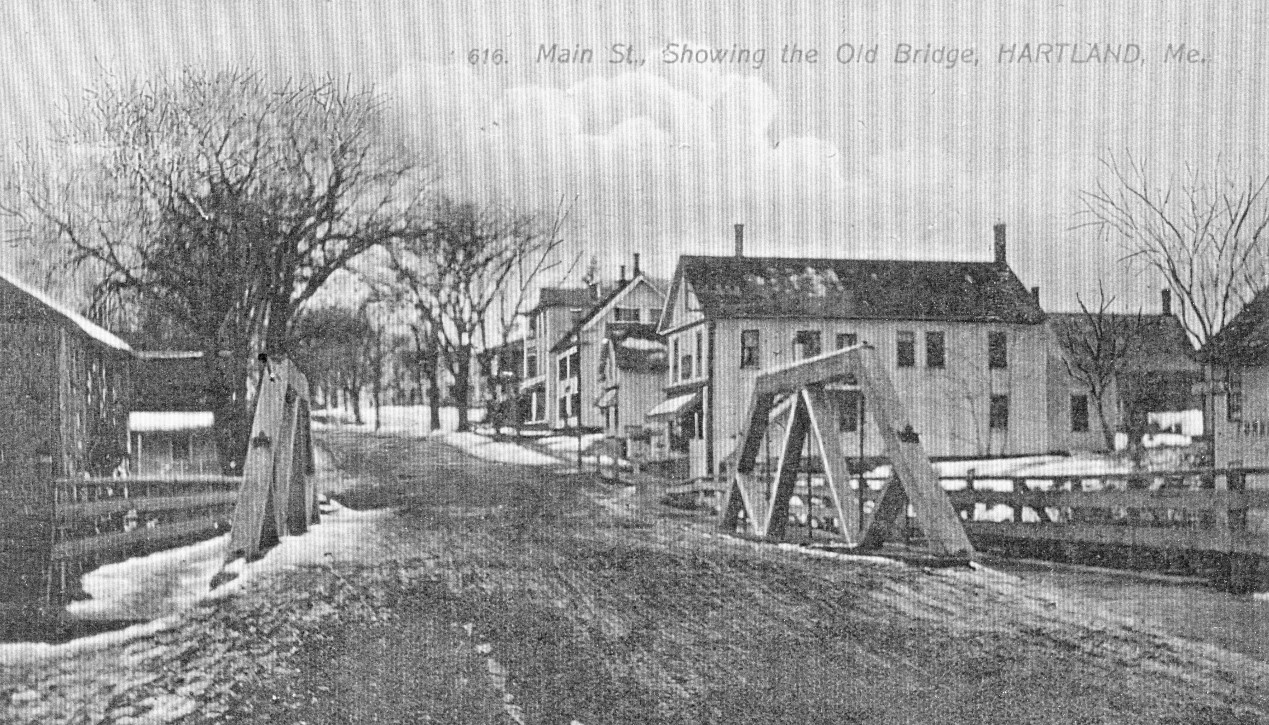
Part of the western side of Main Street seen from the Sebasticook River Island – c1900
*
A large section of the Main Street area, as well as much of the future Hartland Village area, was originally part of the future town of St Albans when it was purchased by William Moor of Goffstown, New Hampshire. Moor first came to explore the area around 1796 after St Albans was first surveyed as Township No. 5 in the 4th Range north of the Waldo Patent. Moor’s expansive lot stretched along both sides of the Sebasticook River and remained part of St Albans when it incorporated as a town in 1813 and remained as such when Hartland incorporated in 1820.
This edited close-up of the original map surveyed by Samuel Weston in 1798 is rotated to a north-south perspective and highlights the original existing borders at the time of future towns surrounding Moor’s Lot S-17.
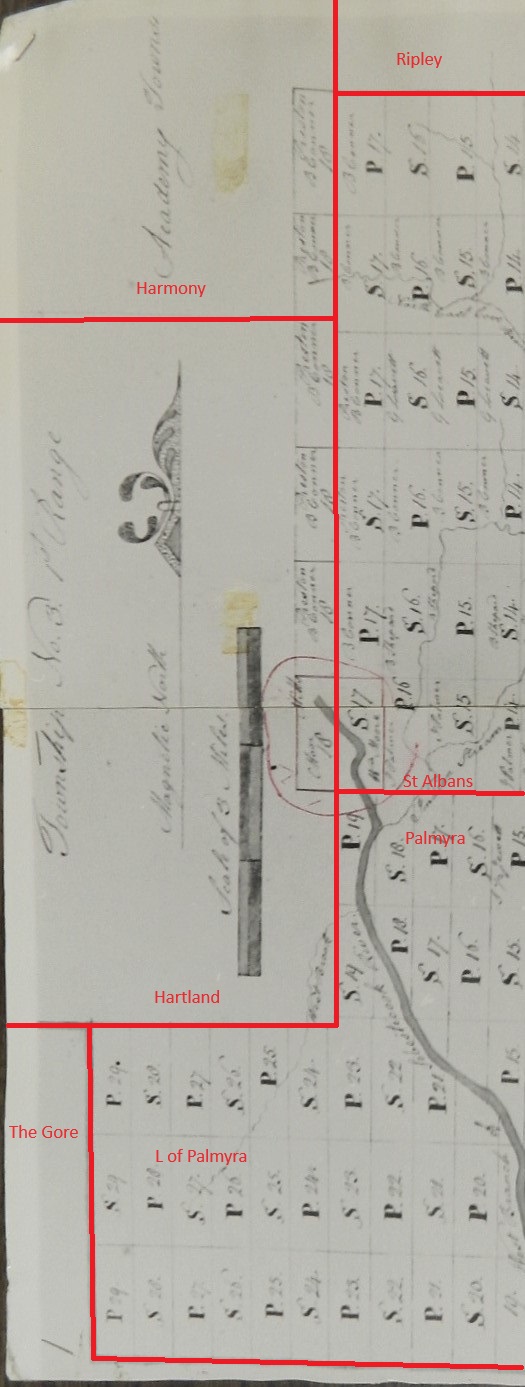
Edited Map of William Moor’s Lot S-17 location in Township No. 5 – 1798
*
For further visual reference, Moor’s Lot 17 is highlighted below as it would have existed on a future map of the village area in 1883 including the area surrounding Main Street originally divided between Hartland and St Albans a bit east of its future intersection with Mill Street and Pittsfield Avenue.
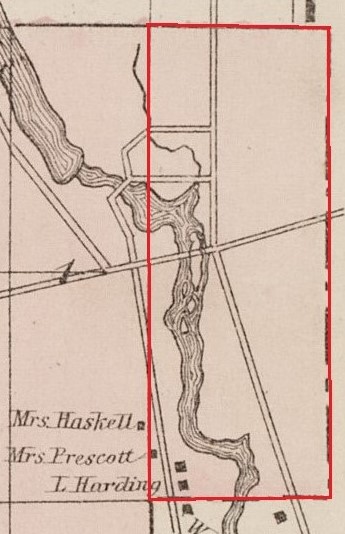
William Moor’s Original Lot 17 Location Reference
*
William Moor traveled back and forth from New Hampshire for a few years as he began to make improvements on the piece of his lot on future Commercial Street and built a temporary log cabin for shelter. Upon one of his returns to New Hampshire in 1797, he married Sally Moor, daughter of Abraham Moor & Esther Walker.
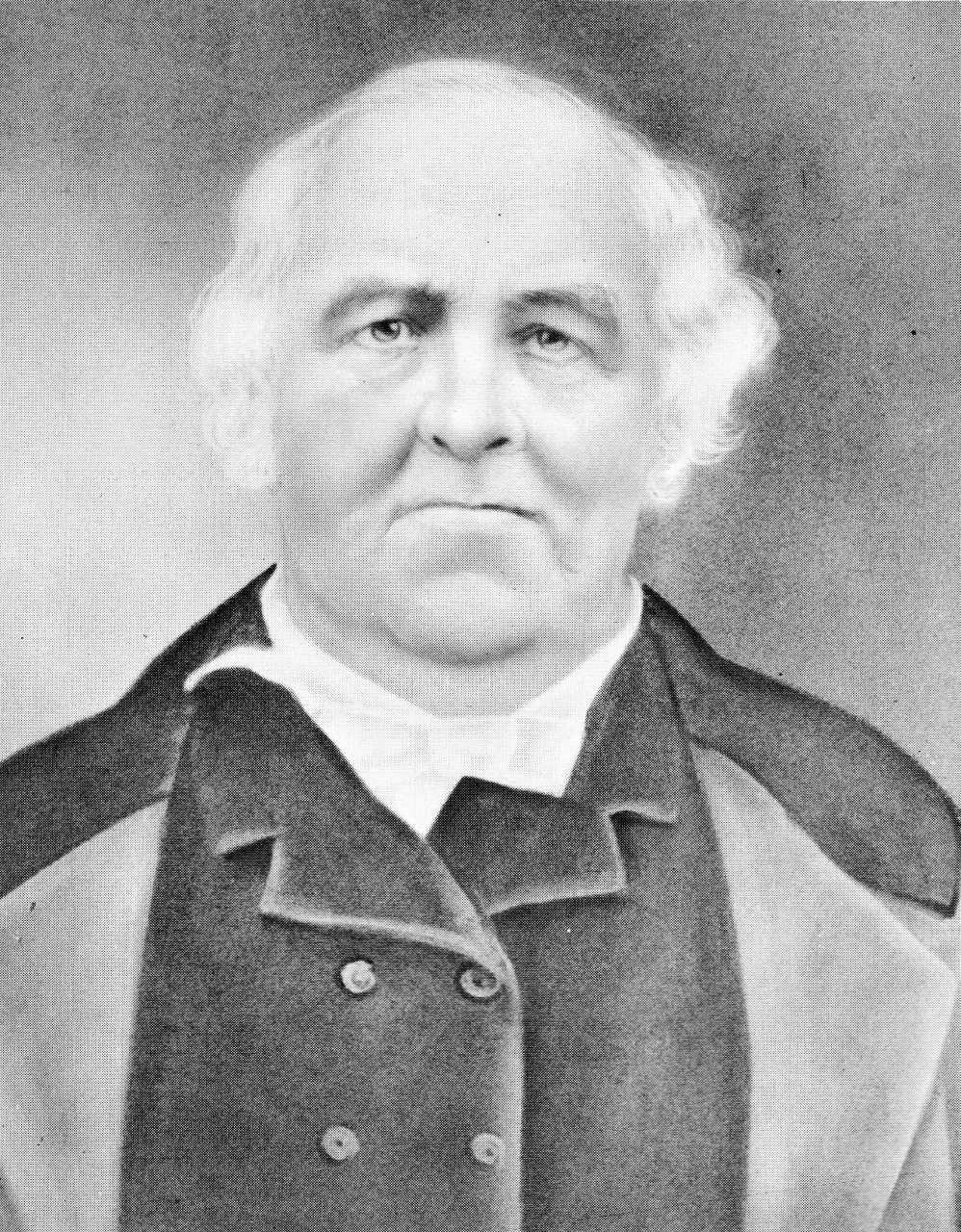
William Moor (1776-1848)
*
By about 1798, Moor had also begun building a small raceway dam between the Sebasticook River Island and the piece of his lot on future Commercial Street where he planned to settle his family. Moor then built a sawmill at the dam along the river bank which employed a newly invented water driven “Up & Down” design. In 1802, William & Sally returned to settle on their lot for good with their 2 oldest children, Maria & James, where William later built their first permanent stick home near the future woolen mill office/town library.
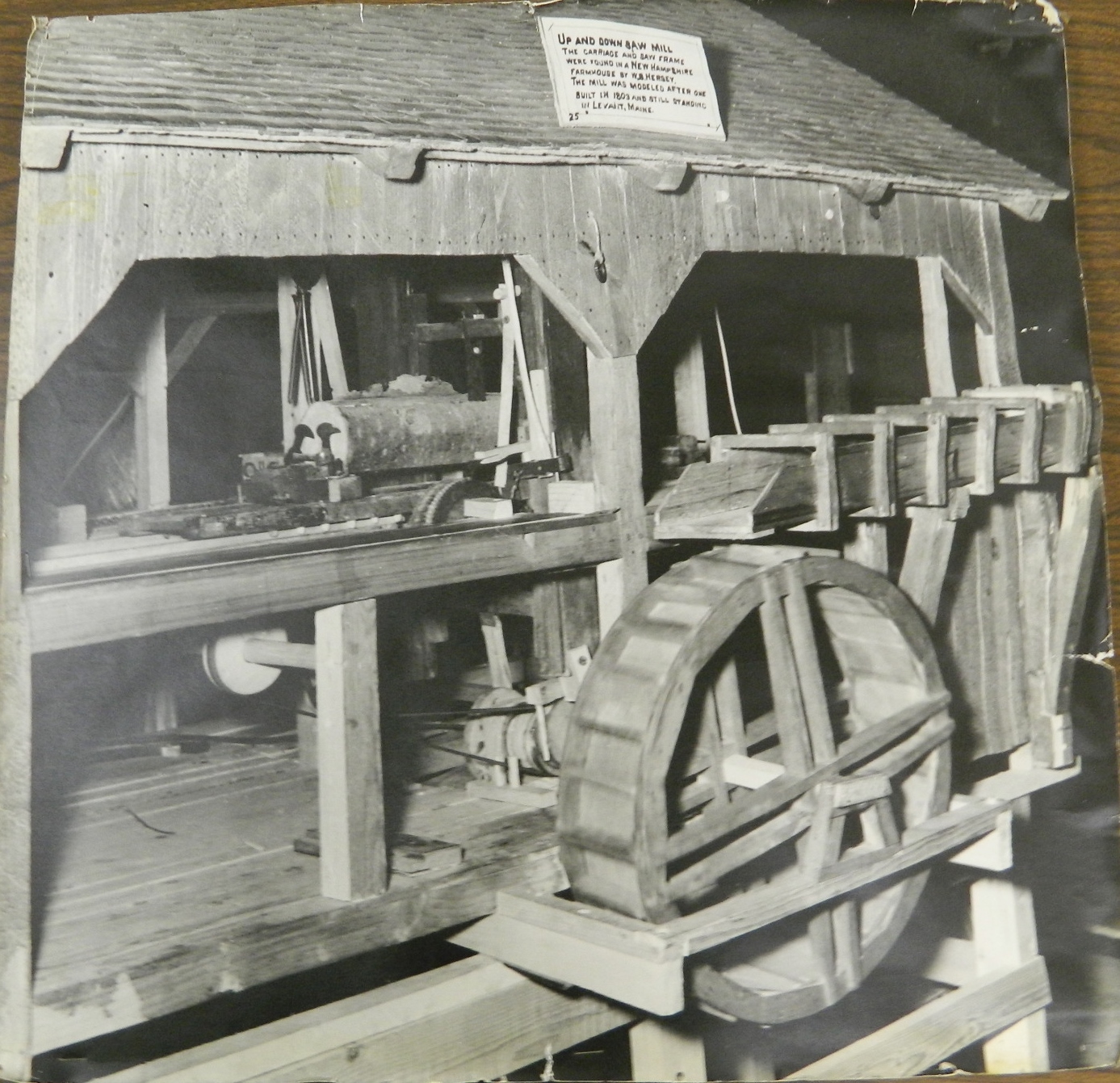
Example of an Up & Down Sawmill from Levant on display at the Maine State Museum
*
Well before Hartland’s incorporation in 1820, William Moor had already broken up most of his large original lot on both sides of the Sebasticook River into several properties which had been purchased by new settlers in the area. An 1821 annexation of all of Hartland’s land east of the Sebasticook River & Great Moose Lake further extended St Albans original western border.
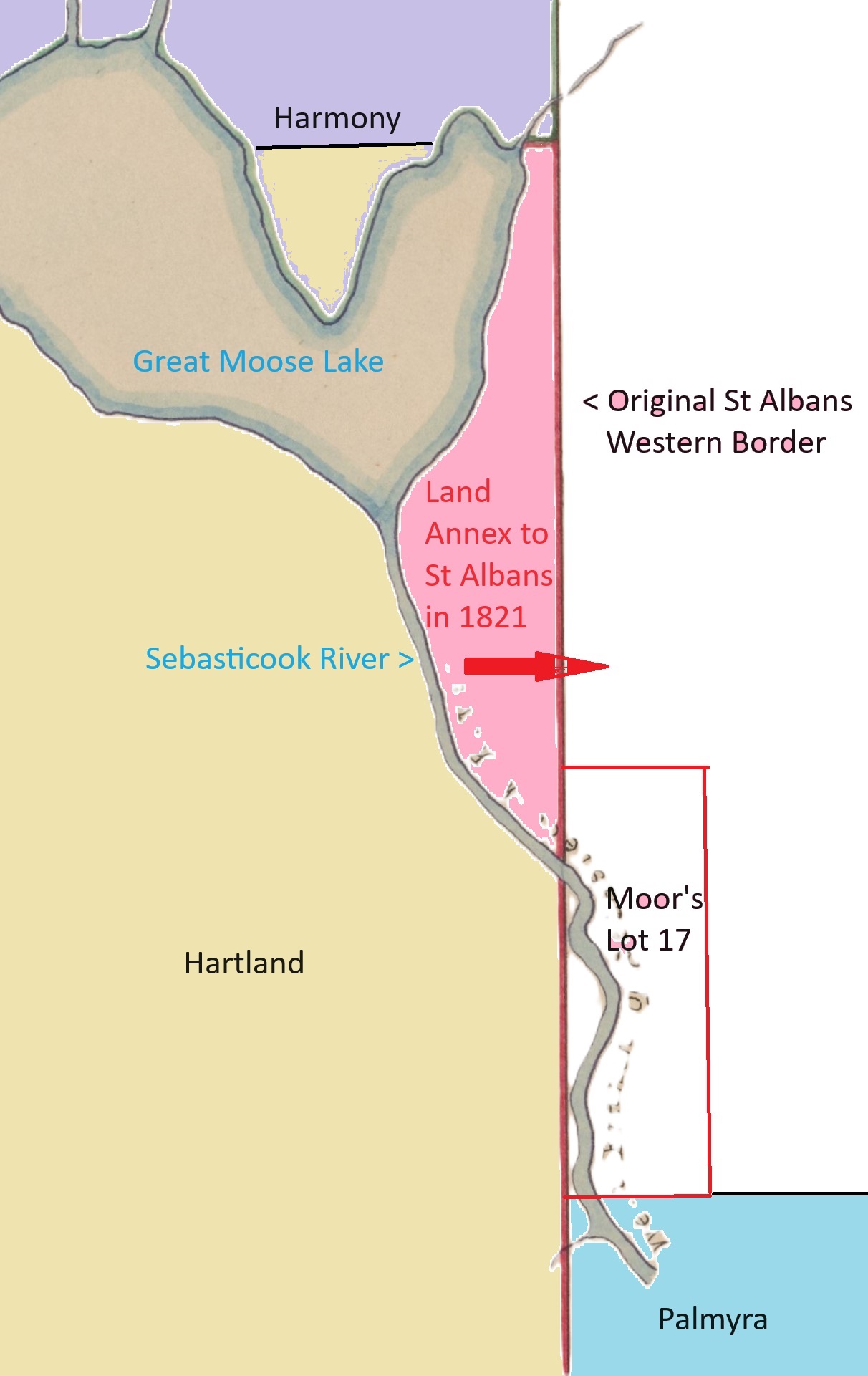
1821 Land Annexation to St Albans
*
Issues soon arose especially for some of those settlers in Hartland whose properties bordered or straddled the existing town line on the western side of the river including dual taxation and access to water rights held by St Albans. As early as 1826, Hartland Town Meetings began to include articles brought to voters regarding the question of an extension of its eastern town line to the Sebasticook River to include the contentious section but no agreed upon resolution would be brought forth at the time.
In 1828, an unsuccessful petition was brought forth by James Moor, Horatio Alden and brothers Thomas & Hiram Dorman, noting in part the existing border made it difficult for new settlement in the growing area as it was divided and they were “subject to the inconveniency” of paying taxes to both towns and purchasing water privileges from St Albans for their mills. Their alternative solution was to instead annex all of Lot 1 in Hartland to St Albans.
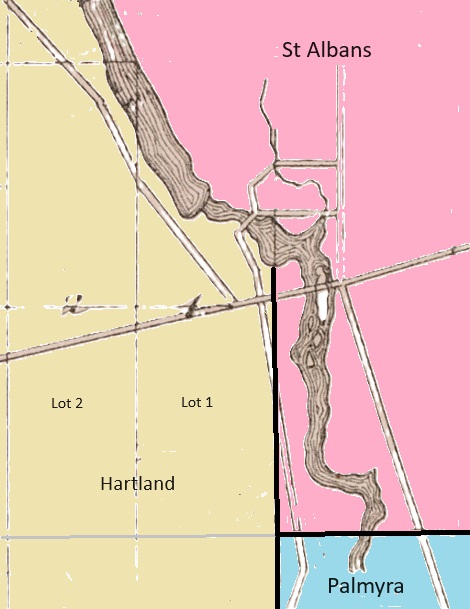
Village Area Borders following 1821 Land Annexation to St Albans
*
As growth in population, industry and commerce continued on both sides of the village area over the years, it further escalated old issues with the divided village area border and since created new concerns as the center of population and town affairs for St Albans shifted to the growing village area at the base of Big Indian Pond. Despite these growing concerns, it would take many years and several discussions among citizens of both towns before the current borders of the village area between Hartland and St Albans were finally established following an 1846 petition presented by inhabitants of St Albans living on the western side of the village area to the Maine State Legislature.
The petition noted the existing borders cut up the village, made it difficult to properly tax and made schooling a problem. It concluded by stating the proposed line changes, “Would enlarge the power of doing good, augment the facilities of business, swell the population, give spirit & vivacity, cause a union of exertion, contribute to diminish jealously, increase happiness & prosperity and produce efforts salutary and desirable.”
On August 7, 1846, the Legislature formally approved an Act to again alter some of the Hartland and St Albans town line on the eastern and a part of the western side of the village reading in part as, “From and after the passage of this act, all that part of the Town of St Albans, in the County of Somerset, which lies west of Lot Numbered Sixteen, in the First Range of lots in said Town of St Albans, be, and is hereby set off from said Town of St Albans and annexed to the Town of Hartland in said County.”
As seen on this illustrated future map of 1883 as reference, the majority of this annexed land, including part of Main Street, was William Moor’s entire original Lot Seventeen which had since been divided into multiple properties. Also included was a small section of land west of the northwest side of Moor’s lot bordering the Sebasticook River including future Upper Mill Street which had been previously annexed from Hartland to St Albans in 1821.

Hartland Village following 1846 Land Annexation from St Albans
*
Albeit unsuccessful, a noteworthy petition was raised in 1849 by a dozen inhabitants of the “new” Hartland Village led by Dr. Calvin Blake who had settled in 1825 in then St Albans on future Academy Street as one of the first area physicians. The petitioners, apparently displeased with the state of affairs in their new town, proposed the entire section of the village annexed in 1846 be given back to St Albans, however it was not accepted by Hartland voters and never enacted by the Legislature.
*
An edited view of Main Street from the original 1860 Somerset County Map of existing residences, businesses, merchants and landmarks some 14 years after the annexation of the village area on both sides of the Sebasticook River from St Albans to Hartland in 1846.
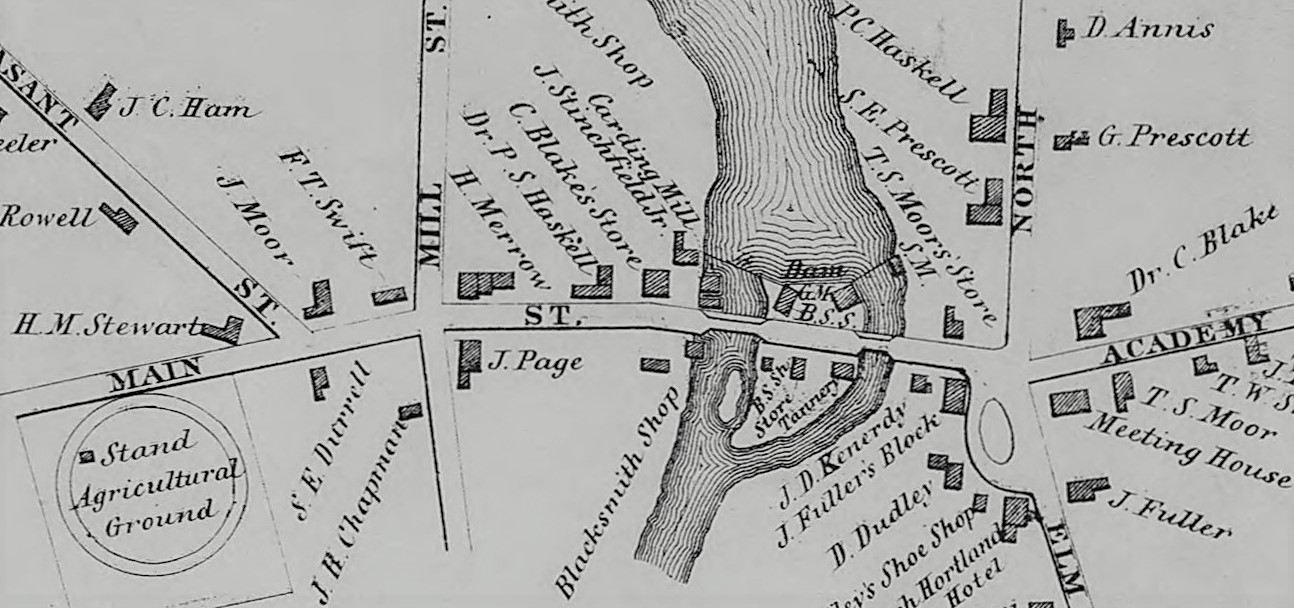
Main Street – 1860 Somerset County Map
*
Main Street residences, businesses, merchants and landmarks as noted above on the 1860 map:
Northern side (L-R): James Moor residence, F. T. Swift residence, The Park House (operated by Harry Merrow), Dr. Peleg S. Haskell residence & office, Calvin Blake, Jr Dry Goods & Groceries Store, John Stinchfield, Jr residence, Stinchfield Carding Mill, Main Street Bridge, Blacksmith Shop (Island), Grist Mill (Island), Raceway Bridge & Thomas S. Moor’s General Store.
Southern side: East Somerset Agricultural Society Fairgrounds, S. E. Durrell residence, John Page residence, Unknown residence, Blacksmith Shop, Main Street Bridge, Blacksmith Shop (Island), Dry Goods Store (Island), John Page & Son Tannery (Island), Raceway Bridge & J. D. Kennedy Tailor Store.
*
Currently, no maps of Hartland detailing the locations of homes, businesses and merchants before 1860 have been discovered. Various documents provide us with enough information to know many existed in its early years of settlement, but most of the specific details of when they were built or by whom remain unknown. The following is based on our best interpretation of known maps, town records, census data, historical book references, photos, artifacts and family genealogical information. Updates are made as new information is discovered.
*
Following William & Sally Moor’s departure to Corinna, their eldest daughter Maria Moor (1797-1868), who had married John Stinchfield, Sr (1793-1880) in 1815, remained in the area where they raised 7 known sons. Although they were included in Federal Census Reports for St Albans from 1820 through 1840, other records indicate they likely settled along Main Street on the western side of the river on land from her father’s original lot which was still part of St Albans until 1846. The 1850 Census listed them in Hartland where John was noted as a “clothier” as was his 24yr old son Benjamin and 20yr old son John, Jr who were living with them at the time as was their 11yr old son Calvin. By 1860, their son John Stinchfield, Jr owned the family homestead next to the Carding Mill on the Lower Dam with its private entrance at the corner of the Main Street Bridge as seen on the map above. John Jr was operating the Carding Mill in 1860 just before his untimely death in 1861 at 31yrs old. John Stinchfield, Sr sold the homestead around 1868 to the Fairgrieves family and moved to Skowhegan. The private entrance to the homestead would later be extended as Fairgrieves Avenue eventually connecting with Hubbard Avenue.
*
William & Sally’s eldest son James Moor (1800-1873) also remained in the area where he married Dorcas Wiggin (1799-1883) in 1821. James owned a substantial amount of property on Lot #1 in Hartland which reached back to the future Mill Street area all the way to the river and up along future Pleasant Street to the cemetery. Soon after they married, James & Dorcas built their first modest home atop the highest hill on what became Main Street in Hartland Village where they began raising their family of 9 eventual children. James was active in early town affairs and would play an important role in the development of its industry when he built a dam on the Sebasticook River above future Mill Street around 1825 to locate his first sawmill.
In 1847, James & Dorcas Moor built a new, larger house on the same location on Main Street.
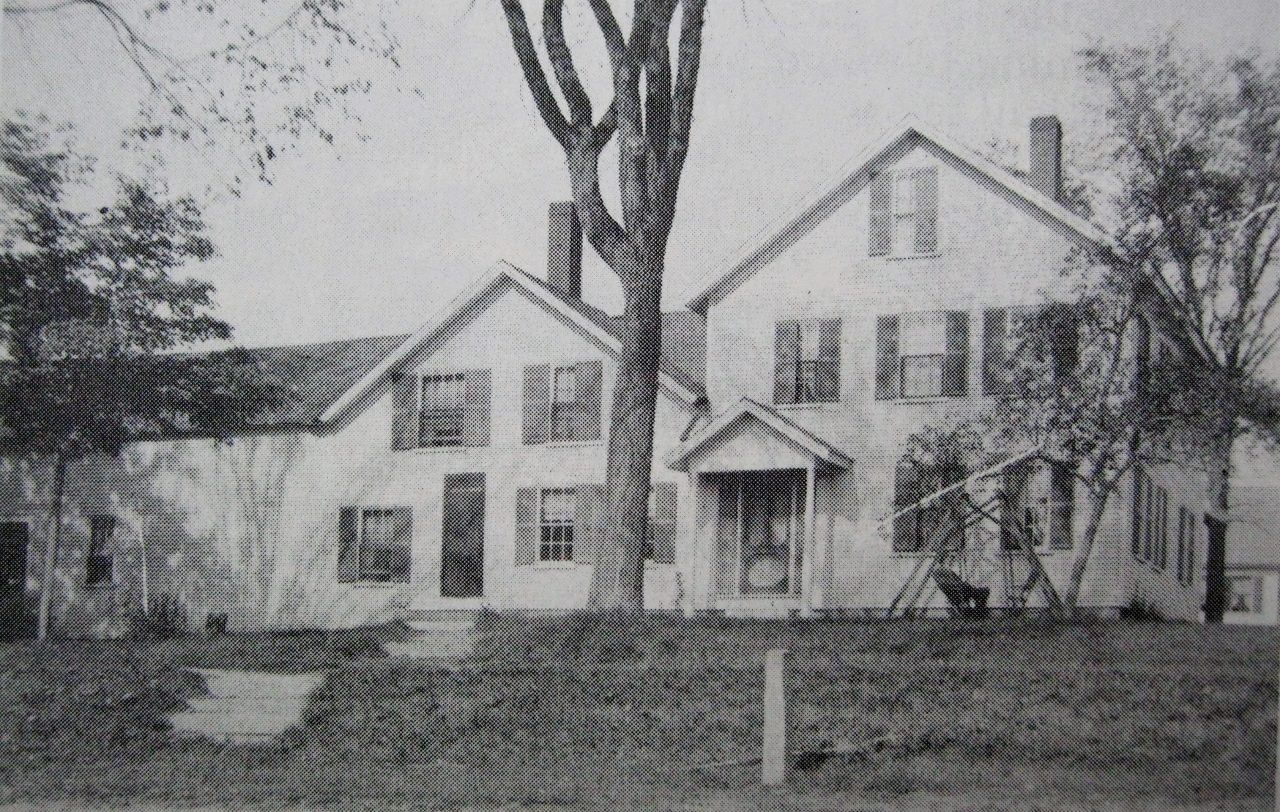
Rebuilt James Moor Residence – Main Street
*
Former Hartland Librarian Mary (Coston) Smith wrote in her personal historical journal the Park House was built around 1827 however early ownership of the building remains currently unknown. By the time the 1860 map was completed, Harry Merrow was operating it before he sold to Richmond L. Williams by 1870.
The Park House with its attached Livery House on the corner of Main Street & Mill Street was one of two hotels along with the Hartland House on Elm Street serving guests, weary stage coach travelers and traveling salesmen during the town’s early history.
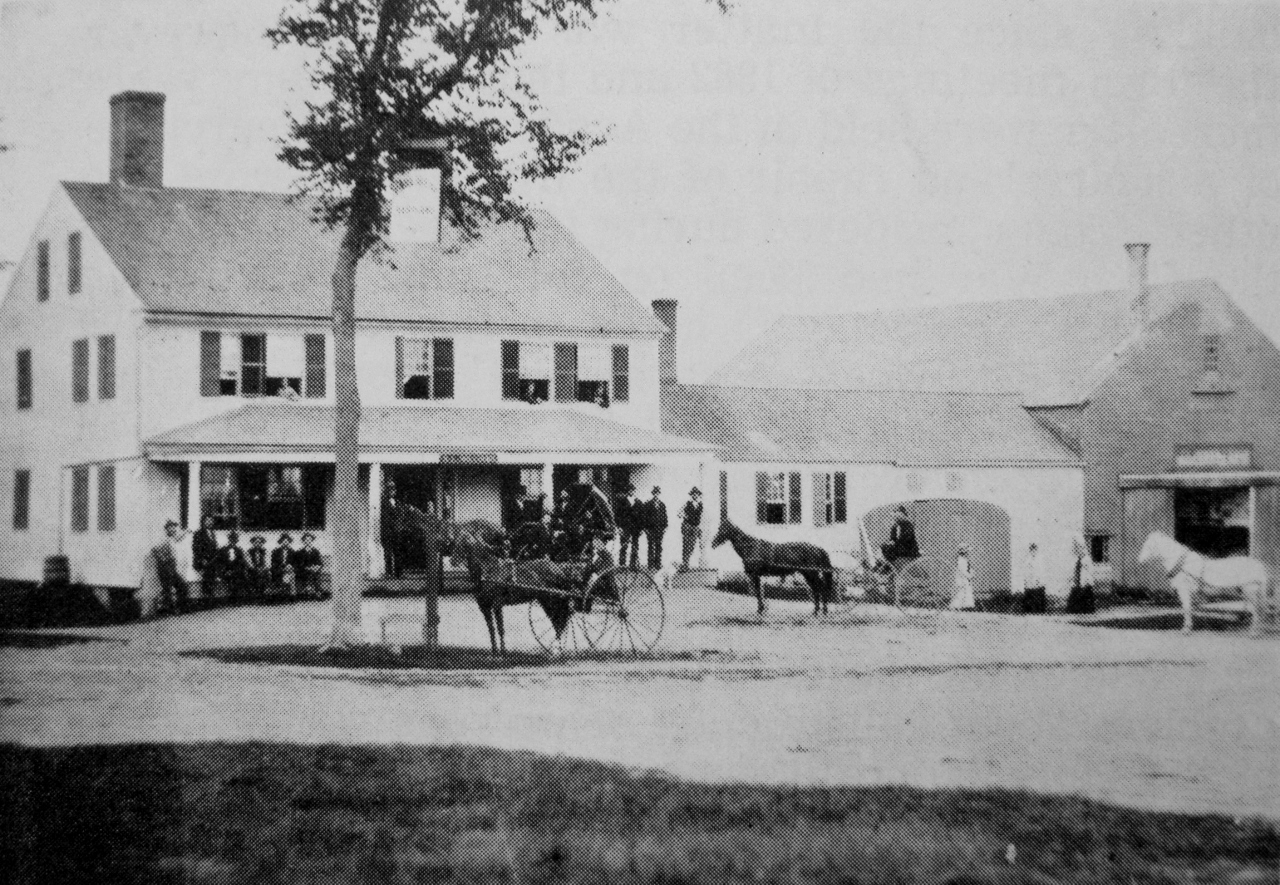
The Park House before Renovations – c1875
*
The East Somerset Agricultural Society was one of the oldest organizations formed in Hartland. It incorporated by Maine Legislative Act in 1832 and its first Annual Cattle Show & Fair was held that same year as a small one day event. It soon grew into a large three day regional event held on its dedicated fairgrounds on Outer Main Street (present day Canaan Road) drawing hundreds of competitors and attendees from around the area. The sprawling fairgrounds eventually included a 1/2 mile horse racing track, stables, a large exhibition hall and a covered main grandstand.
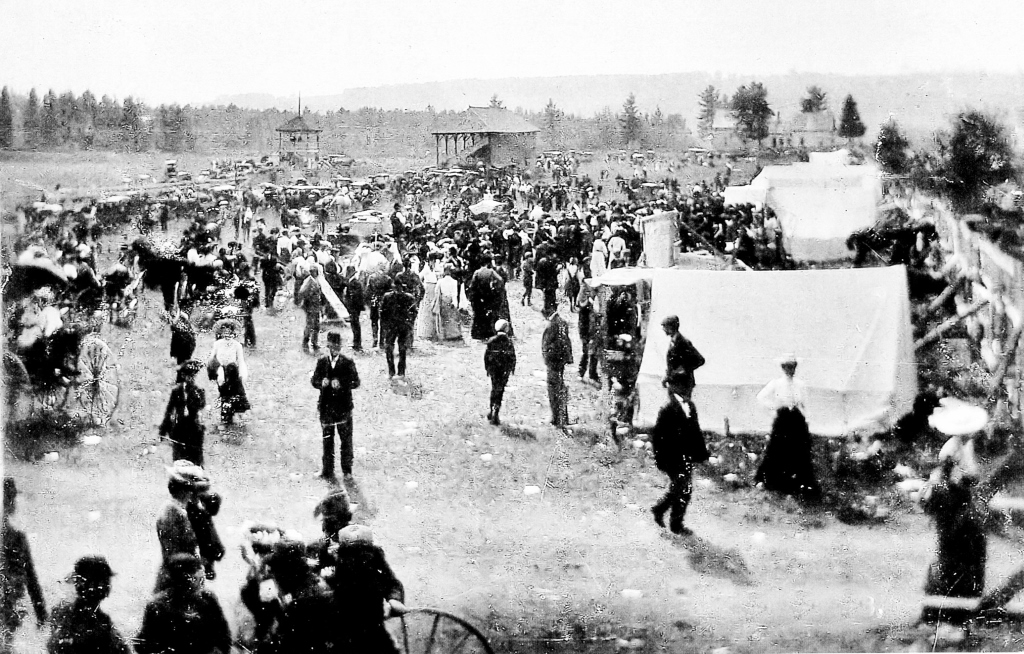
East Somerset Agricultural Society Fairgrounds on Outer Main Street – 1910
*
In 1828, brothers Hiram & Thomas Dorman built the first local tannery on the lower side of the Sebasticook River Island then still part of St Albans. Based solely on the previously mentioned 1828 petition they had signed which noted some of the petitioner’s property straddled the then existing Hartland-St Albans line, they may have owned and/or built the original house on the large lot which originally stretched back along Pittsfield Avenue and down Main Street to the bridge.
Around 1837, Bath natives Edward Hall Page, Jr (1780-1855) and his son John Page (1805-1898) moved to Hartland with their families and purchased the Dorman Brothers Tannery. John and his family resided at the sprawling homestead on the corner of Main Street. Following Edward’s retirement by 1850, John took over the family tanning business and was later joined by his son John S. Page operating as John Page & Son Tannery into the late 1880s.
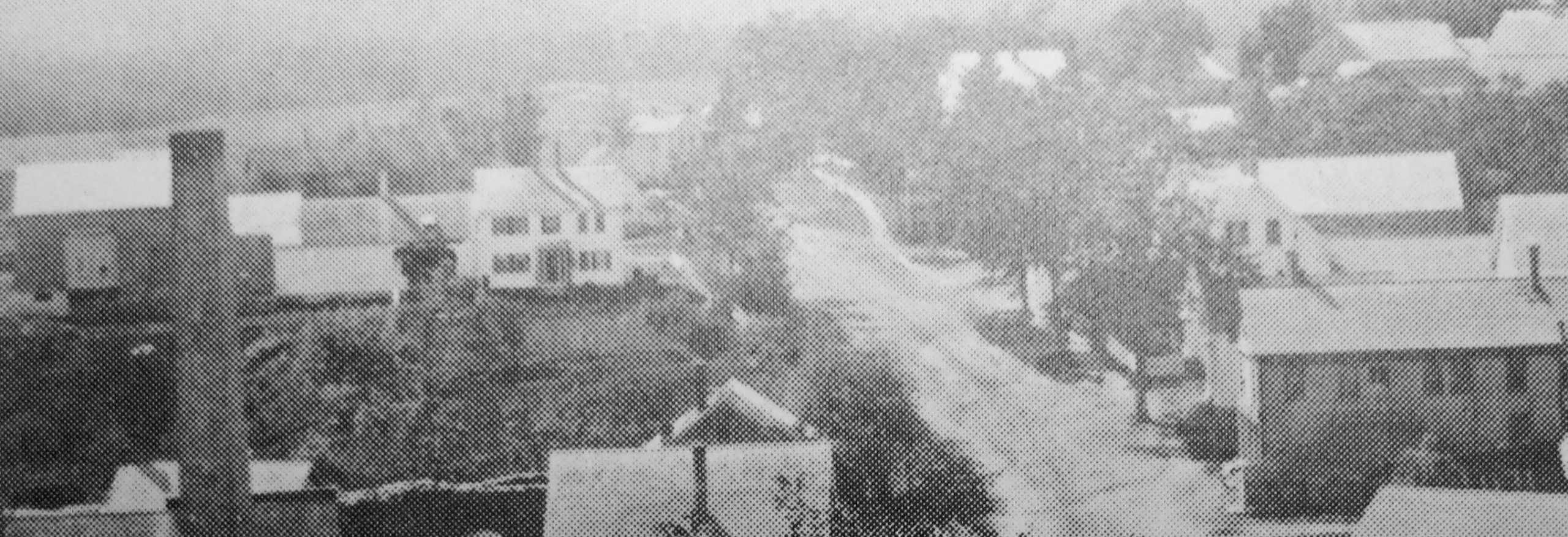
John Page Homestead on the left at the corner of Main Street & Pittsfield Avenue – 1877
*
Emily (Page) Webb (1838-1927), daughter of John Page & Rachel Coller, was born and raised at the family homestead in Hartland. Emily and her husband Luther Webb, along with their 4 surviving children, moved from Hartland to Skowhegan in 1875 where they raised their family before moving to Pasadena, California in 1893. She wrote numerous published poems over the years under the name Emily Page Webb.
*
“KINDNESS RETURNED”
by Emily Page Webb
As streams flowing down from the mountains,
By windings no mortal can wist,
Appear to return to their fountains
At sunset, in rainbows of mist;
So often, some deed of affection,
In youth, more tender than wise,
Passed away from our own recollection,
Returns in some loving disguise.
*
The article below was written in 1890 just before they moved to California.
“Emily Page Webb was born in Hartland, a small manufacturing town on the Sebasticook River, about 1838. Her father’s house commanded a fine view of the country and the river where it leaped the falls, and dashed its white current against the rocky islands. No white hand of winter ever stilled its murmurs, and no hot breath of summer ever drank up its sparkling freshness. The broad, low hills on the north and west, and a dark green line of forest on the east seemed to encircle this little town with a magic charm, while far away to the south, the silver line of the river rolled its way through the meadows. Here, amid this quiet beauty, Emily spent her childhood and youth. Her love of poetry and talent of expressing herself in verse showed itself before she was ten years of age. Equally strong was her loving desire to assist her mother; picture to yourself a light little girl, with laughing blue eyes and rosy cheeks, working before school in the kitchen, and, at the same lime, putting her fancies into words. In later years, no household work ever seemed to interfere with the sweet songs she had to sing. When she was old enough to attend the St. Albans Academy her poetic power was soon discovered, and she was called upon to write for the lyceum papers, for festivals or any public occasion where wit and sentiment were required. In October, 1861, she was married to Mr. Luther H. Webb, her schoolmate and lover from early youth. The first years of their married life were spent in Hartland, but in 1875 they removed to Skowhegan, where they still live. She is the mother of five children, two girls and three boys. Nina, her first child, died in early infancy. Her domestic life has been a happy one where parents and children are congenial spirits, united in aim, intellect and taste. When the Woman’s Club was organized in Skowhegan, she joined and was made Secretary, where the wit and brilliancy of her reports gave her a high standing in public favor. Since then, she has been President of the Club, and ‘poet laureate’ of every public occasion. Her noble womanhood, her tender regard for the feelings of others, her insight and tact in dealing with those around her, portray a character of rare beauty that gives added charm to her verse.”
*
Dr. Peleg Sprague Haskell (1832-1890) is a son of Peleg C. Haskell & Lois Fogg who had settled on future Commercial Street when it was still part of St Albans. He attended Hartland Academy and married Almira Page, daughter of John Page & Rachel Coller. He began his medical practice in Hartland operating an office from his Main Street home until 1860 when the family moved to Stockton Springs. Following Almira’s untimely death at 29yrs old in 1865, Dr. Haskell remarried Sarah A. Blanchard in 1867 and moved to St. Paul, Minnesota in 1879 with their 2 children where he continued his practice until his death. Dr. Haskell’s Aunt Louisa Haskell married Dr. Calvin Blake.
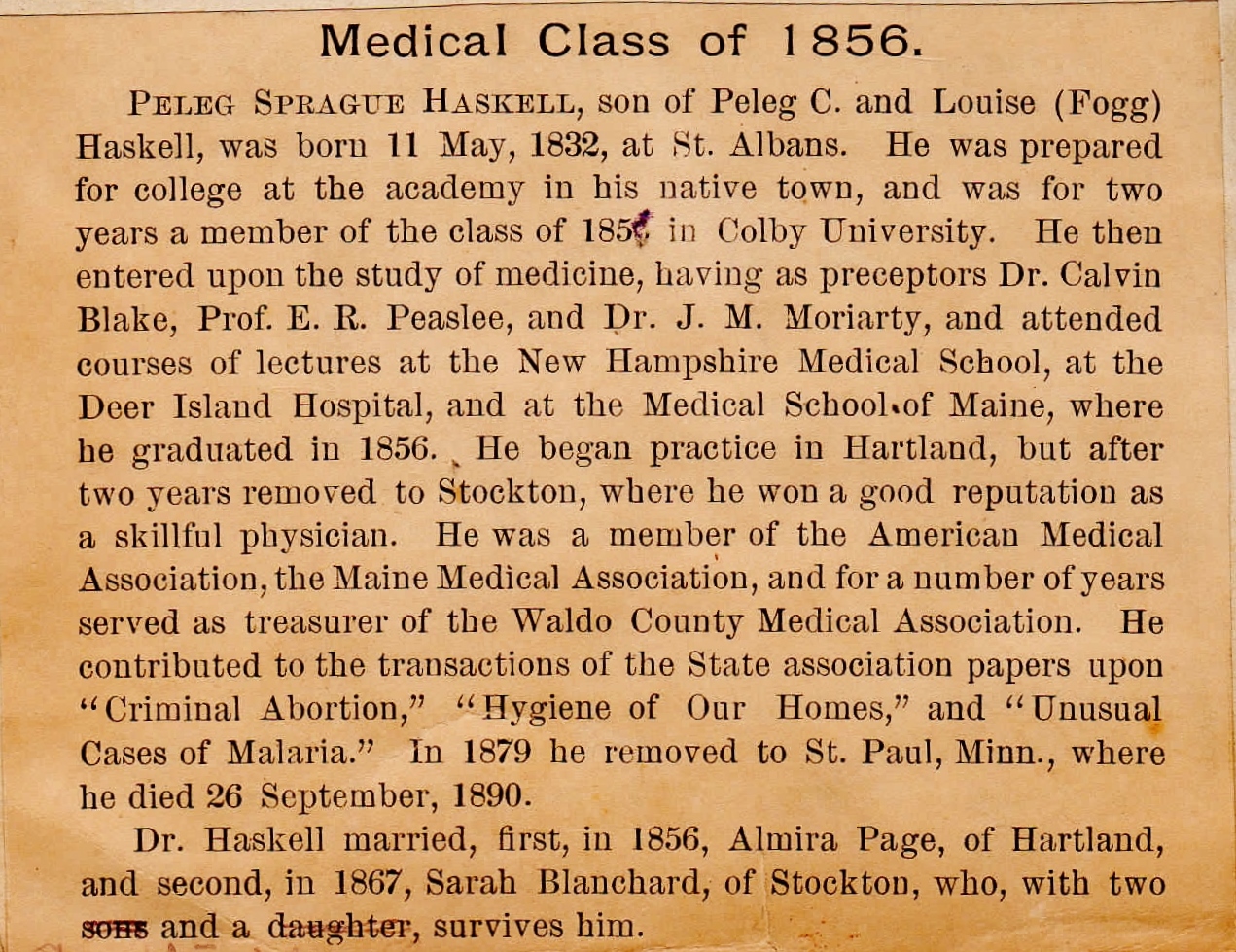
Dr. Peleg Sprague Haskell
*
Albert W. Miller (1835-1916) was born and raised in Palmyra before moving to Hartland in 1865 where he soon after established his A. W. Miller Drug Store at the former J. D. Kennedy Tailor Shop on Main Street next to the Fuller & Buck General Store in Warren Square.
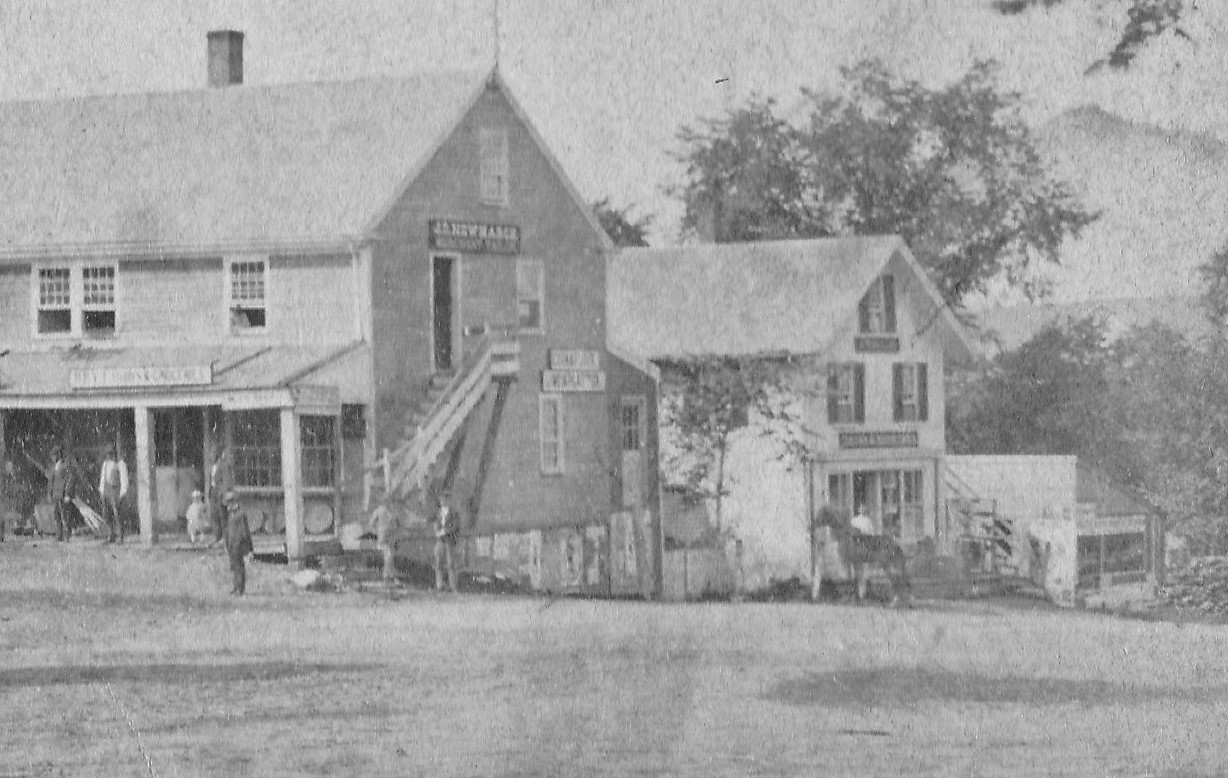
A. W. Miller Drug Store on Main Street to the right of Fuller & Buck Store – c1877
*
Although technically its facade faces Main Street, the detailed history of the future Drug Store Block is included on our Commercial Street page.
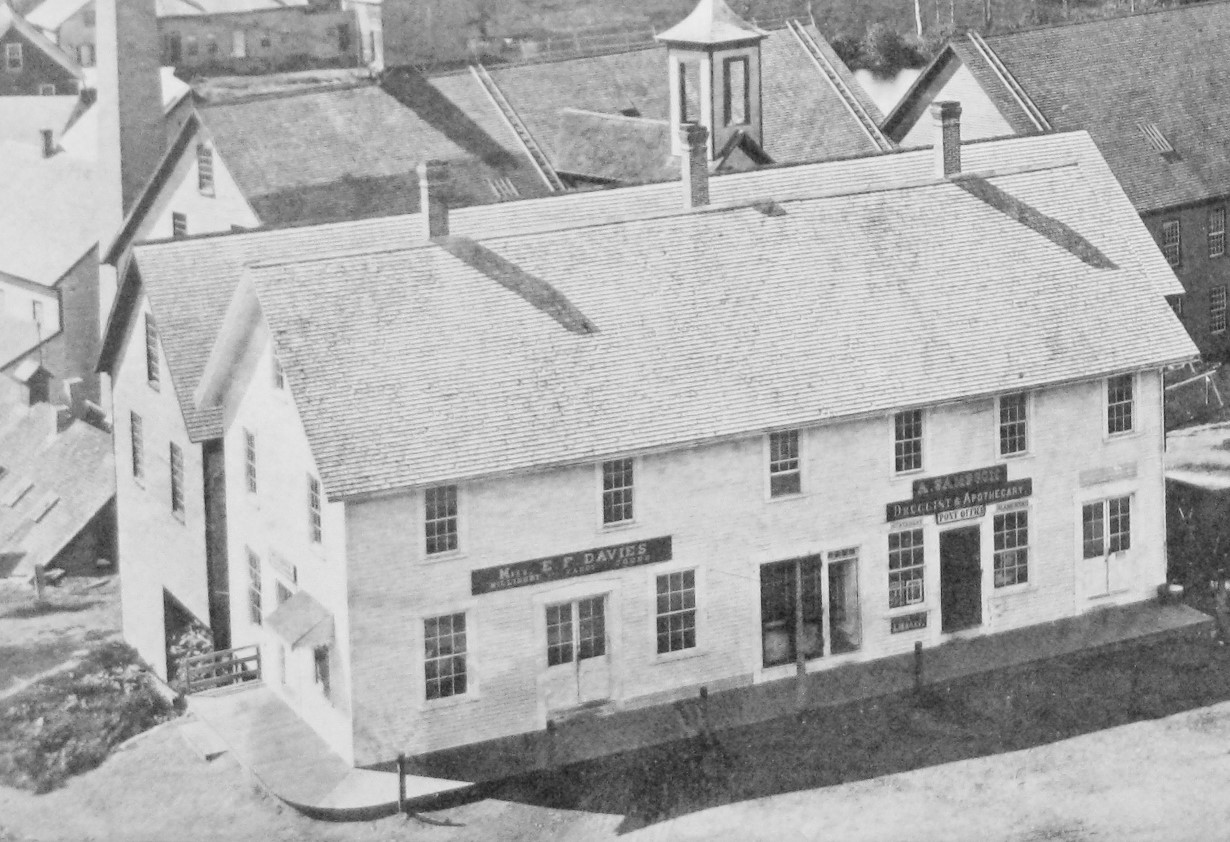
Former Thomas S. Moor General Store at the corner of Main Street & Commercial Street – 1877
*
In 1863, Scottish native Archibald Linn (1818-1889) came to Hartland and built the original Linn Woolen Mill aka Sebasticook Woolen Mill on the upper side of the Main Street Dam on the former William Moor Sawmill location. Linn and his wife Grace Wilson also purchased the former Sewell Prescott house on Commercial Street. The new mill immediately became the largest industry and employer in the area inducing many people to locate in town to work at the mill. Several new merchants and businesses soon opened to support the population influx as the village began to transform into the business and political center of Hartland.
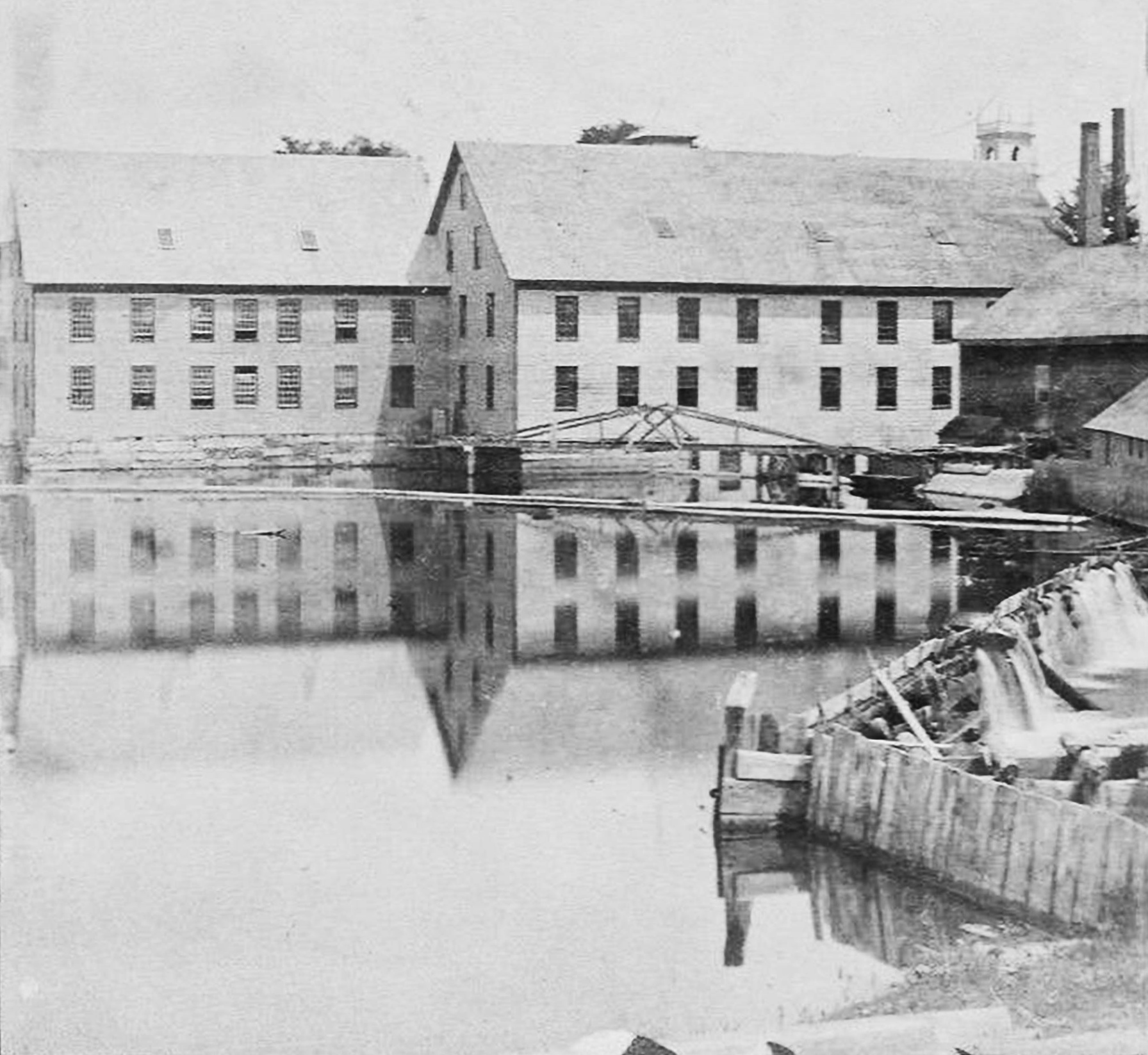
Original Linn Woolen Mill seen from future Hubbard Avenue – 1877
*
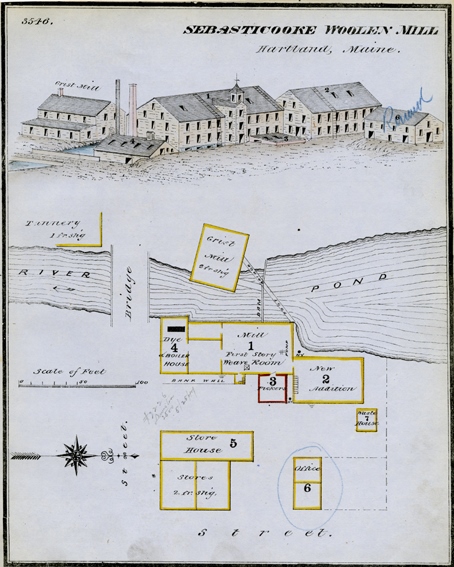
Layout of Linn Woolen Mill & Gristmill – 1874
(Courtesy of American Woolen Mill Museum, Ohio)
*
Westerly view from about 1877 of Main Street originally taken as a stereoscopic photo from the Baptist Church Steeple.
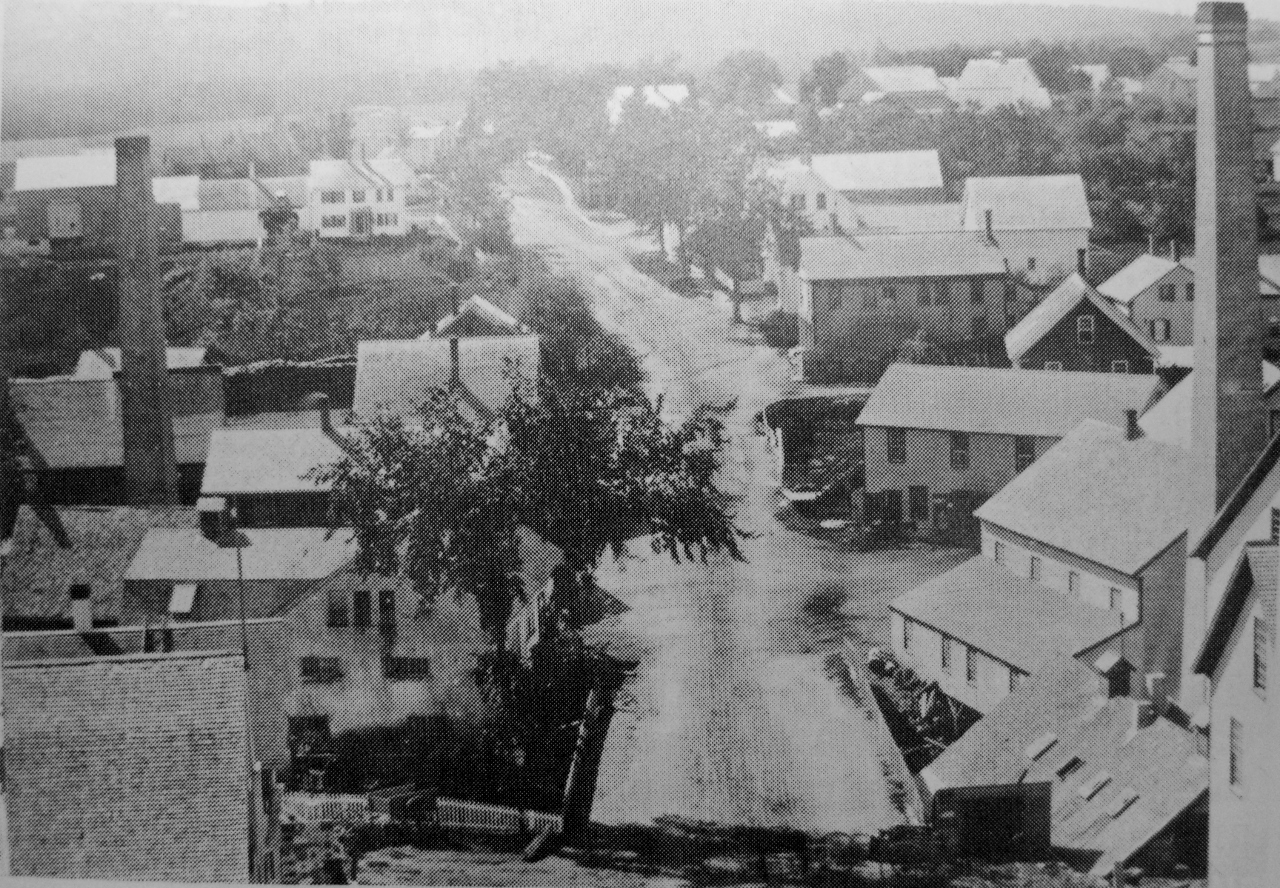
Main Street – c1877
*
An edited version with some of the known occupants at the time or future occupants when unknown for reference.
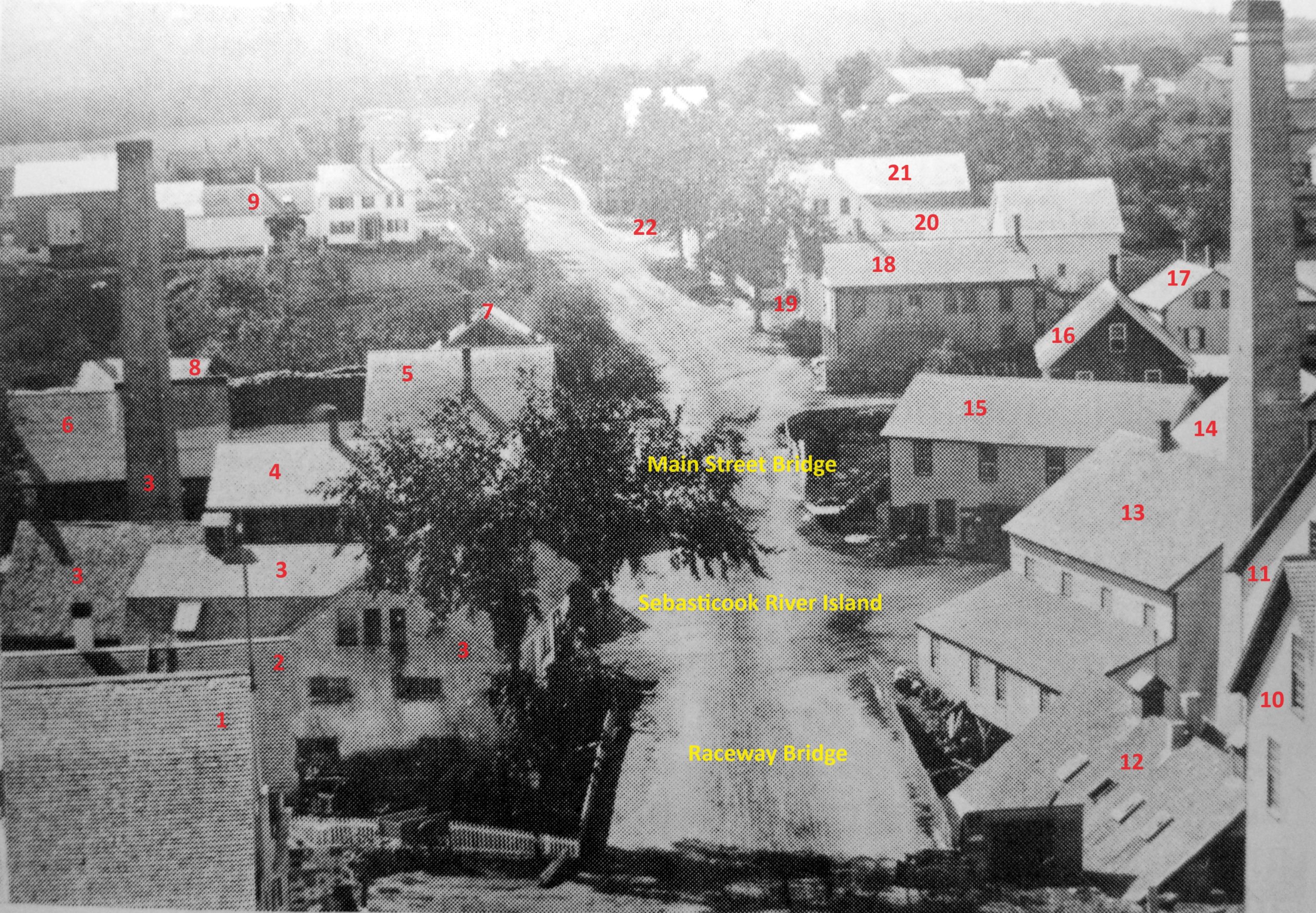
Left Side: 1. Fuller & Buck Store (at Warren Square) | 2. Albert W. Miller Drug Store | Raceway Bridge | 3. John Page & Son Tannery with attached buildings | 4. Unknown Store Block | 5. Blacksmith Shop | 6. Carriage Manufacturing Company | Main Street Bridge | 7. John J. Morrill Axe Manufacturing Company | 8. Sebasticook River Boat Landing Area | 9. John Page Lot & Homestead.
Right Side: 10. Linn Woolen Mill Storage Building | 11. Linn Woolen Mill | 12. Linn Woolen Mill Dye House | Raceway Bridge | 13. Linn Grist Mill | 14. Linn Machine Shop | 15. Blacksmith Shop aka Central Hall | Main Street Bridge | 16. Carding Mill | 17. Front part of the Fairgrieves Homestead | 18. Future Hartland Grain & Grocery Store | 19. Future Ensign Hubbard Store | 20. Furbush Brothers Residence with attached Barn | 21. Park House Livery Stable | 22. The Park House (obscured from view).
*
Seen below is an easterly view of Main Street from about 1877 taken originally as a stereoscopic photo.
On the left just out of view is The Park House at the corner of Mill Street with its woodshed seen in the photo. The next building is the Furbush house then the future Hubbard Store followed by the future Hartland Grain & Grocery Store before the Main Street Bridge. Just past the bridge on the island is a Blacksmith Shop (future Central Hall), Linn Machine Shop (hidden from the view) and the Linn Gristmill. Past the Raceway Bridge is the Linn Woolen Mill followed by the Linn Woolen Mill Storage Building which obscures the future Hartland Drug Store building next to it.
On the right is John Page’s Homestead at the corner of Pittsfield Avenue. Next to the Main Street Bridge is John J. Morrill’s Axe Manufacturing Company and the Boat Landing followed by a Blacksmith Shop, unknown store and John Page & Son Tannery on the island but hidden by trees in the photo. The Hartland Baptist Church is seen in the far background on the corner of Main Street & Elm Street.
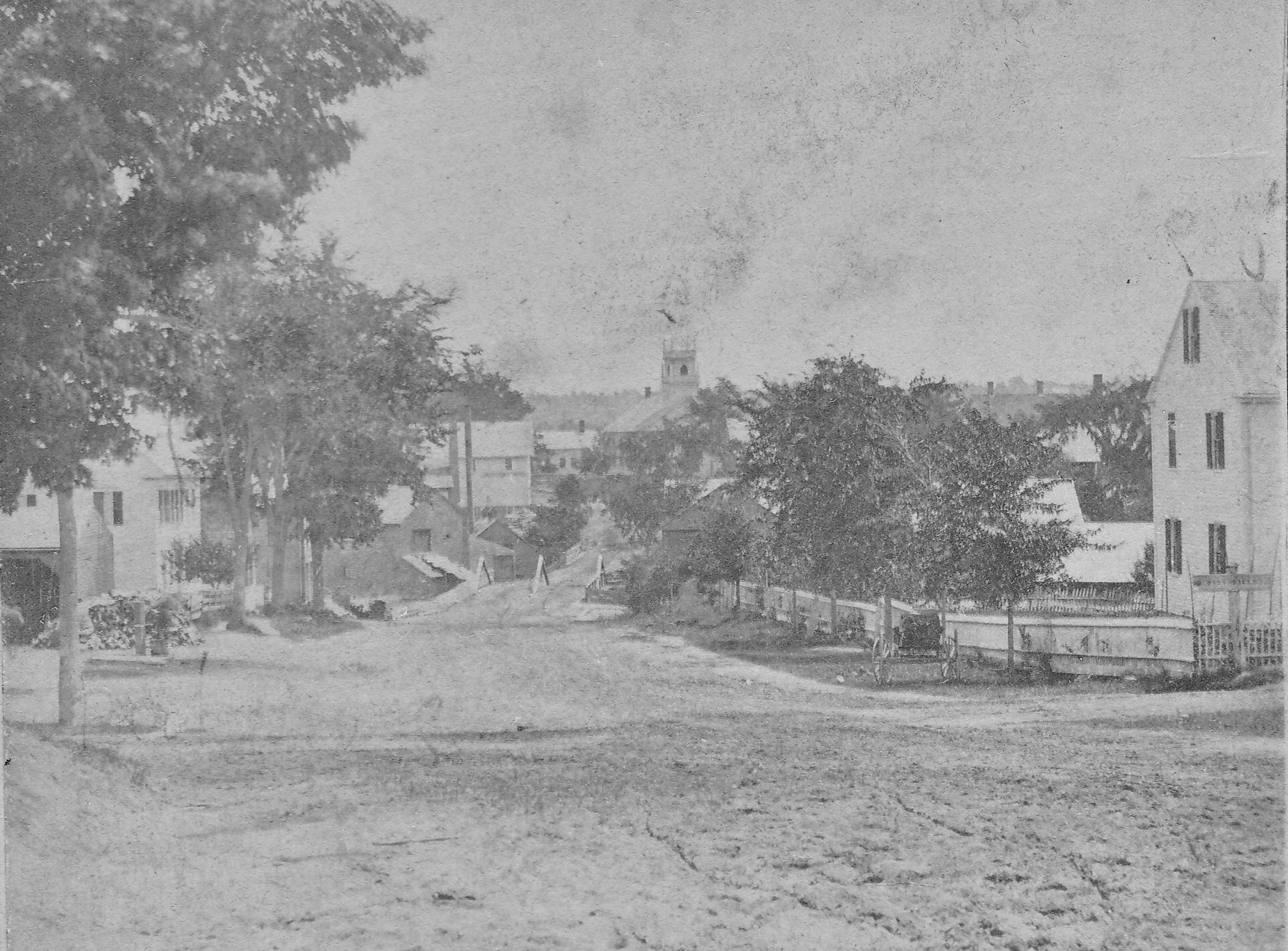
Main Street looking East from the corner of Pittsfield Avenue & Mill Street – c1877
*
Albert W. Miller was also very active in town affairs and served in several offices including Town Selectman, Liquor Agent, Probate Judge and Maine State Representative.
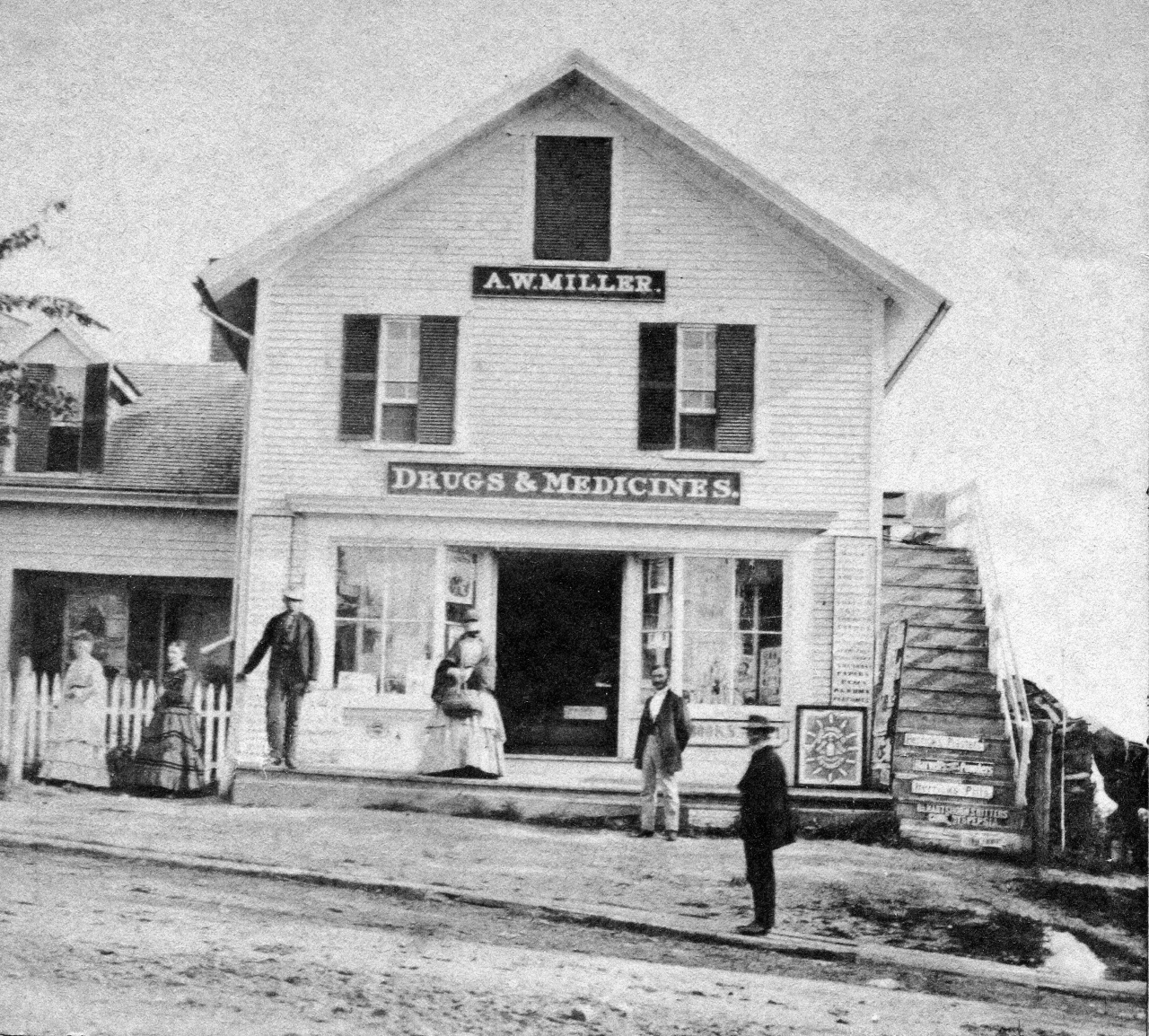
A. W. Miller Drug Store – c1880
*
It is quite likely some type of bridge system was built in the early years of settlement to cross the Sebasticook River and connect the island to both ends of Main Street. It is probable, albeit unconfirmed, early bridges were rebuilt or replaced at some point leading up to the 1860s. The earliest known reference concerning the bridge is from a September 1867 newspaper article noting, “The bridge across the Sebasticook in Hartland is being entirely rebuilt with new piers, stringers, etc.”
The first known photos of Main Street from the late 1870s show a more modern 3 truss wooden bridge in place at the time with the side rails of the smaller raceway bridge seen just beyond it.
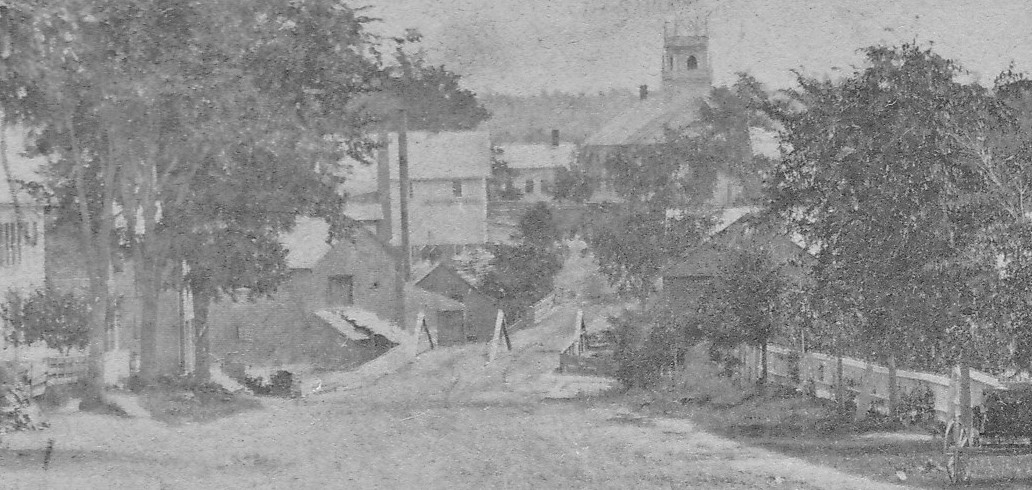
Main Street Bridge – c1877
*
The northern side of the Sebasticook River Island on Main Street held a Blacksmith Shop (future Central Hall) in the foreground with the Linn Mill Machine Shop behind it followed by the Linn Grist Mill. On the other side of the Raceway Bridge is the main Linn Woolen Mill building sitting behind its lowered Dye House & Boiler Room in front, then the Linn Woolen Mill Storage Building and the future Hartland Drug Store, partially hidden in the background with its canopy opened.
The bridge closely resembles the 3 truss bridge seen above with a similar shaped remaining truss, but appears to be under some type of construction with its center and right side trusses missing. The photo is undated so it is unknown when this construction occurred or if it led to the newer 2 truss bridge seen in future photos.
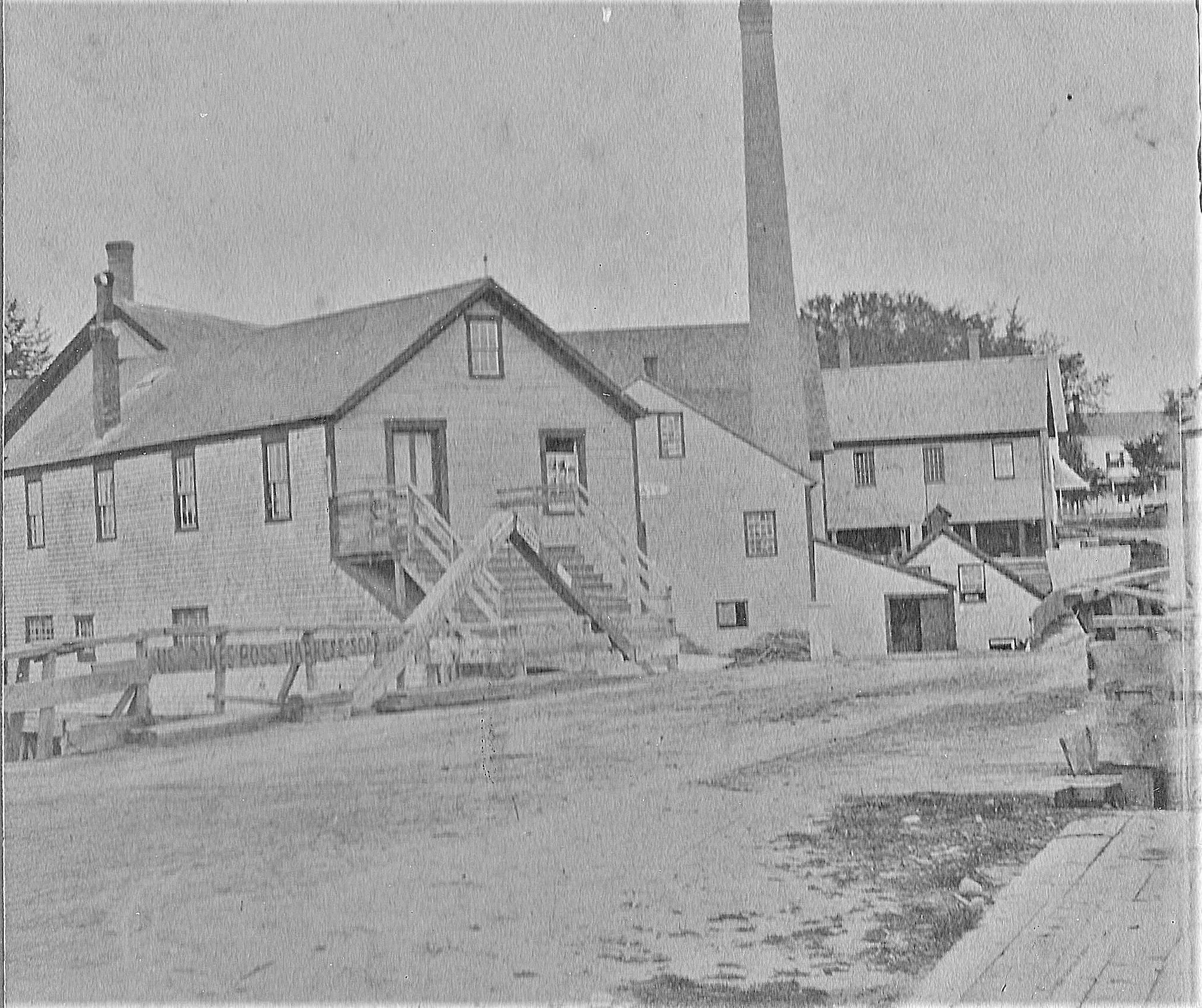
North Side of the Sebasticook River Island taken from Main Street Bridge – c1877
*
A Carriage Manufacturing Shop was located on the southern side of the Sebasticook River Island just below the Main Street Bridge. The sign on the building reads, “Carriage Shop & Framing Mill”. The shop was likely in operation for many years prior to the first known reference to it in the early 1870s when Daniel Sawyer & Lamont Griffith (1842-1910) ran their carriage making business here. By 1884, Daniel Sawyer operated the business with his son as “D. Sawyer & Son Carriage Makers” and Griffith opened his own word working business in town. Griffith had learned the carriage making craft from his older half-brother while he was a young man living in his native town of Dixfield before moving to Hartland soon after 1860.
The Sebasticook River Boat Landing was located just below the Main Street Bridge next to the J. J. Morrill Axe Manufacturing Company. The boat was used for moving and receiving small shipments of products such as grain. It also served as an alternate means of transportation to the crude roads early travelers used to reach Pittsfield which was the closest railroad depot connection until Hartland built its own railway extension from Pittsfield in 1886.
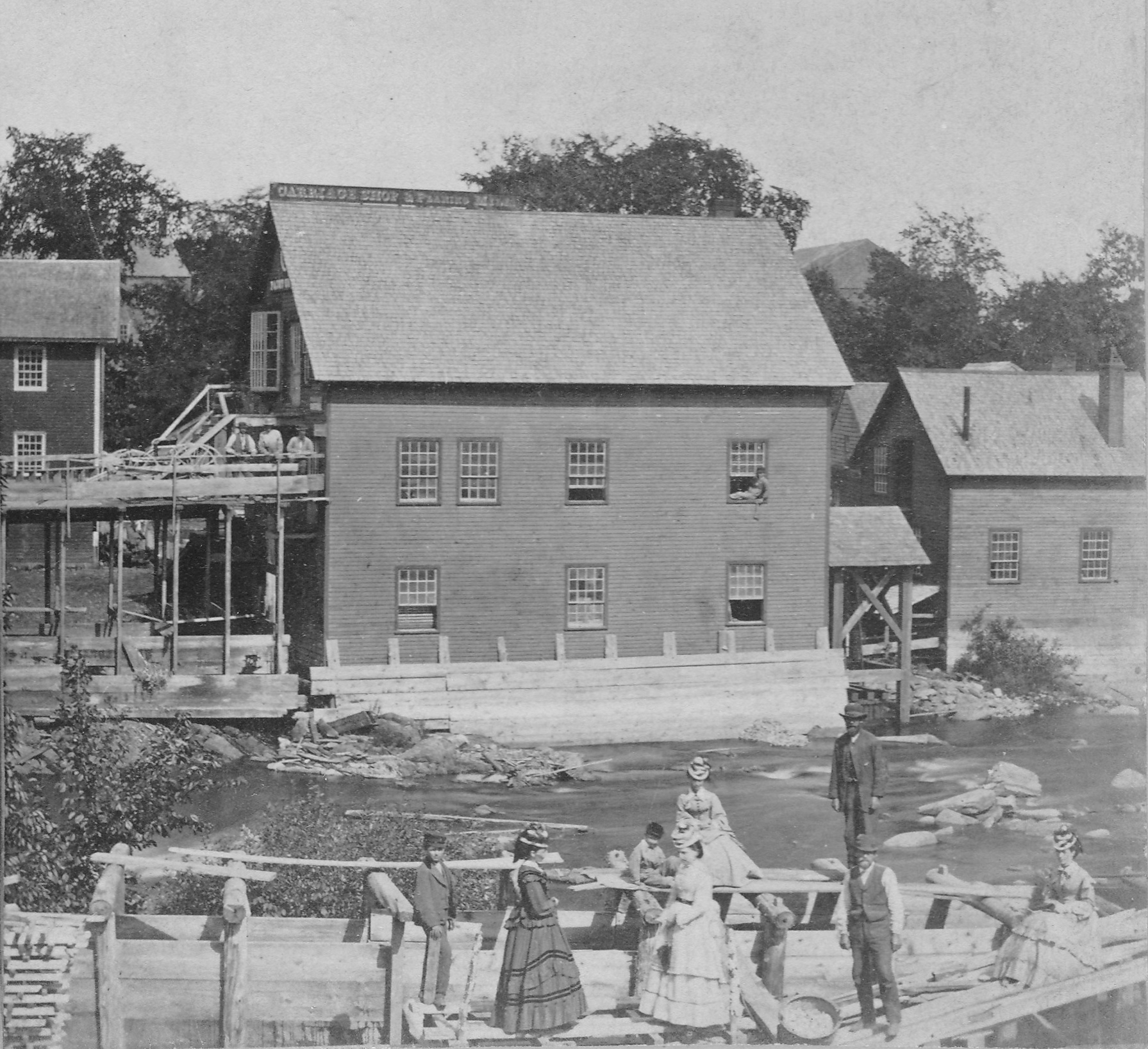
Carriage Manufacturing Shop & Sebasticook River Boat Landing – c1877
*
John Johnson Morrill’s Axe Manufacturing Company was located next to the Main Street Bridge at the former Blacksmith Shop. Between 1912 and 1923, the building was replaced with a new building later owned by Hartland Grain & Grocery Store. Morrill lived at his large homestead on Elm Street next to the Hartland House.
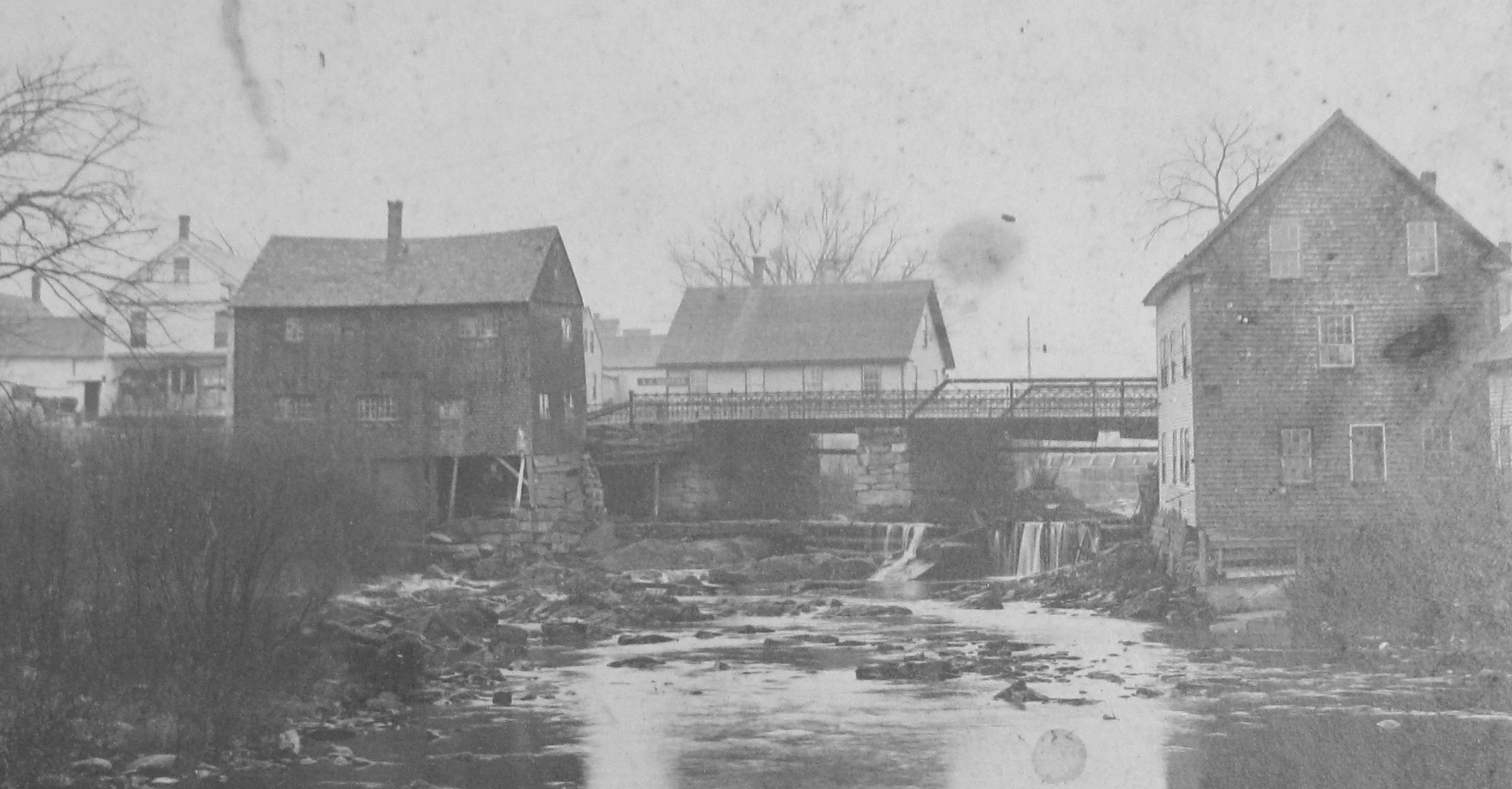
Former J. J. Morrill Axe Manufacturing Company (dark building to left of bridge) – 1911
*
By 1883, The Park House was completely renovated and expanded into a much larger building and Livery Stable.
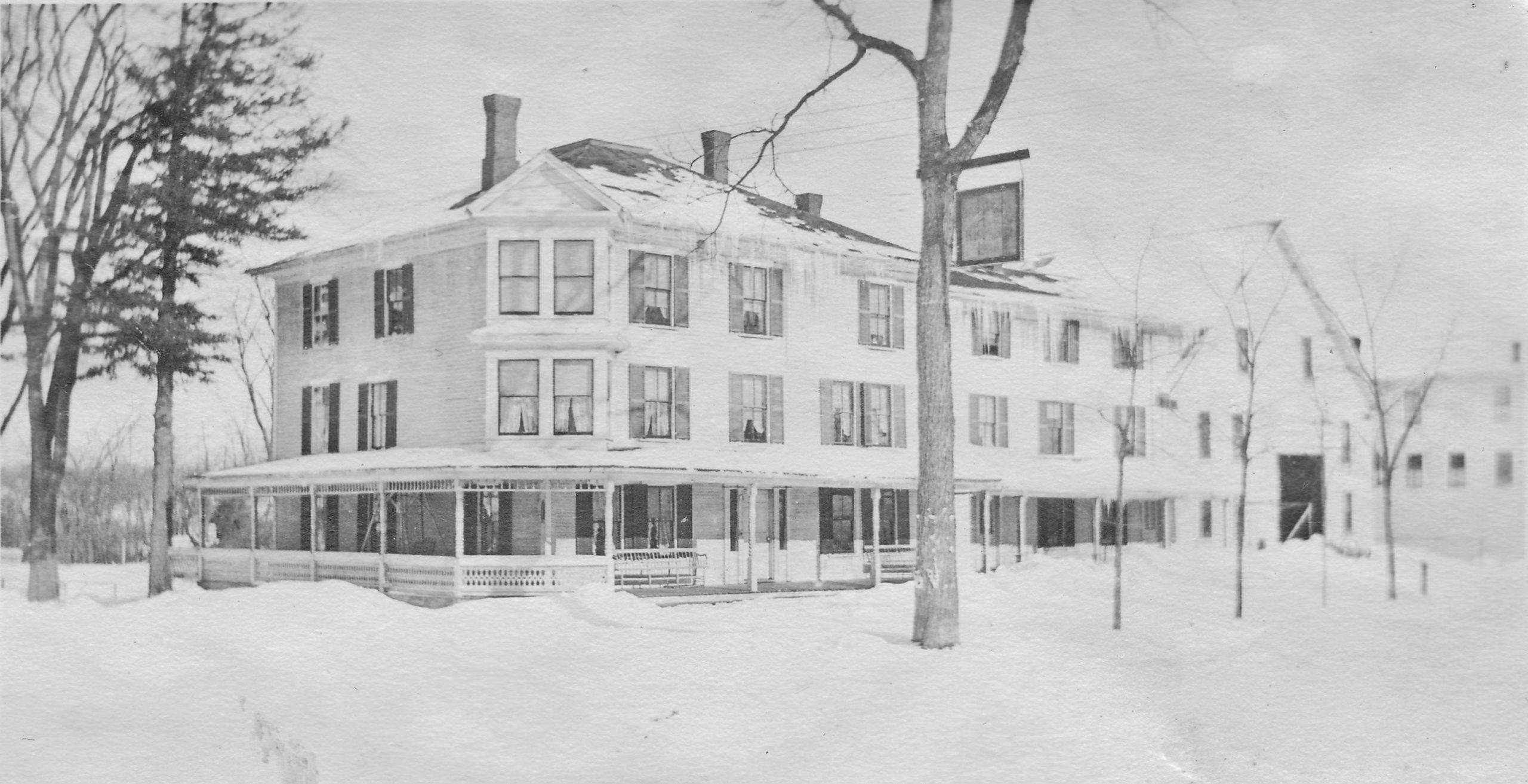
The Park House – c1900
*
Following James Moor’s death on December 2, 1873, his daughter Elmeda Moor (1835-1919) and her husband Nathan M. Webb (1838-1917) took over the family home on Main Street. Her mother Dorcas Moor lived with them until her death in 1892 at 93 years old. Nathan Webb, the son of John Chandler Webb & Clarissa Nay of St Albans, served as a policeman in Hartland. He and Elmeda married in 1861 and had 3 daughters; Eva Webb (1862-1932) who married Andrew Scott, Cora Webb (1869-1917) who married Frank Shaw (son of Greenville J. Shaw) & Nina Webb (1874-1918) who married Frank Buck (son of Andrew H. Buck).
Alexander S. Patterson & Evelyn Sanford purchased the former F. T. Swift home next to the Webb residence in the 1870s where they raised their daughter, Gertrude Mae Patterson (1877-1940). In 1910, Gertrude married Ralph C. Hamilton who would later operate the Hartland Drug Store.
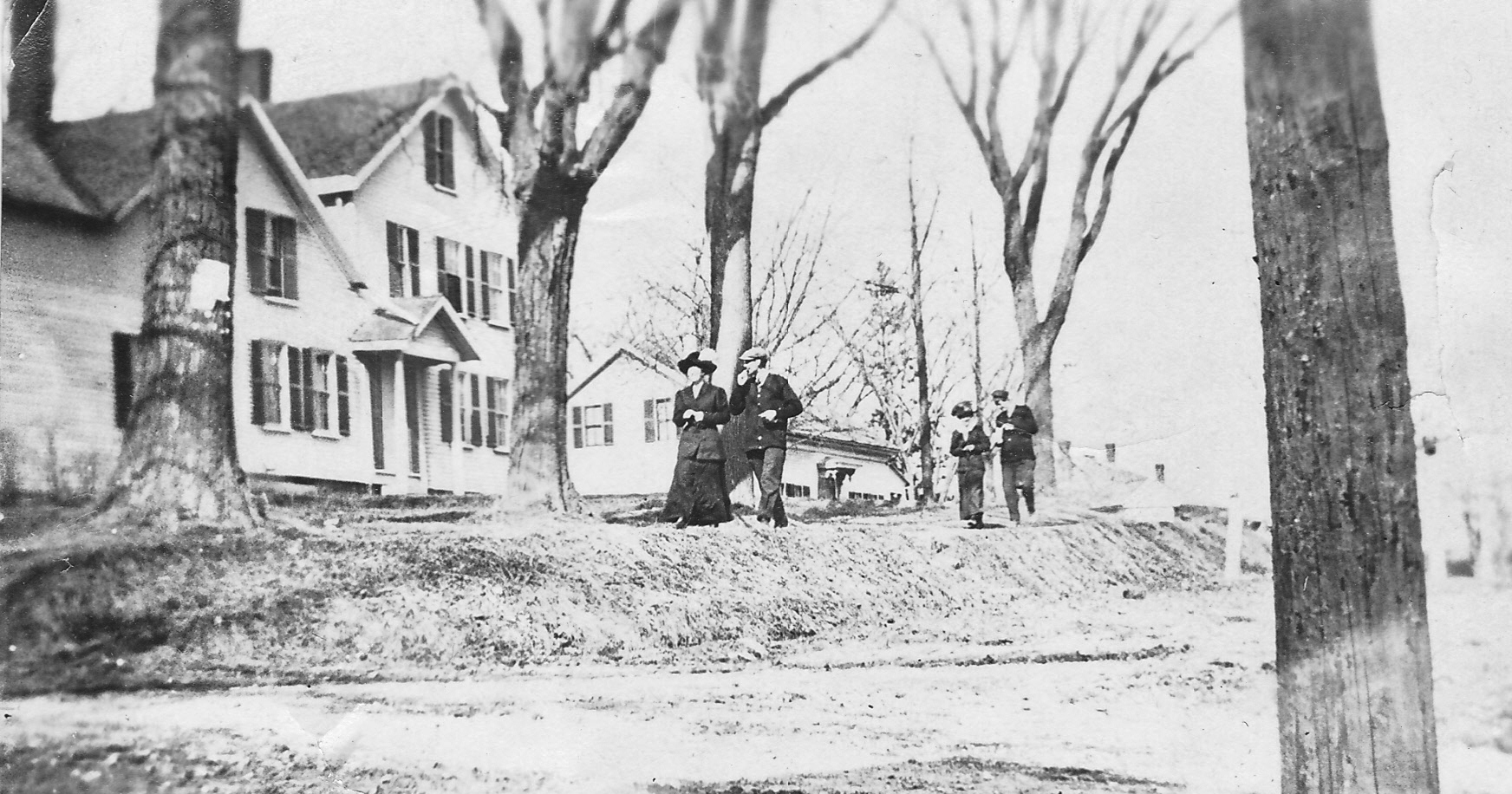
Nathan Webb Residence (left) & Alexander Patterson Residence
*
Following Dr. Peleg Haskell’s departure from Hartland in 1860, the next known occupants by 1883 were brothers Samuel Furbush (1849-1927) and George Furbush (b.1851). They were sons of Henry & Sarah Furbush of Skowhegan who moved to Hartland with their family between 1860 and the 1870. Henry and his sons were all carpenters and later moved out onto Outer Pleasant Street. Samuel married Lillian Hurd and had 3 children; Henry, Edith and Elsie Furbush.
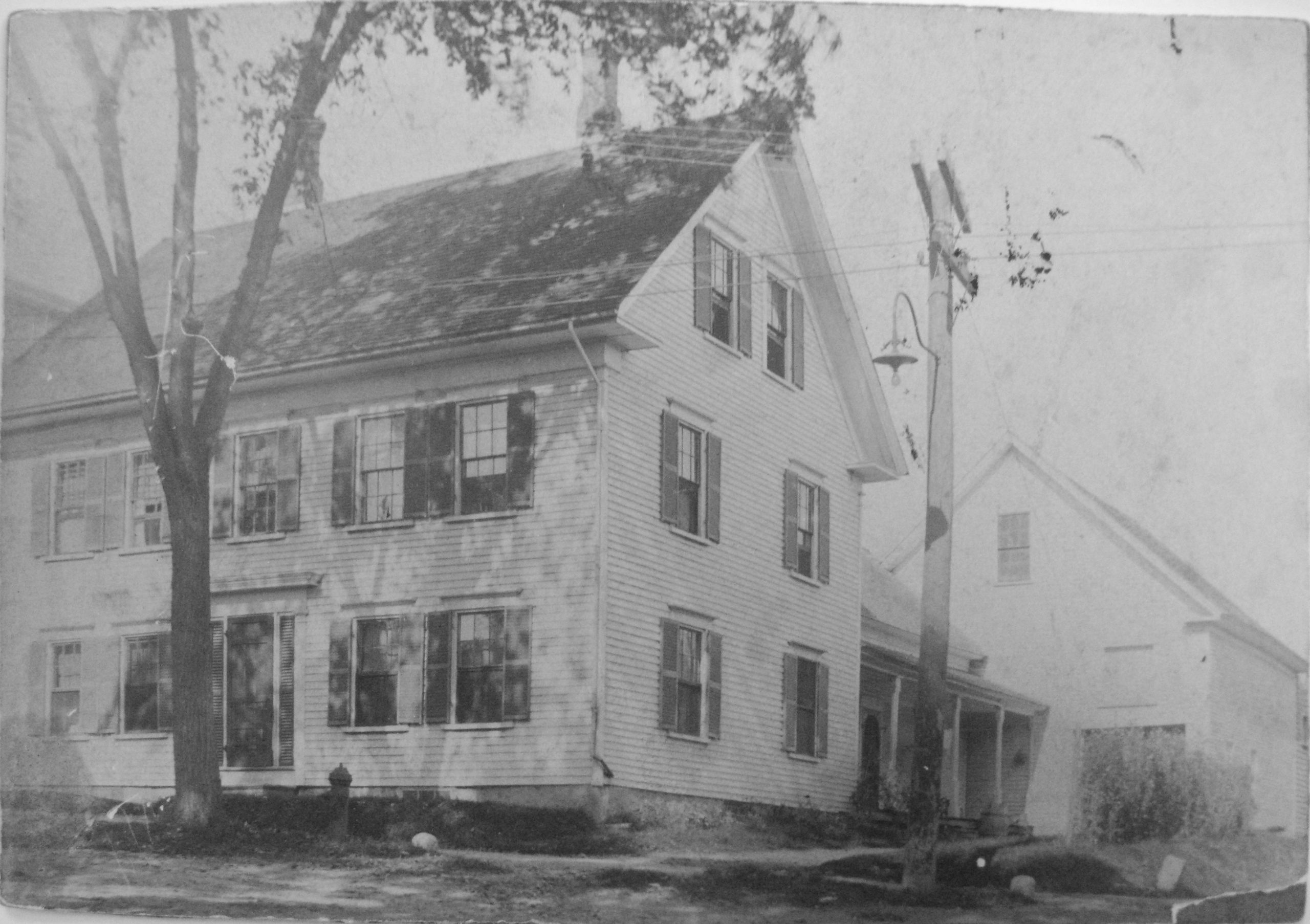
Former Furbush Brothers House as Wesley Harrington Residence – c1950
*
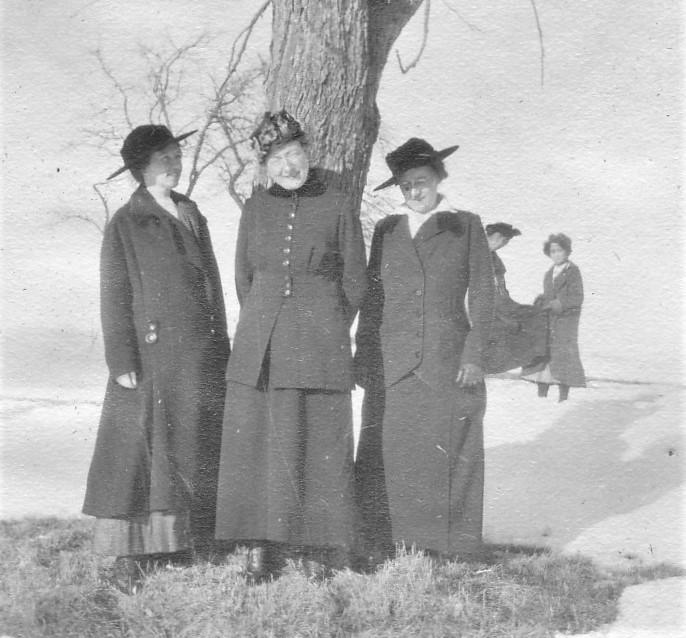
Edith & Elsie Furbush with Elizabeth Linn (center)
*
William Linn, Sr (1821-1902) came from Scotland to Hartland with his young children in 1864 at the invitation of his brother Archibald Linn. He lived on Outer Main Street as seen on the 1883 map below and worked at the Linn Woolen Mill as a Weaver Overseer. His daughter Annie Linn married George Merrill Lancey and one of his sons, William Linn, Jr later settled on Academy Street and also worked at the woolen mill.
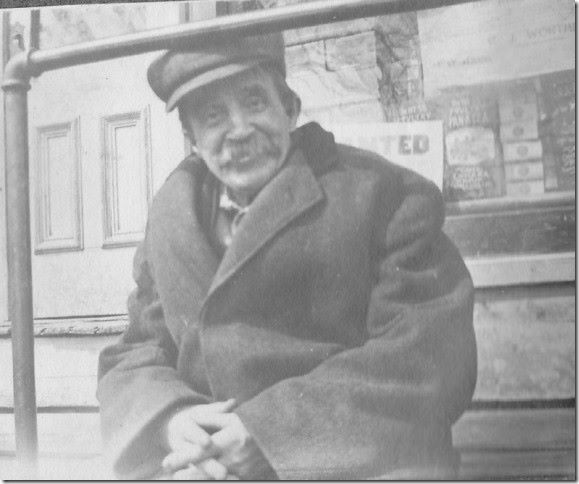
William Linn, Sr
(Photo courtesy of Joan Joy Tibbetts)
*
Businesses and residences noted on the 1883 map of Hartland Village.
Seen along the northern side of Main Street from left to right: Nathan M. Webb residence, Alexander S. Patterson residence, Mill Street, The Park House (operated by Richmond L. Williams), Furbush Brothers residence, Martin W. Jenkins General Store, T. S. Elliot Mens Clothing Store, Fairgrieve residence, Carding Mill, Main Street Bridge, Burgess & Waldron Blacksmith Shop (Island), Linn Mill Machine Shop (Island), Linn Grist Mill (Island), Raceway Bridge, Linn Woolen Mill, Linn Woolen Mill Storage Building and Alden Sampson’s Drug Store & Post Office.
Seen along the southern side: East Somerset Agricultural Society Fairgrounds, William Linn Sr residence, Pittsfield Avenue, John Page residence, Miss Caroline W. Prescott residence, John J. Morrill Axe Manufacturing & Blacksmith Shop, Main Street Bridge, Store (Island), Sawyer & Griffith Carriage Shop (Island), Dr. Harris Pushor’s building (Island), L. H. Webb Dry Goods Store (Island), John Page & Son Tannery (Island), Raceway Bridge and Albert W. Miller’s Drug Store.
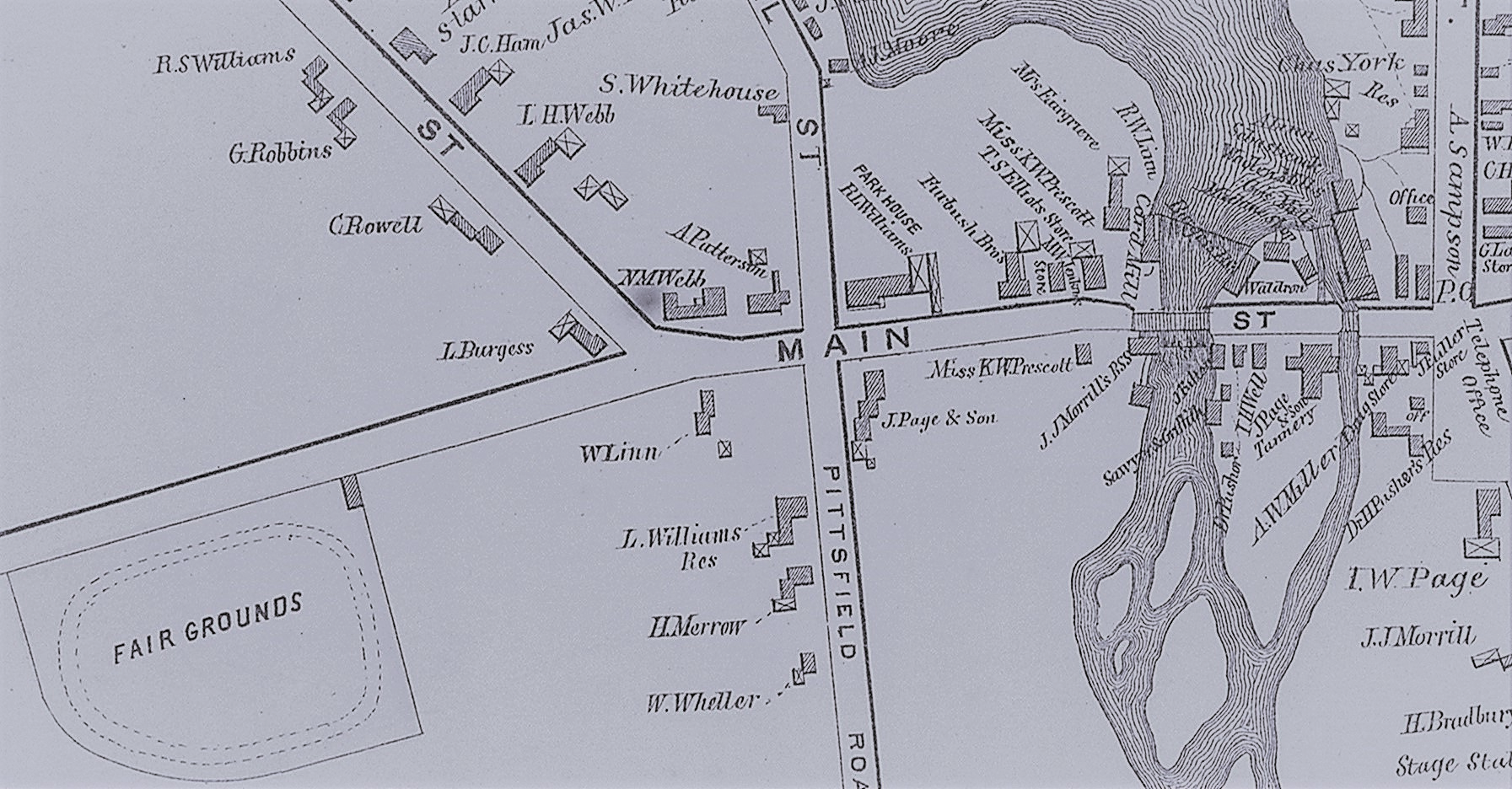
Main Street – 1883
*
Between the time of the 1860 map and photos from around 1877, a new store was built on Main Street next to the Furbush Brothers residence which would be operated for well over 115 years by various owners. In 1883, as seen above, it was noted as a store owned and operated by Martin W. Jenkins, originally from East Newport, who had moved to Hartland with his wife shortly after 1880. Jenkins drowned on July 4, 1885 after he jumped from his boat which had caught up at the Lower Dam and was swept down the river.
By 1895, Civil War Veteran Ensign Fletcher Hubbard (1843-1922) had come from Canaan to Hartland with his wife Augusta Burns and purchased the former M. W. Jenkins building. He operated his store there as “E. F. Hubbard Groceries, Notions & Hardware” until he sold it in 1920 just before he passed away at almost 80 years old. He purchased land behind the store where he built his first house creating a private dead end entryway from Main Street by 1900 soon referred to locally as Hubbard Avenue. This entryway would be connected by 1917 to the private entryway at the Main Street Bridge unofficially known as Fairgrieves Street forming the familiar horseshoe shaped avenue. They remained as separate unofficial streets until they were combined and posthumously named for Hubbard when it officially became Hubbard Avenue in 1958.
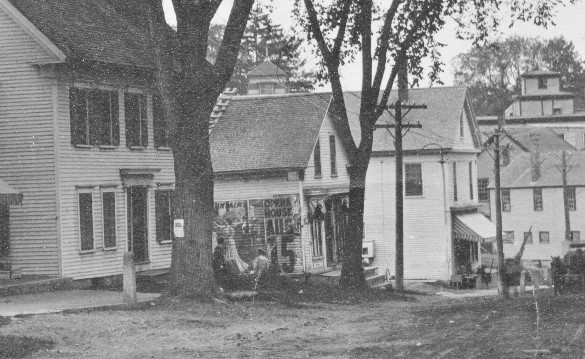
Former M. W. Jenkins Store as E. F. Hubbard Groceries, Notions & Hardware (center) – c1910
*
After decades of discussion, an 8 mile railroad extension from Pittsfield finally opened in Hartland in 1886 connecting to the Maine Central Railroad System. The new Sebasticook & Moosehead Railroad located a depot on Outer Main Street next to the fairgrounds which also served as home for the local Telegraph Office.
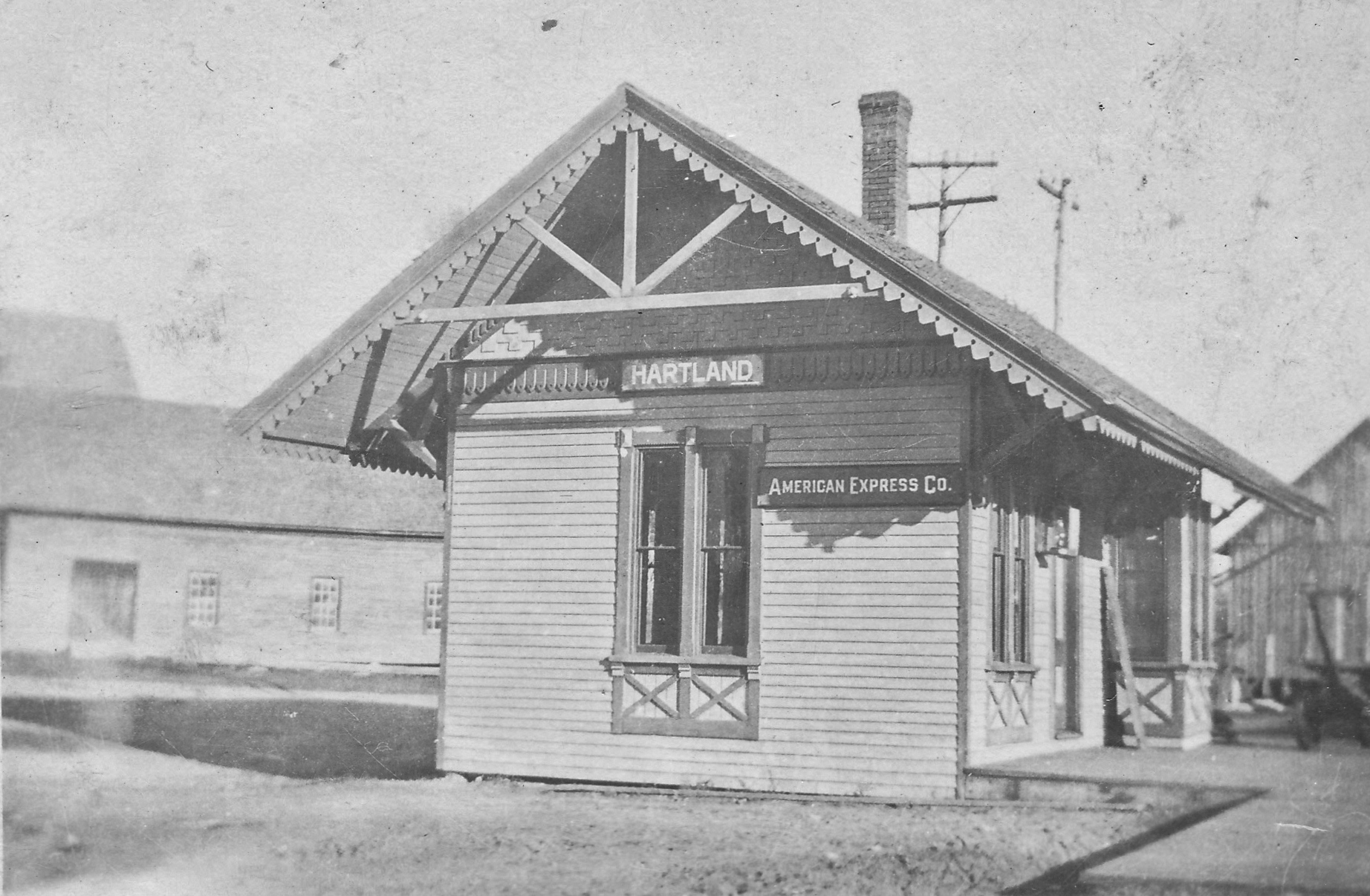
Sebasticook & Moosehead Railroad Depot
*
By 1886, Robert E. Latty purchased the former Linn Woolen Mill Storage Building on Main Street and set up business with his son Edward E. Latty operating as R. E. Latty & Son Hardware, Bar Iron & Steel. Around the same time, Albert W. Miller moved his drug store business across the street into the Hartland Drug Store block vacated by Alden Sampson and his newly wedded wife Nellie G. Lancey who had left town in 1885 for South Dakota.
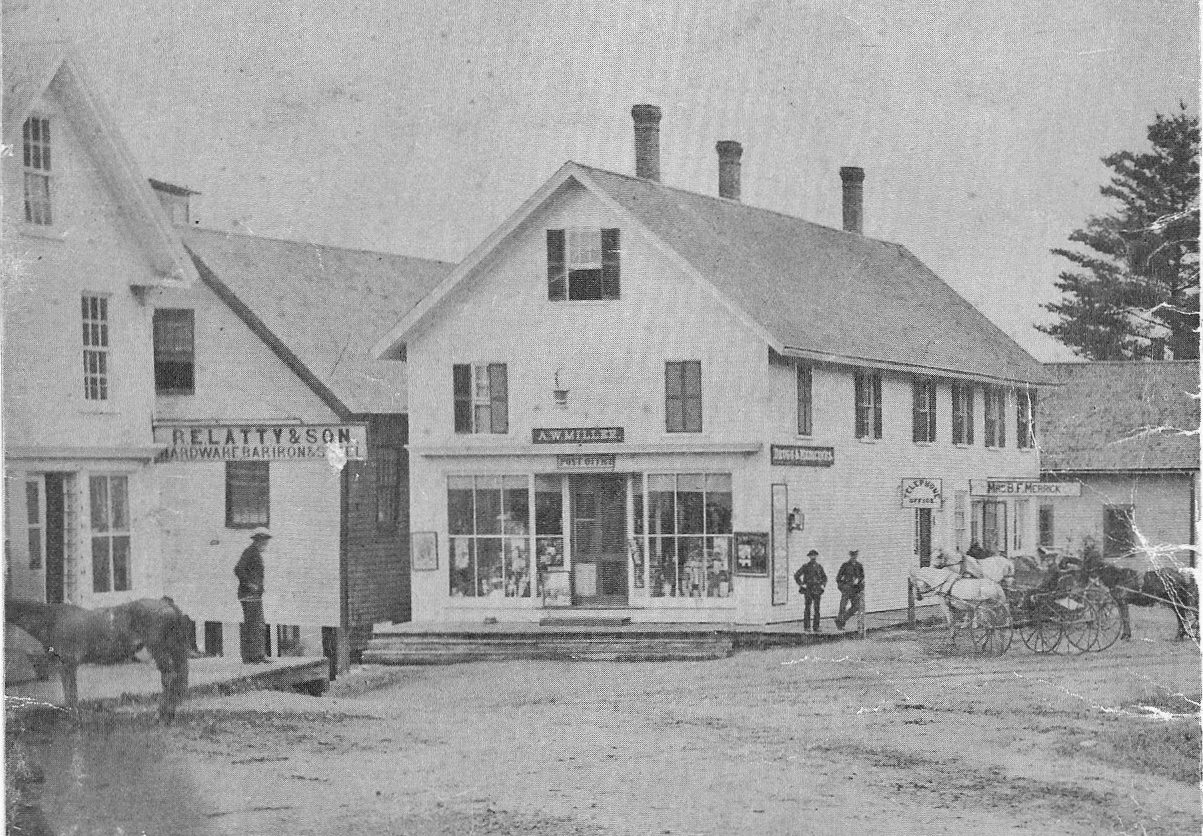
R. E. Latty & Son Hardware, Bar Iron & Steel Store and A. W. Miller Drug Store – c1886
*
As noted in a November 4, 1886 article from the Pittsfield Advertiser, “In West Hartland, the old (James, Sr) Fuller house has been purchased by Joseph Emery of Palmyra. It has been taken down and will be moved to the village where it will be rebuilt for a store near the depot.”
The store was located on Outer Main Street (also referred to as Park Avenue in the day) next to the Sebasticook & Moosehead Railroad Depot. It was later purchased by Lewis Barker Wheeler who operated a general store there by 1914.
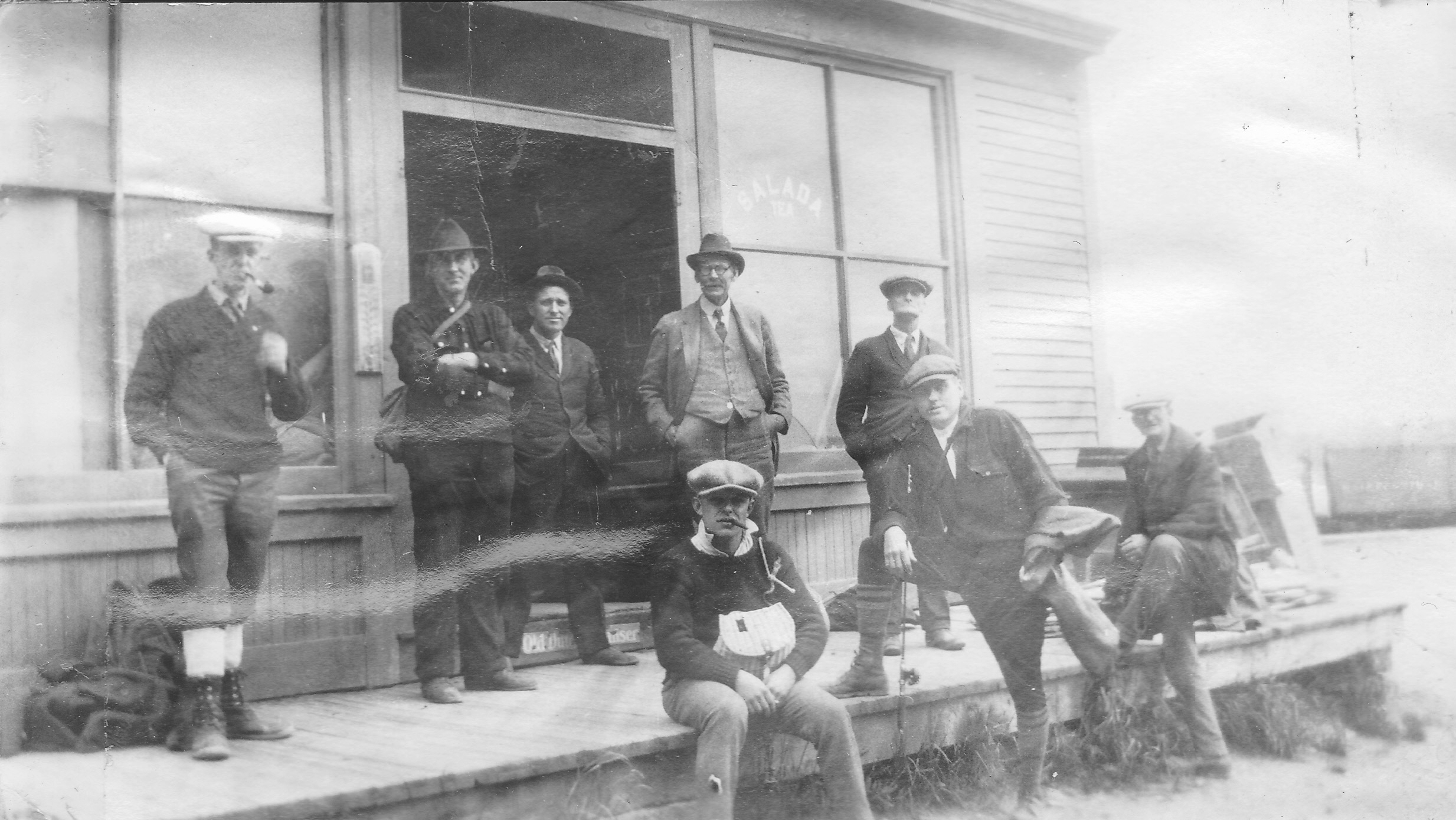
Gentlemen of The Wild Goose Club pose for a photo at L. B. Wheeler’s General Store
*
The Great Flood of 1887 caused major damage to numerous Hartland residences and businesses near the Upper & Lower Dam including the Linn Woolen Mill and the John Page & Son Tannery as reported by the Pittsfield Advertiser. “The dam between Linn’s Mill and the Grist Mill gave way Sunday morning and the vents through the (raceway) bridge being choked, the water broke across the street in front of the Grist Mill and the lower end of the dye house gave way on Tuesday. The (Andrew) Buck Store (on the island) is very insecure, knocked out some of the area supports. Water went into Morrison’s (Carding) Mill, Knowle’s Shop and White’s Blacksmith Shop.
*
Archibald Linn has been suggesting an expansion to his original woolen mill since 1879. Just a few weeks after the Great Flood of 1887, and the resulting heavy damage to John Page & Son’s Tannery, Linn purchased the building and lot and soon approached the town requesting a 10 year tax abatement on a new building he wanted to build there. Following Archibald’s death in 1889, operations of the Linn Woolen Mill were taken over by his 3 surviving children; Thomas Archibald Linn, Robert Wilson Linn, Sr and Mary Isabelle (Linn) Fuller along with her husband, Henry Clay Fuller. Henry Fuller & Thomas Linn become the chief officers of the renamed Linn Manufacturing Company. In 1890, a vote at a special Town Meeting granted the abatement to the Linn Manufacturing Company who in turn built a new building on Main Street on the former tannery location in 1890. It would take until 1896 before the new building was completely finished and began full production.
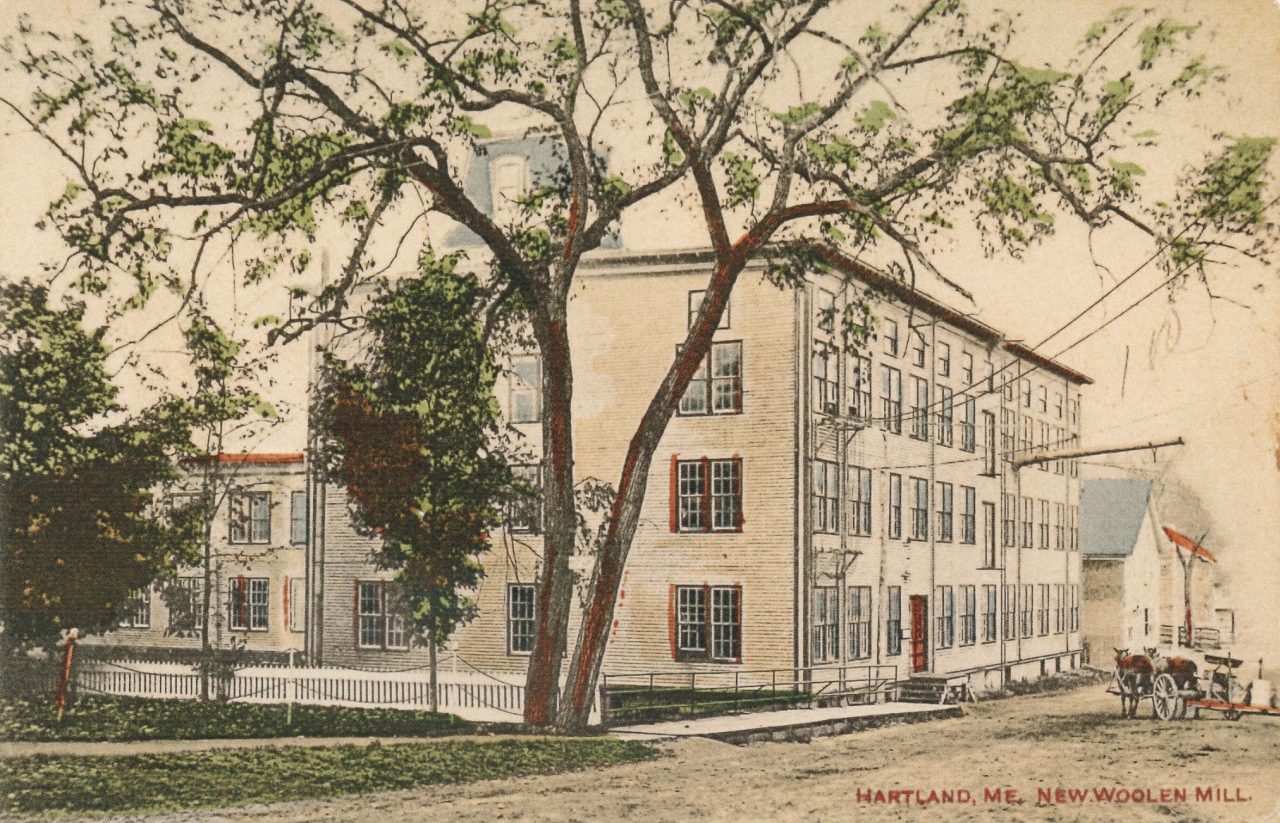
Linn Woolen Mill Lower Addition on Main Street – c1902
*
As reported in a November 12, 1896 article, Edward E. Latty was finishing a new building on the empty lot between the former Furbush house and The Park House on Main Street. The article noted, “The fine new building is 70 feet x 28 feet with 3 floors and a very nice basement under the entire building. The first floor is to be used as a hardware store. The second floor will be a dwelling for himself and his family which has 9 rooms and will be very pleasant and convenient. The third floor will not be used at this time. This building, when completed, will be the best of the kind in the town.”
Edward E. Latty (1866-1939) is the only child of Robert E. Latty (1819-1913) & Julia Starbird (1830-1911). Edward married Ruth Bigelow (1869-1925) of St Albans in 1894 and they had 2 daughters, Marion Latty (1895-1919) and Mildred Latty (1901-1993).
As noted in the 1896 article, the first floor of the new Latty Block had been intended as a storefront to relocate the family hardware business from the former Linn Woolen Mill Storage building where they had been operating as R. E. Latty & Son Hardware, Bar Iron & Steel for several years. By this time, Robert Latty, now 66yrs old, had retired and he and Julia were still living at their home on Outer Pleasant Street. Edward took over the family business operating it as the E. E. Hardware Company at the new location. However, Edward’s ownership of the business lasted only about a year as he took a job at the E. Corey & Company Hardware Store in Portland in October of 1897 before returning to Hartland by 1900 where he remained living at his building until his death.
By the time Edward had left for Portland in 1897, he rented the first floor of the new building to (future U.S. Representative) Clyde H. Smith who briefly operated a hardware store at the location before selling the business to Archibald D. Linn but 2 years later purchased the business back.

November 8, 1900
*
After Clyde Smith purchased the hardware business back, he was joined in business by Albert C. Bowman of Rhode Island who had recently moved to Hartland. In 1901, Clyde sold out his share of the business to Albert to devote his time to other business ventures including his new clothing store on Commercial Street while Albert continued operating at the Latty Block as the A. C. Bowman Hardware Company as seen on the sign below until 1907.
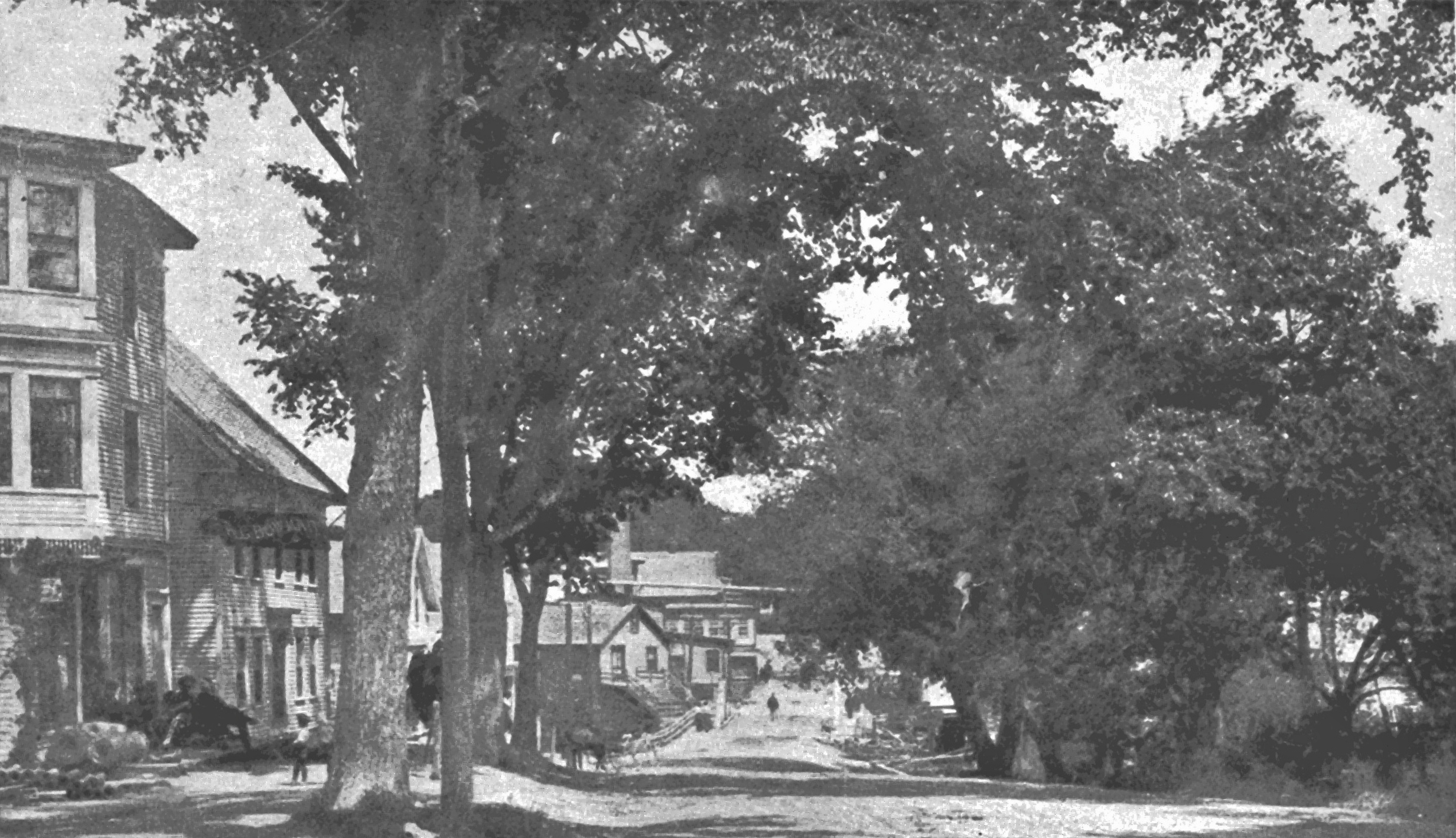
A. C. Bowman Hardware operating at Latty Block (1st Building) – c1901
*
Following his move to the future Hartland Drug Store Block across the street, Albert W. Miller leased his Main Street store to several merchants including Lucian H. Goodwin who operated a clothing store there for a couple of years until he built a new store on Commercial Street in December of 1896.
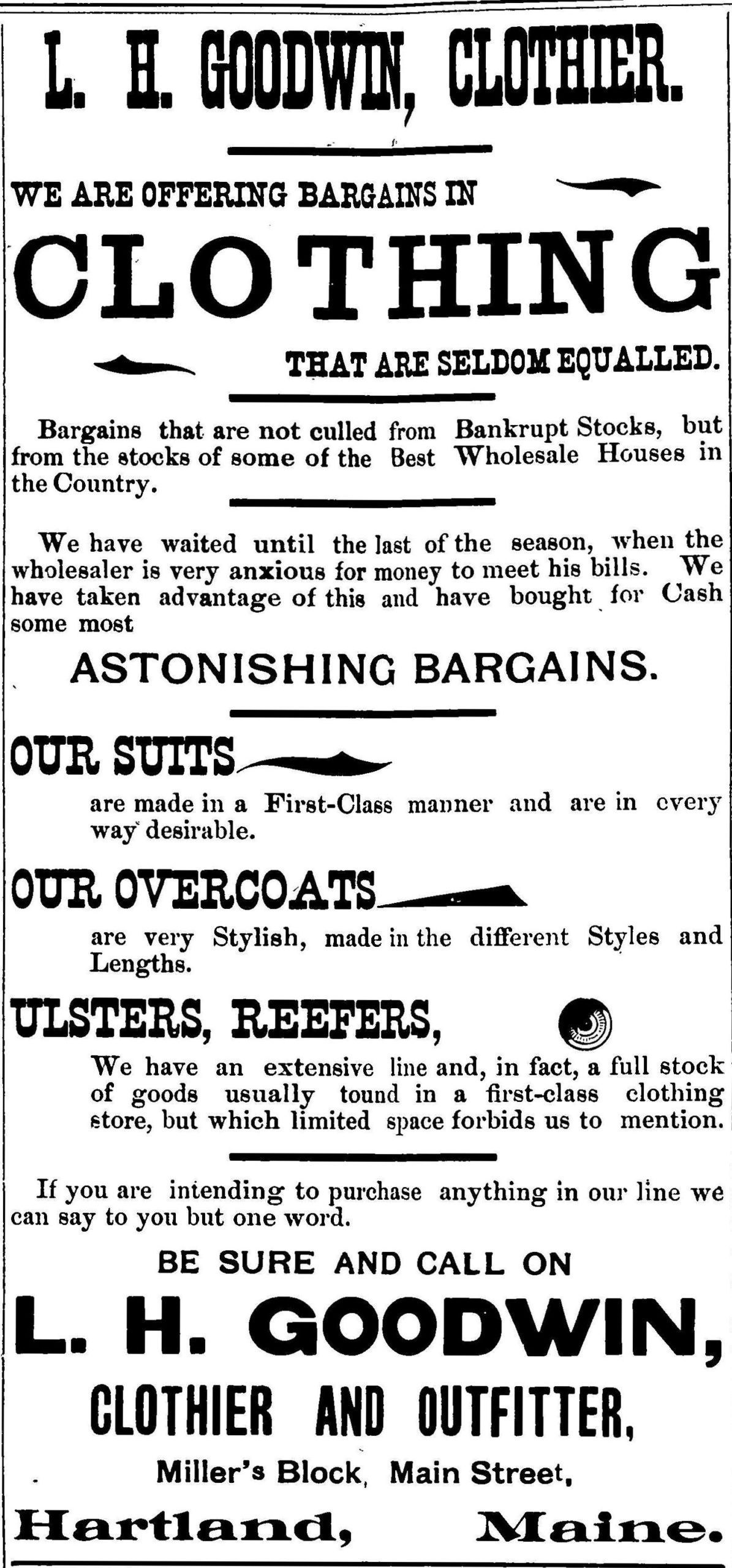
L. H. Goodwin Ad – 1894
Following Goodwin’s departure, Elwin O. Wentworth then located his jewelry store business in the building around 1898 after moving his family from New Hampshire to Hartland.
In November of 1902, Albert W. Miller returned to his original store building on Main Street. E. O. Wentworth moved his business into another of Miller’s buildings at Warren Square where Dr. Lynne H. Blanchard had maintained an office for his medical practice before taking over Miller’s former drug store location operating as the Hartland Drug Store.
A year later, as noted in a local newspaper article, Miller put in a concrete sidewalk extending from the corner of Warren Square past his store to the raceway bridge. Miller remained in business at this location until his death in 1916.
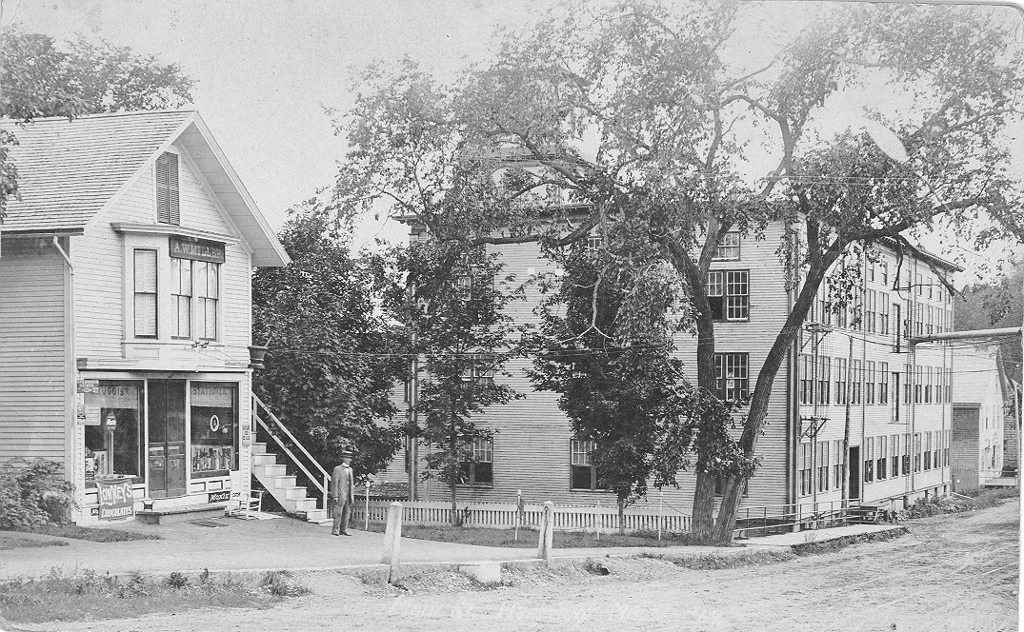
A. W. Miller Drug Store and new Linn Woolen Mill
*
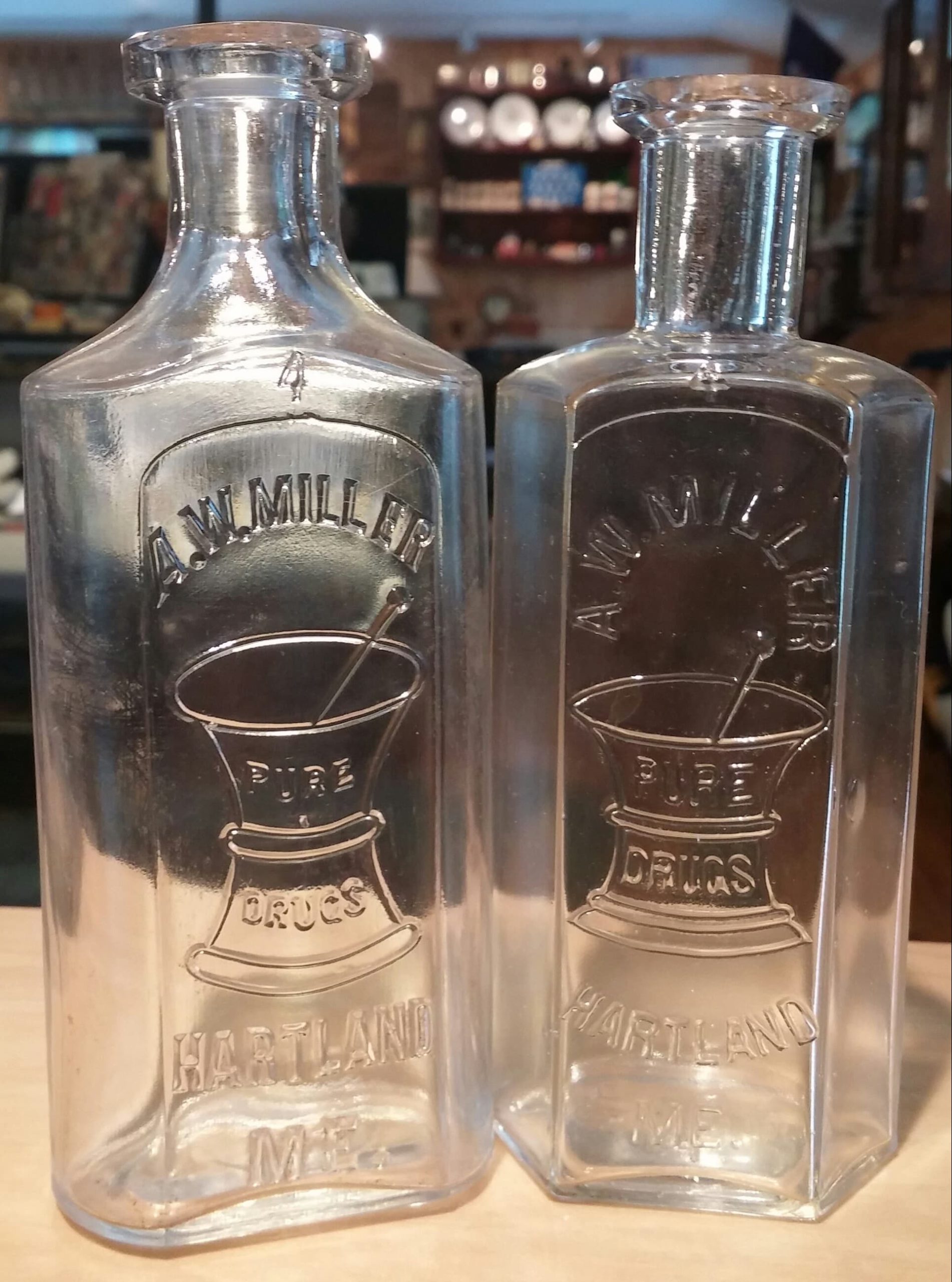
A. W. Miller Drug Store Medicine Bottles
(Photo courtesy of Sam Fuller)
*
Following Albert Miller’s return to his original Main Street location in 1902, Dr. Lynne Harry Blanchard began operating the Hartland Drug Store at the corner of Main Street & Commercial Street. Dr. Blanchard had moved from Springfield, Maine and begun his medical practice in Hartland in the early 1890s. In 1901, he had married Carrie Linn, daughter of Thomas Linn & Clarabelle Osborne, and the newlyweds moved into the former Horace Stewart house on Blake Street.
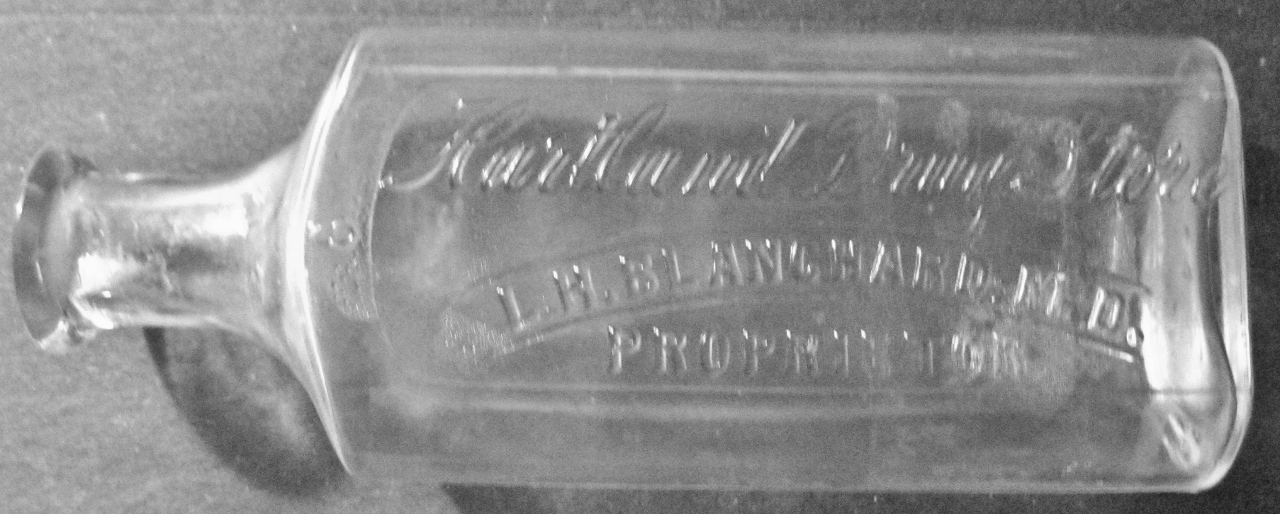
Hartland Drug Store Medicine Bottle – L. H. Blanchard, M. D., Proprietor – c1905
*
Next to Albert W. Miller’s Drug Store was a magnificently landscaped terrace which Miller began building in 1890. Woodbine Terrace, so called, eventually bordered Miller’s property across from the Sebasticook River Island extending through the back side of Warren Square with its own private boat landing.

Woodbine Terrace Construction Article – 1890
*
Although most of the original terrace was gone by the late 1920s, many of the large granite boulders Miller had installed remained along the left side of the future Tannery Beam House driveway with several still seen in place today in the rear.
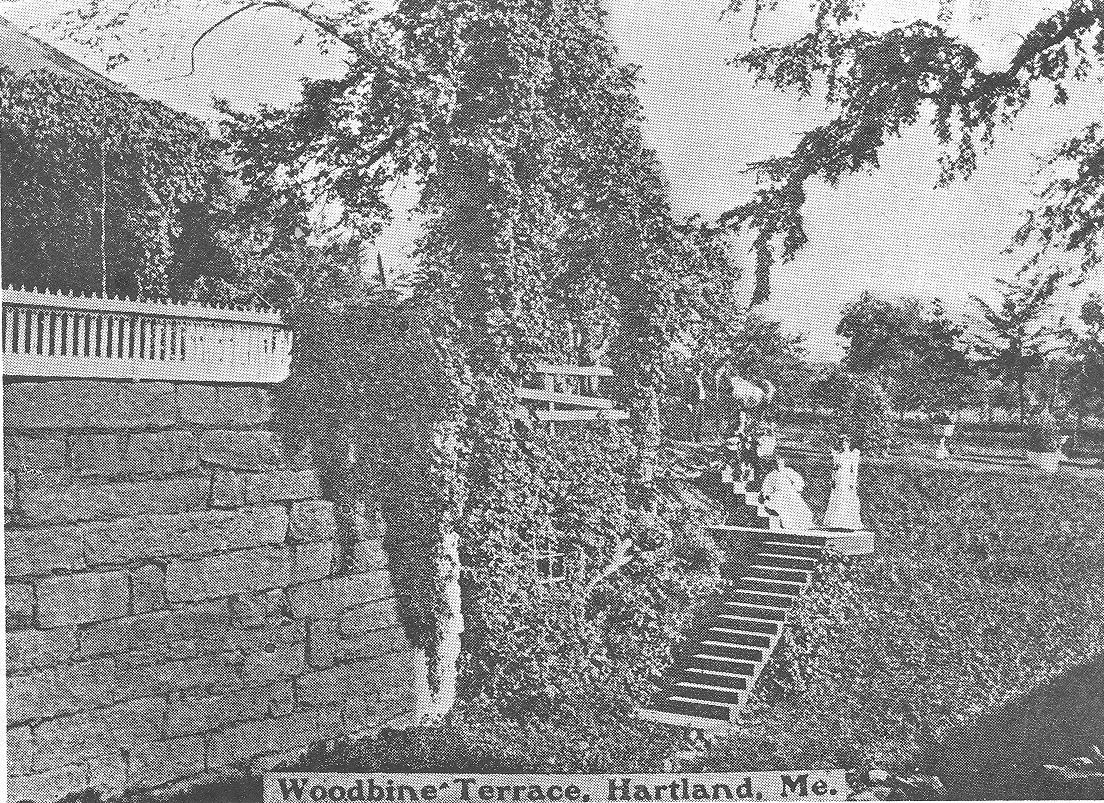
Woodbine Terrace – c1900
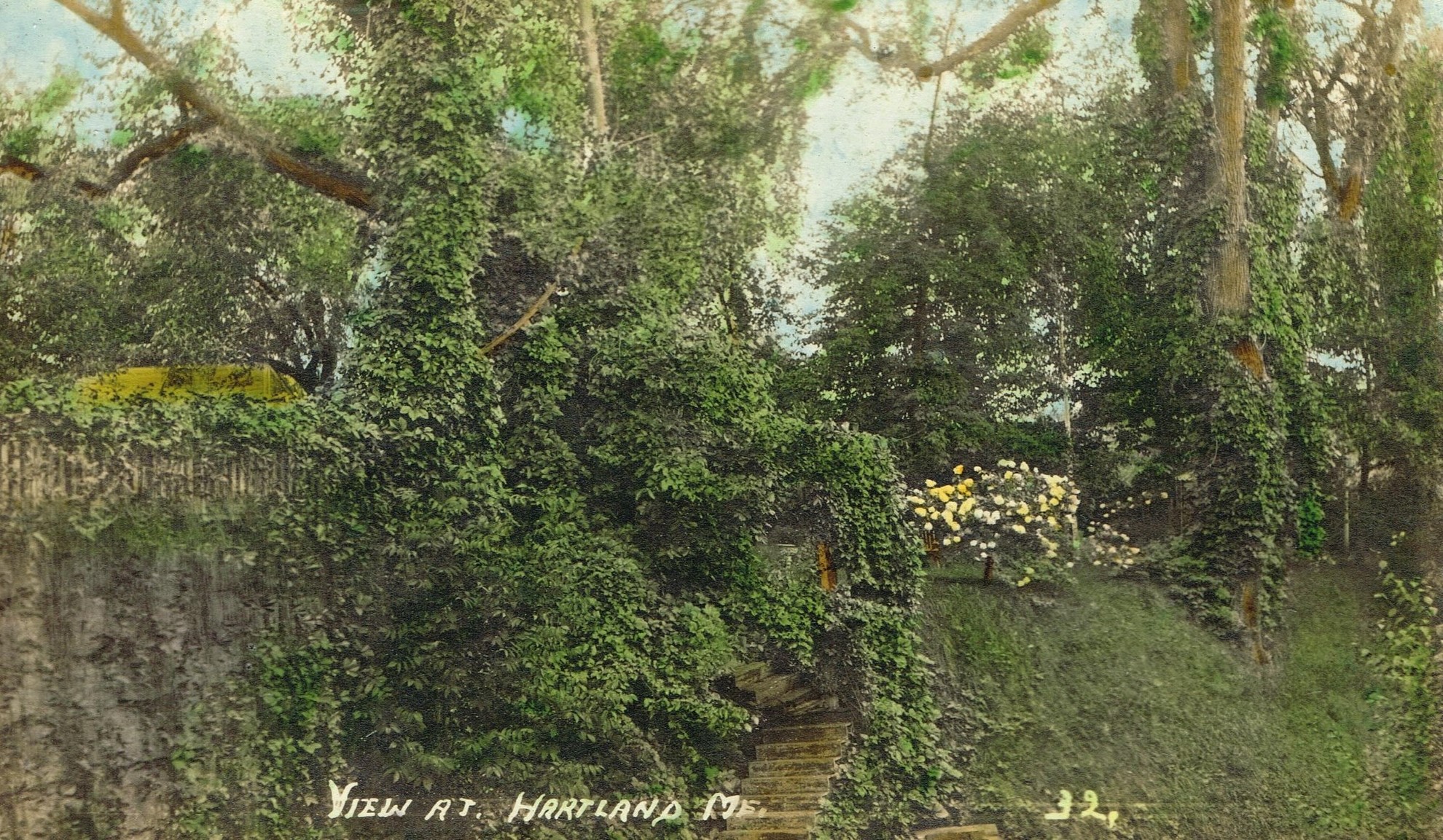
Woodbine Terrace – c1905
*
One of the buildings on the island was originally noted as a blacksmith shop by 1860 was converted into a store by 1883. The building and the carriage house would be the only remaining buildings left on the island following the construction of the new Linn Woolen Mill in 1890. Soon after, George William Furber purchased the building and opened G. W. Furber Jewelry Store. Furber had moved from Corinna and married Laura Littlefield in 1894 but his business venture was short lived when he unexpectedly passed away in 1899 at 39 years old leaving his widow to raise their 2 daughters Iva & Evelyn Furber at their new Moore Street home.
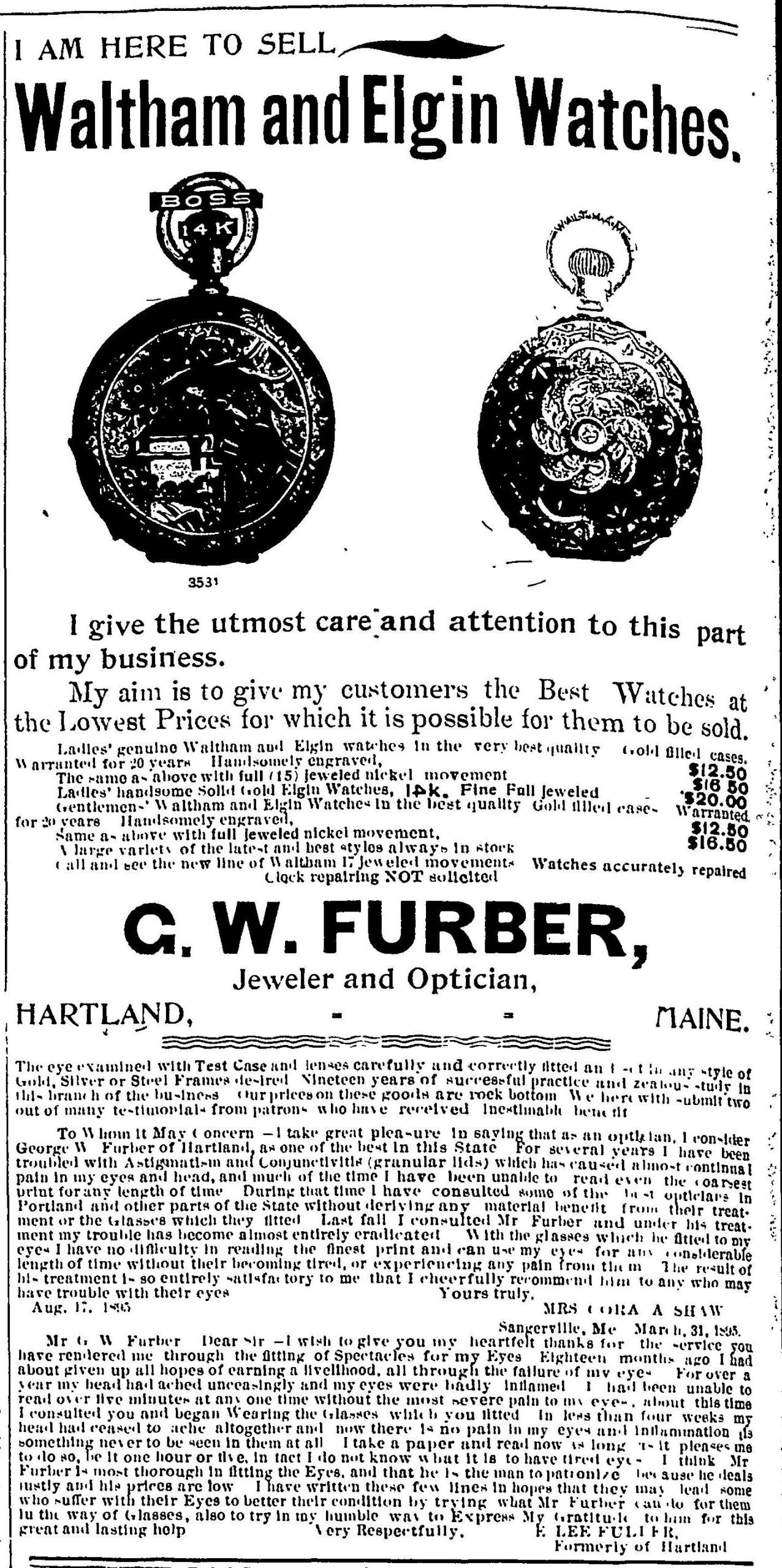
G. W. Furber Ad – 1895
The building would continue to be used as a storefront until about 1916 when it was moved to make way for a new boiler room for the woolen mill.
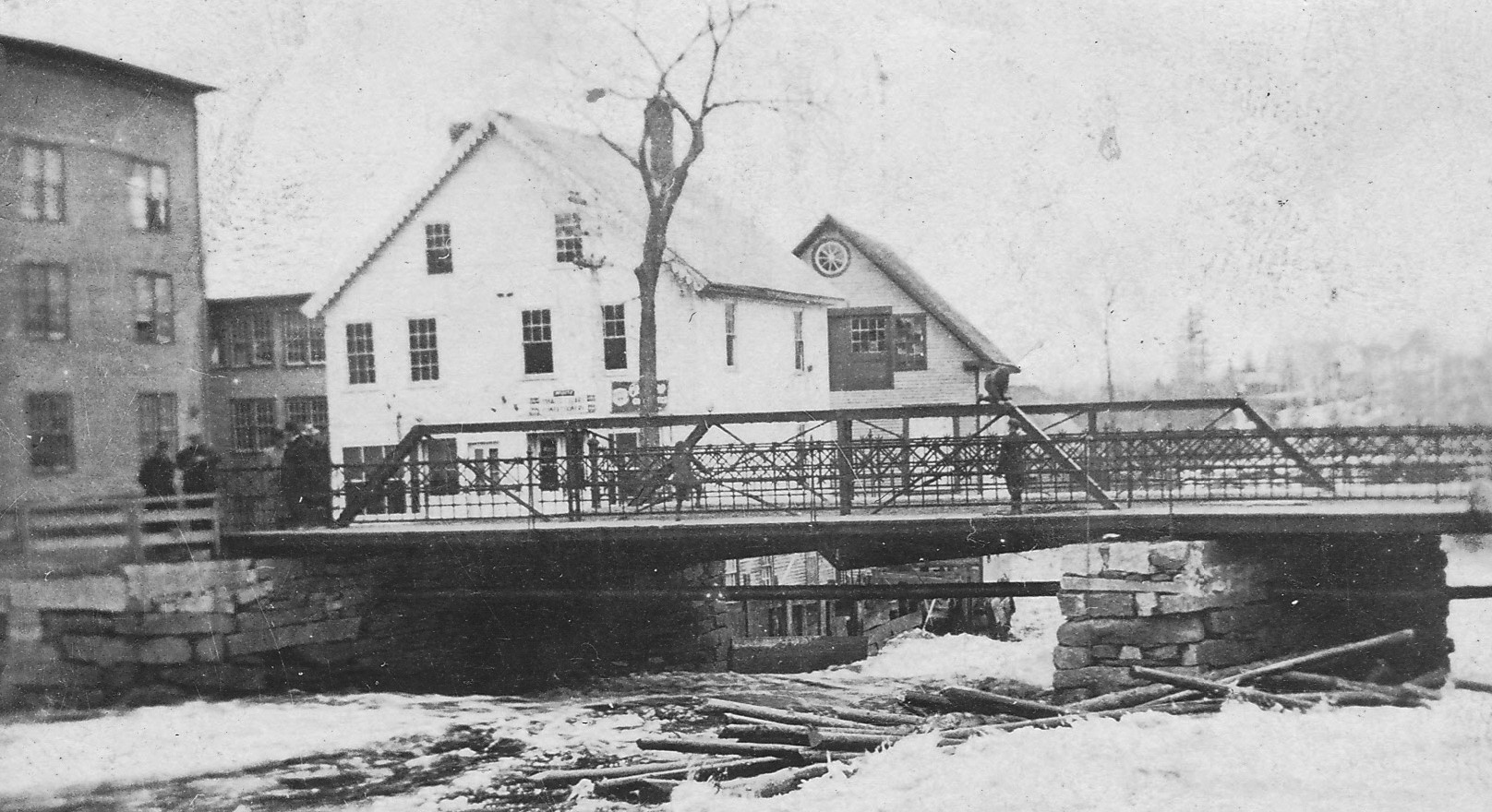
Former G. W. Furber Jewelry Store & Carriage House – 1912
*
In the 1890s, Carl Fuller Randlett (1868-1951) moved from his parents’ West Pittsfield homestead to the Village where he and his wife Maude Annis purchased the former Thomas S. Elliott Clothing Store on Main Street by 1897. They first ran a clothing and hardware store before concentrating on dry goods, groceries and grain and eventually began operating as the Hartland Grain & Grocery Store. Carl’s younger brother Harry Randlett was in business with him for a few years before opening his own hardware store in 1914 at the Latty Block. Their mother Ellen (Fuller) Randlett is a daughter of Thomas Fuller & Laura Butterfield and married Harrison Randlett in 1867. Ellen is a paternal granddaughter of original West Hartland settler James Fuller, Sr.
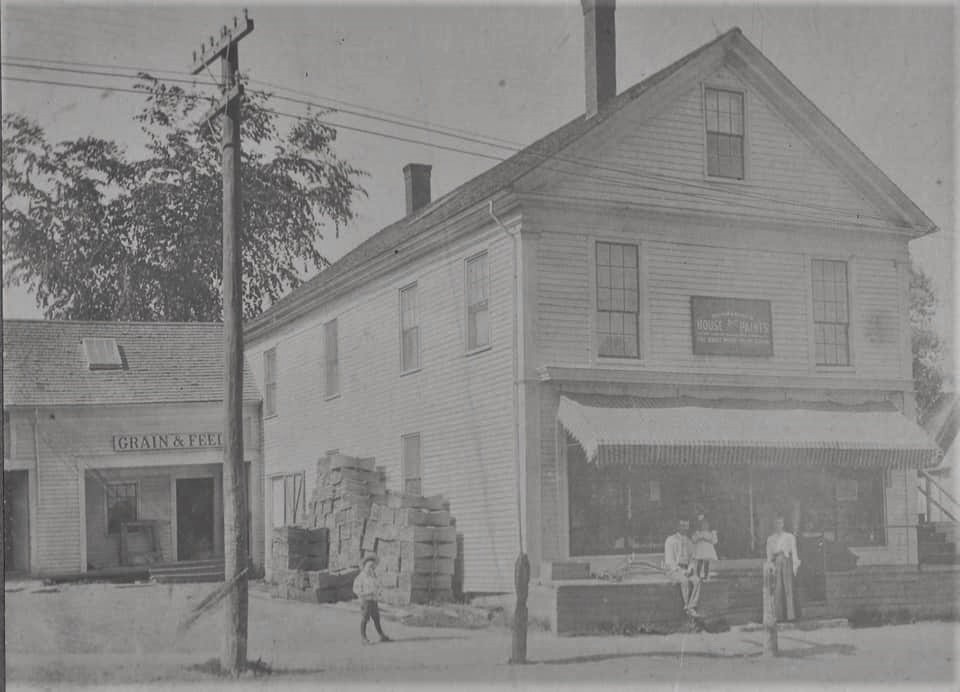
Hartland Grain & Grocery – c1905
(Photo courtesy of Estelle Randlett Tapley)
Noted in the photo are Ralph Merrow (young boy), Carl Randlett (sitting) with his daughter Beatrice Randlett and Jenny Hardy.
*
In 1905, Carl built a large grain storage building which sat on the fairgrounds side of the railroad tracks where he had workers transport bags of grain to his Main Street store before moving his bulk grain storage into the building across from his store in the late 1930s. The old grain storage building was later converted into the new Hartland Depot & Railway Express Warehouse in the 1940s.
Along with running his store, Carl was a very active member in town affairs serving on numerous committees and a member of many civic organizations as well as serving as Town Clerk for a total of 35 years; 27 of those being consecutive. He and Maude lived on Pittsfield Avenue where they raised their 3 children, Beatrice, Thelma & Linwood.
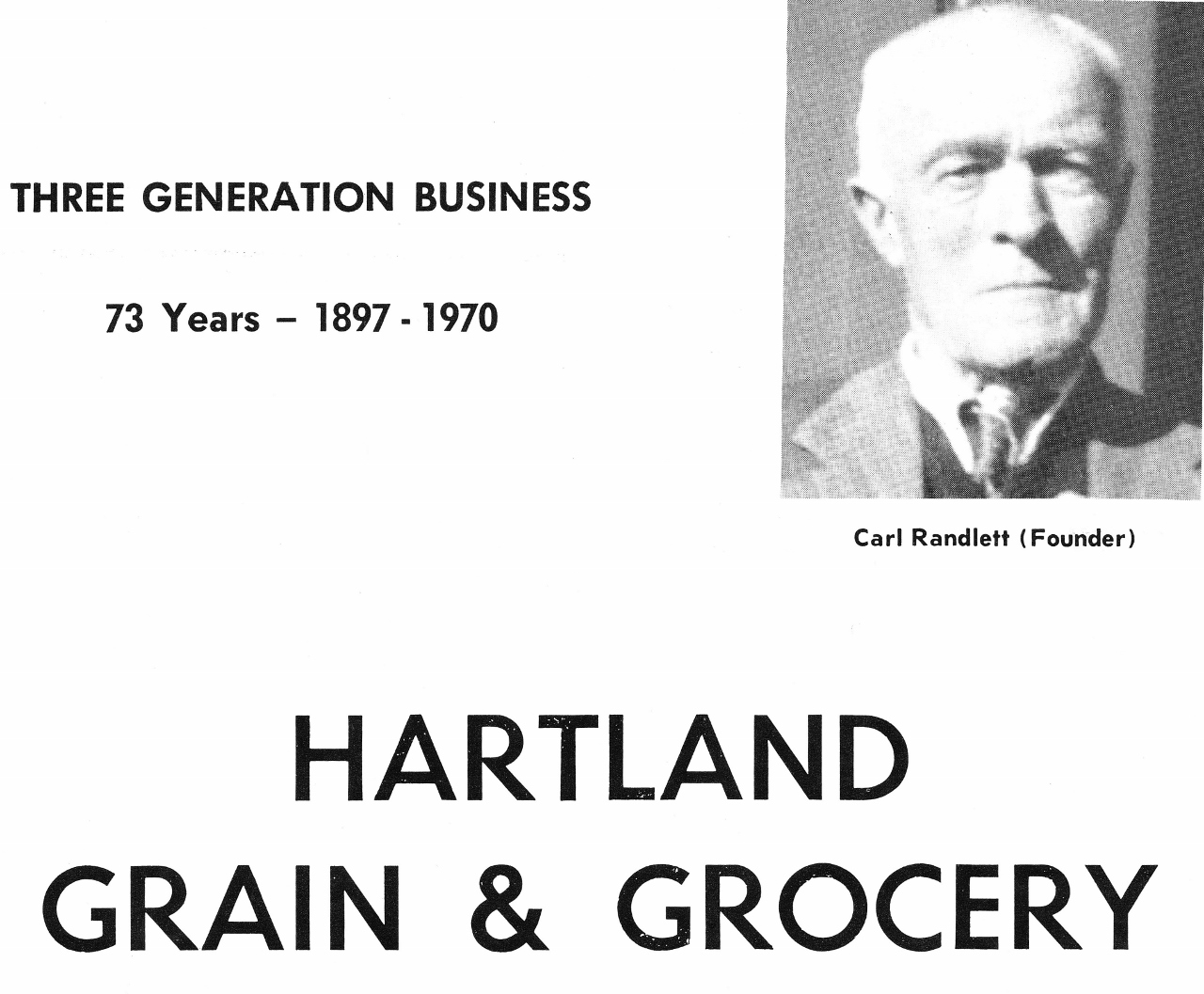
Hartland Grain & Grocery Ad – 1970
*
In the late 1890s, electricity arrived in Hartland with many of the first power lines located on Main Street before eventually spreading throughout the Village. This new power source would forever change how businesses and households functioned.
*
In 1898, John Page passed away and his son John S. Page took over ownership of the Page Homestead on Main Street where he had been living with his wife and son. John S. Page had been operating a woodworking mill on Pittsfield Avenue at the time of his father’s death.

Panoramic view of Main Street with The Park House & John S. Page Homestead – c1900
*
Looking across the Lower Dam to Commercial Street & Water Street from the Main Street Bridge.
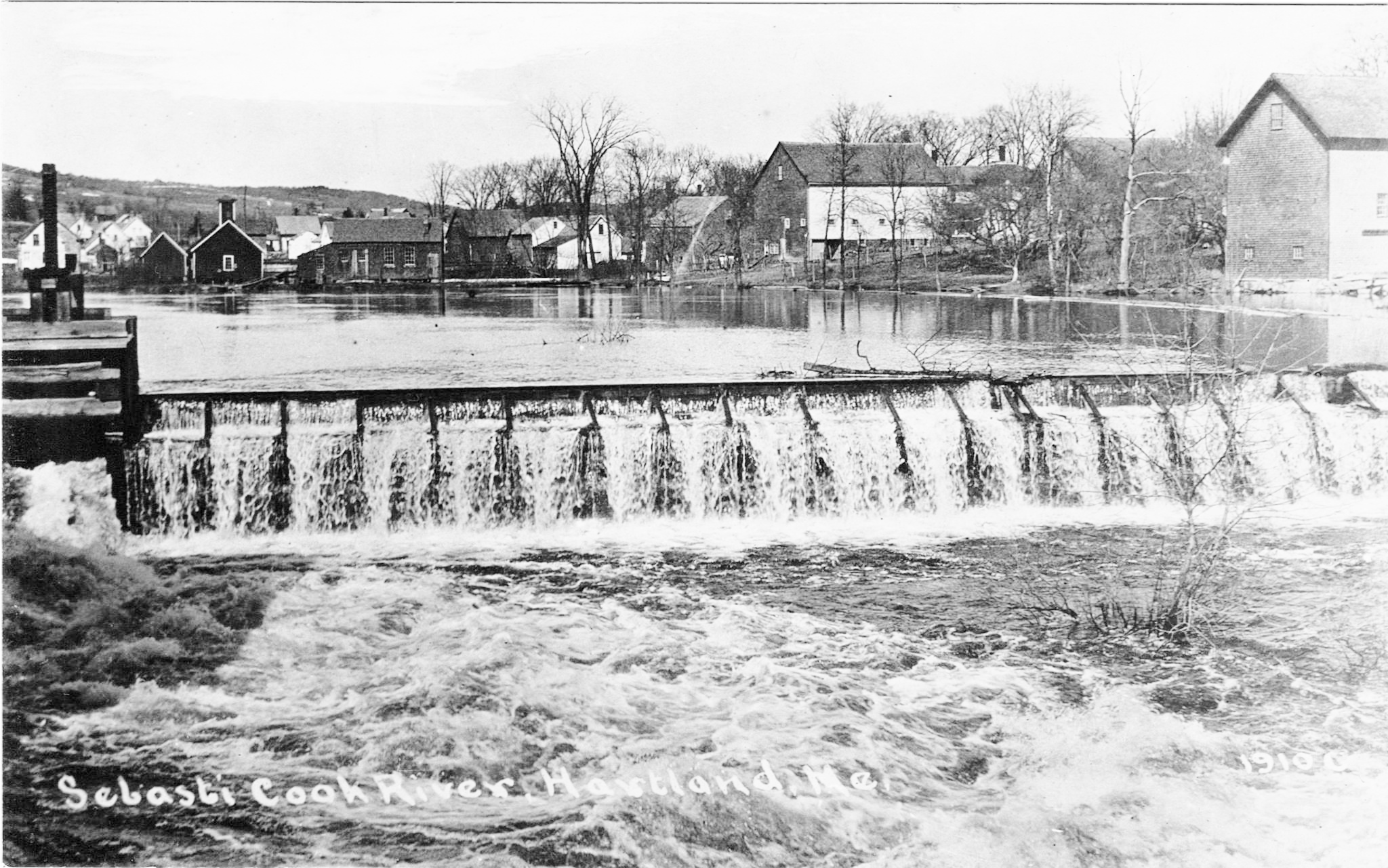
Lower Dam at Main Street – c1900
*
This postcard shows the 2 truss wooden bridge which had replaced the old 3 truss wooden bridge seen back in the late 1870s. The postcard is undated but it includes the Latty Block (4th building on right) built in 1896 and is before 1907 when it was replaced by a new steel bridge. Research continues on this bridge’s construction timeline.

Looking west on Main Street with the old 2 truss wooden bridge in place
*
At the March 1907 Town Meeting, citizens appropriated $1,300 and authorized Town Selectmen to seek a contract for a new steel bridge to replace the old wooden 2 truss bridge on Main Street. Soon after, the contract had been awarded originally calling for a completion date on or before June 13, 1907. Construction of the bridge was delayed for unknown reasons but the majority of the bridge was done and likely opened by fall with the final completion of the walkways and side rails stretching into early 1908.
The new bridge’s total cost, as itemized in the 1908 Town Report, was over budget coming in at about $1,816 with $1,242 of that paid to the Canton Bridge Company for the majority of the bridge materials and installation. Numerous Hartland businesses are noted in the Town Report providing various types of support materials for the bridge as well as several men from Hartland paid to work on its construction.
The new bridge featured steel trusses topped with decorative gold balls along with a pedestrian wooden plank sidewalk on both sides protected from the river with decorative steel side rails as seen in this undated postcard.
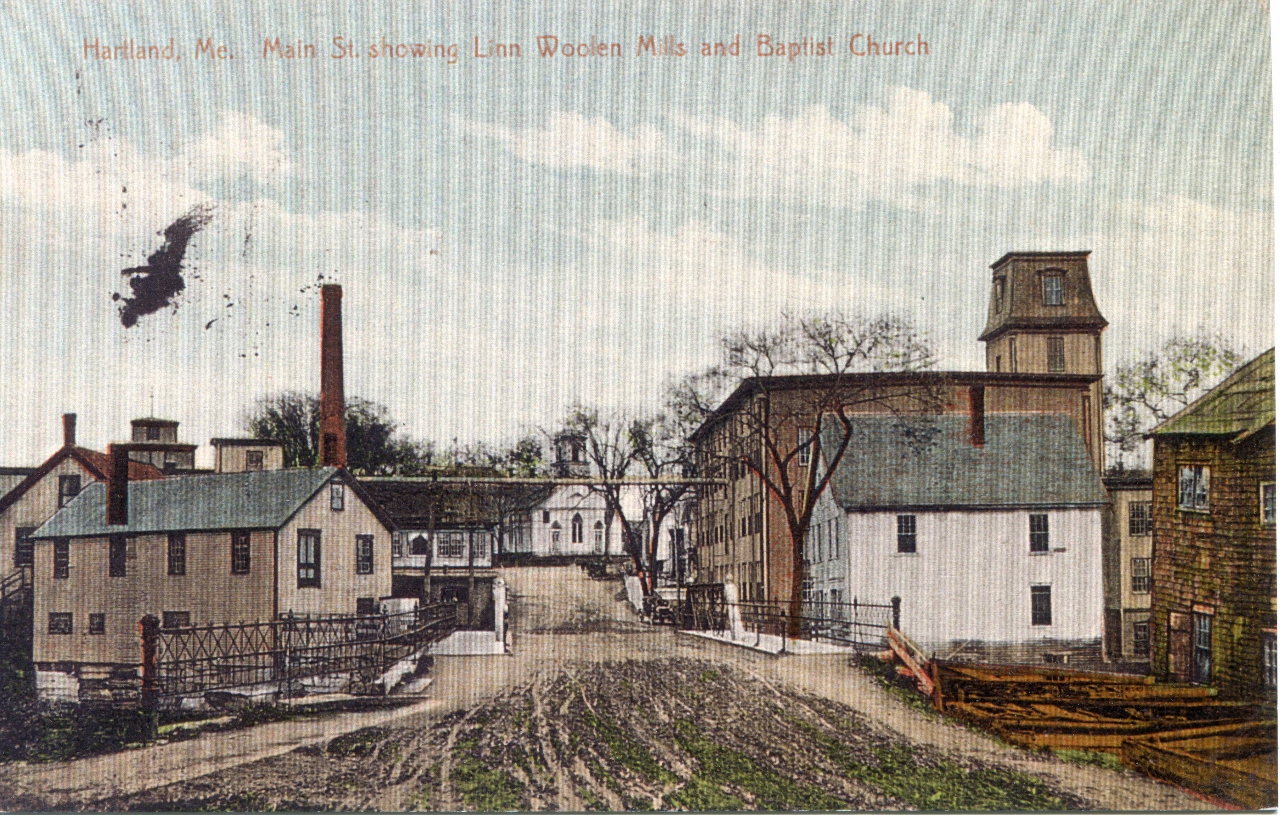
Main Street with the new Steel Bridge – c1912
*
The distinctive new steel bridge is seen in numerous photographs after it built and would survive a couple of major flooding events before being replaced with a cement bridge in the late 1930s.
Also seen in the photo below and the postcard above is the addition of a new building (3rd on the left) in the late 1890s replacing the original Linn Woolen Mill Dye House & Boiler Room as seen in several previous photos.
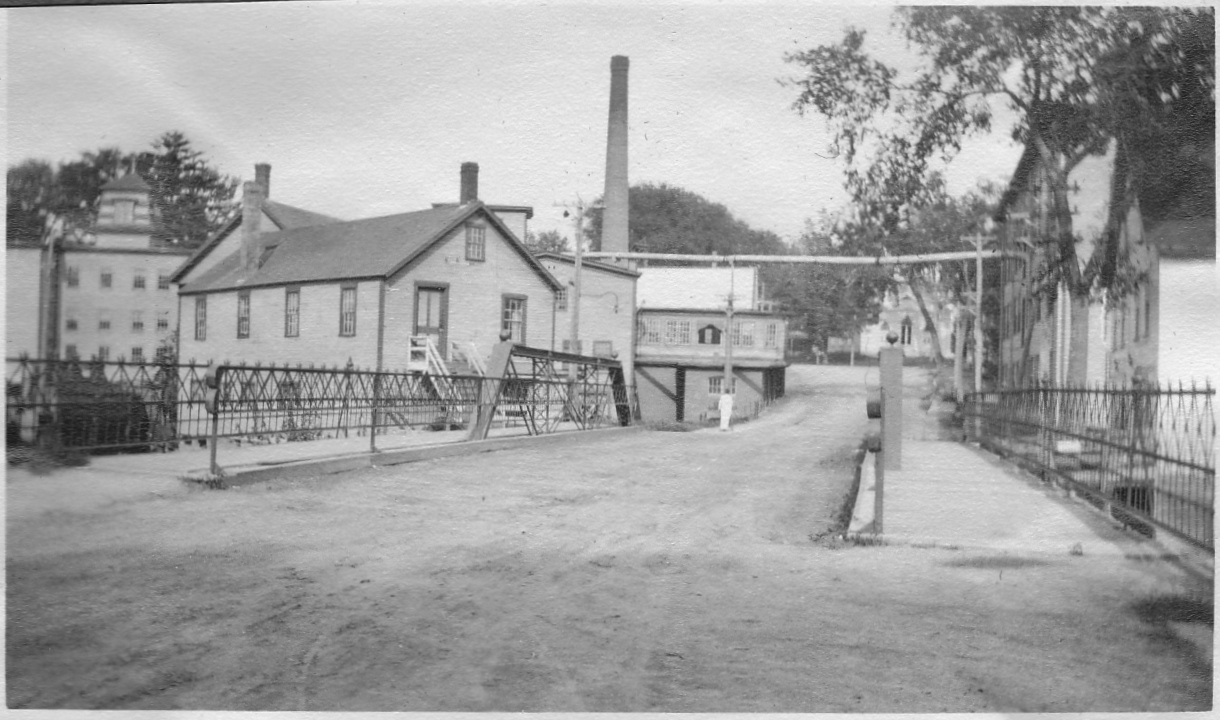
Main Street with the new Iron Bridge – c1912
*
An undated photo looking westerly on Main Street showing power poles and lines installed. On the left is the A. W. Miller Drug Store, the new Linn Woolen Mill built in 1890 and just past it the former G. W. Furber Jewelry Store. On the right is the Hartland Drug Store followed by the former R. E. Latty & Son Hardware building. Next is the 2 story side of the addition to the Linn Woolen Mill which replaced the former Dye House & Boiler Room in the late 1890s.

Main Street from the intersection of Warren Square & Commercial Street
*
In 1903, Dr. Charles A. Moulton incorporated the Hartland & St. Albans Telephone Company expanding his former St. Albans Telephone company with new telephone lines throughout the Village and adding full-time Telephone Operators who worked from his new Elm Street location.
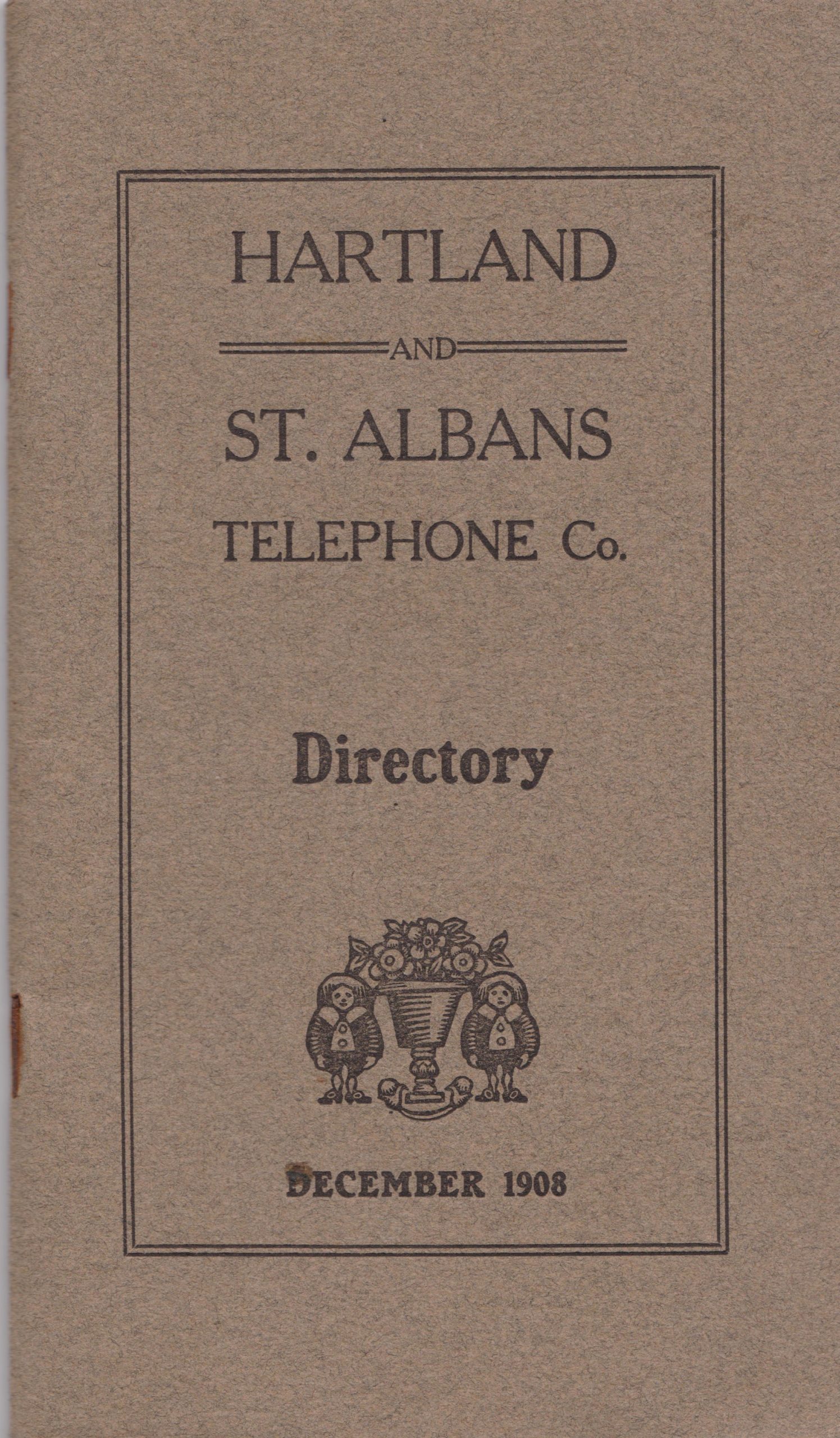
Hartland & St. Albans Telephone Company Directory – 1908
*
In 1906, Ralph Carleton Hamilton (1882-1955) purchased the Hartland Drug Store where he remained in business for the next 45+ years. Hamilton had been working for Albert Miller at his drug store after arriving from Sanford shortly after 1900 and had recently been hired by Dr. Lynne H. Blanchard as a pharmacist at his Hartland Drug Store business. In 1910, Ralph married Gertrude Mae Patterson and moved into her parents home at the corner of Main Street & Mill Street.
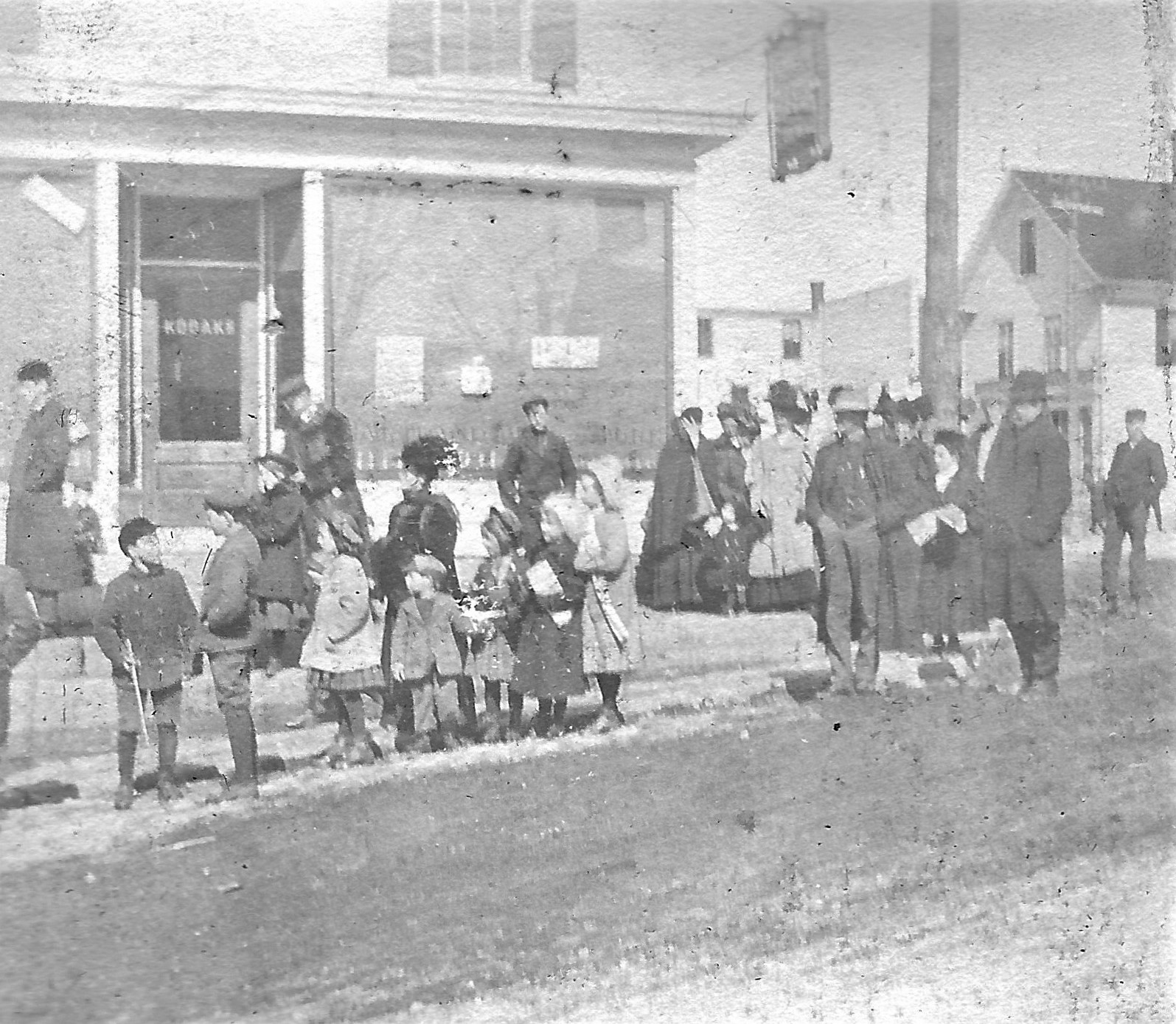
Hartland Drug Store – Ralph C. Hamilton
*
W. A. Judge took a series of remarkable photos at the Lower Dam on Main Street which he fortunately dated as December 13, 1911. Our research continues as it is currently unknown exactly why the water level was this low at the time but more than likely it had something to do with work at the Upper Dam.
(W. A. Judge photos courtesy of Tony Simpson)
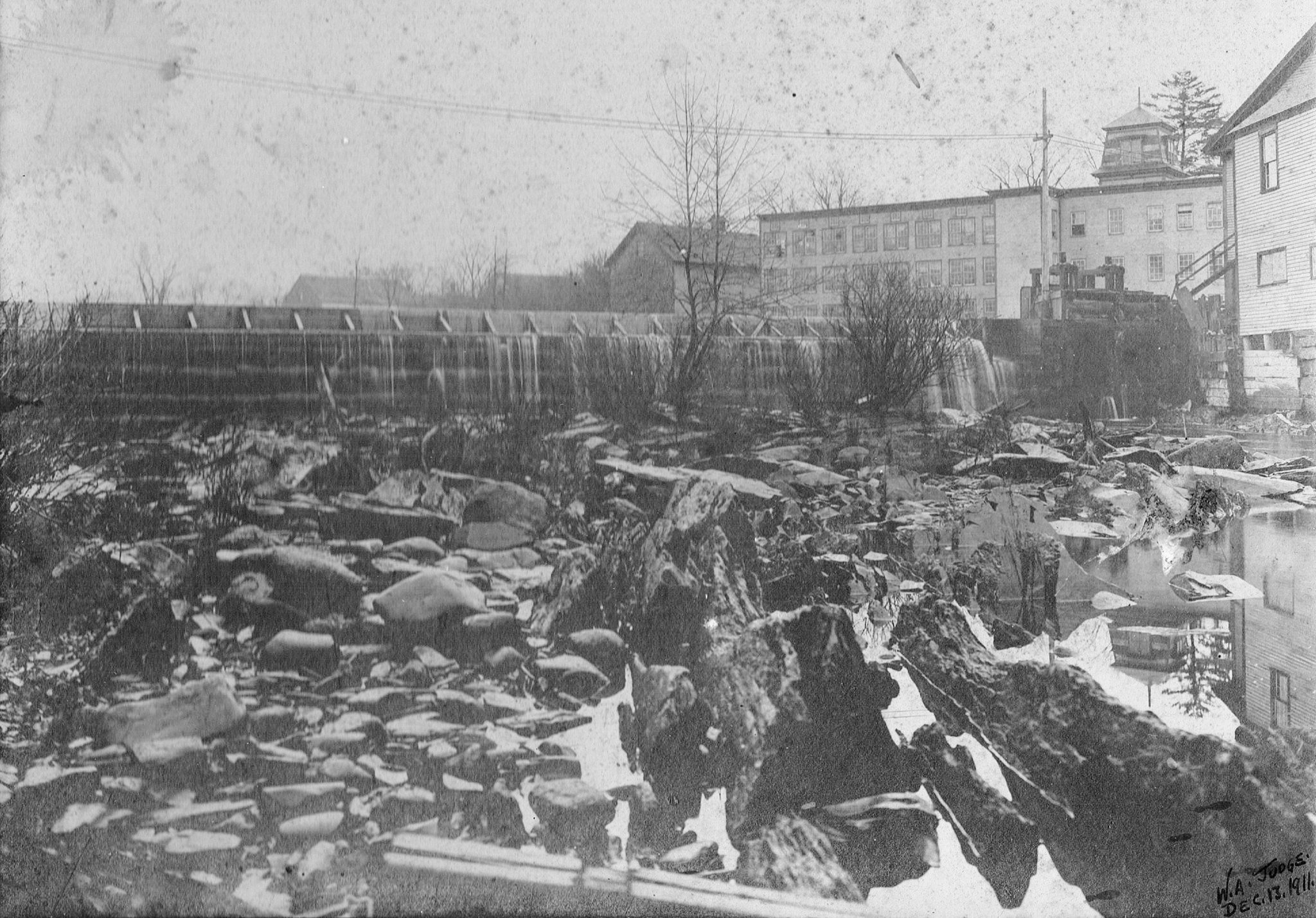
From the basin of the Lower Dam with the Linn Woolen Mill in the background and Central Hall to the right.
*
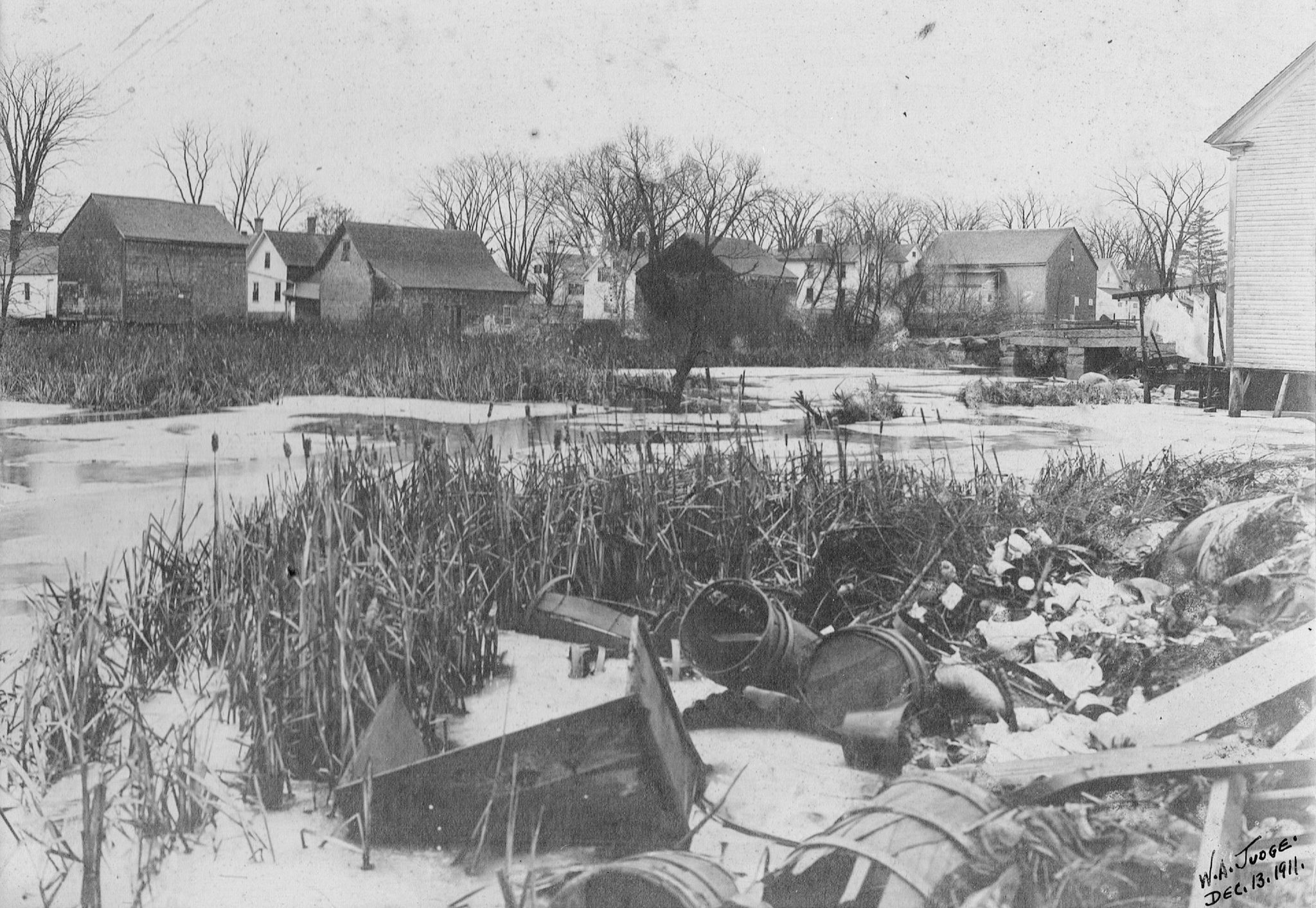
From above the Lower Dam looking across to Water Street with the Water Street Bridge seen to the right.
*
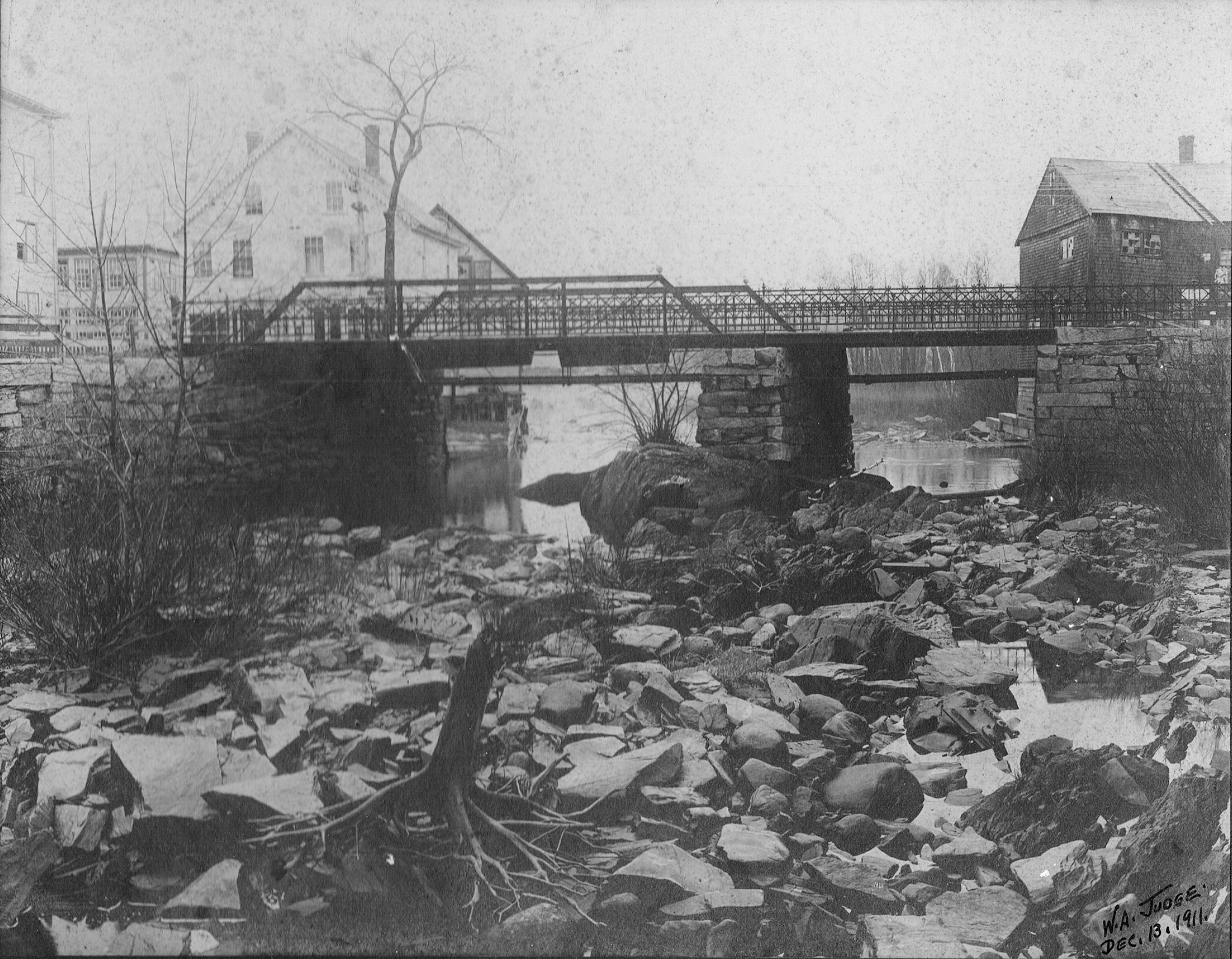
From the basin of the Lower Dam to the right is the Hartland Grain & Grocery Storage Building. The white building on the left is the former G. W. Furber Jewelry Store with the Carriage House behind it. To the far left is the new Linn Woolen Mill building.
*
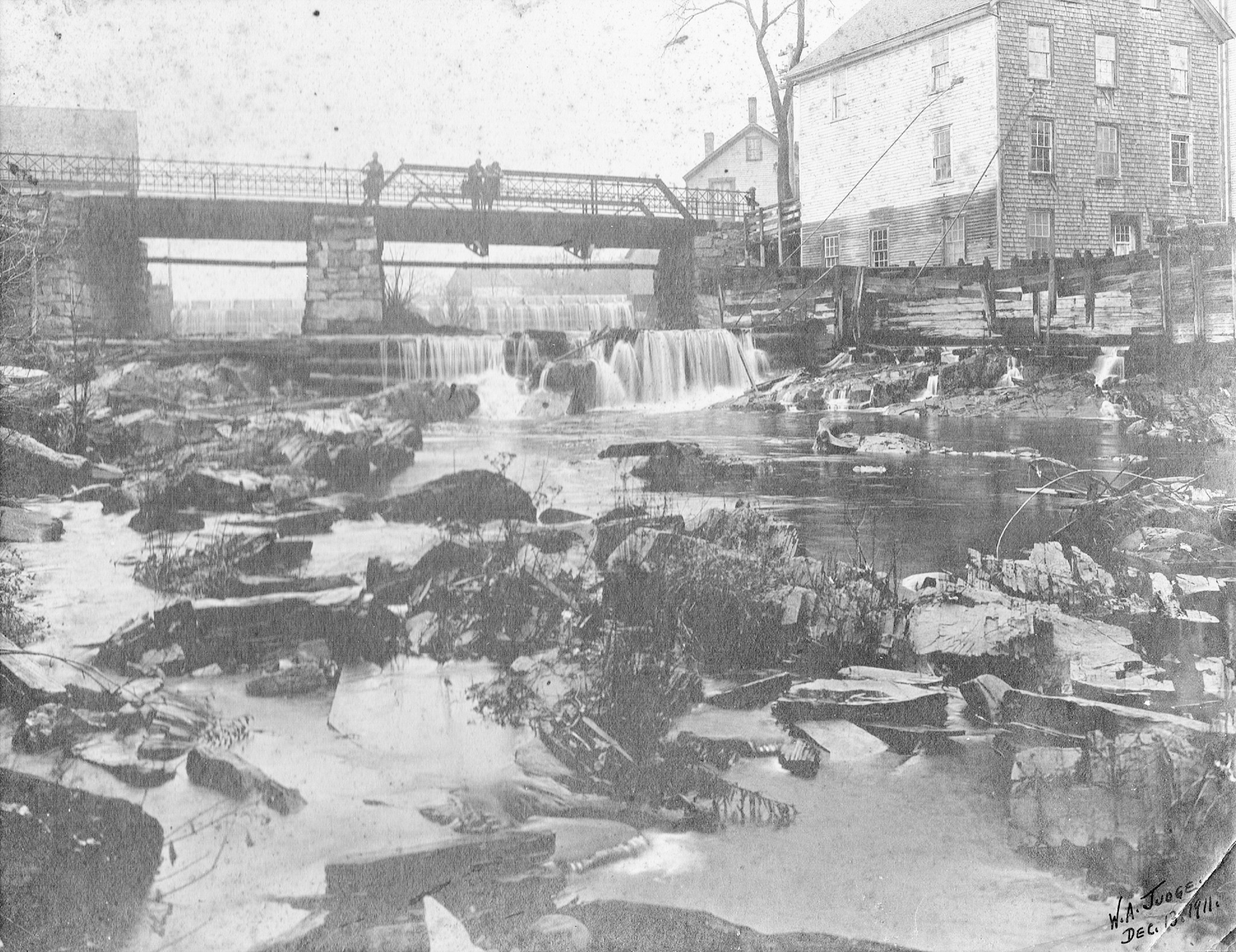
From below the Main Street Bridge looking back to the former G. W. Furber Store on the right with Central Hall in the background. The Carding Mill is seen on the left.
*
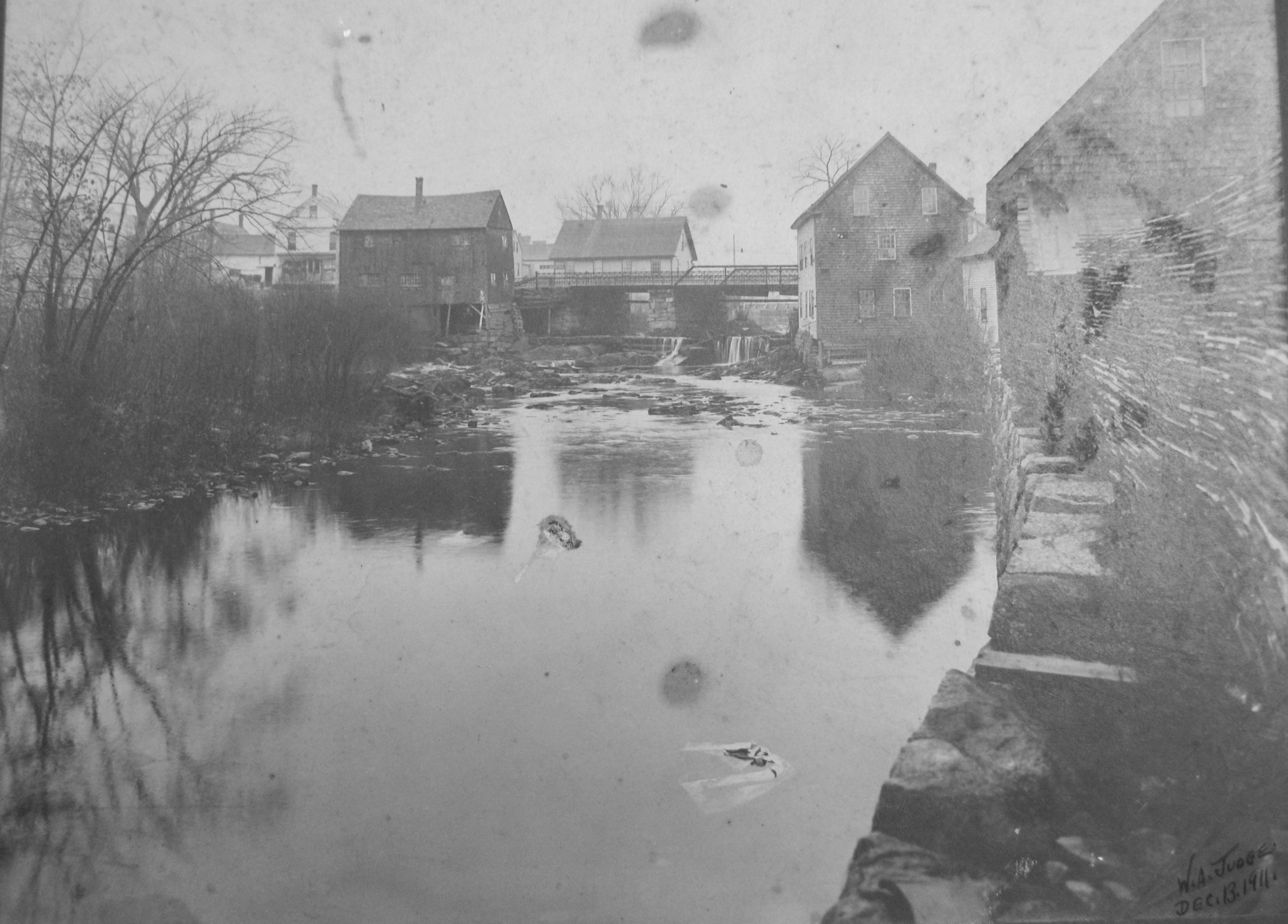
From further below the Main Street Bridge with the Carriage House on the right and the former G. W. Furber Store in front of it. To the left is the Hartland Grain & Grocery Storage Building. On the opposite side of the bridge is the old Carding Mill in the center and the Hartland Grain & Grocery Store to the left.
*
1911 marked the end of the Sebasticook & Moosehead Railroad after Maine Central Railroad (MEC) had leased the financially troubled railroad in 1910 then purchased the company in 1911 with the official merger set to go into effect on July 1st of that same year. An extension of the existing line from Main Stream was immediately built into Harmony Village and opened to the public on August 19, 1912. The entire line from Pittsfield to Harmony then became officially known as the Maine Central Railroad Harmony Branch. The new rail line continued full service over the next few decades transporting countless thousands of passengers and tons of freight in and out of the region.
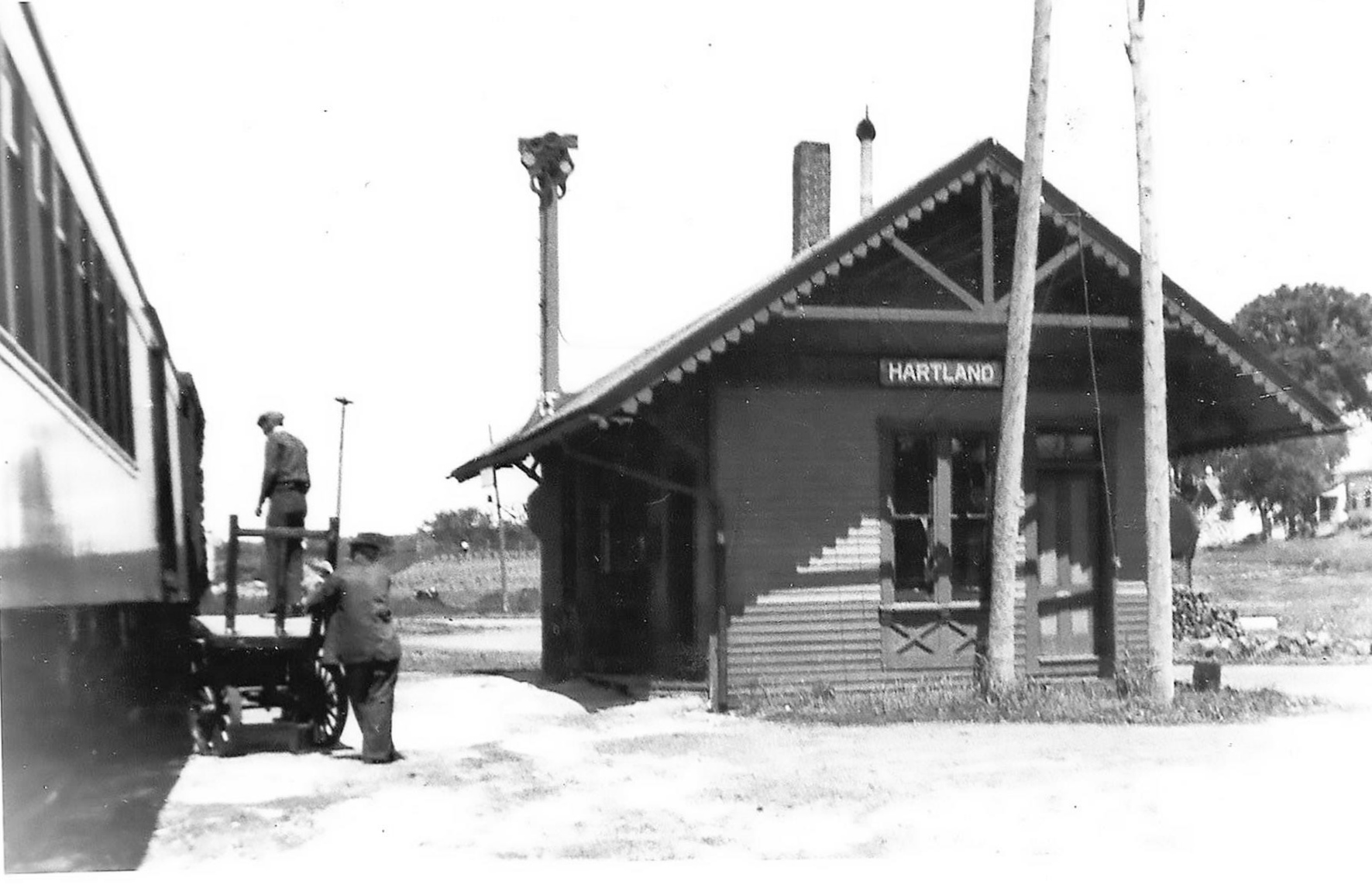
Hartland Train Depot on Outer Main Street
*
Log Drives originating from the Moor Sawmill at the Upper Dam were likely a common occurrence on the Sebasticook River throughout the 1800s. These log drives provided an efficient alternative to horse drawn means to transport logs to market before the advent of motor vehicles.
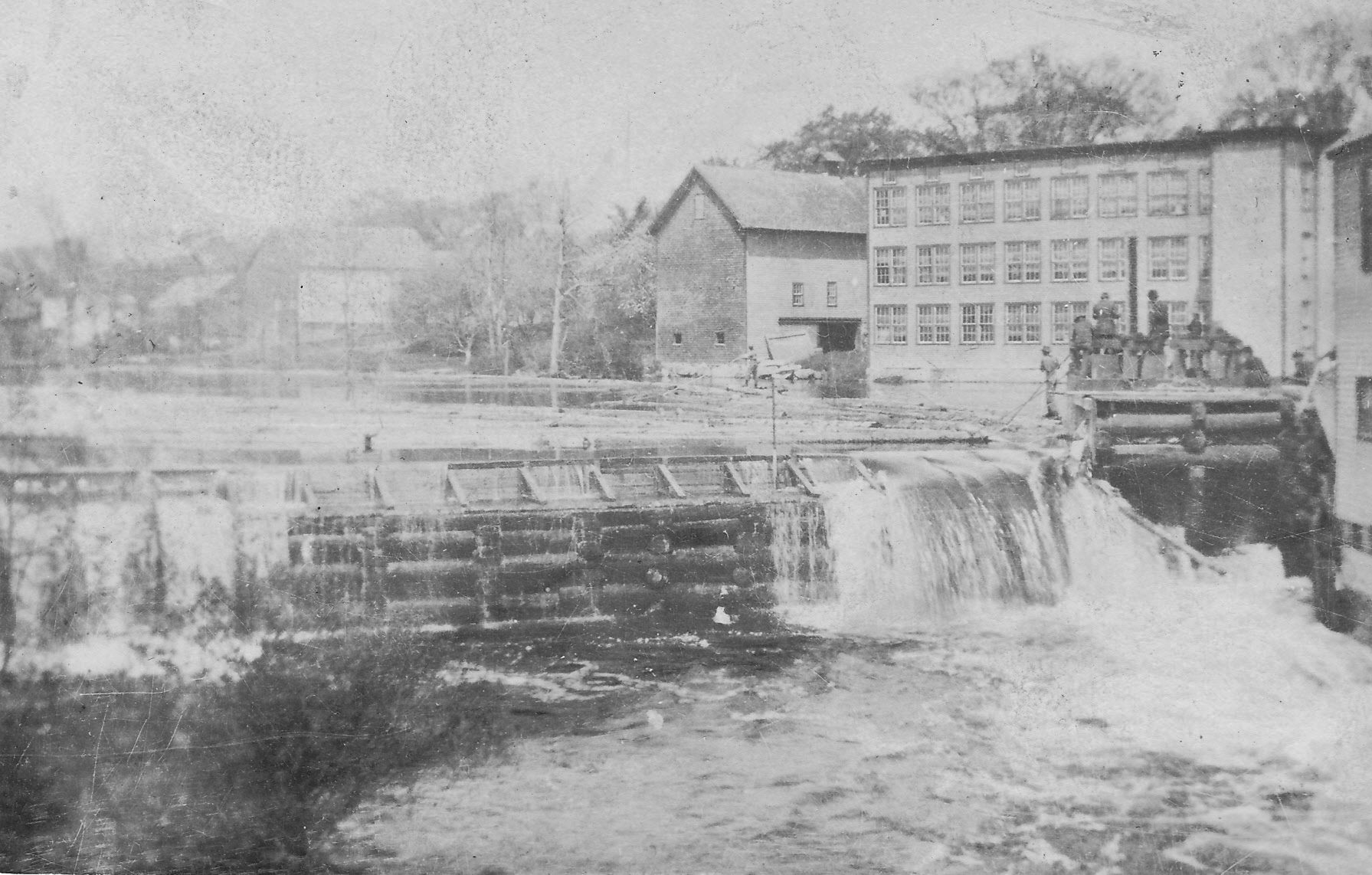
Guiding logs through the Lower Dam – c1910
*
Not all log drives were successful as seen in these series of dated photos from 1912.
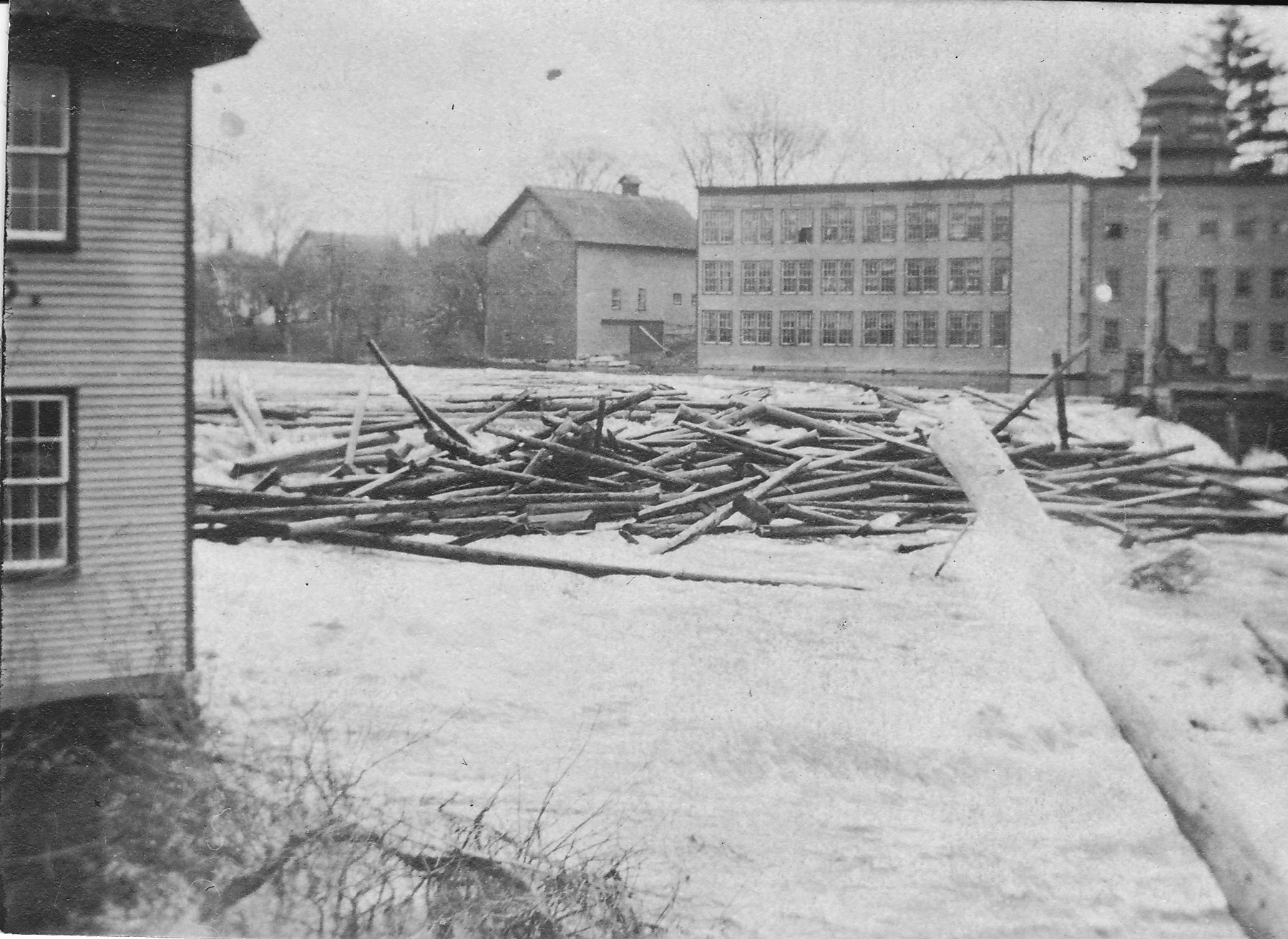
Log Jam at Lower Dam – 1912
*
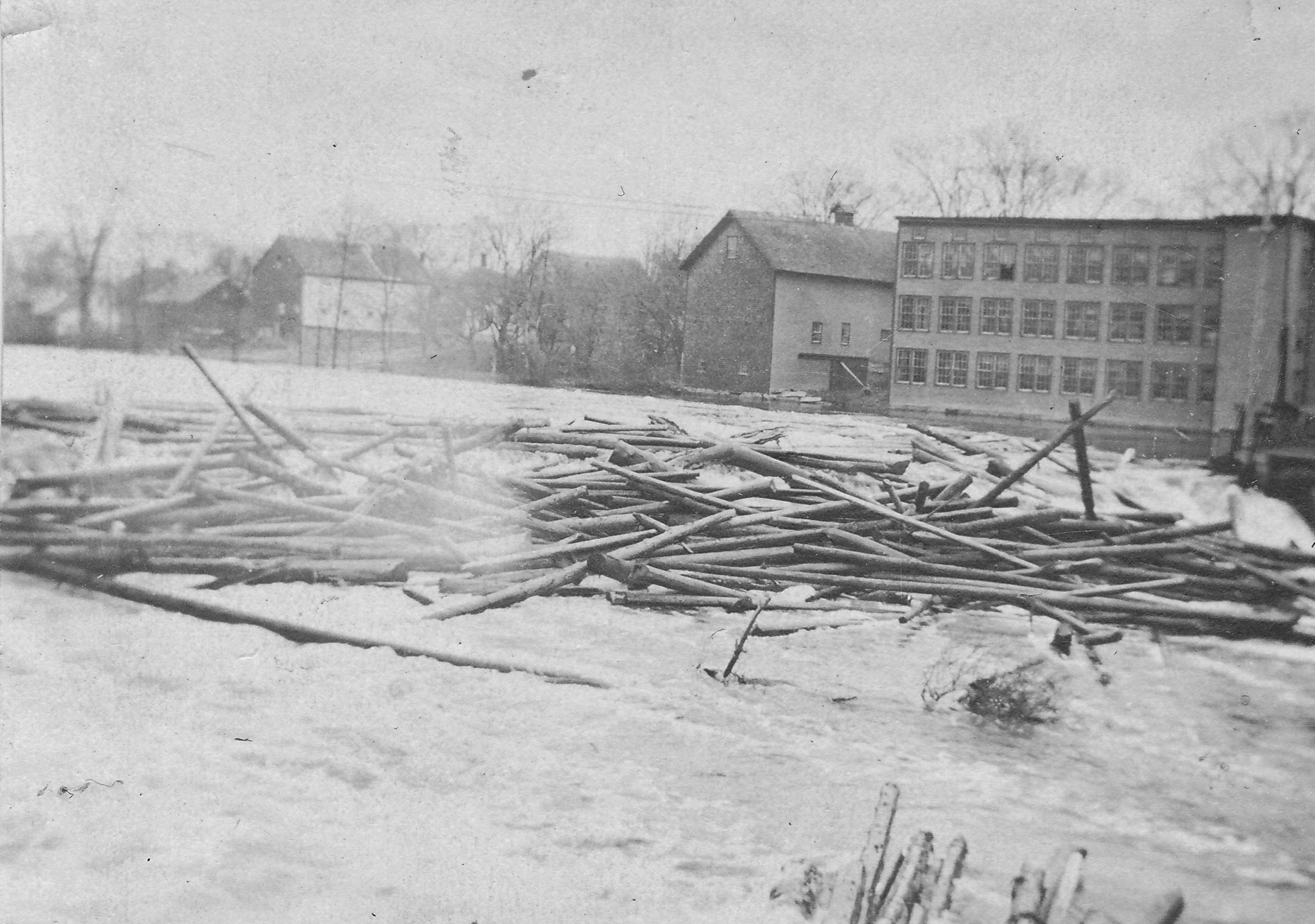
Log Jam at Lower Dam – 1912
*
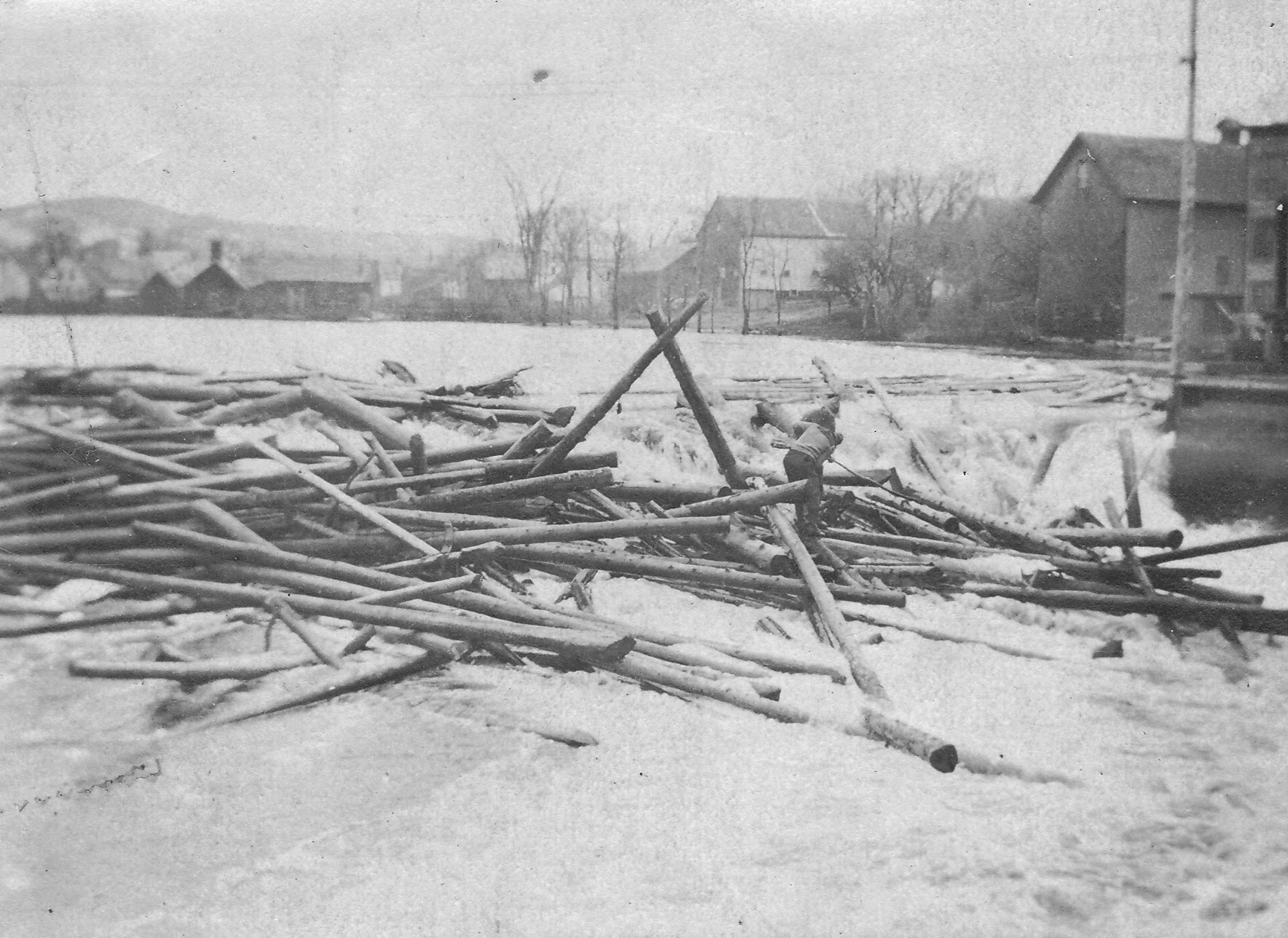
Men working to break the Log Jam at Lower Dam – 1912
*
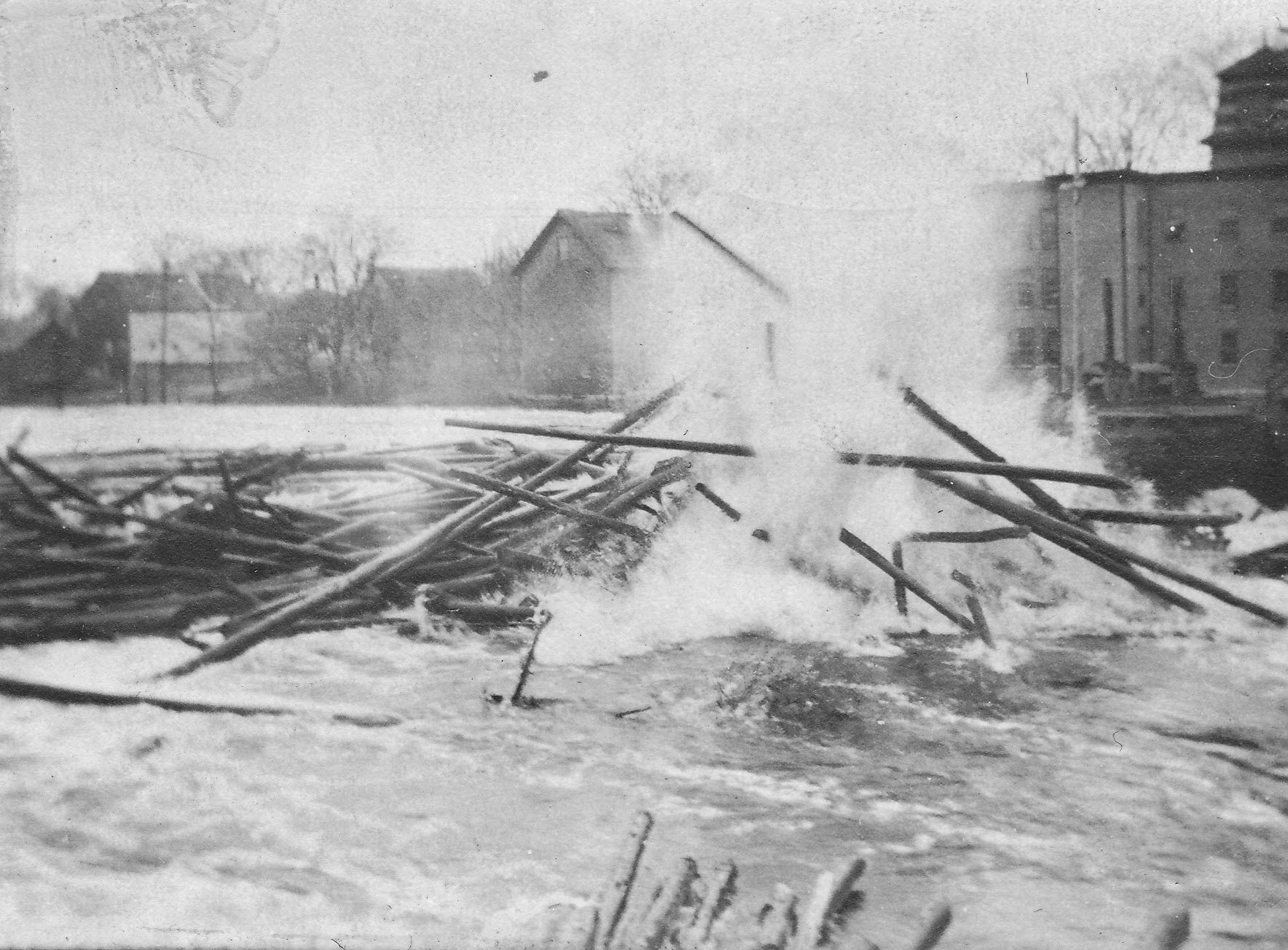
Breaking the Log Jam at Lower Dam with TNT – 1912
*
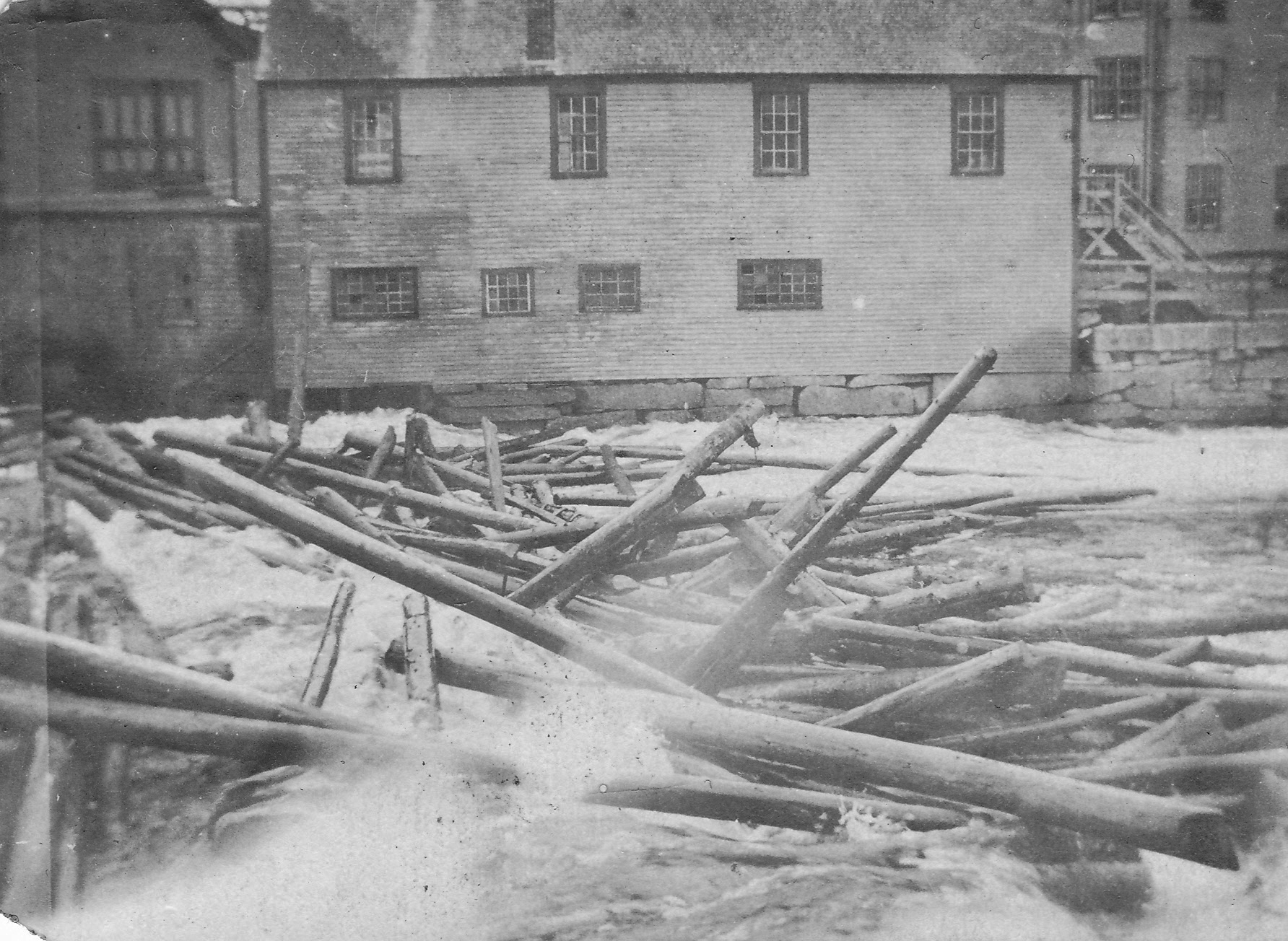
Log Jam at Lower Dam below Main Street Bridge – 1912
*
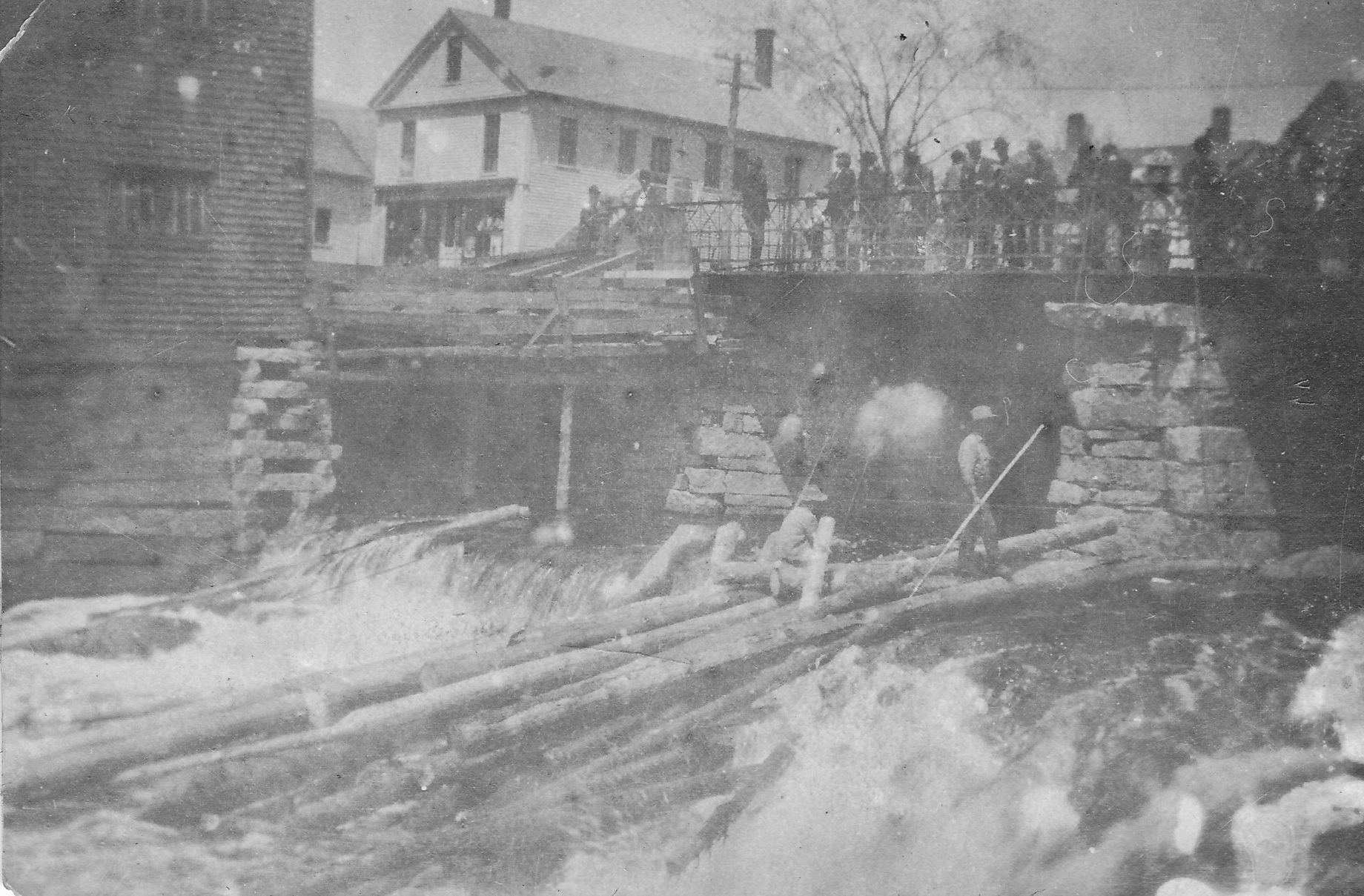
Men working to break the Log Jam at Lower Dam below Main Street Bridge – 1912
*
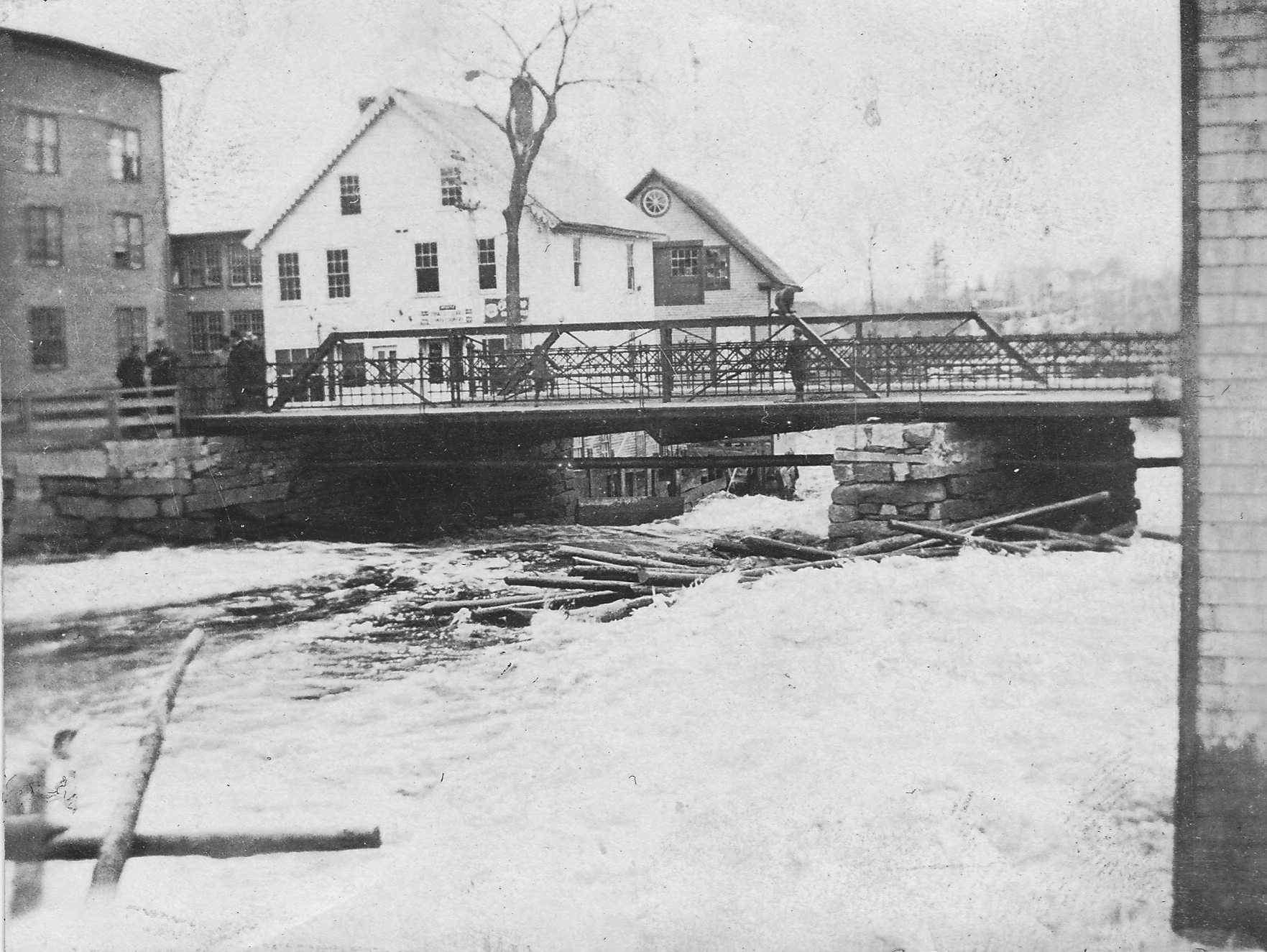
Log Jam at Lower Dam at Main Street Bridge mostly cleared – 1912
*
In March of 1907, Albert C. Bowman sold his hardware store business he was operating on the 1st floor at the Latty Block to Thomas G. Lancey of Pittsfield. Lancey opened his business there operating as the Hartland Hardware Company until 1914 when he sold the company to Harry E. Randlett.
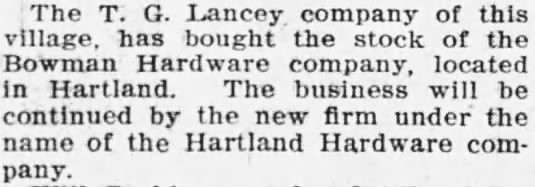
Morning Sentinel – March 11, 1907
*
By the time of the 1910 Census, Robert E. Latty and his wife Julia Starbird had moved from their home on Outer Pleasant Street into their son Edward’s building on Main Street where he was still living with his wife Ruth and their 14yr old daughter Marion & 8yr old daughter Mildred. Julia passed away soon after in 1911 followed by Robert’s passing in 1913.
In 1919, Marion Latty, who was living in Kittery working as a Nurse at the time, died at the Portsmouth, New Hampshire Hospital 5 days after being admitted for appendicitis at 24yrs old. In 1925, Ruth passed away leaving Edward and Mildred as the sole survivors of the Latty Family at the time.
In March of 1922, the Post Office was moved from the Linn Block on Commercial Street to the first floor of the Latty Block. Edward and Mildred were both working as Postal Clerks in 1930 but Mildred soon opened a beauty shop in a room on the third floor which she operated for many years. In 1939, Edward E. Latty passed away leaving his building and property to his only surviving daughter Mildred who became the sole owner of the Latty Block.
In 1940, the Furbush Sisters, Edith & Elsie, who had grown up in the house next door, were living at the Latty Block as Mildred’s tenants with the Post Office still operating on the first floor. In 1943, Mildred married Raymond Gregorie and would name their only daughter after her older sister Marion.
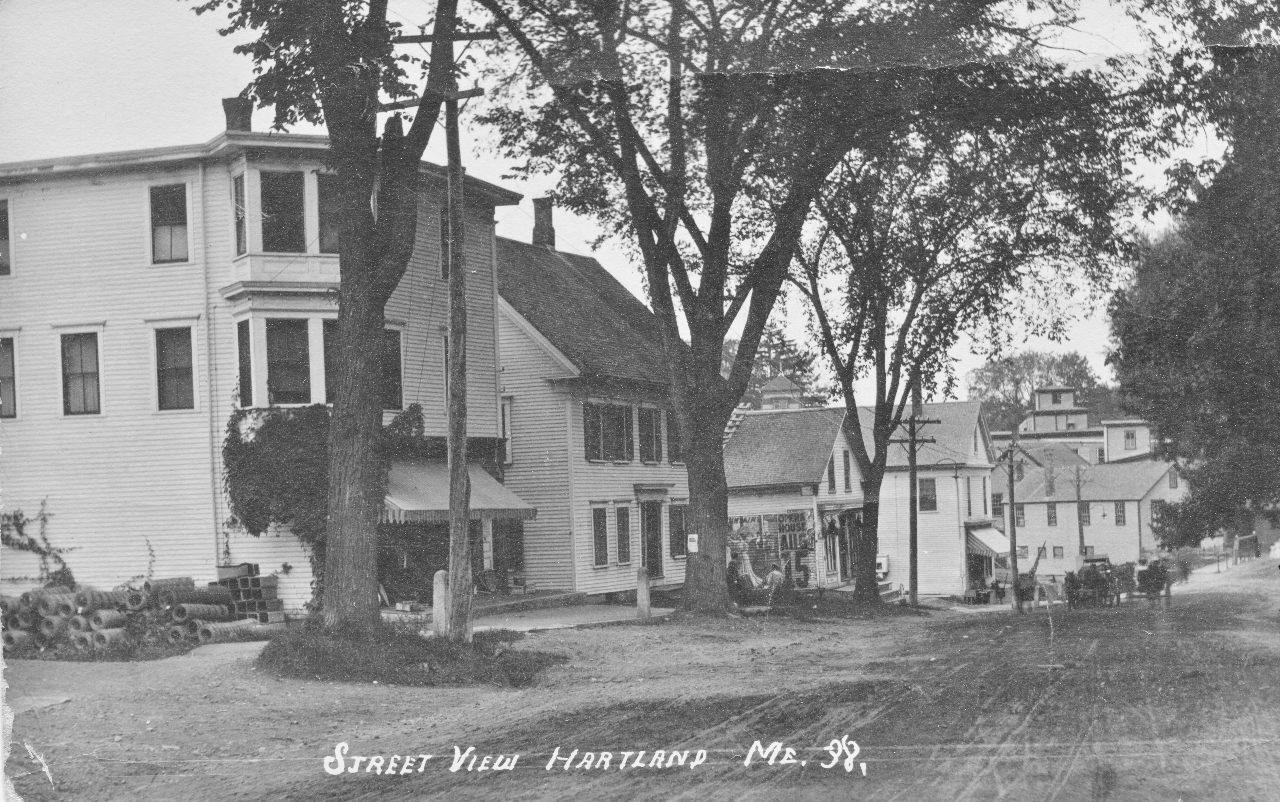
(L-R) Latty Block, former Furbush House, Ensign Hubbard Store, Hartland Grain & Grocery Store, Central Hall & American Woolen Mill
*
In 1914, Lewis Barker Wheeler purchased the building on Outer Main Street which had been erected from materials from James Fuller, Sr’s original homestead in West Hartland and opened L. B. Wheeler General Store which he operated until 1922.
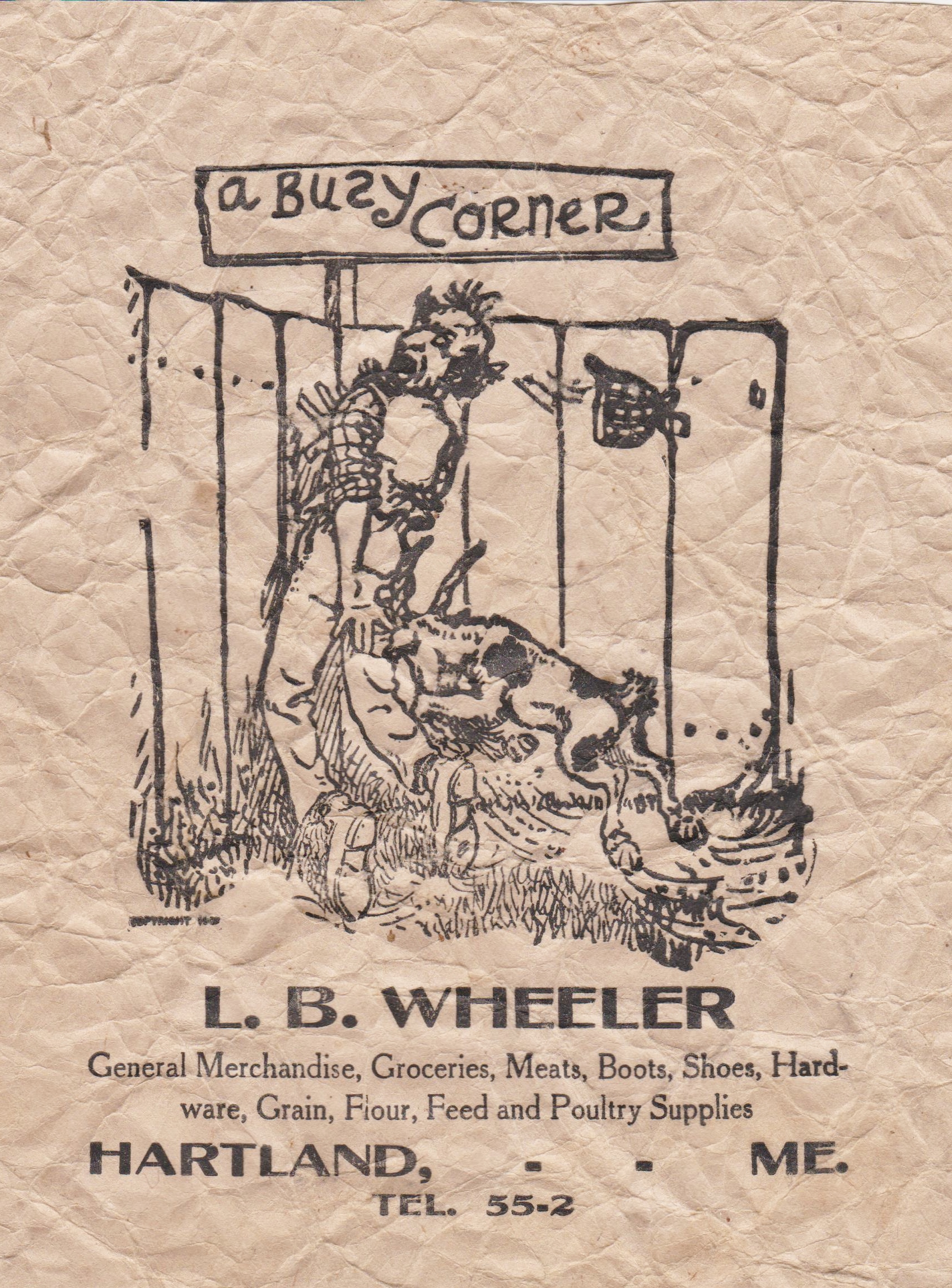
L. B. Wheeler General Store Grocery Bag
(Donated by Raymond & Beverly Martin)
*
George Emory Moore and his newly wedded wife Olive M. Fourtelotte came to Hartland from Ellsworth soon after 1910. He was joined by his younger brother Harold Edwin Moore and opened Moore Brothers Print Shop. In May of 1914, they moved the business to the former Hartland Water Company office building on Outer Main Street across the street from the present day Masonic Hall.
Their older sister Alice Blanche Moore married Harry E. Randlett in 1912 in Ellsworth and also resided in his hometown of Hartland. The Moore siblings were 3 of the 4 children of Herbert Daniel Moore & Carrie Belle Rackliff of Ellsworth. Harold returned to Ellsworth in 1916 and married but passed away soon after from complications of the Spanish Flu in 1918.
George is pictured below on the steps of the print shop with his oldest child Elizabeth Helen Moore who was born in Hartland on April 6, 1911. George & Olive’s 3 oldest children were all born in Hartland between 1911 and 1916. George & Olive moved back to Ellsworth by the birth of their 4th child in May of 1918.
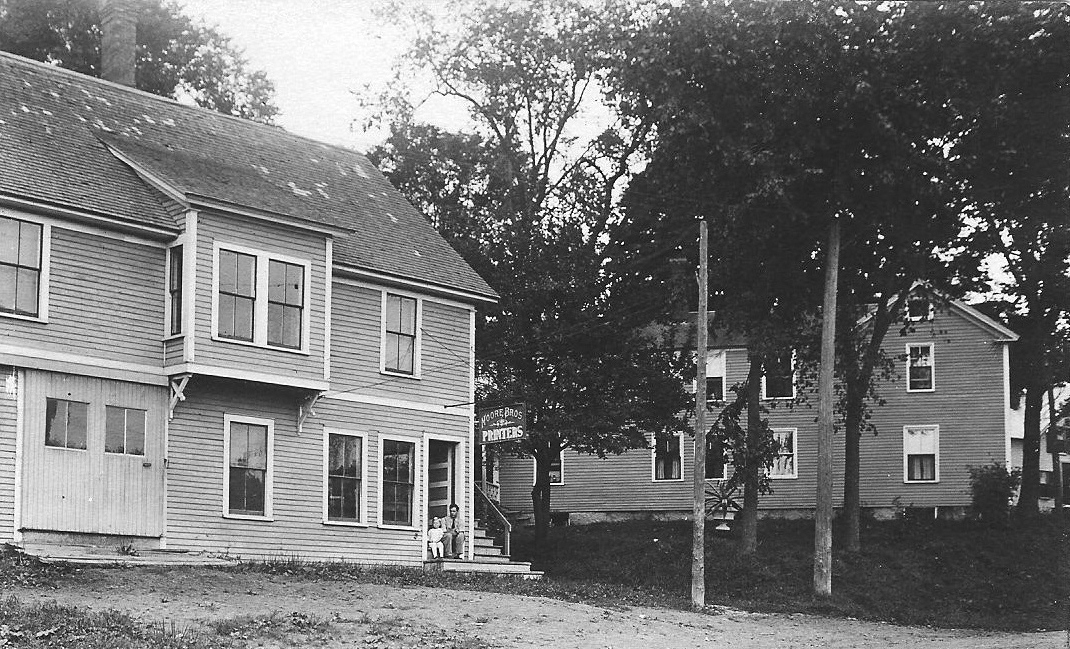
Moore Brothers Print Shop with Harry & Alice Randlett’s future Pleasant Street home in the background – c1915
*
In January of 1914, Harry Elwin Randlett (1879-1973) purchased the Hartland Hardware Company business which had been owned and operated at the time on the 1st floor of the Latty Block on Main Street by Thomas G. Lancey of Pittsfield. Harry was still operating his hardware store business at the leased Latty Block location when he purchased the Park House from James E. Maloney in late 1916. He continued operating his hardware business at the Latty Block as well as the hotel business at the Park House for a few more years.
Sometime around 1920 to 1921, Harry began remodeling the front of the Park House with a large new addition extending the original building forward to Main Street. By early 1922, Harry had moved his hardware business from the Latty Block to the new 1st floor addition of the Park House where he continued operating as the Hartland Hardware Store. Harry’s move to his new location prompted the Post Office to be relocated into the vacated space at the Latty Block soon after in March of 1922.
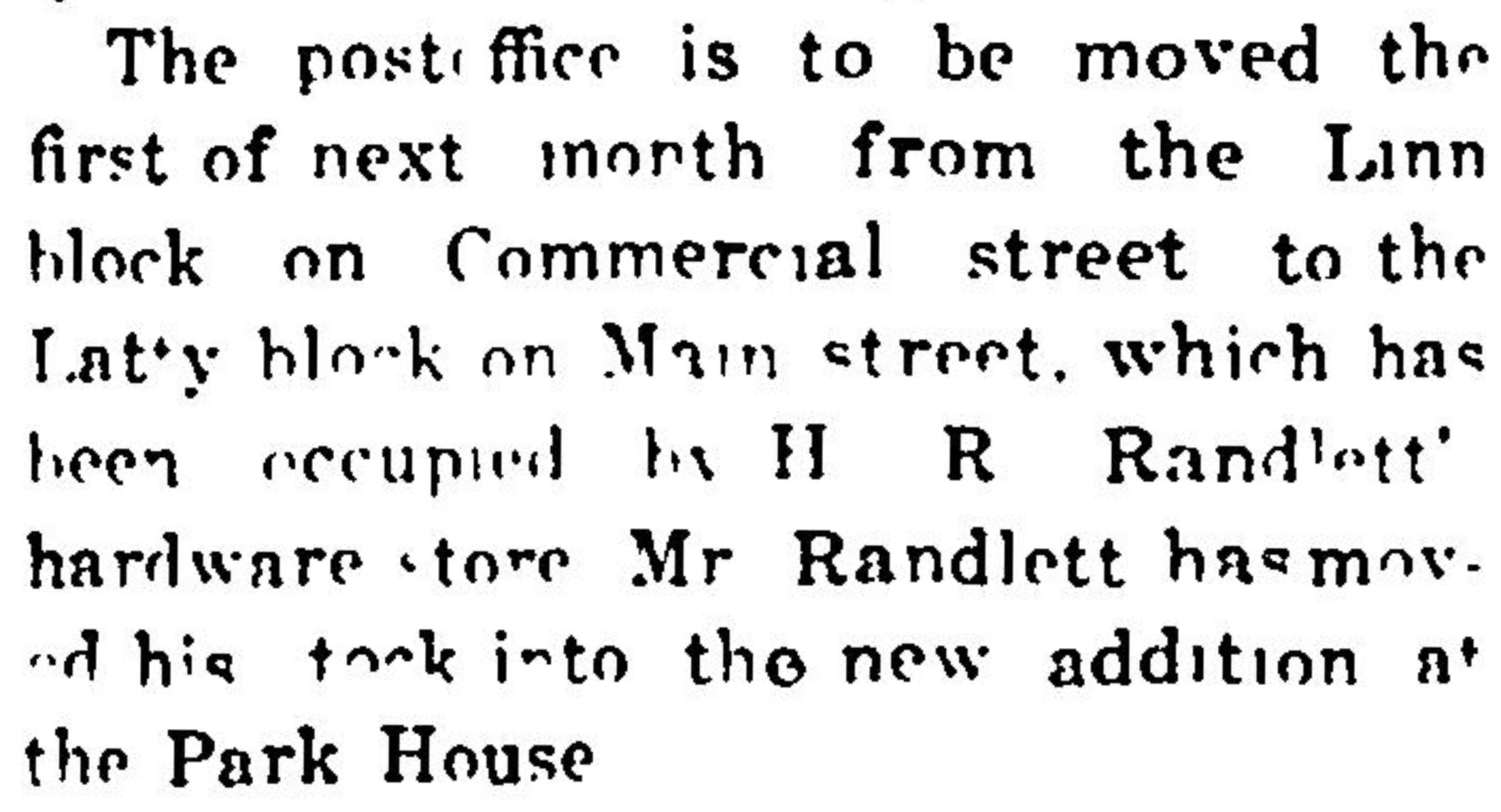
February 2, 1922
*
Harry and his wife, Alice Moore, lived at the Park House for a while after they purchased it before they eventually purchased their house on Pleasant Street. Although Harry continued renting some of the other individual rooms or apartments on the 2 upper floors for the next several decades, the Park House ceased to exist as a dedicated hotel soon after the renovations were completed. Harry remained in his hardware business at this location until his retirement in 1959.
As part of the remodeling, the distinct windows originally on the corner of the building were turned and “flattened” to the Mill Street side as seen below following completion of the project. The tree locations in the front, when compared to earlier photos, provide a good reference to the depth of the new addition.
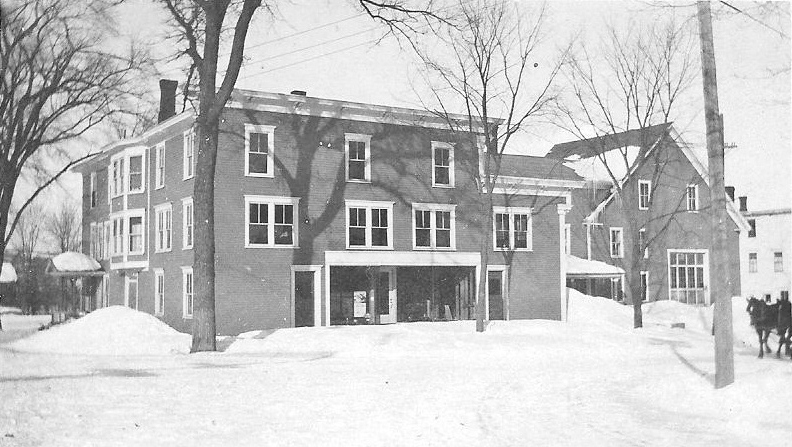
Former Park House renovated and operating as Hartland Hardware Store
*
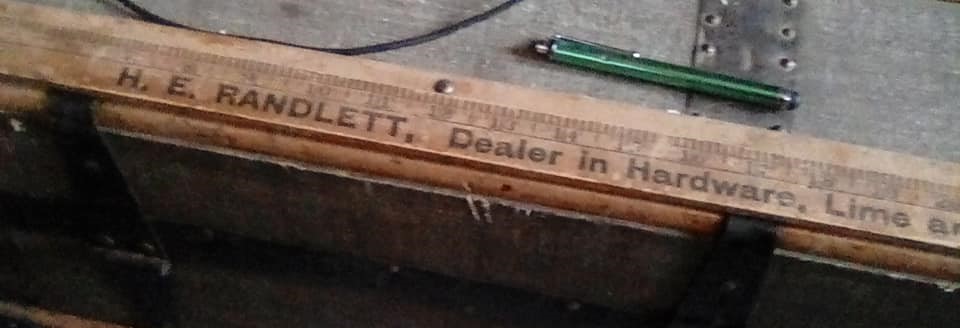
Hartland Hardware Store Yardstick
(Donated by Joan Joy Tibbetts)
*
By 1915, the Linn Manufacturing Company had run into substantial financial hardship and filed for bankruptcy. A short term lease was made with the American Woolen Company who continued operations while Trustees of the Linn Manufacturing Company sought a viable long term tenant. Although plans for an auction to sell the mill were announced, a purchase agreement with the American Woolen Company was made before the auction took place and they took over full ownership in 1916.
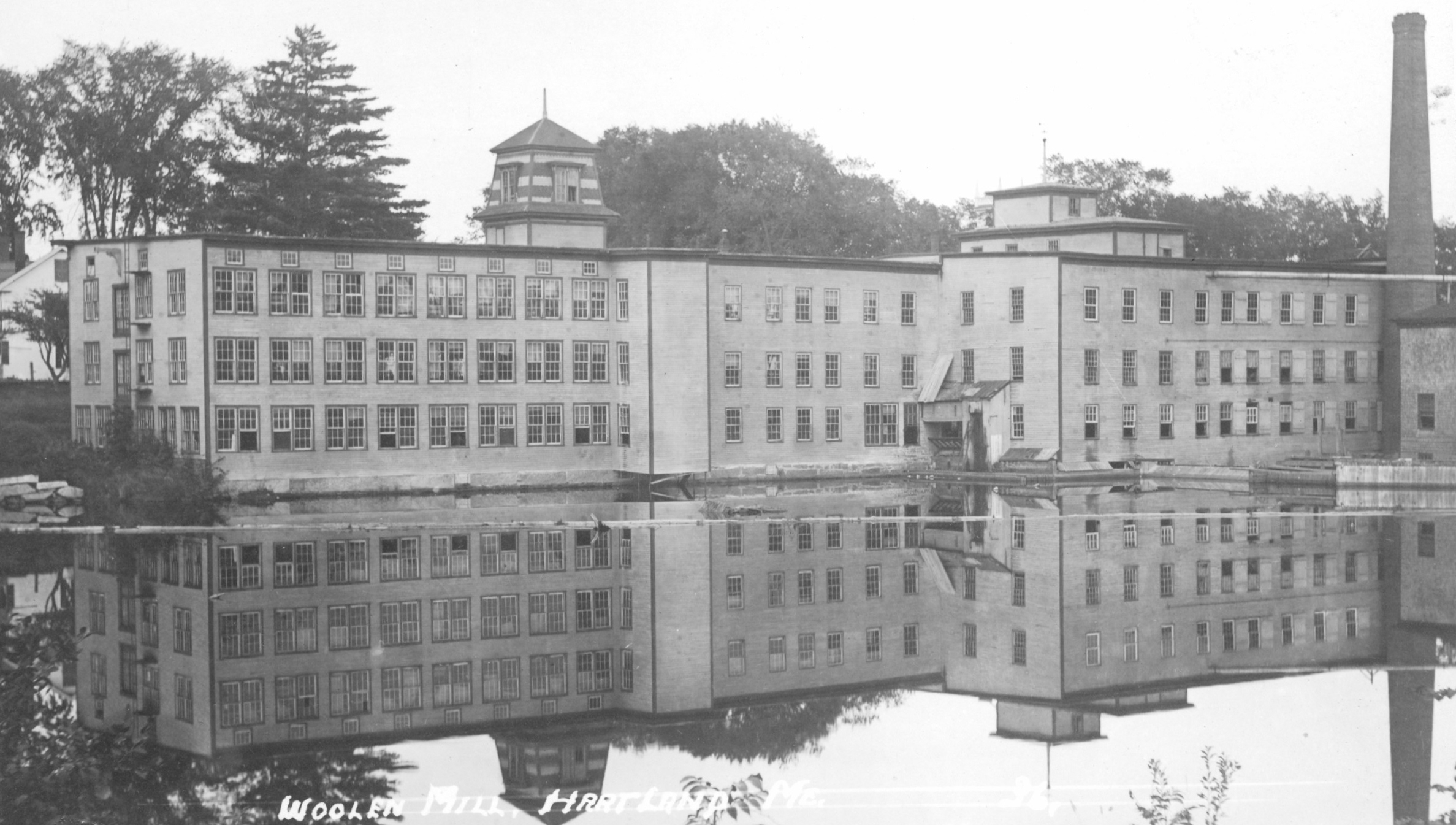
Original Upper Linn Woolen Mill then owned by American Woolen Company
*
Under the terms of the sale, all former Linn Manufacturing Company & Archibald Linn’s Real Estate holdings in Hartland, including the two woolen mill buildings and over two dozen additional residential houses and lots, became the property of the American Woolen Company.
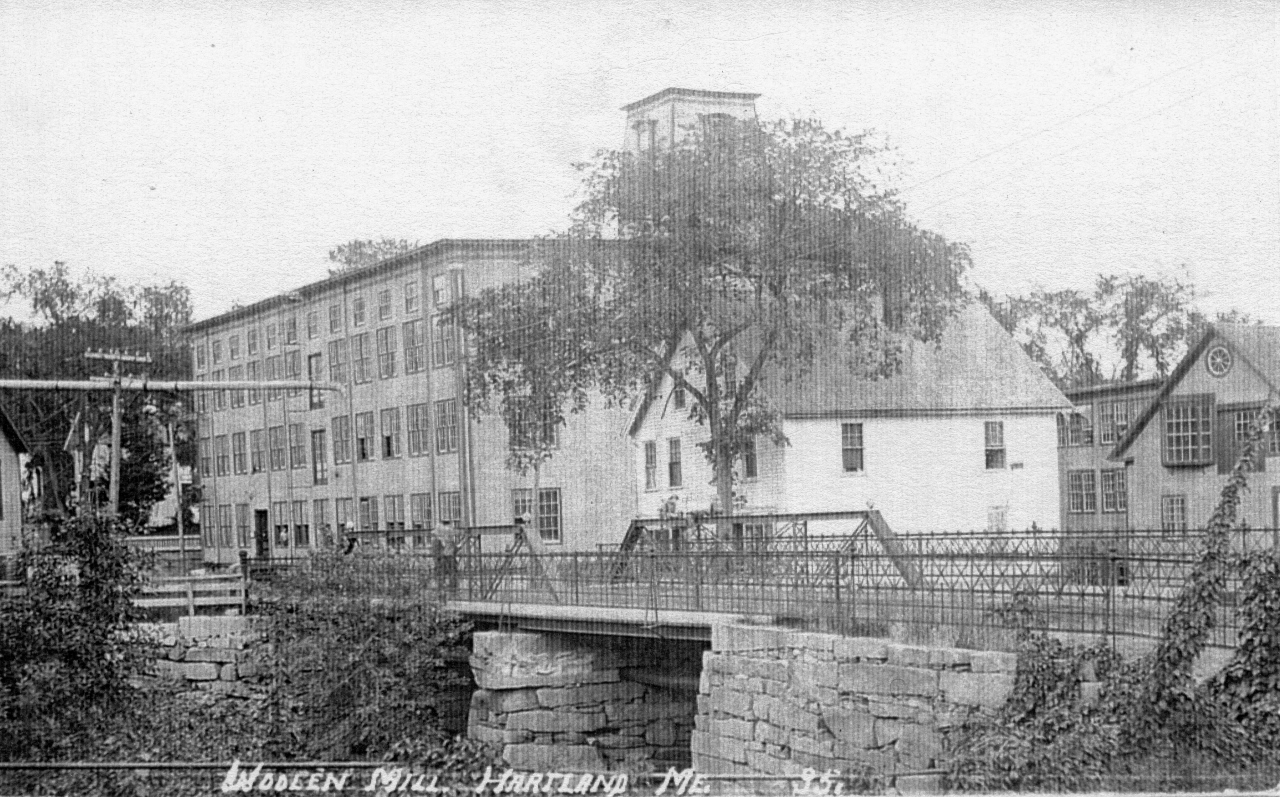
The newer Lower Linn Woolen Mill now owned & operated by American Woolen Company
*
The Linn Mills had long utilized the natural resources of the Sebasticook River as the primary power source for their operations first by water driven means and later by steam. One of the first major upgrades made by the American Woolen Company in 1917 was to build a dedicated coal powered Boiler Room next to the lower mill location replacing the former G. W. Furber Jewelry Store. The distinct overpass between the two mill buildings crossing Main Street was also installed around the same time.
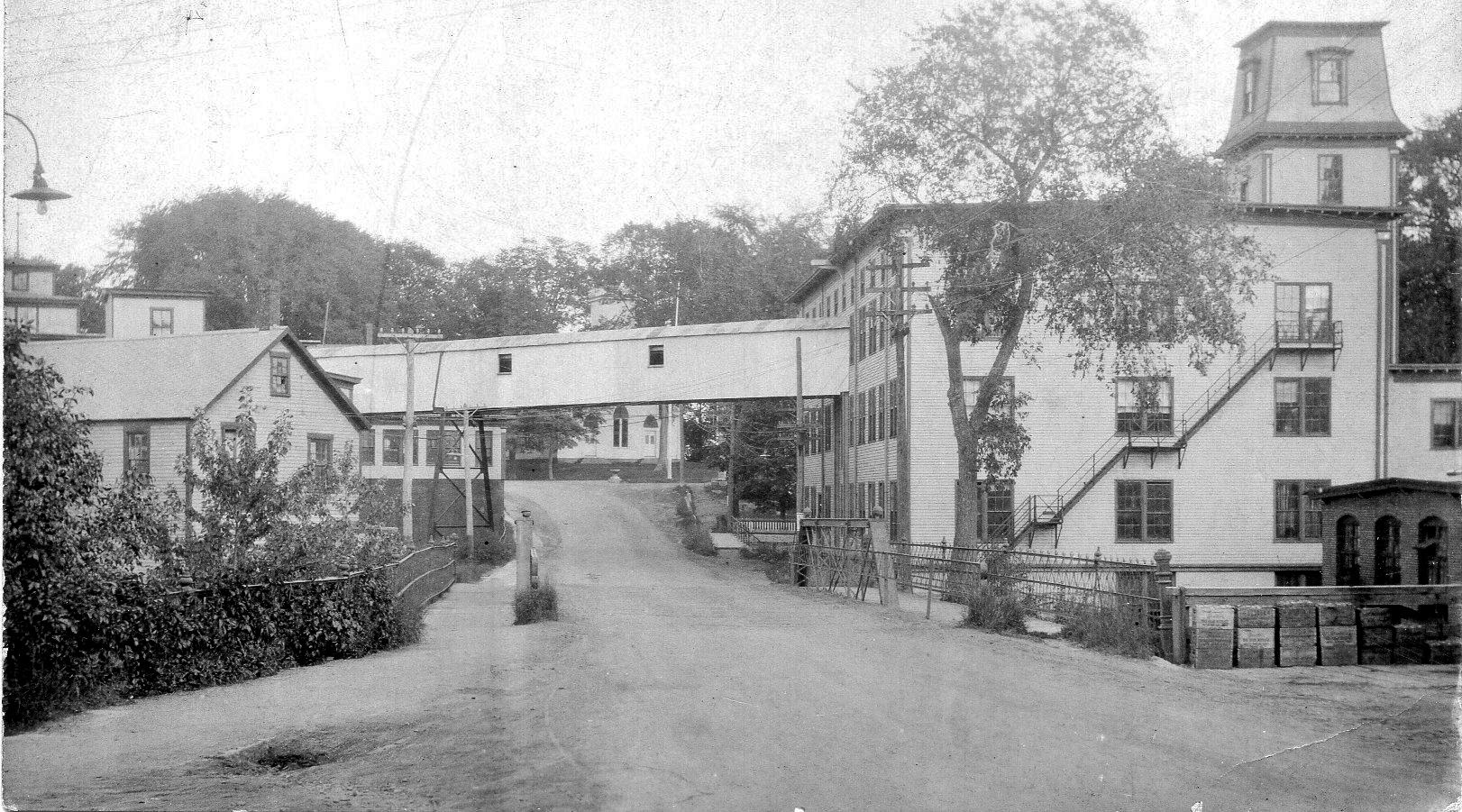
American Woolen Company with the addition of the new Boiler Room and Main Street Overpass
*
When the new Boiler Room was built, the former G. W. Furber Jewelry Store building was moved further up Main Street onto a lot inherited by the American Woolen Company from their purchase. The house and property would be later sold at the Great Auction of 1932 to Alton Leadbetter. It was purchased by Albert Deering, Jr by 1943 and later became the home of his son Maynard Deering, Sr.
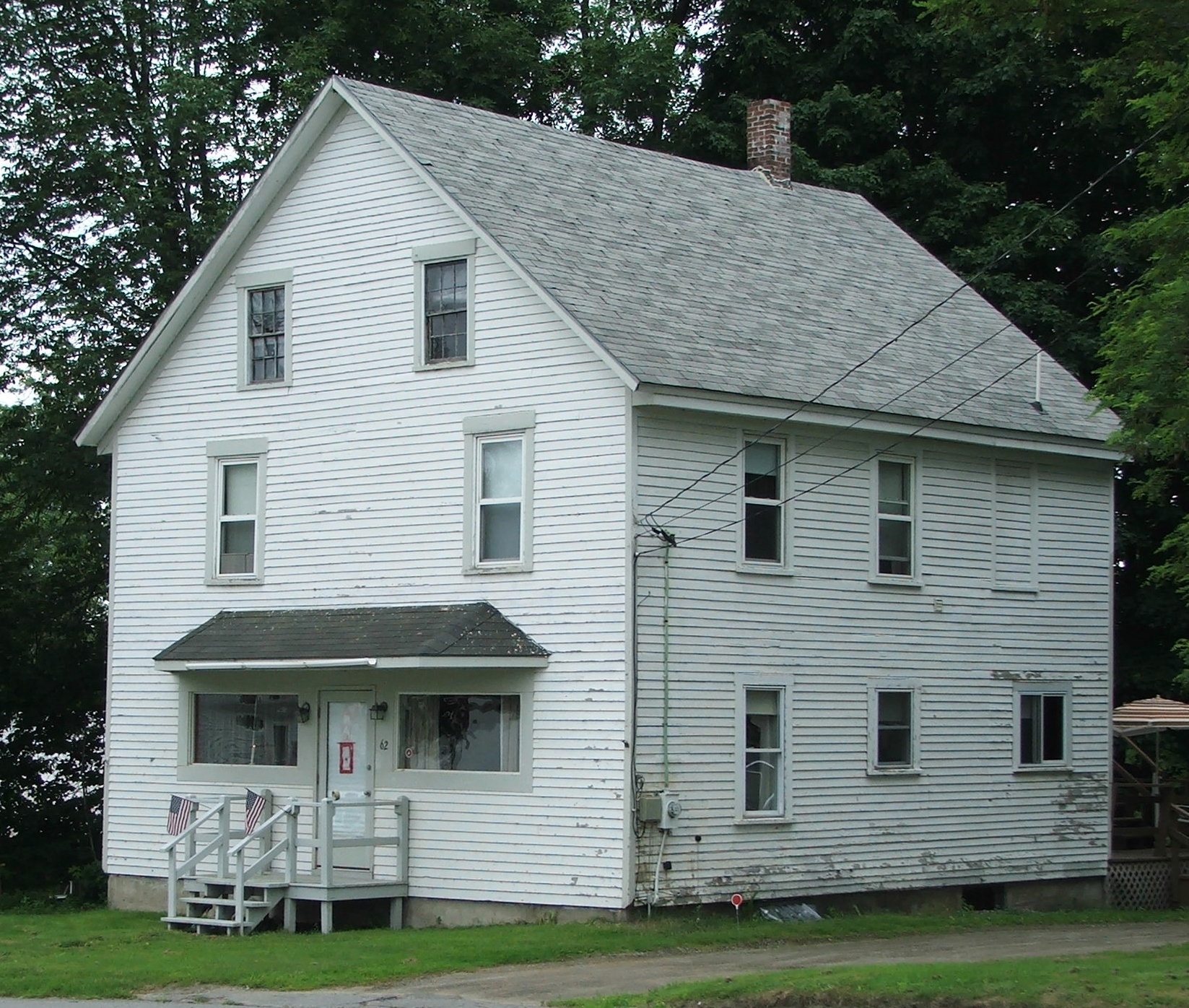
Former G. W. Furber Store building moved further up Main Street – 2009
*
On January 2, 1916, Albert W. Miller passed away at 81yrs old following over five decades of operating his A. W. Miller Drug Store business in Hartland. His widow Myra Haskell retained ownership of the store and lot as well as other properties her husband owned until her death in 1941. They had no children but the store remained part of the Miller Estate until it was sold in 1954.
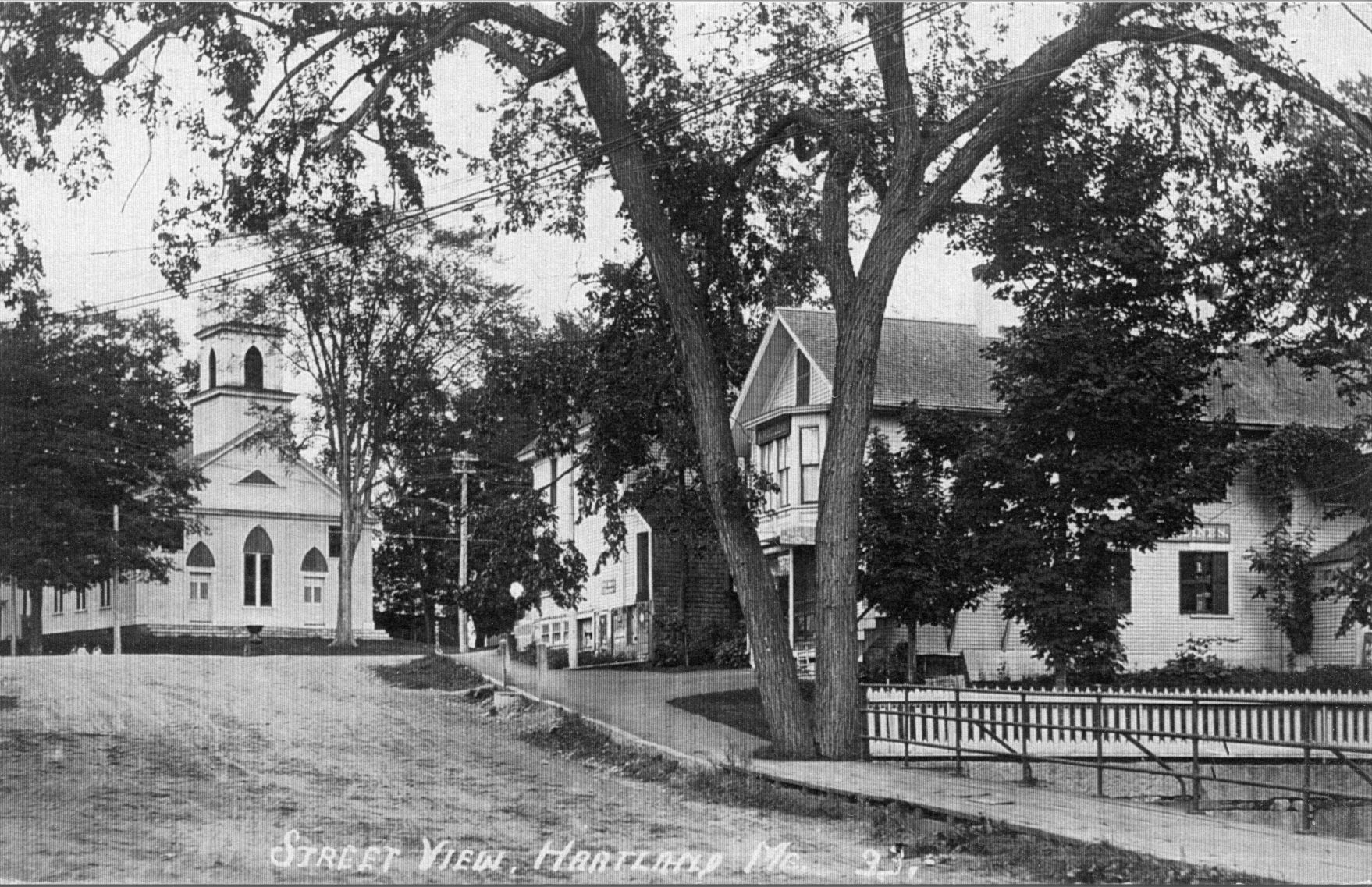
Main Street Raceway Bridge with A. W. Miller Drug Store followed by former James Fuller, Jr Store at Warren Square – c1916
*
World War I brought the American Woolen Company several lucrative U. S. Government contracts to supply troops with woolen blankets however the Hartland mill and many others across the country shut down numerous times in 1918 due to national coal shortages; sometimes for several days in a row.

American Woolen Mill
*
Between 1917 & 1919, every member of the Webb Family except Eva (Webb) Scott passed away leaving her as the only living descendant of her family line. Her father Nathan Webb and sister Cora (Webb) Shaw died in 1917, her sister Nina (Webb) Buck in 1918 and her mother Elmeda (Moor) Webb in 1919.
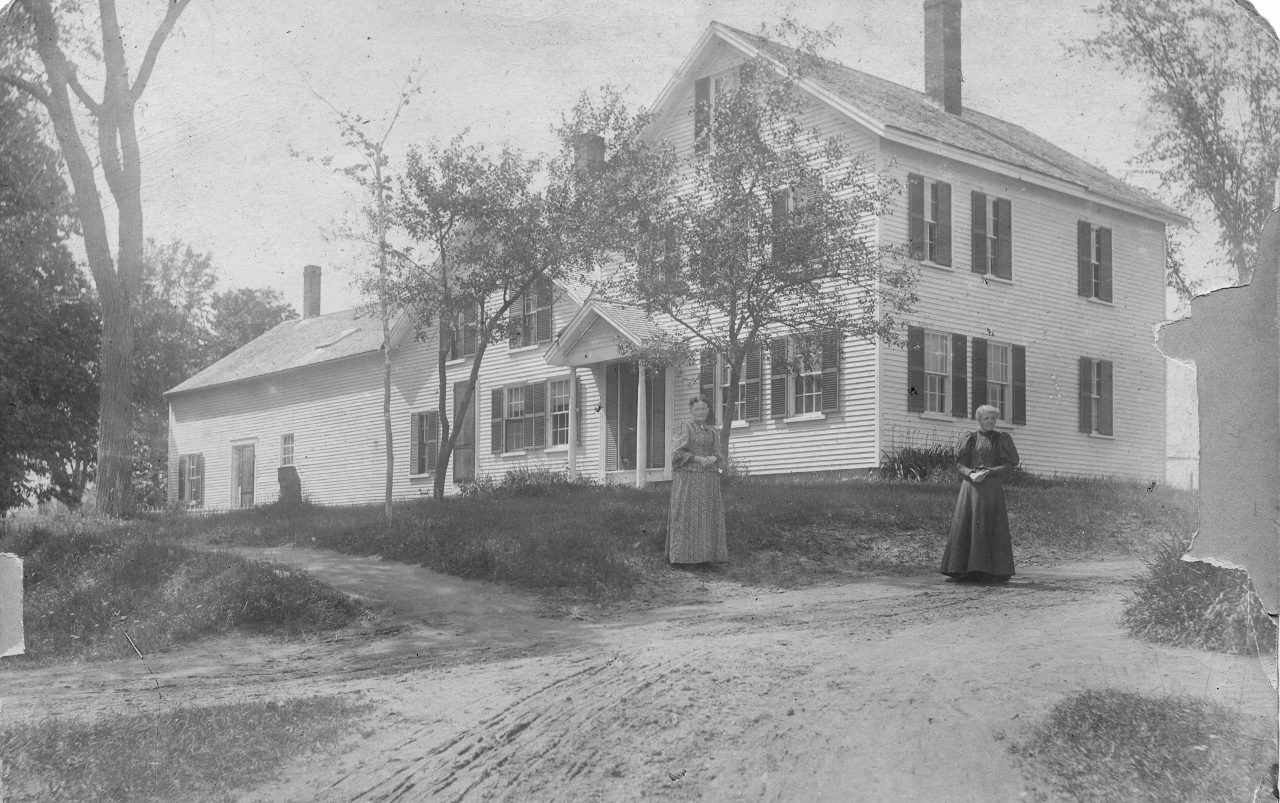
Eva (Webb) Scott with her mother Elmeda (Moor) Webb at the Webb and former James Moor Residence – c1918
*
In 1920, Lewis Henry Barden (1876-1960) and his 2nd wife Eda moved from Palmyra and opened their first store in Hartland renting the former A. W. Miller Drug Store on Main Street where they operated as Barden’s Cash Variety Store before moving the business to Commercial Street and reopening as Barden’s Economy IGA Store in 1930. One of the young men Barden employed at the store was Lloyd Vernon Cookson, Sr while he was attending Hartland Academy before his graduation in 1927.
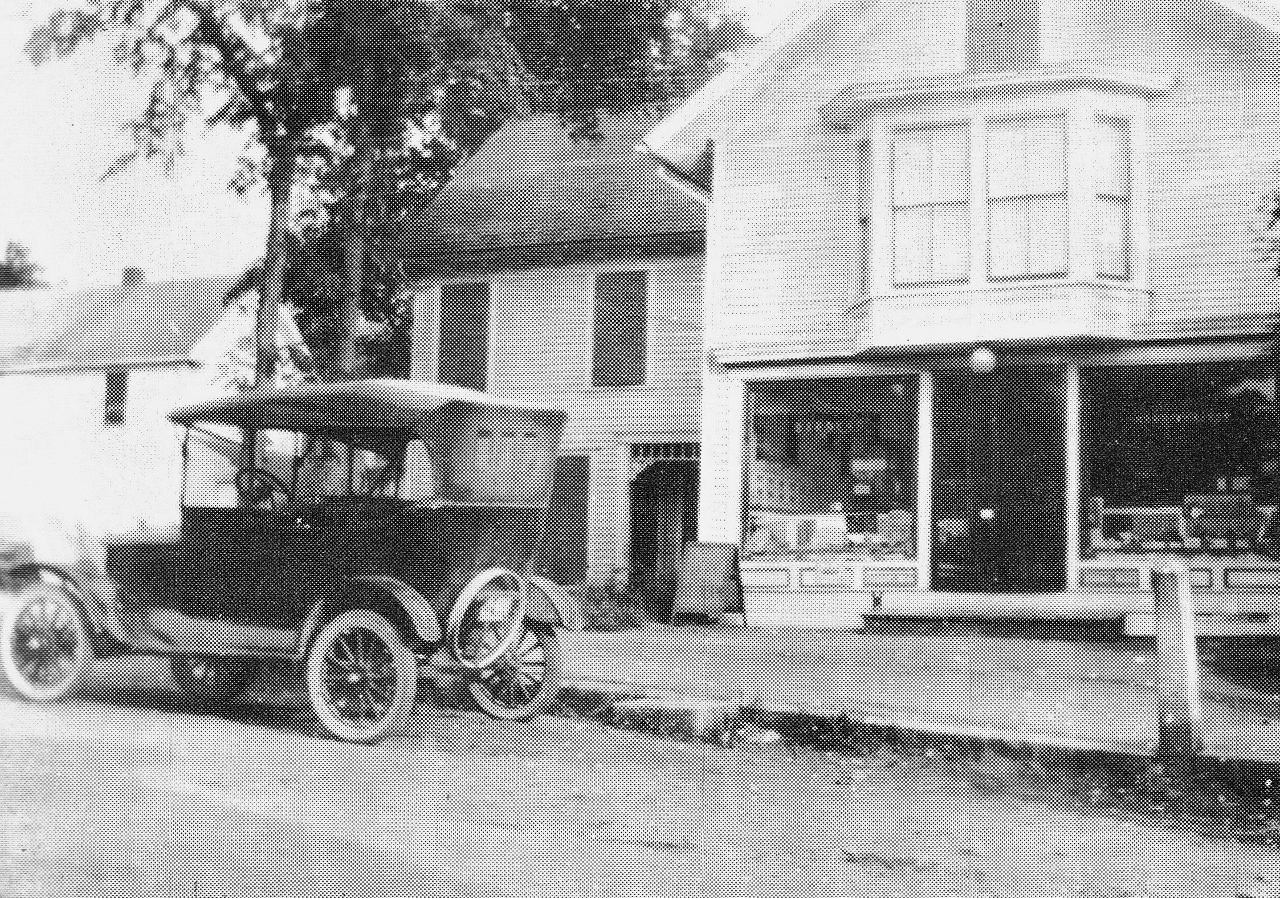
Barden’s Cash Variety Store at the former A. W. Miller Drug Store – 1920
*
Barden’s Cash Variety Store – “Bring Every Customer Back” we might say is the slogan of Barden’s Cash Variety Store, for this firm understands that repeat purchases on the part of their customers are sure signs that the policy, merchandise, value and service are generally up to the public’s standard. The test of a store is its ability to repeat the sale of an item of goods to a customer. This firm consisting of Lewis H. Barden and (his wife) Eda B. (Stafford) Barden of Hartland, study ways and means to bring the customer back by offering merchandise of standard value for the money. They understand that well gotten up show windows give an appeal side to their merchandise and attractive windows are an especial feature of this store. Here can be found in wide variety the thousand and one things that are daily needed, personally, or for the home and all at reasonable prices. We would mention a few of them all so well known to the people of this vicinity. Crockery ware in splendid selection; boots and shoes from the best houses; toilet articles that are most attractive as well as useful, including the best of powders and perfumes; stationery in a full and complete line; also cigars and tobacco of the best brands. Proprietary medicines are carried here that make this store a convenience in an emergency. Fruits here are fresh and inviting, confectionery and nuts, and not to forget the superior ice cream served which by many is pronounced the best in town. During the two years this firm has been in business they have proved they are adept in putting their ideas across in a store of real service to the people.” ~ Pittsfield Advertiser – October 18, 1923
*
Walter “Tidy” Davis Wheeler operated a jewelry store specializing in watch and clock sales and repairs in a small building on Main Street as early as 1919. The shop was located on corner of the future Hubbard Avenue on the side lawn area of the former Furbush residence. Tidy’s wife Mary (Gray) Wheeler also sold greeting cards and photographic equipment from the location. In 1920, the Furbush house was occupied by two families; Wayne Sprague of New York and the widower Ralph Wyman. In the 1930s, Tidy & Mary moved into one of the apartments.
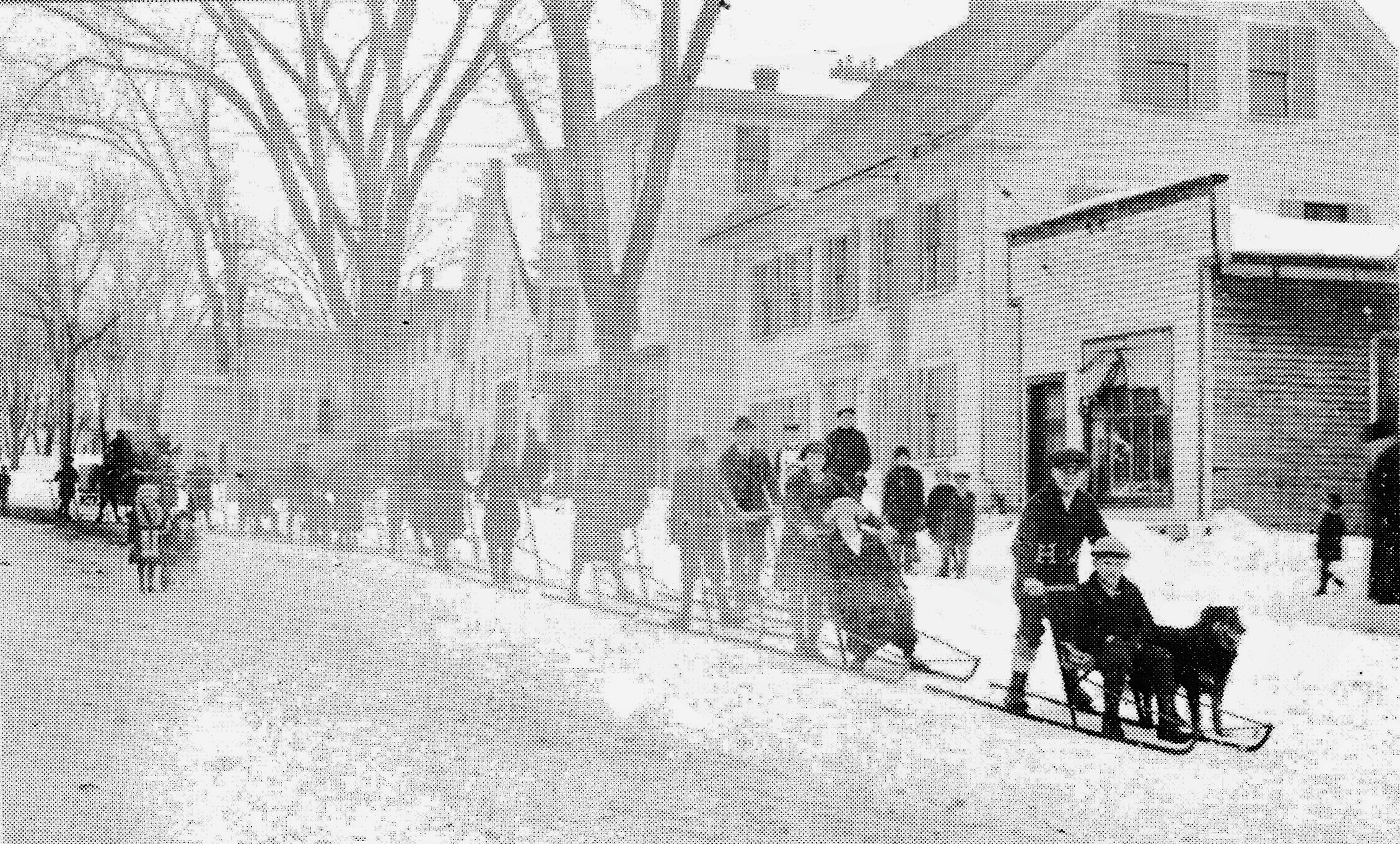
(L-R) Hartland Hardware Store | E. E. Latty Block & Post Office | Former Furbush Residence | Tidy Wheeler’s Jewelry Shop – c1925
*
W. D. Wheeler: Mr. Walter D. Wheeler is an expert at repairing watches, clocks and jewelry and carries a full line of these commodities and also optical supplies. In connection with this business he also has a retail coal business furnishing practically all of the coal used in town making his deliveries by team. His wife has the other side of the store and manages it herself. She really is a photographer for she takes pictures throughout the community and does amateur finishing and enlarging. She has a full stock of cameras and supplies, picture albums, view cards, greeting cards and many kinds of picture frames. ~ The Independent Reporter Skowhegan December 11, 1924
*
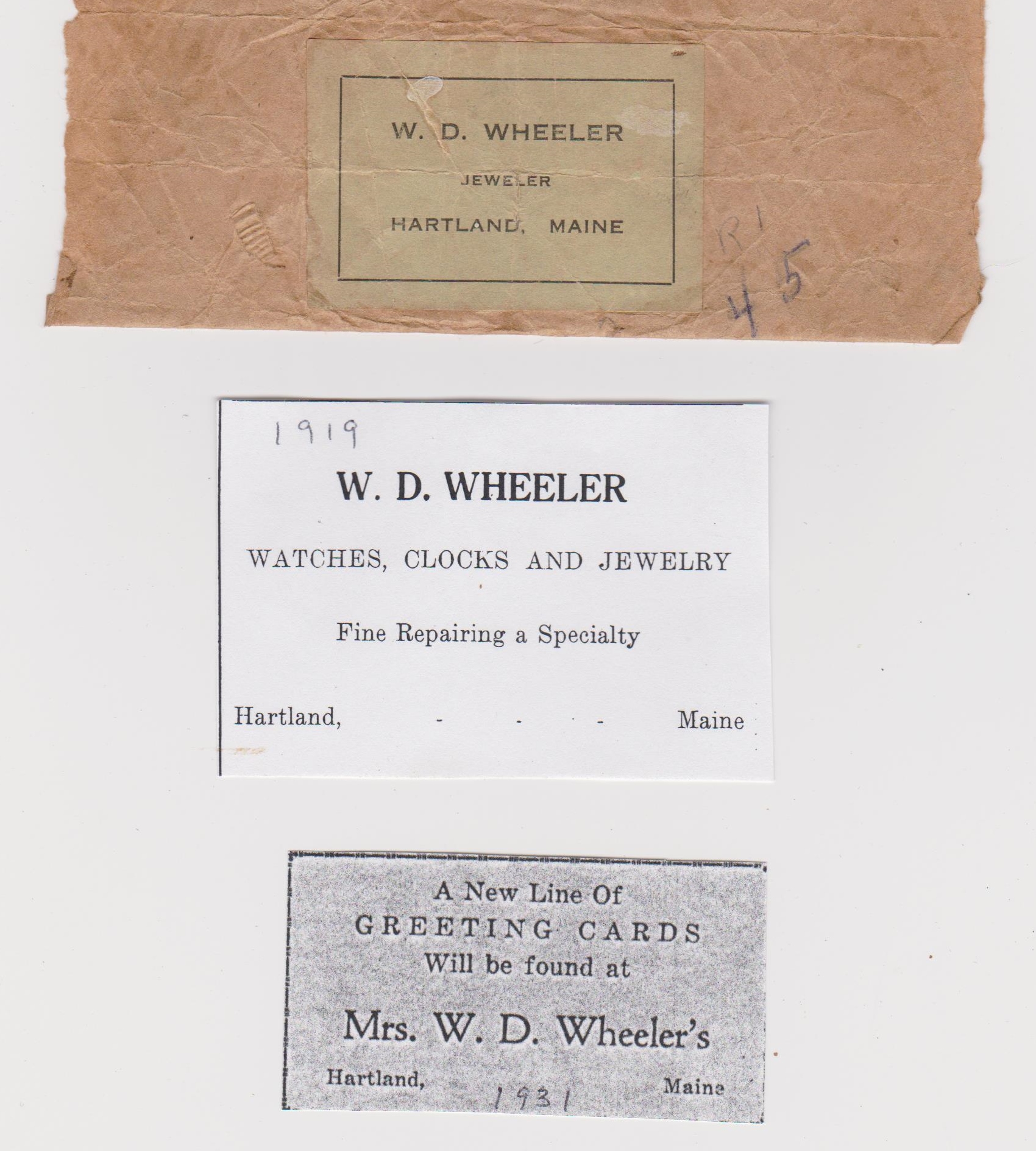
Tidy Wheeler’s Jewelry Shop Ads from The Ripple
(Donated by Raymond & Beverly Martin)
*
Asa Ladd moved Wheeler’s building across the street by 1943 and attached it to his house where it still stands today albeit slightly modified.
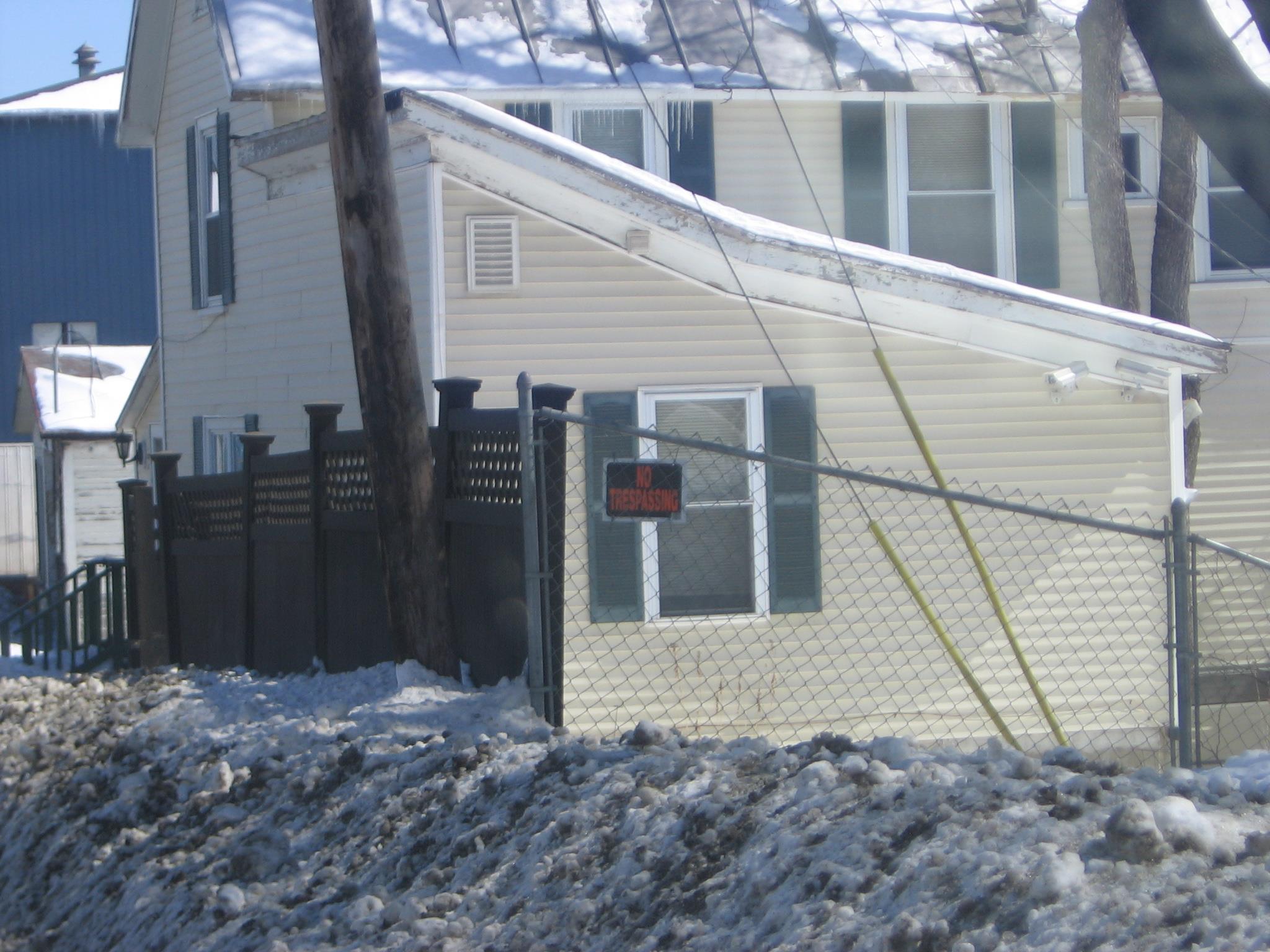
Tidy Wheeler Building attached to former Asa Ladd House – 2014
*
In 1922, the East Somerset Agricultural Society held its last fair before disbanding for good. While several factors likely contributed, most reports indicate one of the main reasons for the fair’s demise was caused by a well intended but financially faulted decision around 1902 to introduce a “Life Time Membership” admission policy.
Now instead of collecting gates fees annually from each person attending the fair, an entire family could buy annual admission for life for the price of what had been basically one year’s admission. It only took a few years before the annual take at the gate was nearly next to nothing and the monies gathered from the life time membership fee weren’t nearly enough to cover operating expenses.
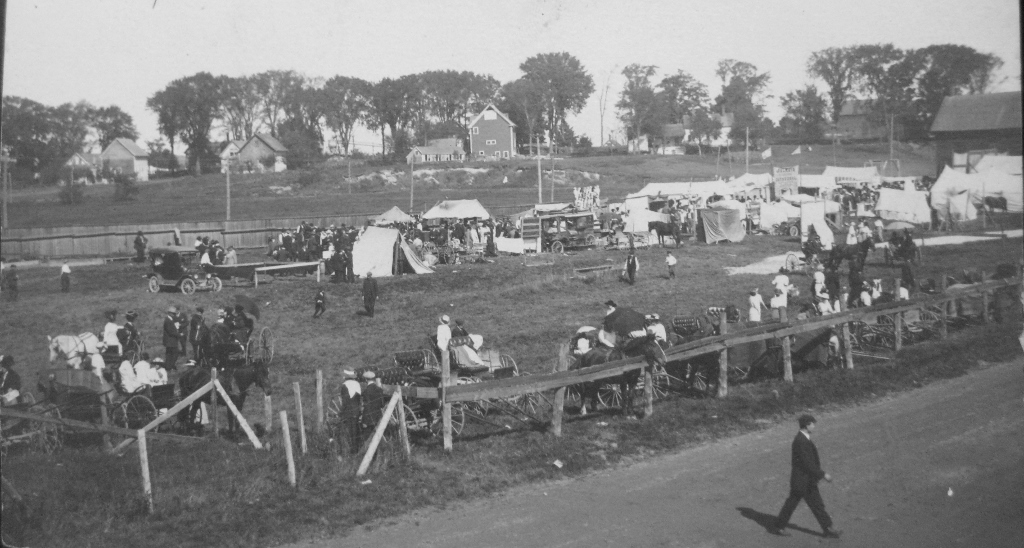
Parking Lot at one of the last fairs held by the East Somerset Agricultural Society on Outer Main Street – c1921
*
In the spring of 1920, Ensign Hubbard sold his E. F. Hubbard Grocery Store on Main Street to Sam Damon who announced plans to remodel the store and finish off the upstairs attic as living quarters although the latter did not happen and it remained a storage space. In December of 1924, Scott Barnes then purchased the store and was also reported to be making extensive repairs on the building. By 1929, the store was purchased by John W. Scott who partnered with his son-in-law Ellard Hebb by 1931 operating as Scott & Hebb Fancy Groceries, Fruits & Meats until 1945 when they sold the store to Wes Harrington.
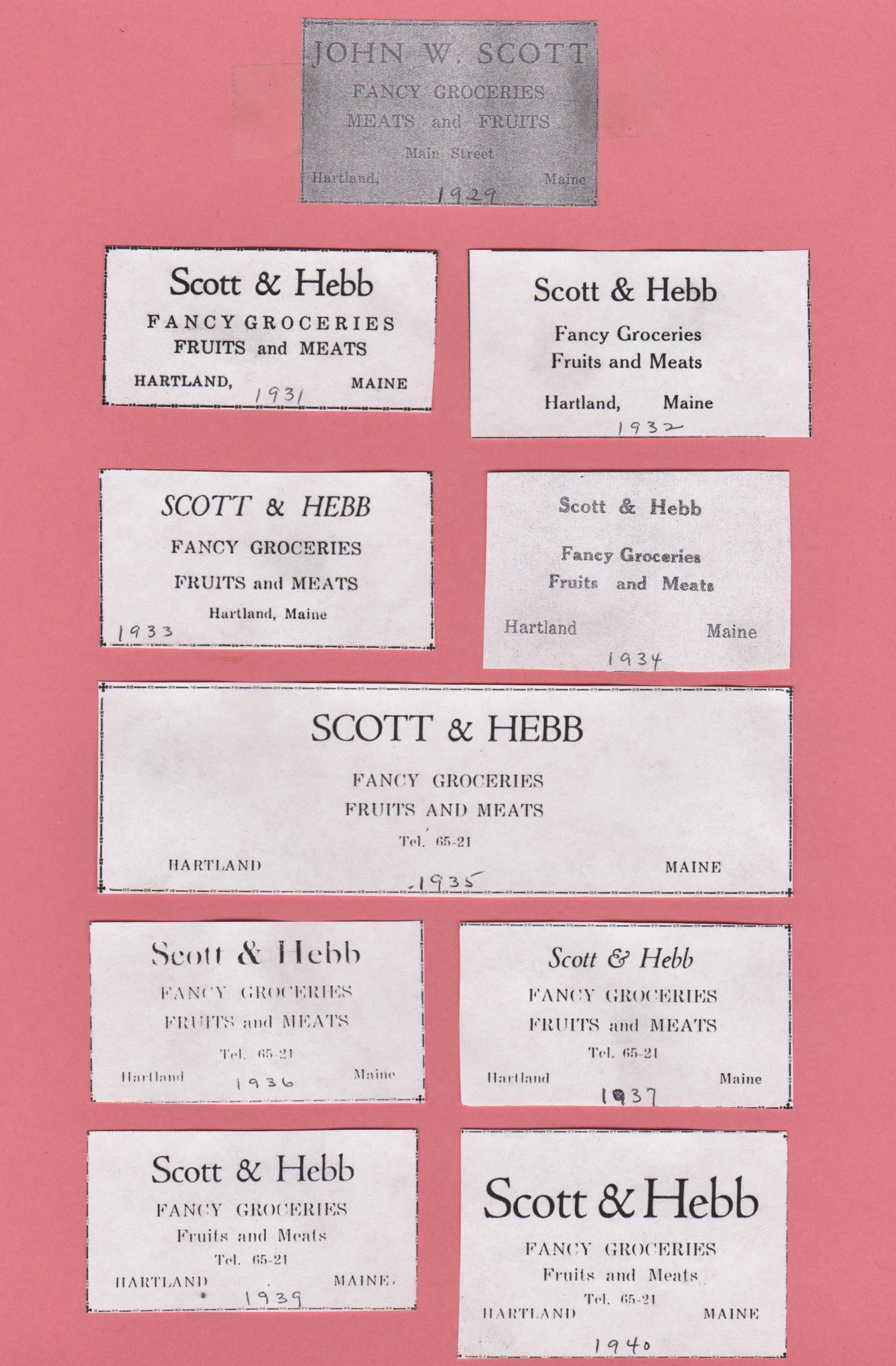
Scott & Hebb Fancy Groceries, Fruits & Meats Store Ripple Ads
(Donated by Raymond & Beverly Martin)
*
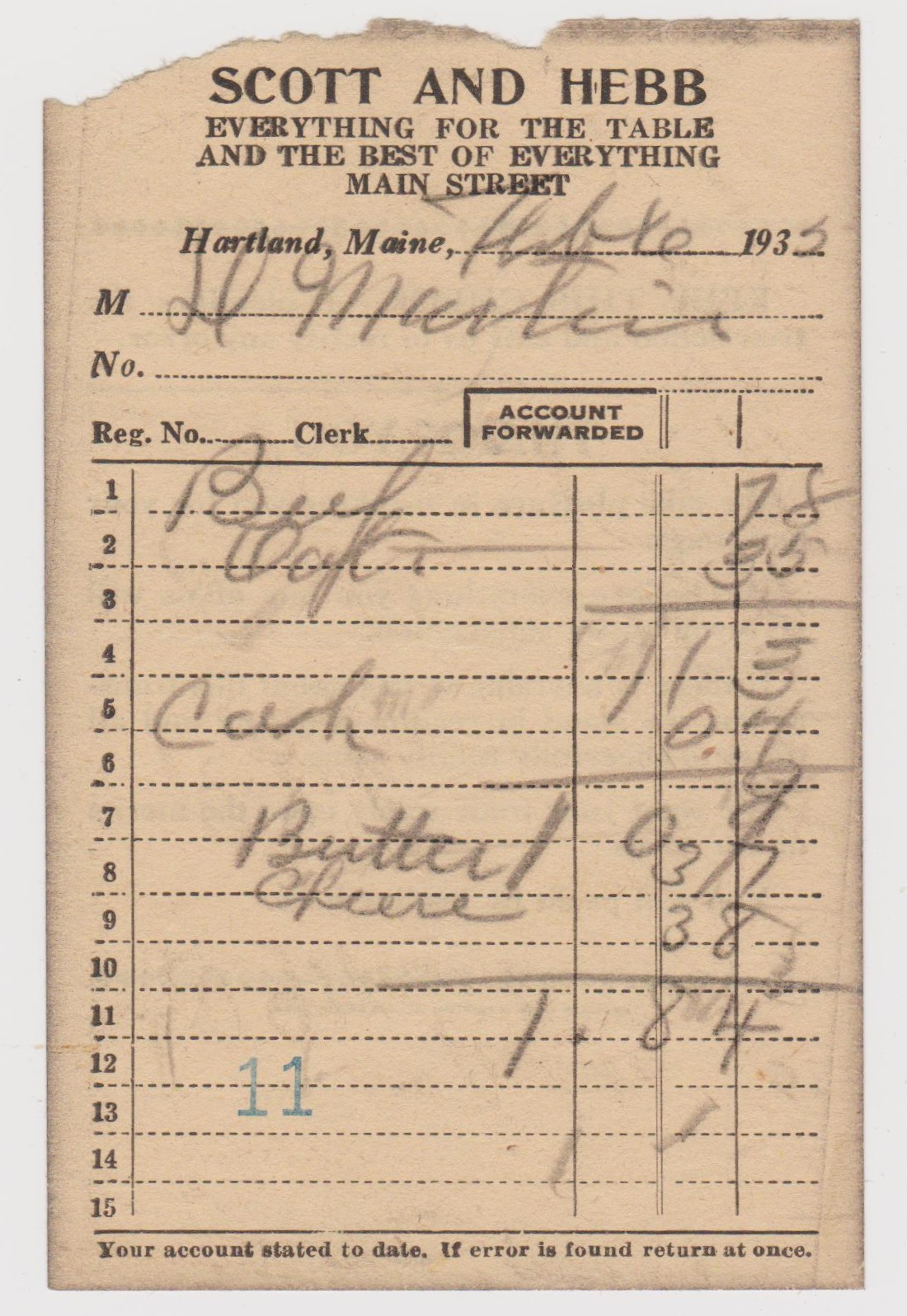
Charge Account from Scott & Hebb Store – 1933
*
Cary Carter Waterman of Auburn moved his family to Hartland in 1921 where he opened his business on Main Street operating as C. C. Waterman specializing in plumbing and plumbing supplies, electrical supplies, crockery, paints and gasoline engines. In 1925, he returned to Auburn with his family where remained until his death in 1965.
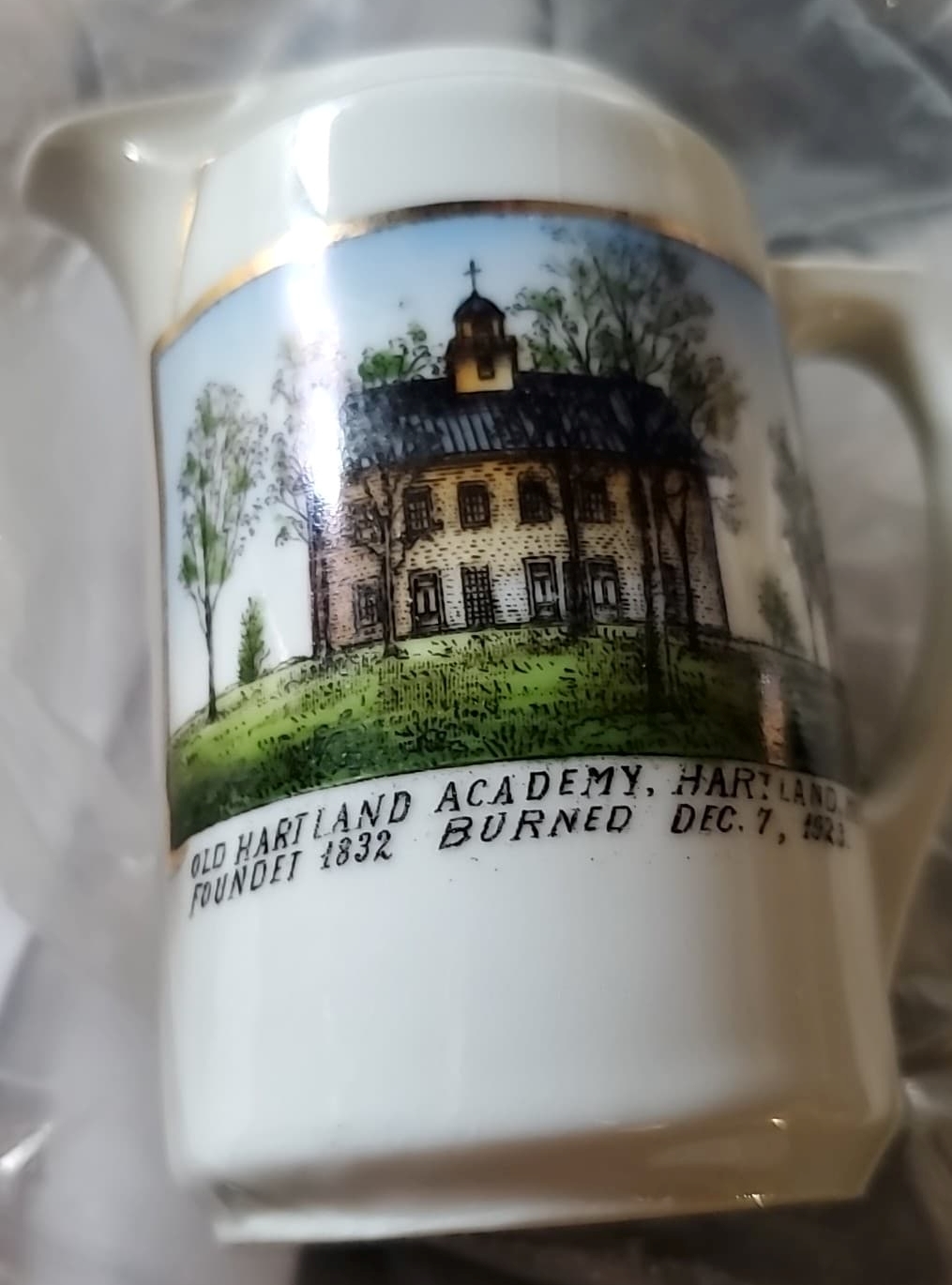
*
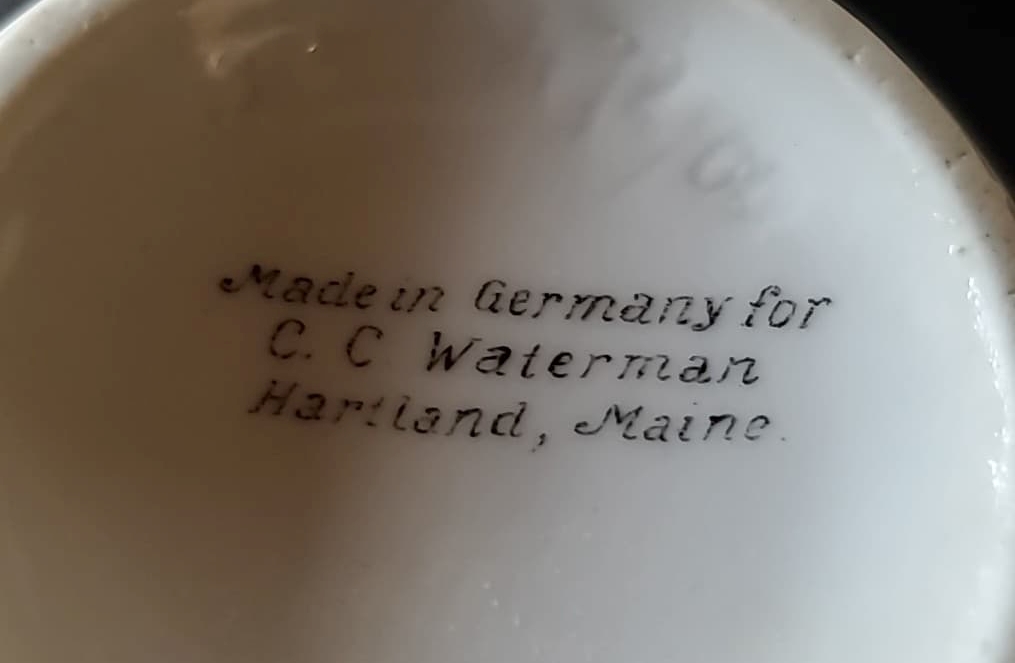
Hartland Academy Cream Pitcher made for C. C. Waterman – 1924
(Donated by Robin McCormack McNeil)
*
C. C. WATERMAN: A business which was established about three years ago, and which in that short space of time, has proven of decided benefit to the community is owned by Mr. C. C. Waterman. This store, which is centrally located, does a large business in plumbing and carries a large stock of plumbing supplies, electrical supplies, crockery and paints, the Clarion line of ranges and furnaces, etc. One of the specialties of this establishment is the handling of the famous Sandwich Gasoline Engine which has so many uses and which is rapidly becoming known as the standard gasoline engine in these parts. Mr. Waterman, who personally supervises all jobs, is prepared to undertake any size job in his line and is willing at all times to furnish estimates on any undertaking dealing with his particular business, so when the sanitary or heating arrangements of your home need attention it is only necessary to get in touch with this shop or if an estimate is required on the installation of plumbing, heating, ventilation systems or drainage, it will, be cheerfully given by them. This concern possesses every facility to handle large or small contracts and a large percentage of this type of work in Hartland and surrounding territory have been done by Mr. Waterman and his efficient assistants. ~ The Independent Reporter Skowhegan December 11, 1924
*
1923 was an exceptionally tough year in Hartland as three disastrous events occurred over the course of the year beginning with the total loss of the Grange Hall on Seekins Street by fire in February. With some 200+ Grange Members, the loss was felt by many of Hartland’s citizens who were active with the Grange.
In late April, The Great Flood of 1923 caused extensive damage in the Lower Dam area including the American Woolen Mill and other businesses as well as damage to residences and businesses around the Upper Dam.
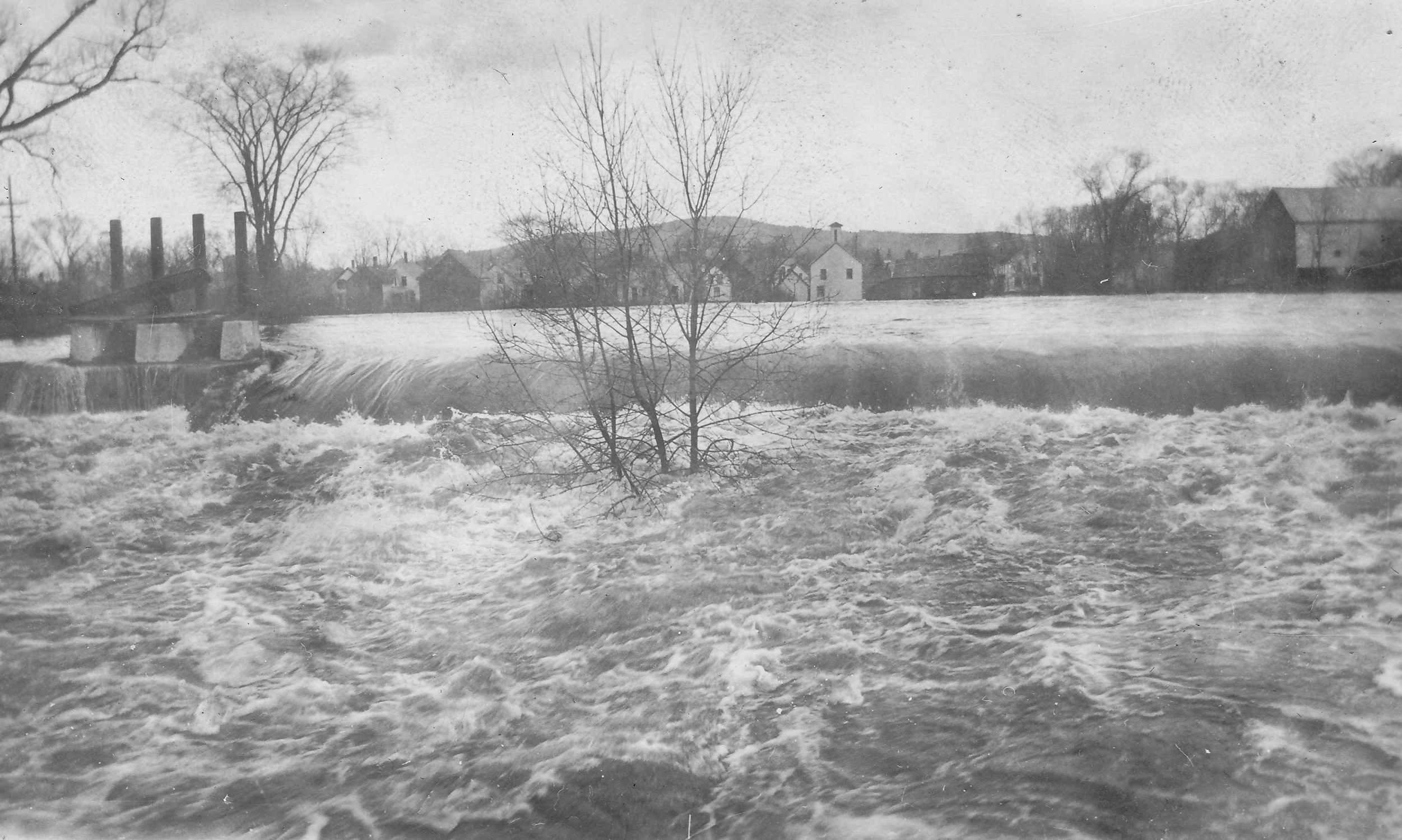
Lower Dam – Great Flood of 1923
*
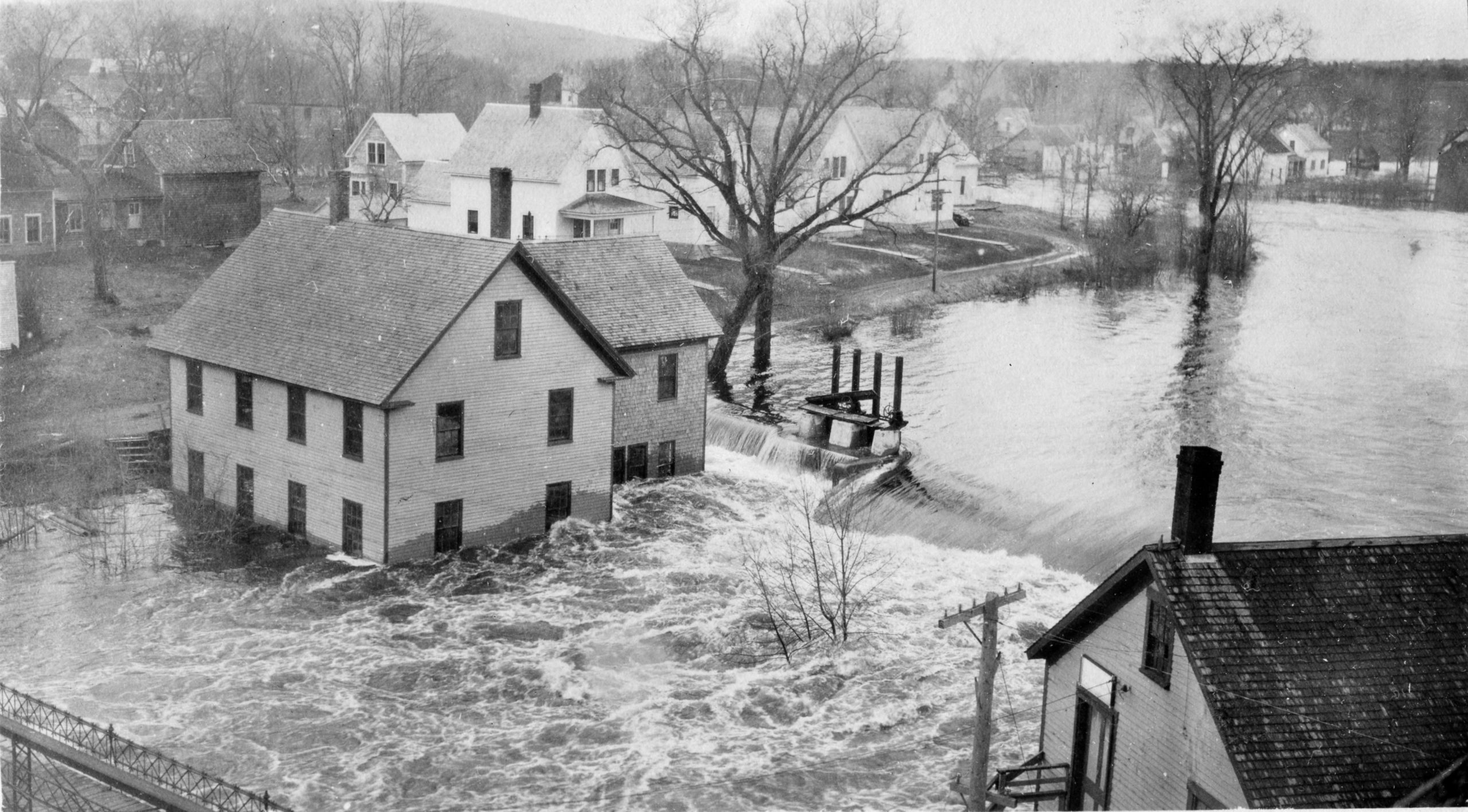
Lower Dam at Main Street Bridge – Great Flood of 1923
*
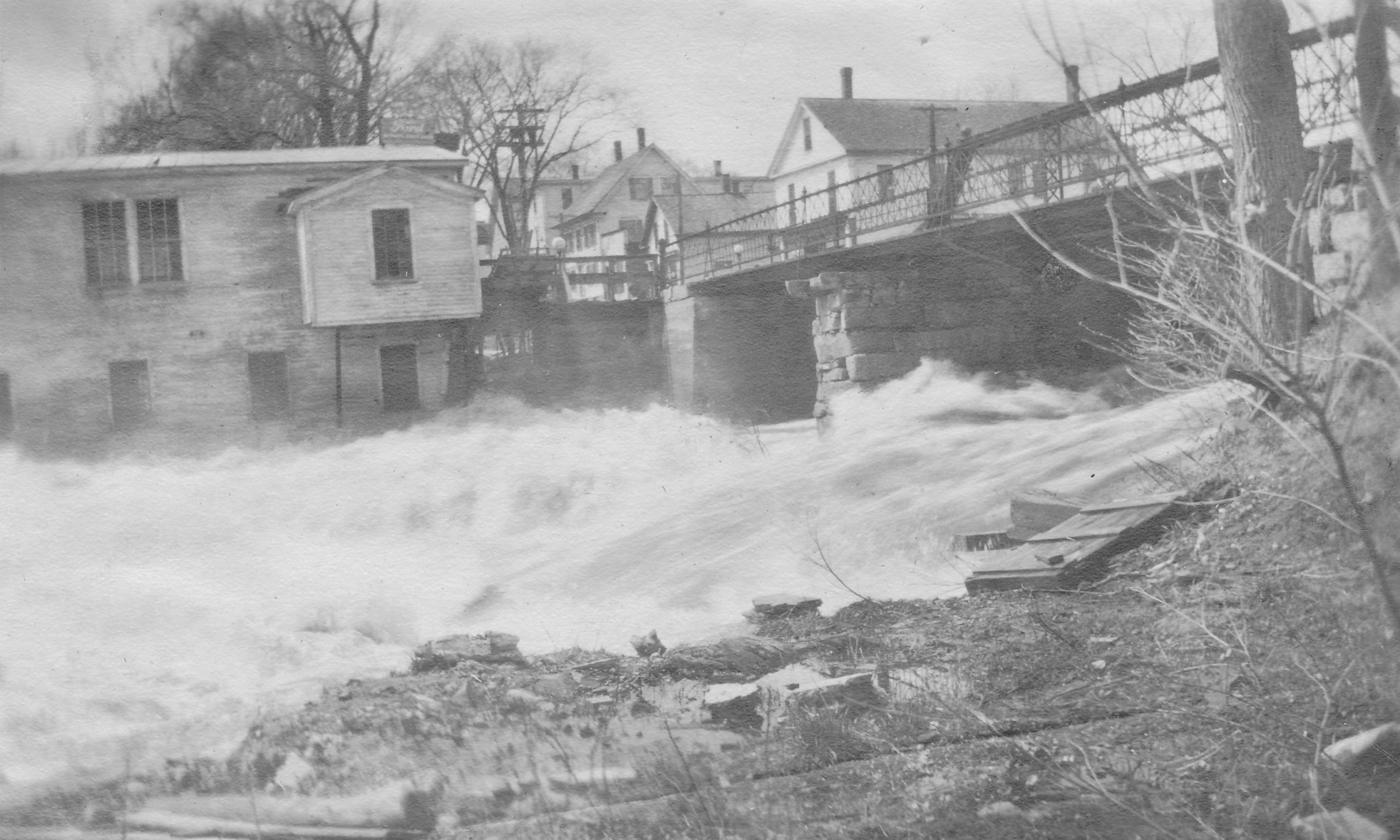
Below the Main Street Bridge – Great Flood of 1923
*
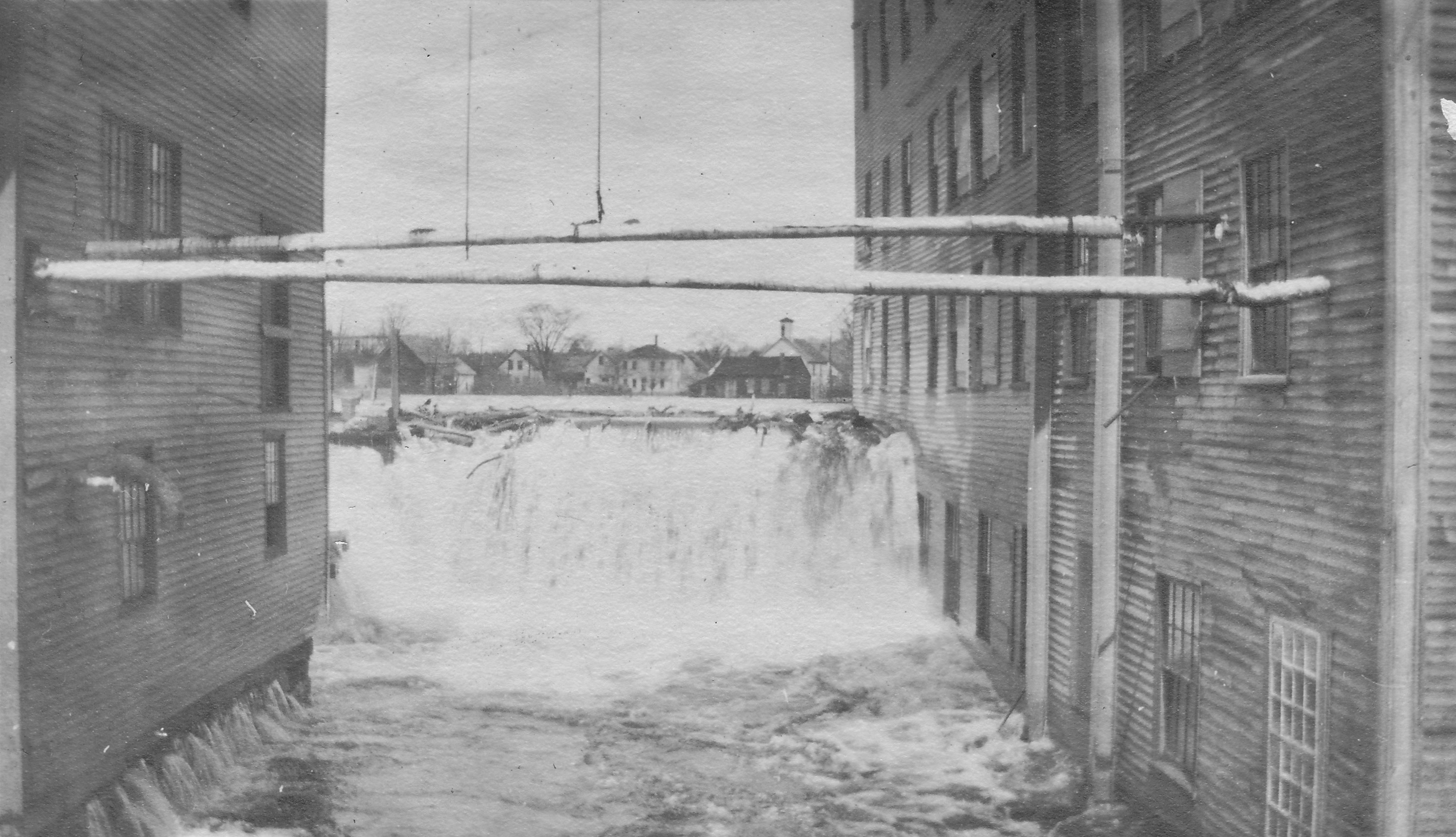
Lower Dam from Main Street Raceway Bridge – Great Flood of 1923
*
The conclusion of the infamous year of 1923 was marked by the loss of Hartland Academy when it was destroyed by fire on December 7th.
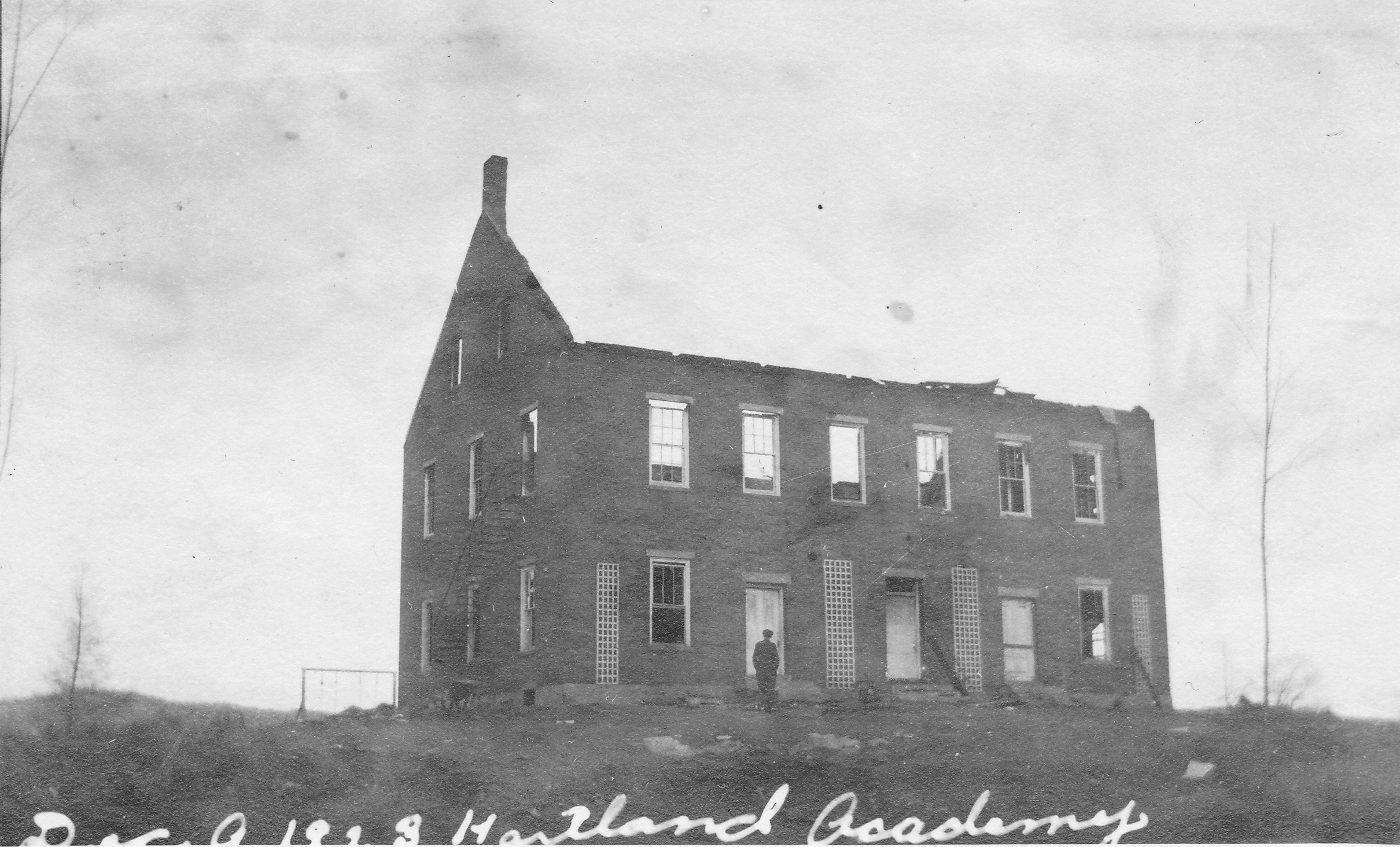
Aftermath of the fire at Hartland Academy taken on December 9, 1923
*
Soon after Lewis H. Barden opened his Barden’s Cash Variety Store in 1920, the new Davis & Webber Block was built next door in Warren Square by Fred & Lena (Webber) Davis and her brother Perley Webber. Some 20 years later Barden would purchase the Davis Block and open his 3rd store location there in 1951.
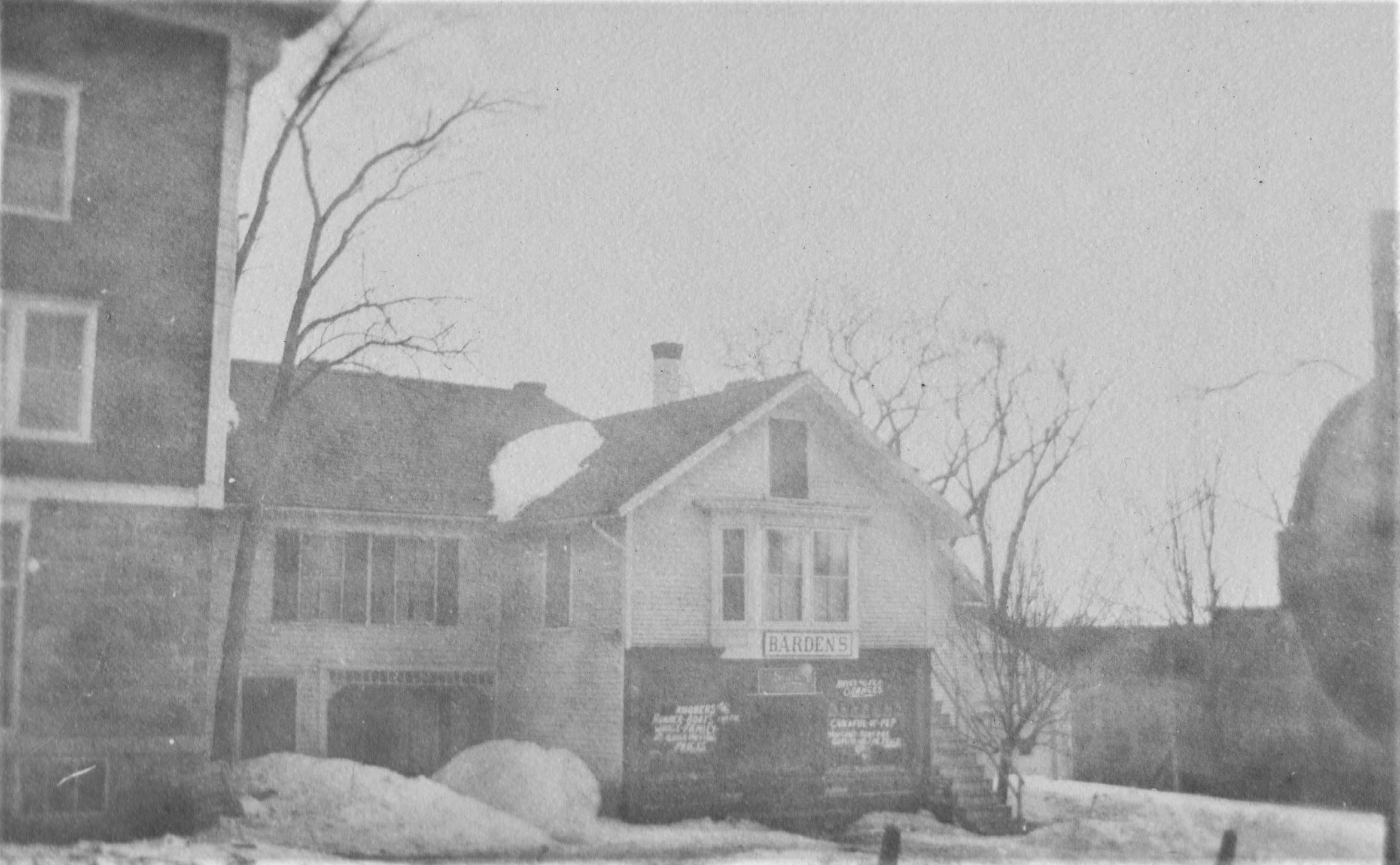
Barden’s Cash Variety Store next to the new Davis & Webber Block – 1925
*
For the next few years, the American Woolen Company operated successfully employing a couple of hundred people from Hartland and surrounding towns. The woolen goods market remained strong following World War I and further local investments were made by the company. Census Reports for Hartland from 1920 and 1930 show numerous people working at the woolen mill; often with several family members employed there, too.
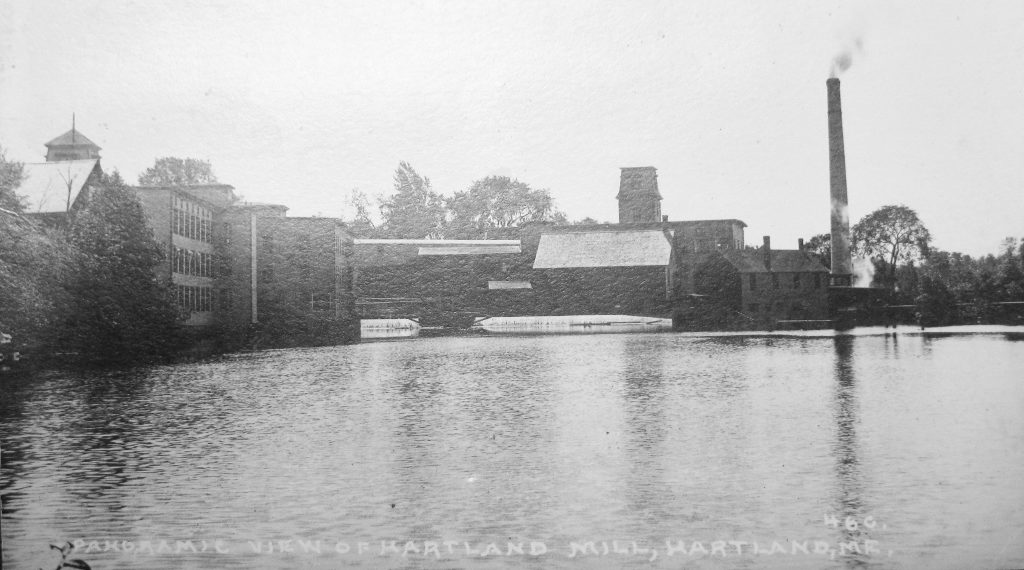
American Woolen Company from Mill Pond
*
In early 1925, Harry Randlett installed gas pumps at his hardware store and by the end of the year had built a protective canopy for his gas customers. By the mid-1930s, Main Street was home to 3 gas filling stations located at Hartland Hardware, Hartland Grain & Grocery and a new Gulf Full Service Station on the corner of Pittsfield Avenue at the former Page Homestead.
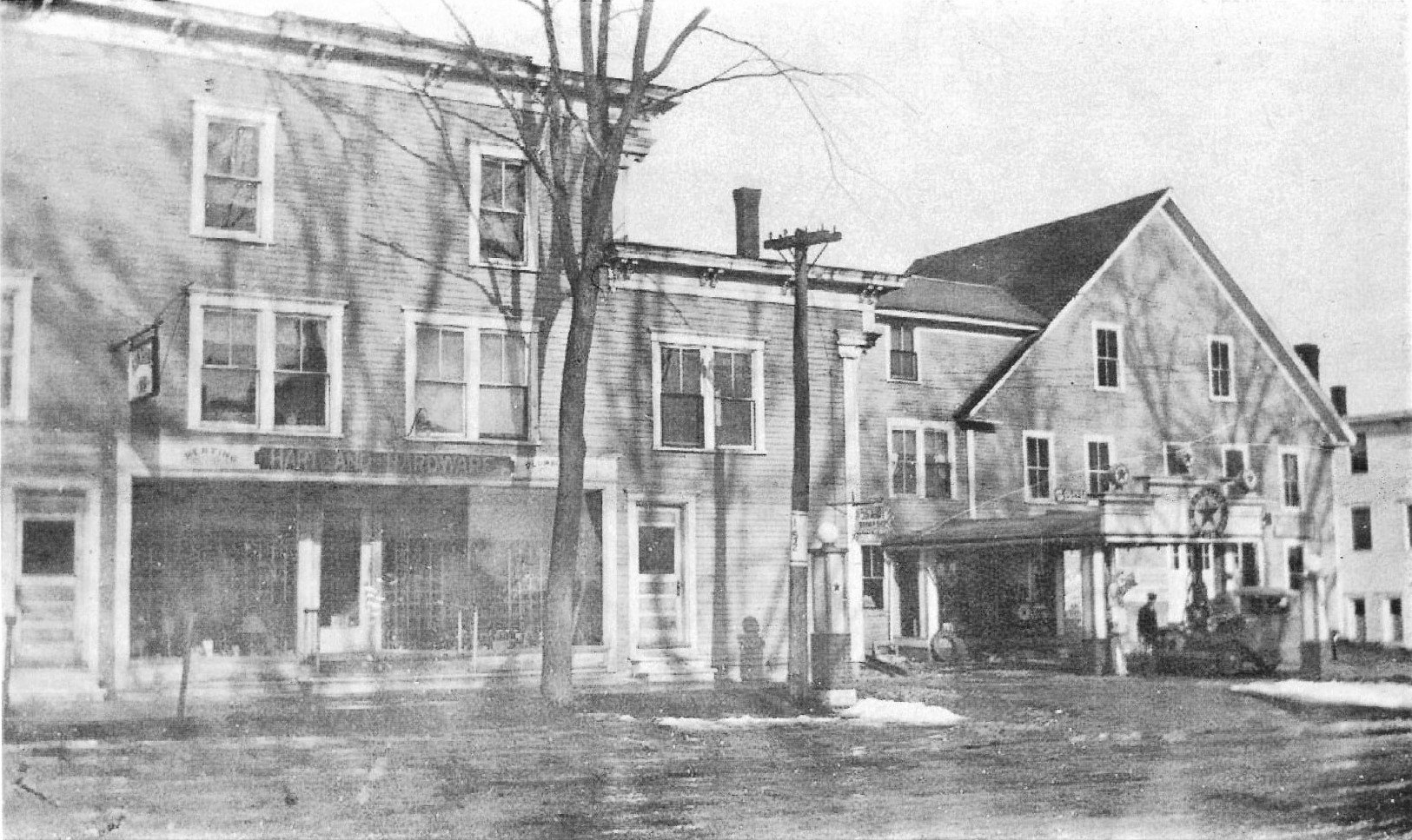
Gas Pumps & Canopy at Hartland Hardware Store
*
Following the loss of their regular meeting venue at the Grange Hall to fire in February of 1923, the Sebasticook Lodge No. 141 Knights of Pythias acquired the former L. B. Wheeler Store on Outer Main Street to become their new permanent home.
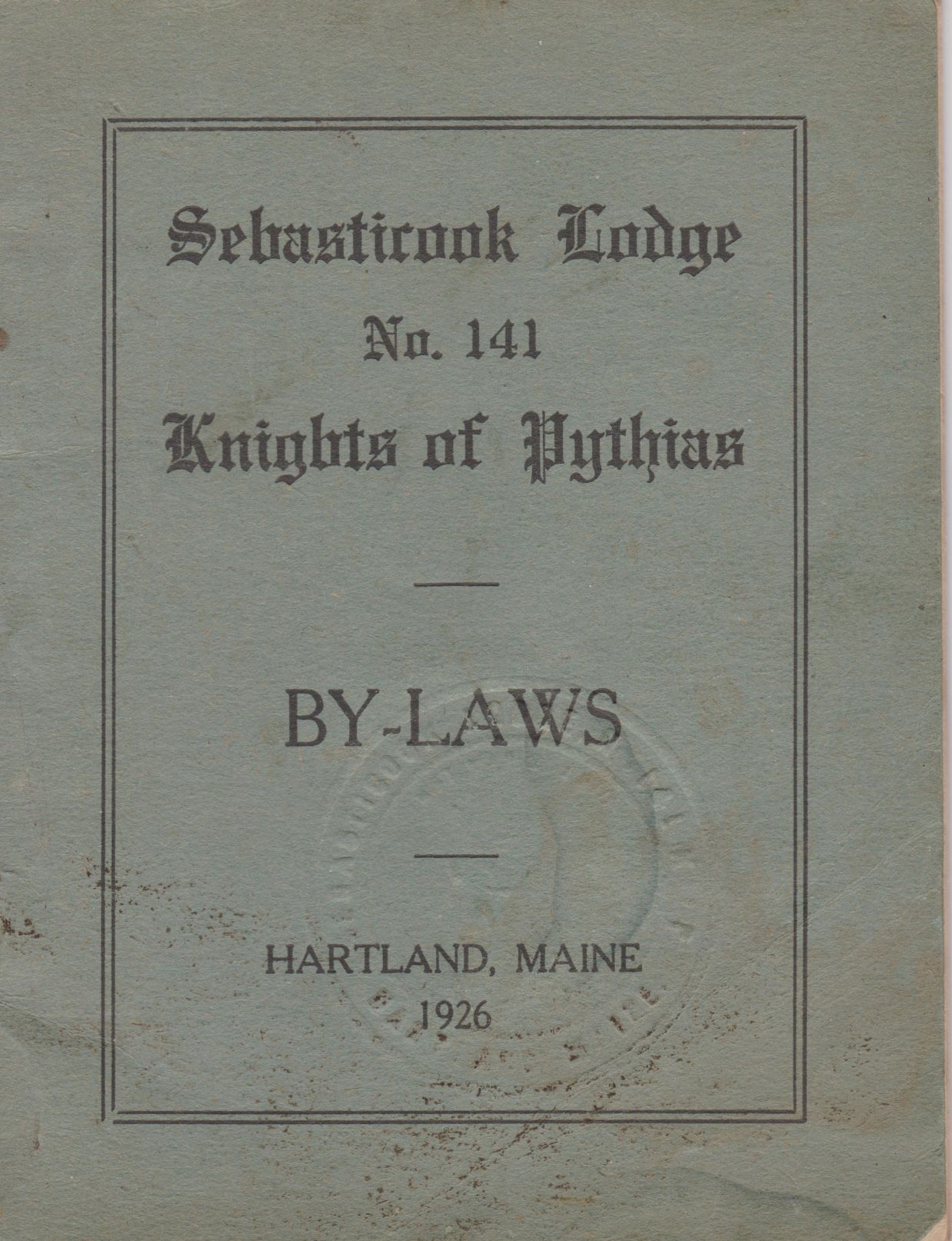
(Donated by Gerald & Pat Martin)
*
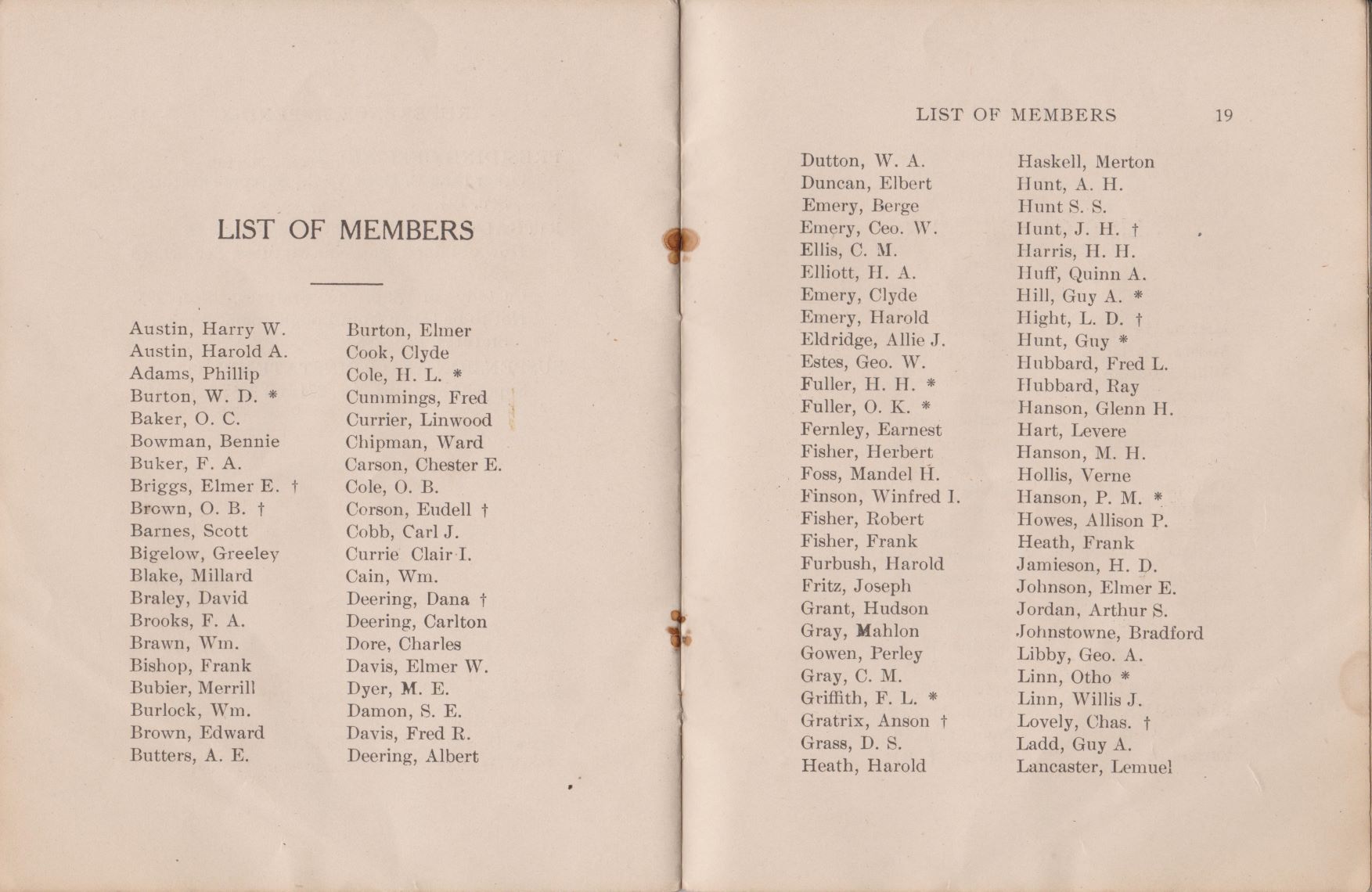
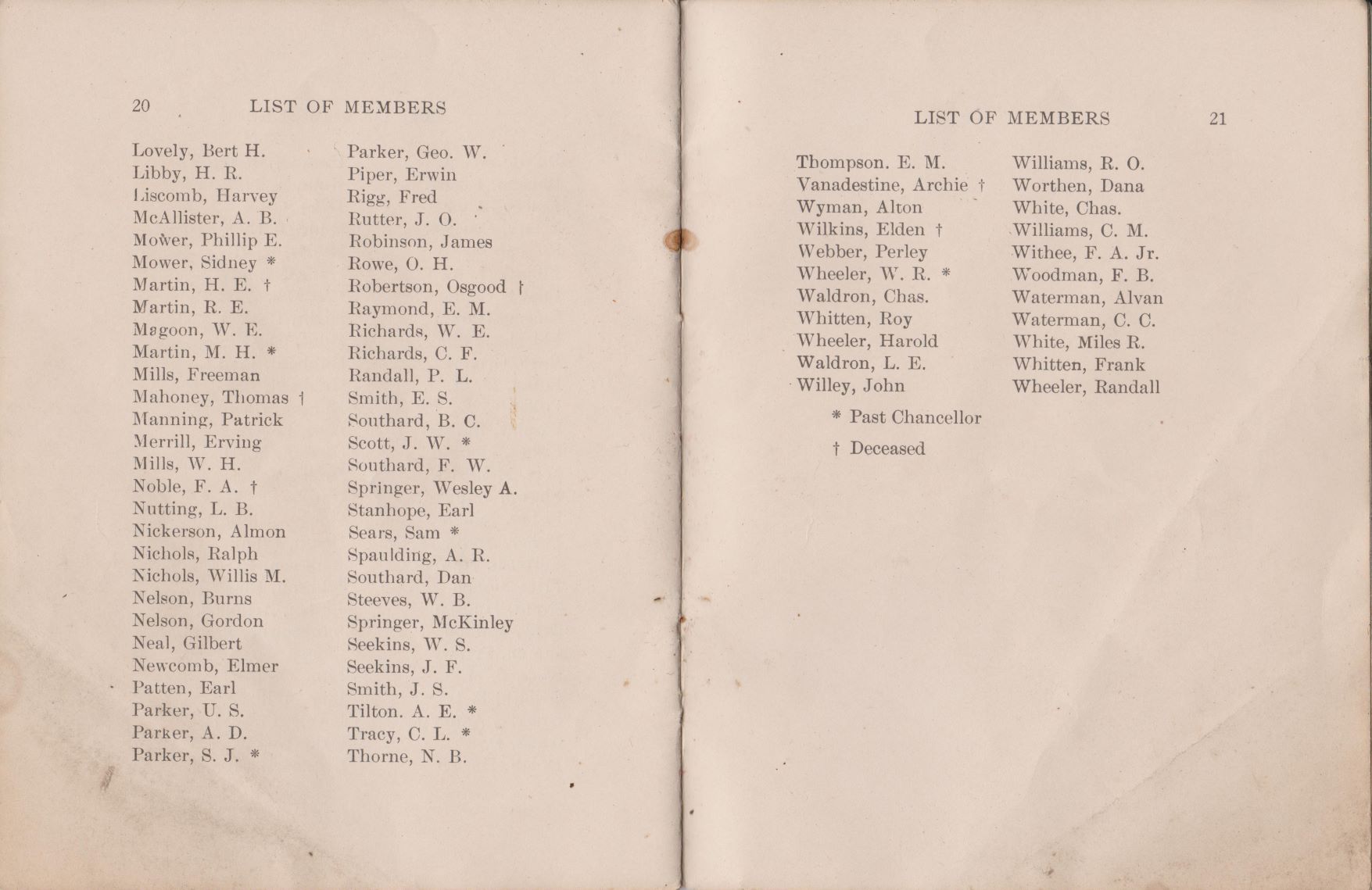
Members of Sebasticook Lodge No. 141 Knights of Pythias – 1926
*
In 1930, Lewis H. Barden leased the former Walter E. M. Seekins Store on Commercial Street from Harry Sterns and moved his store business there. Soon after, Ada (Seekins) Miller and her sister Bertha (Seekins) Davis opened a secondhand clothing store in the former Barden store building on Main Street. Ada married Albert Miller’s nephew Benjamin I. Miller. In 1943 the building and lot were still owned by the Estate of Albert W. Miller.
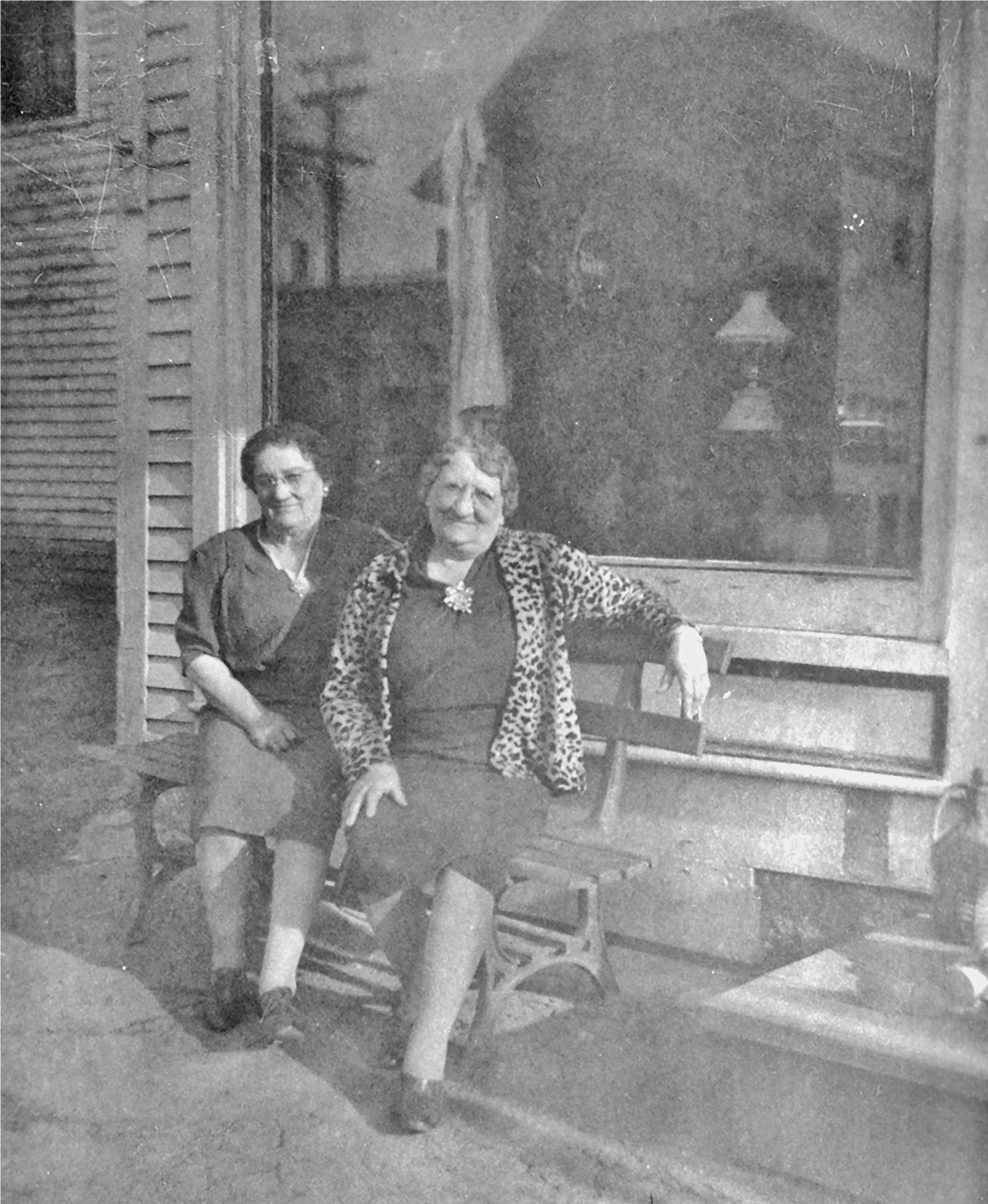
Ada (Seekins) Miller & Bertha (Seekins) Davis at the former A. W. Miller Drug Store – c1930
*
Overall, the American Woolen Company business venture in Hartland had gone well until October 29, 1929; now infamously known as “Black Friday”. While the 1929 Stock Market crash didn’t adversely affect Hartland immediately, the resulting national Great Depression brought the first signs of trouble to town in 1931 when the American Woolen Company requested a large tax break on their mill holdings in Hartland because of their own overall economic woes throughout all their New England operations.
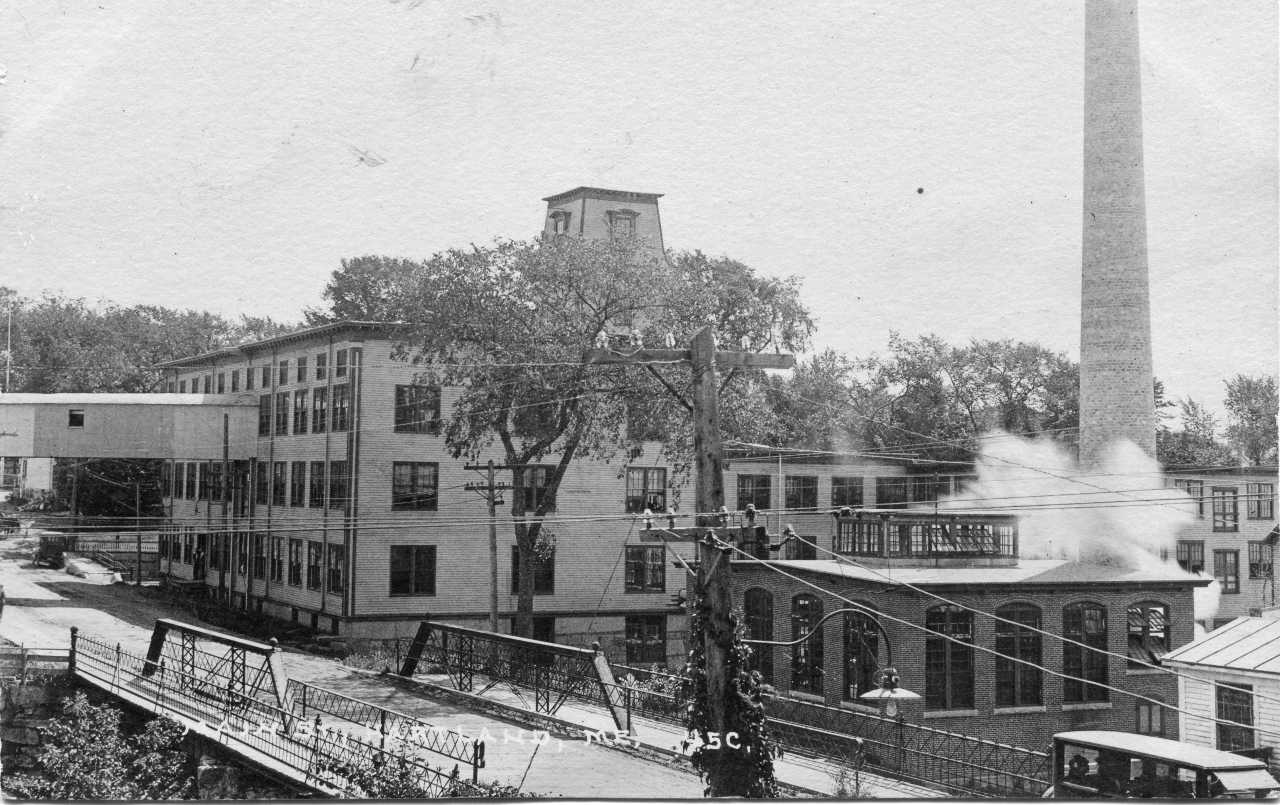
American Woolen Company with Main Street Steel Bridge
*
Eva (Webb) Scott remained at her parents former home on Main Street until her death on January 6, 1932. In her Will, she bequeathed the house along with the property to be used specifically as a non-profit general hospital for area residents.
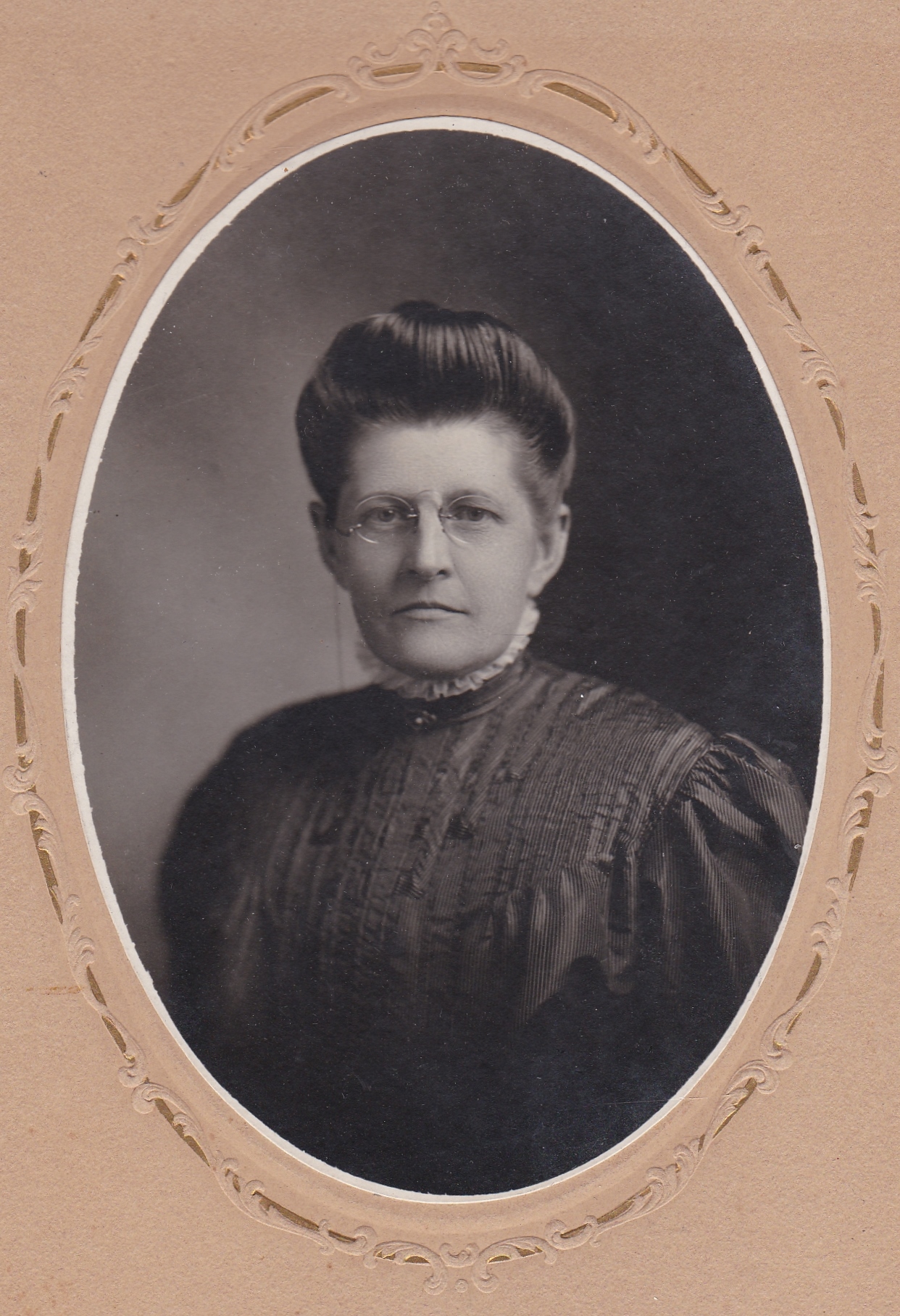
Eva (Webb) Scott (1862-1932)
*
The Executor of Eva (Webb) Scott’s Will was Dr. Charles A. Moulton who immediately began the process of converting the 2nd house James Moor built in 1847 into a hospital. On October 12, 1932 Scott-Webb Memorial Hospital opened its doors with six patient rooms with Dr. Moulton as its Head Physician.
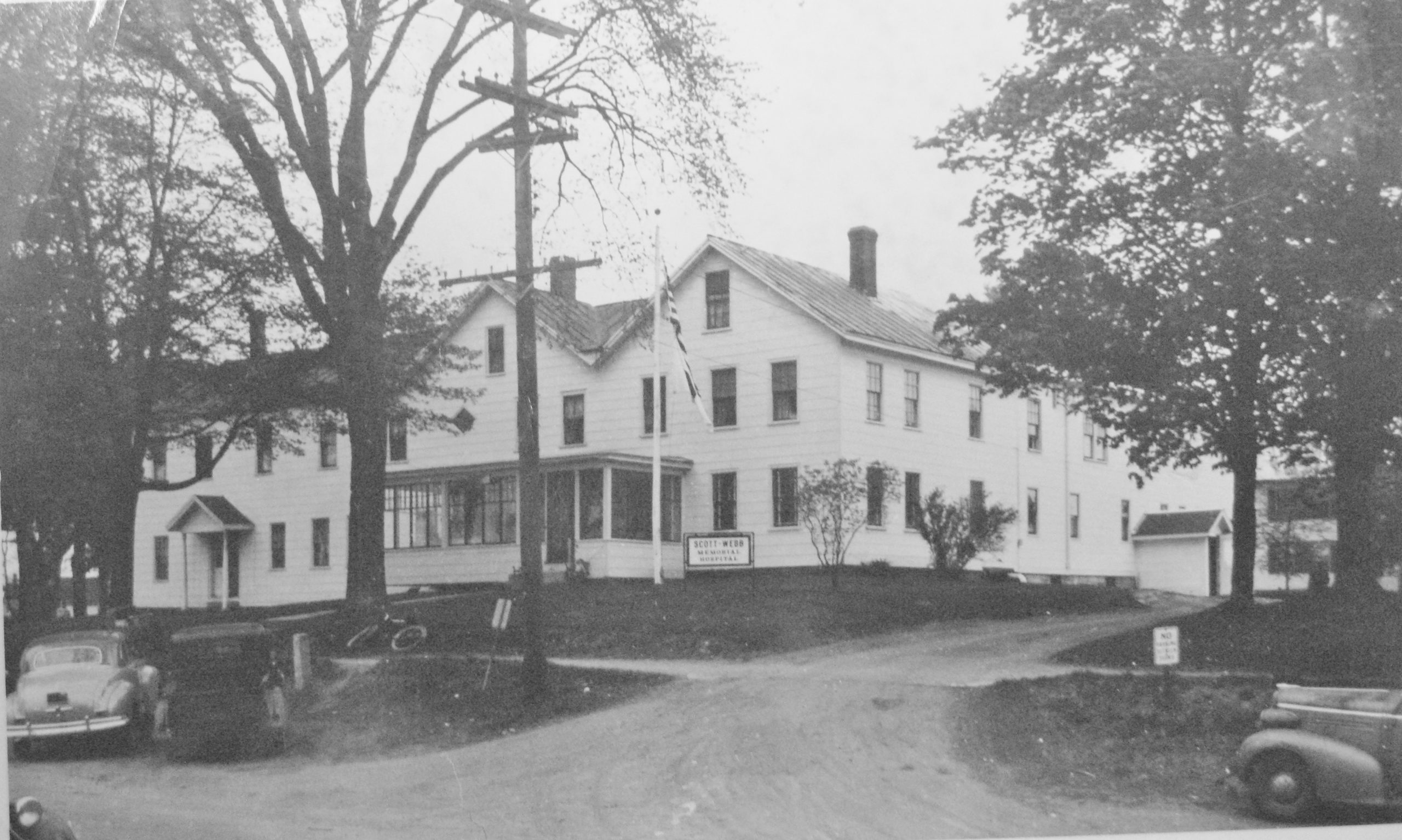
Scott-Webb Memorial Hospital following renovations – 1936
*
Although the American Woolen Company made some efforts keep the mill open, in 1932 they officially announced they would close the Hartland location and surrender all their property holdings and soon filed for bankruptcy. Shortly after their bankruptcy filing, much of the vast real estate holdings it had purchased in Hartland from the former Linn Manufacturing Company and Archibald Linn’s Estate were sold off at the Great Auction held on December 2, 1932.
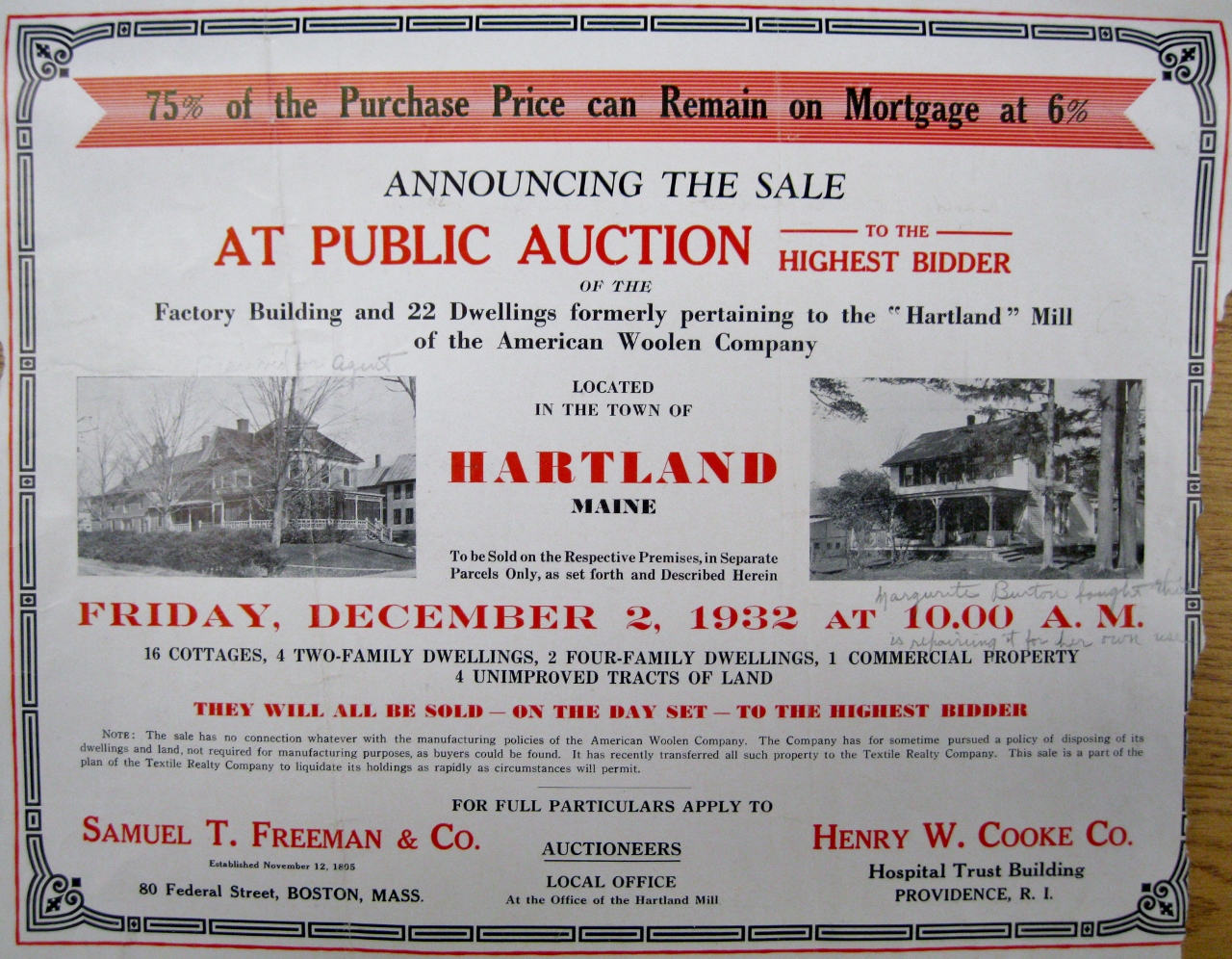
Great Auction of 1932 Flyer Cover
(Original Flyer owned by Fred Libby – Photo courtesy of Wayne Libby)
*
The auction did not include the 2 main mills or several of the smaller buildings on the mill property which were surrendered to the town but some 27 houses and properties remained including two large locations on Main Street as noted below.
*
18. NO. 37 MAIN STREET: Approximately 14,700 square feet of land with two-and one-half-story frame two family dwelling having six rooms to each family, electricity, toilets. (Purchased by Alton Leadbetter for $725 – Former G. W. Furbush Store Building)
19. NO. 32 MAIN STREET: Approximately 21,000 square feet of land with one and one-half story frame cottage having five rooms, also large barn. (Purchased by Asa Ladd for $450 – Former Caroline Prescott House & Lot)
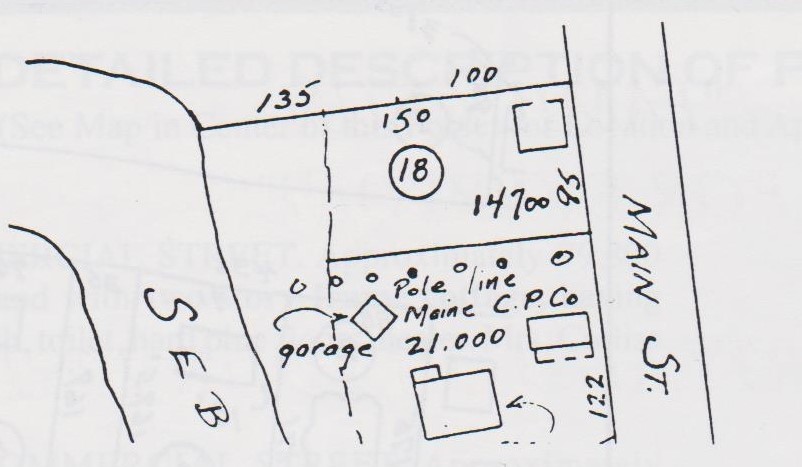
Main Street Lots #18 & # 19 from the Great Auction of 1932 Flyer
*
The John Page Homestead at the corner of Main Street and Pittsfield Avenue was inherited by his son John S. Page following his father’s death in 1898. He and his 2nd wife Sarah Stinchfield remained at the home into the 1920s where she passed away in 1924.
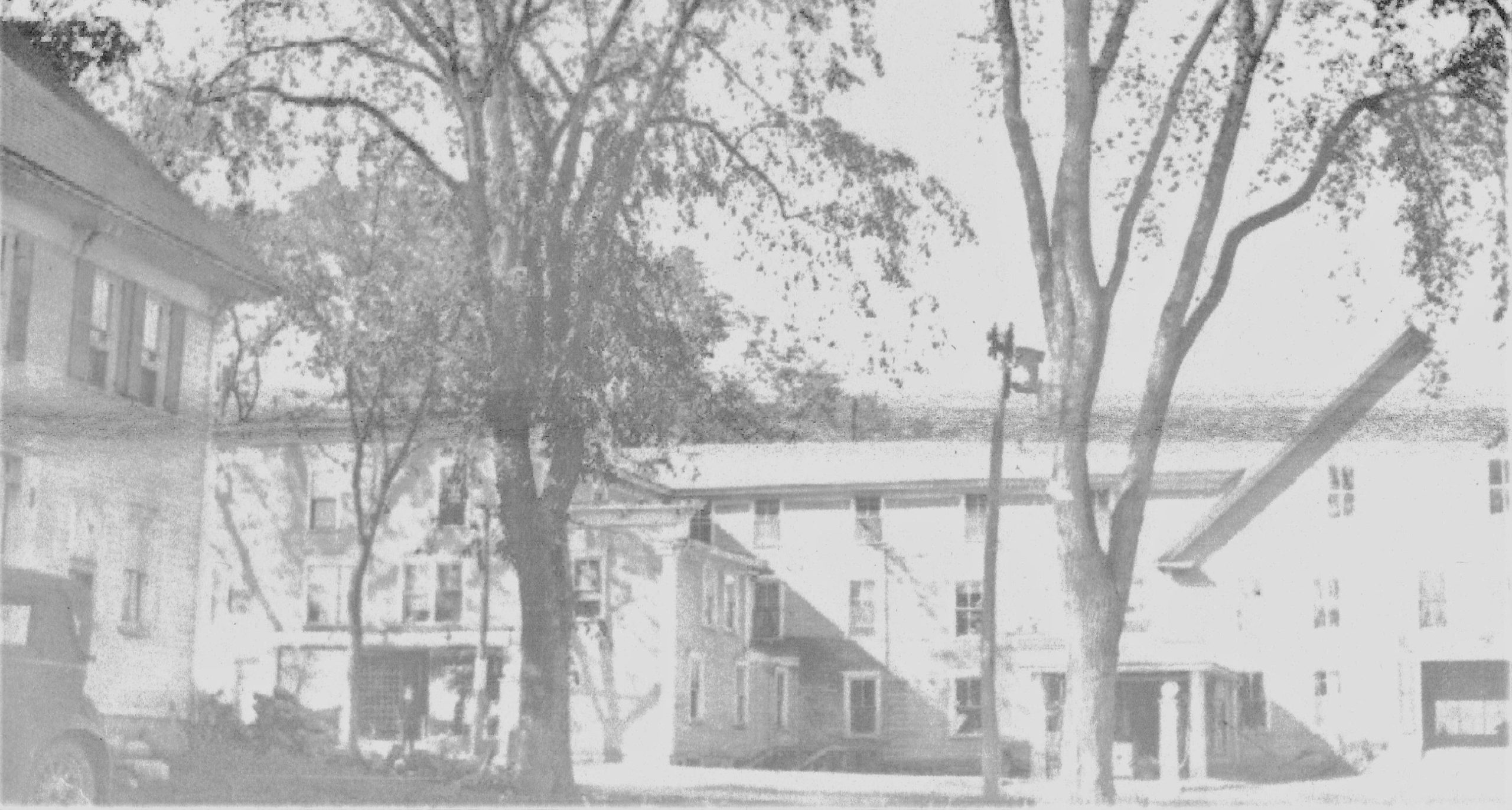
John S. Page House looking across to Hartland Hardware Store & Gas Station
(Photo courtesy of Deering Family)
*
Following John S. Page’s death, the Page Homestead was purchased by Frank Withee, Jr in 1932 who moved into the homestead. Frank sold it to John French of Guilford in October of 1936 who announced his intention to establish a new filling station at the location.

Former Page Homestead Sold – October 29, 1936
*
Soon after, John French razed the large barn and its attached buildings and transformed the main house into a full service gas station operating until about 1943 when he sold out to Bill Cookson who operated it until 1946.
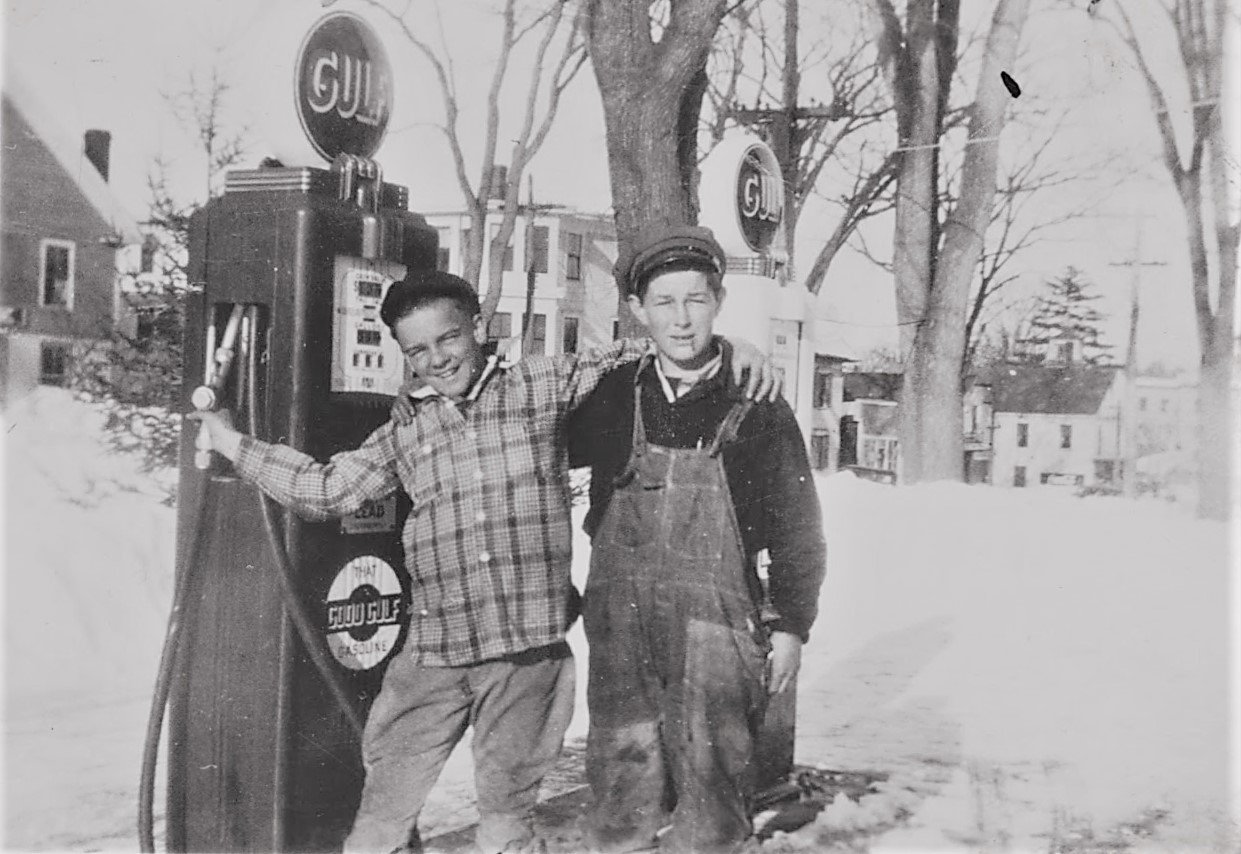
Maynard Deering & Ransford Lovely at the new Gulf Gas Station on Main Street
(Photo courtesy of Deering Family)
*
Lester Slate of Pittsfield bought the gas station in February of 1946 moving his family there soon after. Stuart Baird and his wife Addie Chapoutot bought it from Lester in September of 1950 and moved into the upstairs apartment operating as Baird’s Service Station until 1954 when Maurice E. Hall purchased it and operated as Hall’s Service Station with his wife Lillian Hart until 1964.
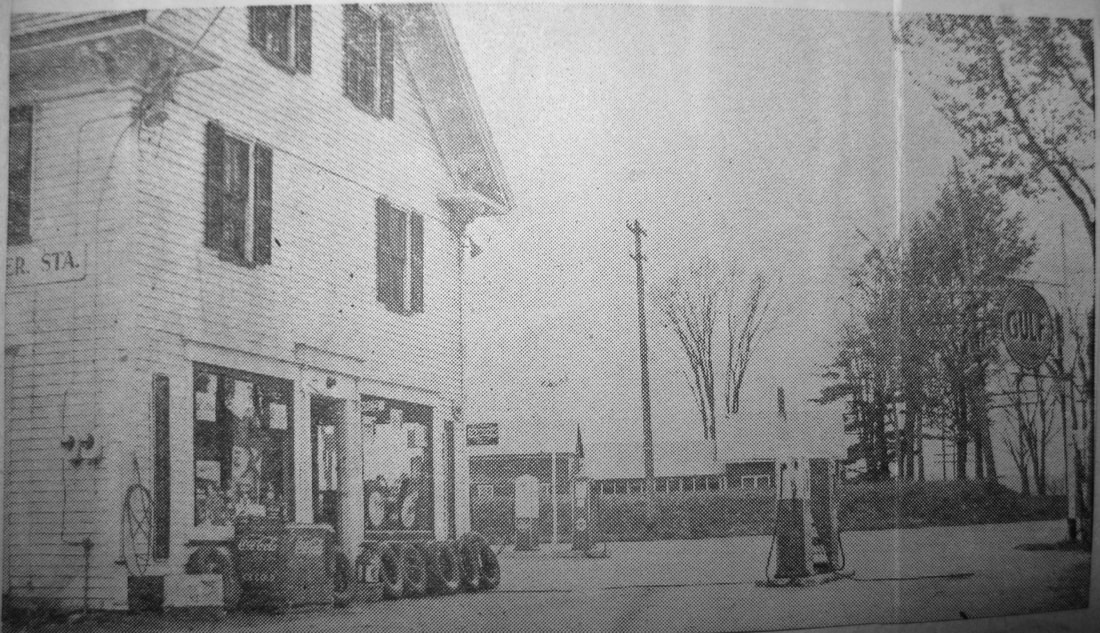
Former Page House as Hall’s Service Station aka Hall’s Gulf Station – 1955
*
Carl Randlett posing for a photo inside his store with his 7 year old daughter Estelle Randlett and family friend Bea Simpson.
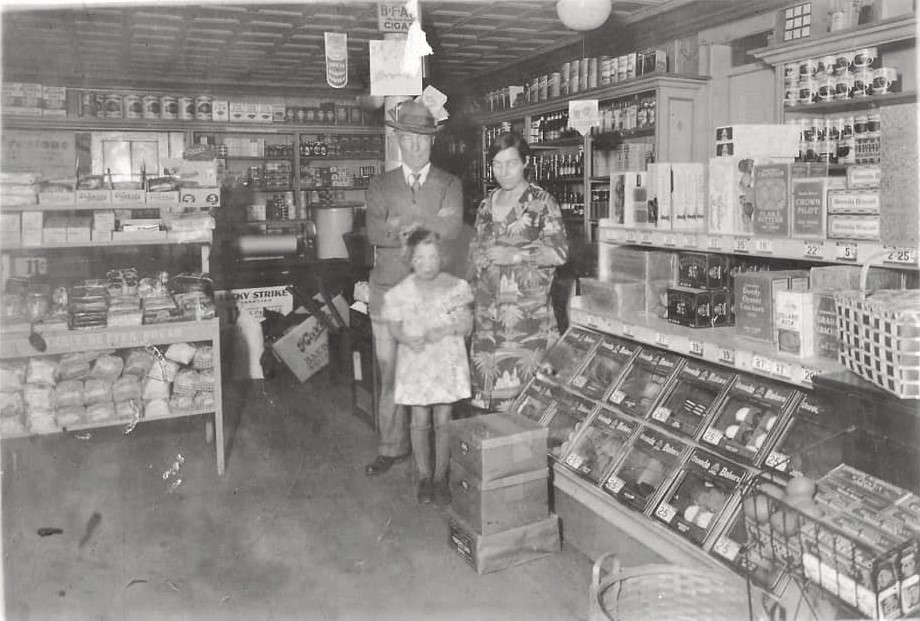
Interior of Hartland Grain & Grocery Store – 1934
(Photo courtesy of Estelle Randlett Tapley)
While Carl Randlett was known as a successful businessman, he was also very generous and extended numerous Hartland residents store credit even during the years of the Great Depression and the instability of the local economy with the closure of the woolen mill.
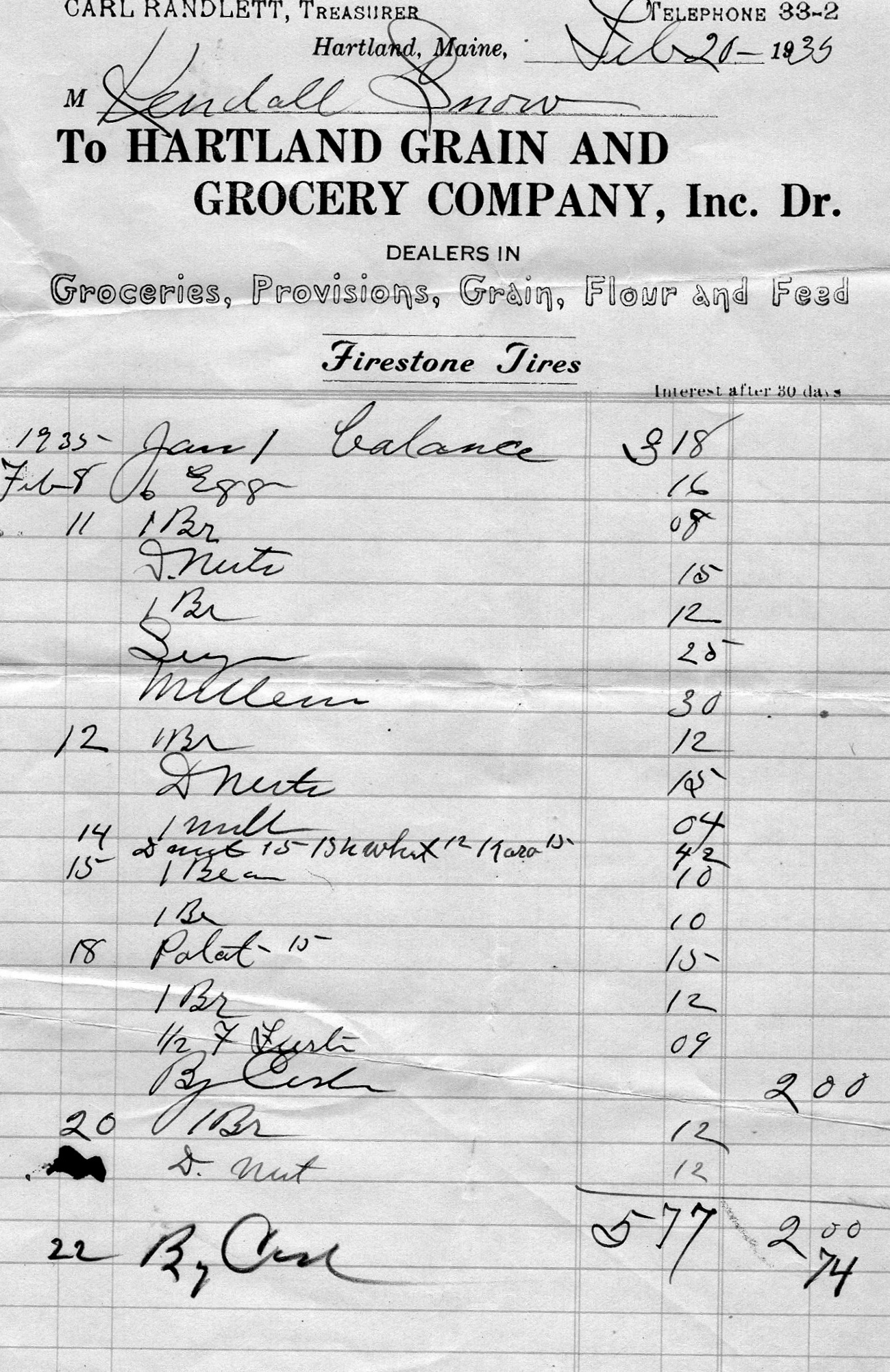
Kendall Snow Charge Account – 1935
(Photo courtesy of Dana Perkins)
*
Citizens knew the future of Hartland rested upon finding a suitable and long term replacement at the abandoned American Woolen Company facility. A search began at once by various factions including the newly formed Hartland Chamber of Commerce but came up empty.
*
In early 1934, a group of citizens banded together in an unprecedented effort to bring a new industry to town. They decided to create and incorporate as a company to take over the former mill’s remaining holdings with $10,000 worth of Capitol Stock offered to interested citizens in 2,000 units of shares valued at $5.00 each. The grassroots movement secured roughly $4,100 worth of initial stock share commitments from 51 citizens by the time it held its first Stock Subscribers Meeting on December 14, 1934 to vote on empowering the committee to officially incorporate as Hartland Mills, Incorporated.
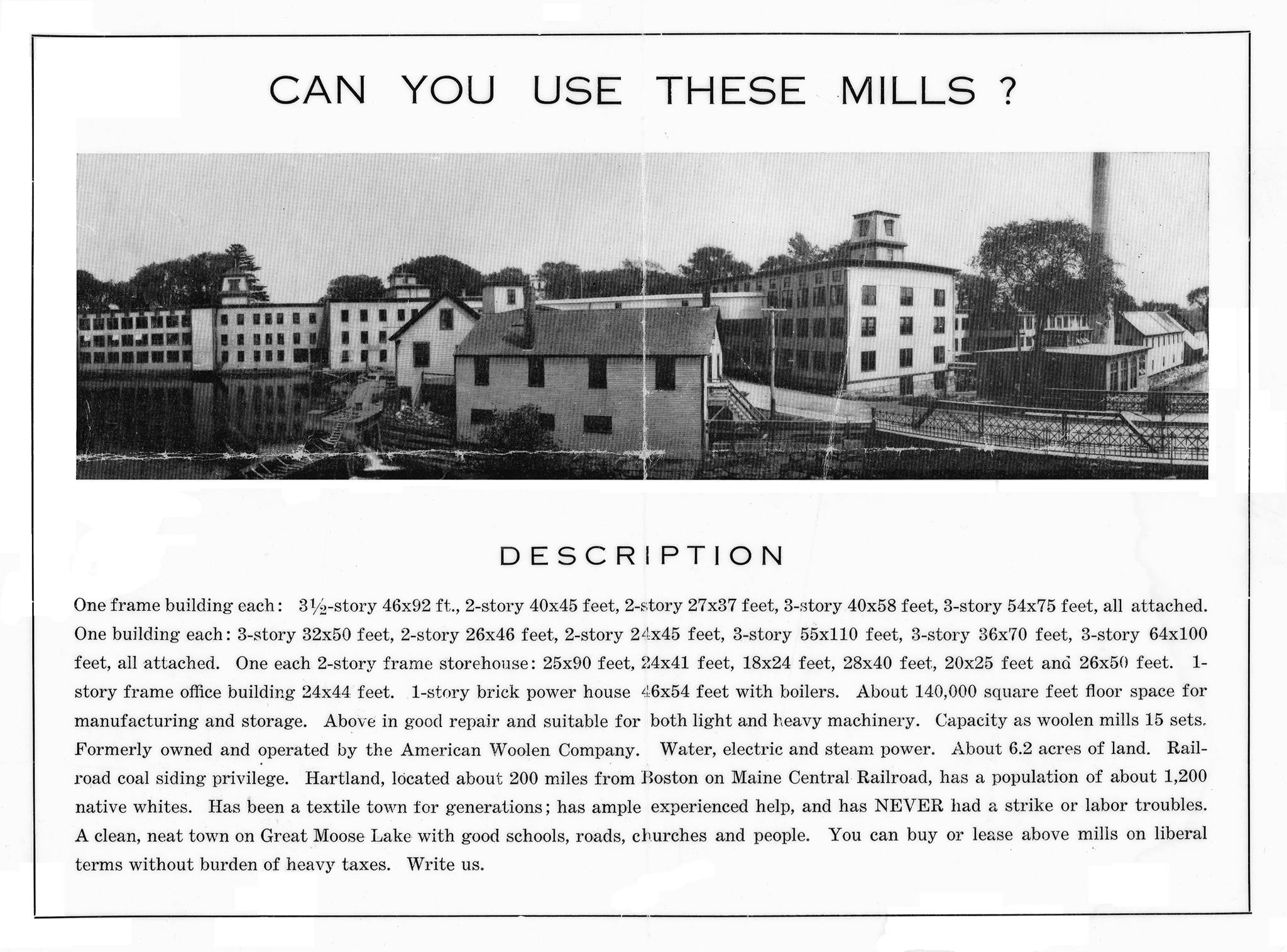
Hartland Mills, Incorporated Advertisement – 1935
*
Along with selling stock to raise capitol, goals of Hartland Mills, Inc. were to keep the mill facility physically intact, make needed repairs and find a suitable buyer to take it over. They needed to get the mill and grounds back in top condition for potential investors. Many former woolen mill employees and numerous townspeople provided their time for minimal or no pay to assist in cleaning, repairing and preparing the mill for sale.
Throughout 1935, several offers were made to lease or buy the mills but none were accepted with Hartland Mills, Inc. siting unfavorable lease conditions or various other unacceptable terms. In April of 1935, the Ohio Carpet Company stated it had a firm interest in locating a business at the mills pending the process of a loan. Major work and investments were done in preparation for the new owners however their loan application was rejected in November and the deal fell through.
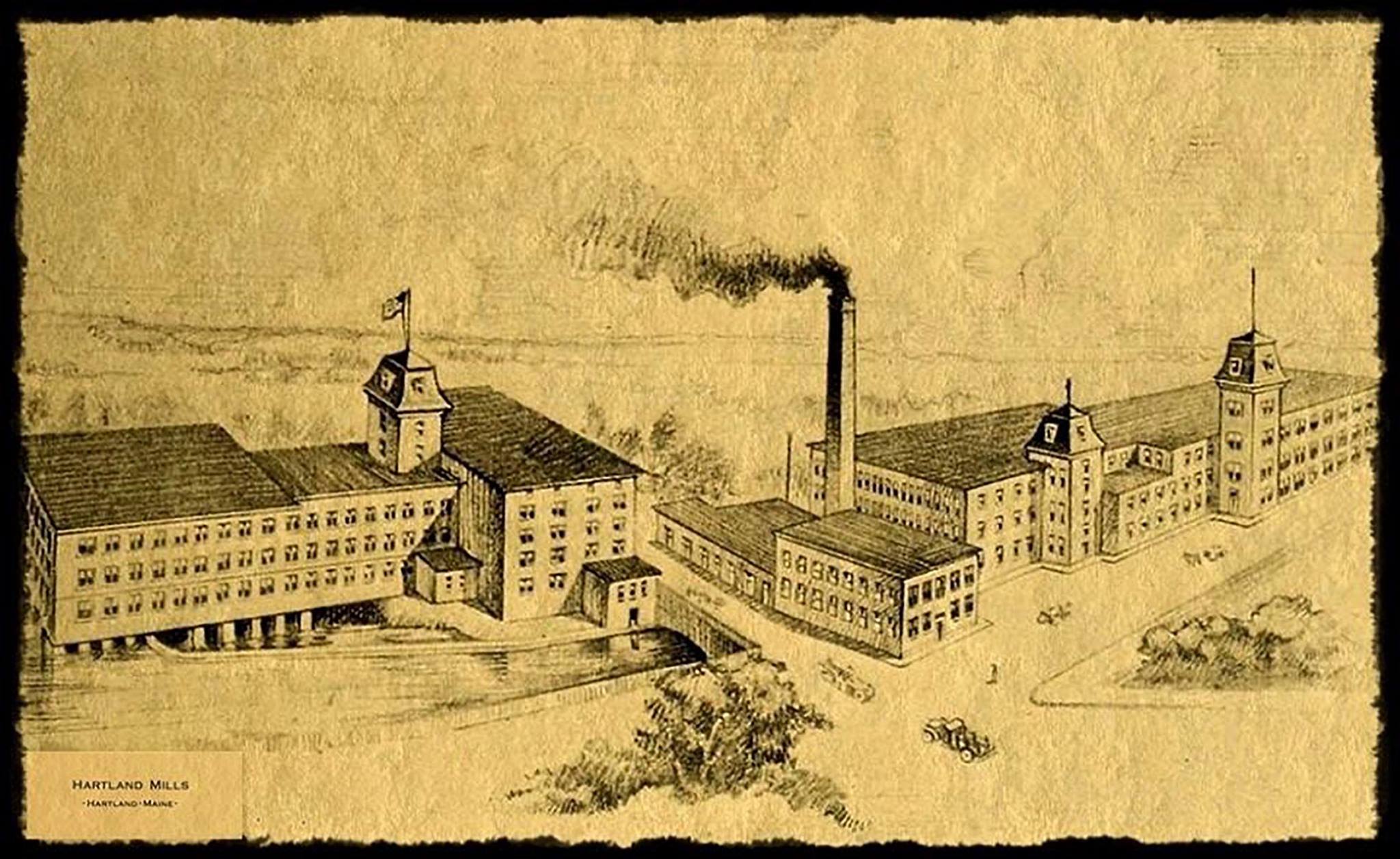
Hartland Mills, Incorporated Advertisement – 1935
*
Following the very disappointing collapse of the Ohio Carpet Company deal, the Directors were informed of a request from Irving Tanning Company of Peabody, Massachusetts to meet with the group on December 16, 1935 and tour the mill with an interest in establishing a new subsidiary for their company. In a follow-up meeting with Meyer Kirstein in Peabody on December 19th, members of Hartland Mills, Inc. returned with a note for Two Thousand Dollars in good faith on a contract for the establishment of a new tannery business. The tanning industry in Hartland was about to be reborn and the new Hartland Tanning Company would soon open in 1936.
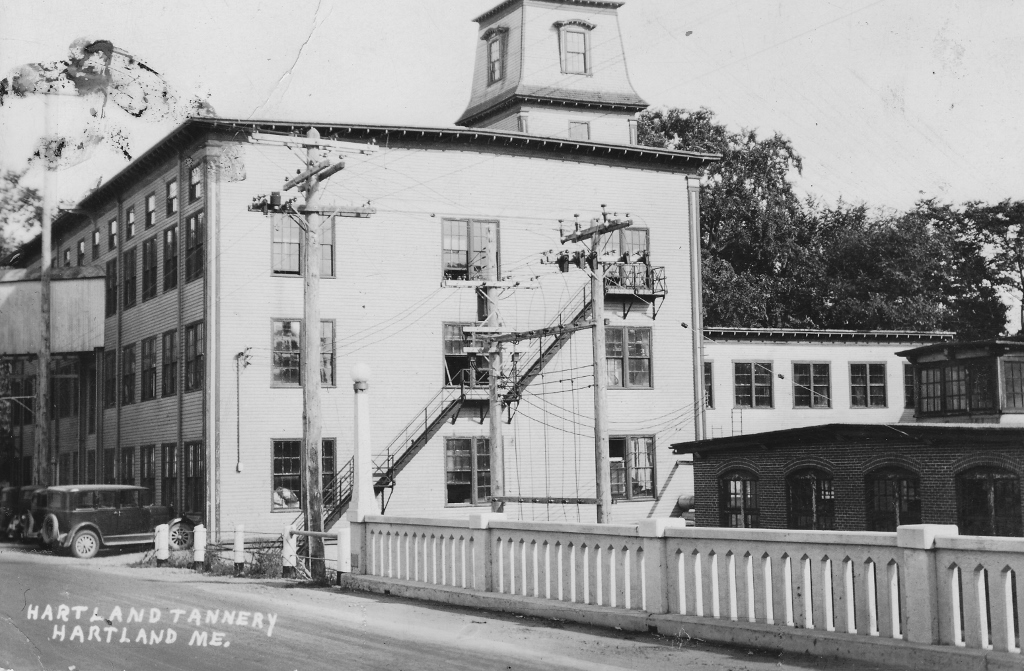
Hartland Tanning Company with the new Main Street Concrete Bridge – c1938
*
Part of the preparation for its new tanning industry included replacement of the Lower Dam and both of the bridges on Main Street with construction beginning in 1936 and completed by February of 1937. As seen above, the larger bridge was constructed of concrete with decorative light posts at each end.
*
The former Furbush Brothers residence on Main Street remained an apartment house for several decades with several different families living there including Chester Kniffen and Walter “Tidy” Wheeler in the 1930s and into the early 1940s before being purchased by Wesley Harrington.

Former Furbush Residence seen later as the future Harrington Residence – c1950
*
Carl Randlett had added gasoline pumps and tire sales to his Hartland Grain & Grocery Store many years before as his store remained a fixture on Main Street throughout the 1900s. The original building seen below was renovated following a large fire in 1930 but its core structure is one of the oldest remaining in Hartland.

Hartland Grain & Grocery Store – c1930
(Photo courtesy of Estelle Randlett Tapley)
*
Although the Hartland Tanning Company had successfully begun operations in 1936, Hartland Mills, Inc. had initially leased the facility and still owned all the property & buildings. Among the properties which were not part of the tannery’s lease was the lot on the northern side of the Sebasticook River Island which still held the old Central Hall Building and former Machine Shop.
Negotiations between the two parties basically resulted in an exchange of the Island lot for the former Fairgrieves Carding Mill on the corner of Hubbard Avenue and Main Street which was part of the tannery’s original lease arrangement. In turn, Hartland Mills, Inc. deeded the carding mill building to the town in 1940 to be used as the home of the newly re-organized Hartland Volunteer Fire Department who moved into the building in March of 1941. The Island lot would eventually be cleared of all the buildings and made into a parking lot which included a Scale House.
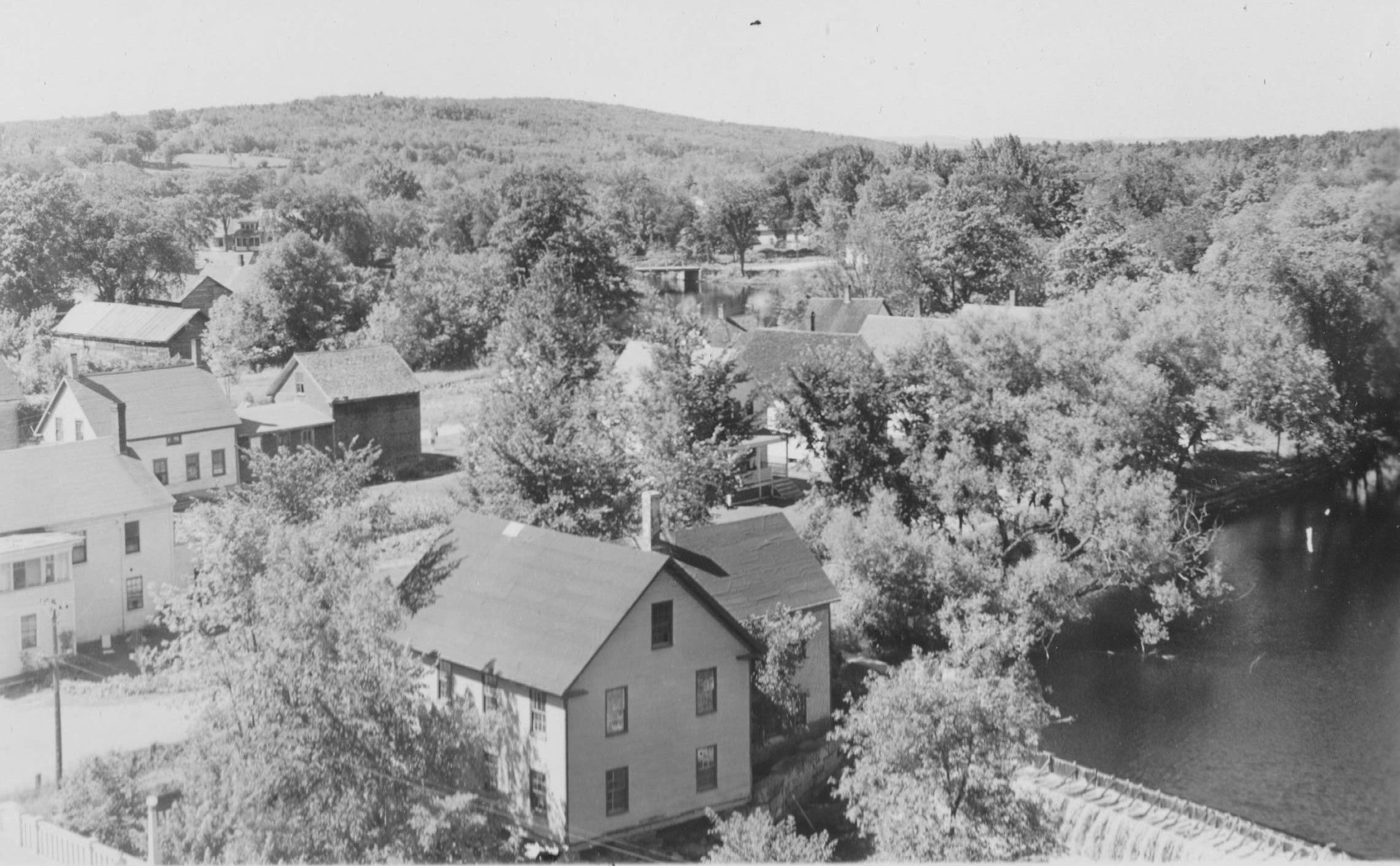
New Home of the Hartland Volunteer Fire Department at the former Fairgrieves Carding Mill
*
Linwood Annis Randlett (1906-1992) began working at his father’s Hartland Grain & Grocery Store when he was about 10 years old. Following his marriage to Ada Louise Cyr (1908-1993) in 1927, he soon became a partner in the business with his father and its eventual successor.
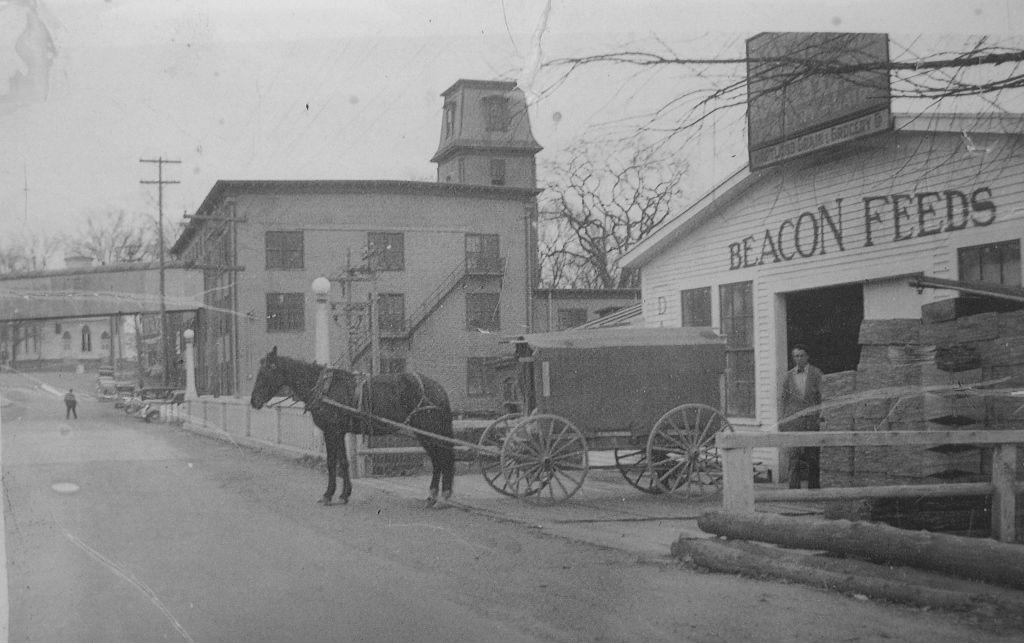
Linwood A. Randlett at Hartland Grain & Grocery Grain Main Street Warehouse – c1939
(Photo courtesy of Estelle Randlett Tapley)
*
Beginning with the Fall Term of 1943, two of the upstairs rooms at Harry Randlett’s Hartland Hardware Store were rented to the Hartland School Department for 4th & 5th grade classes due to overcrowding at the Pleasant Street School and the closing of the last rural schoolhouse at Fullers Corner in West Hartland that spring. Students attended classes here until the new Hartland Consolidated School opened in 1950.
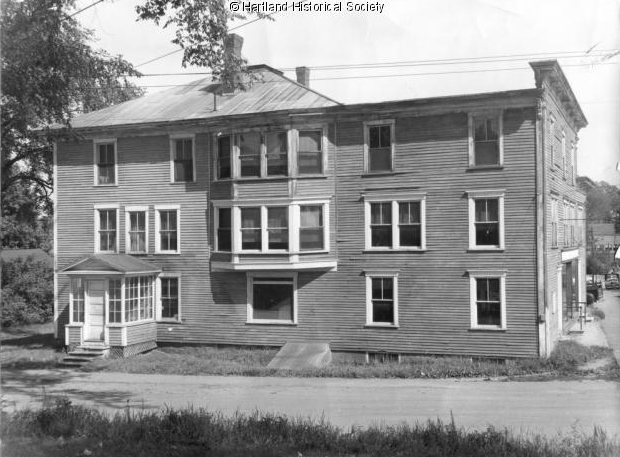
Mill Street Side Entry of Hartland Hardware Store used by Students to access the Upstairs Rented Classrooms
*
Wesley Peter Harrington had moved from his native town of Parkman to Hartland by 1940 and was renting a house on Hubbard Avenue with his wife Esther and their son Clayton while he worked at the Tannery at the time. About 1943, Wes Harrington purchased the former Furbush house on Main Street and moved his family there. In 1945, he also bought the Scott & Hebb Store next door operating it until early 1952 when he sold it to Ted Griffith. Esther had been working at Hartland Grain & Grocery as a bookkeeper and clerk and left her position there when they bought the store.
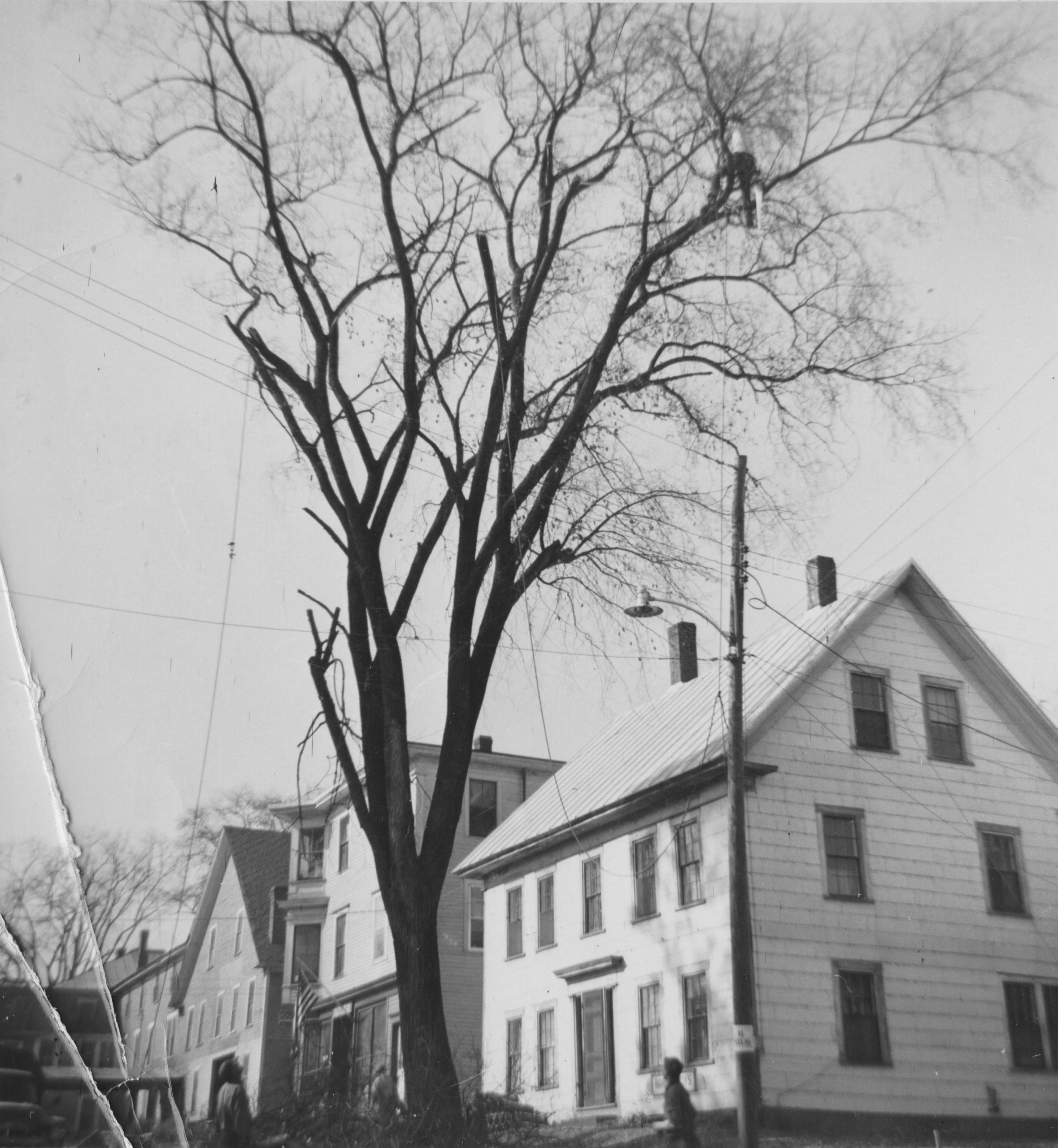
Taking down the Elm Tree in front of the Harrington Block – c1955
*
The former Moore Brothers Print Shop on Outer Main Street was purchased by Harry Randlett soon after his brother-in-law George Moore moved back to Ellsworth by 1920. Harry sold the buildings to Willis “Bill” McDougal who replaced it with a new house in 1946 soon after he married Charlotte Gordon. Bill’s younger brother Luther McDougal and his family moved there in 1956. Luther sold the house to Leroy Rollins in 1960 who renovated and enlarged it then sold it to Stanley Shakespeare.
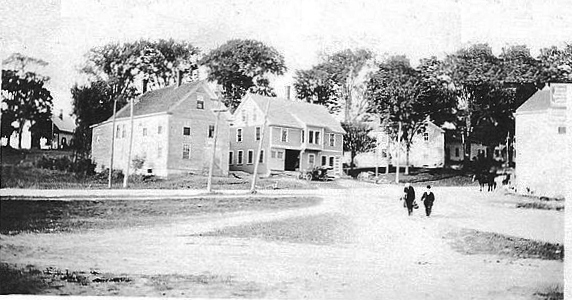
Former Moore Brothers Print Shop before it was replaced by a new house
*
1943 Map showing respective property owners along Main Street.

Hartland Village – 1943
*
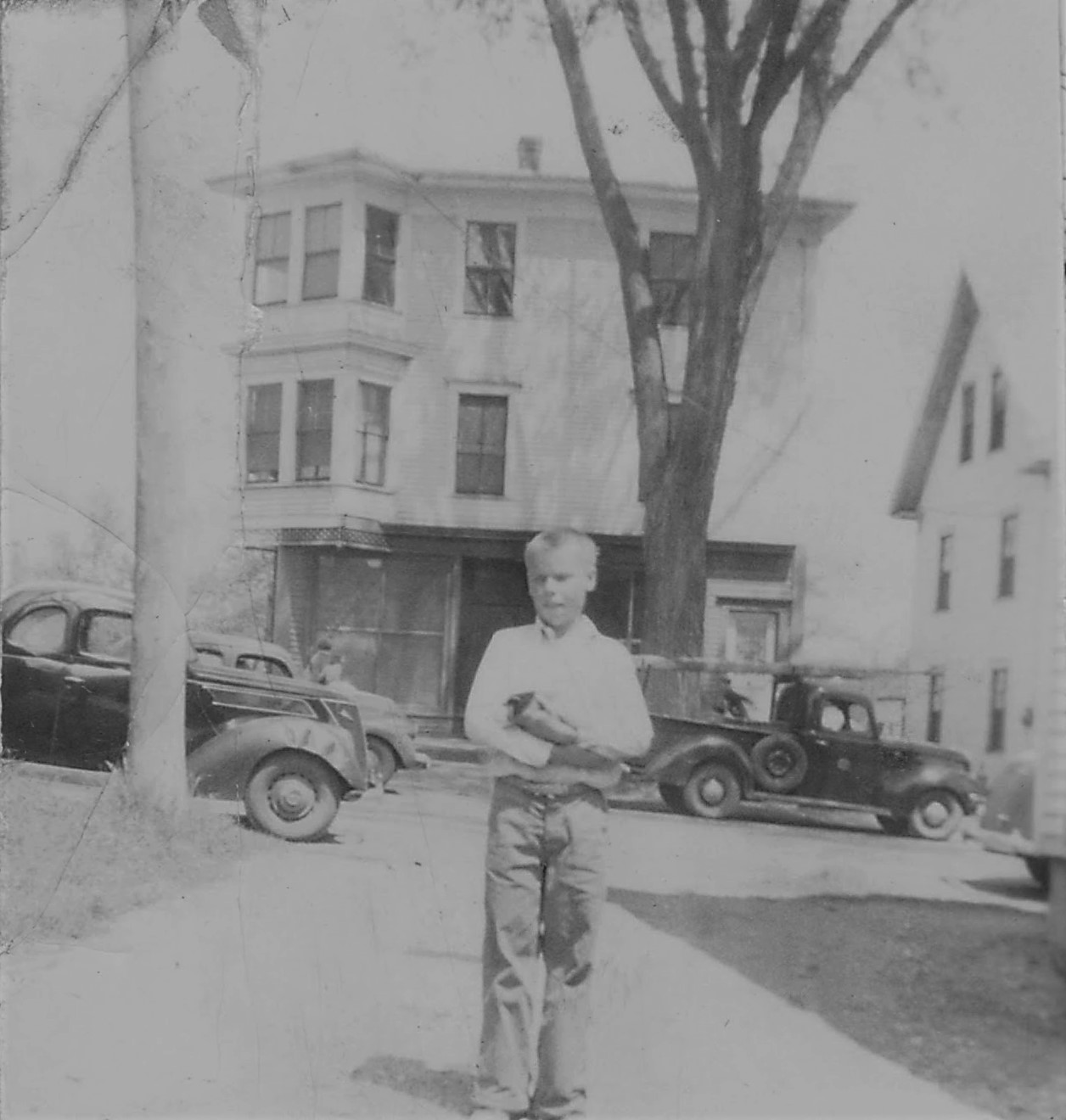
Donald Lloyd Deering (1933-1976) at his parents’ home across from the Post Office in the Latty Block
(Photo courtesy of Deering Family)
*
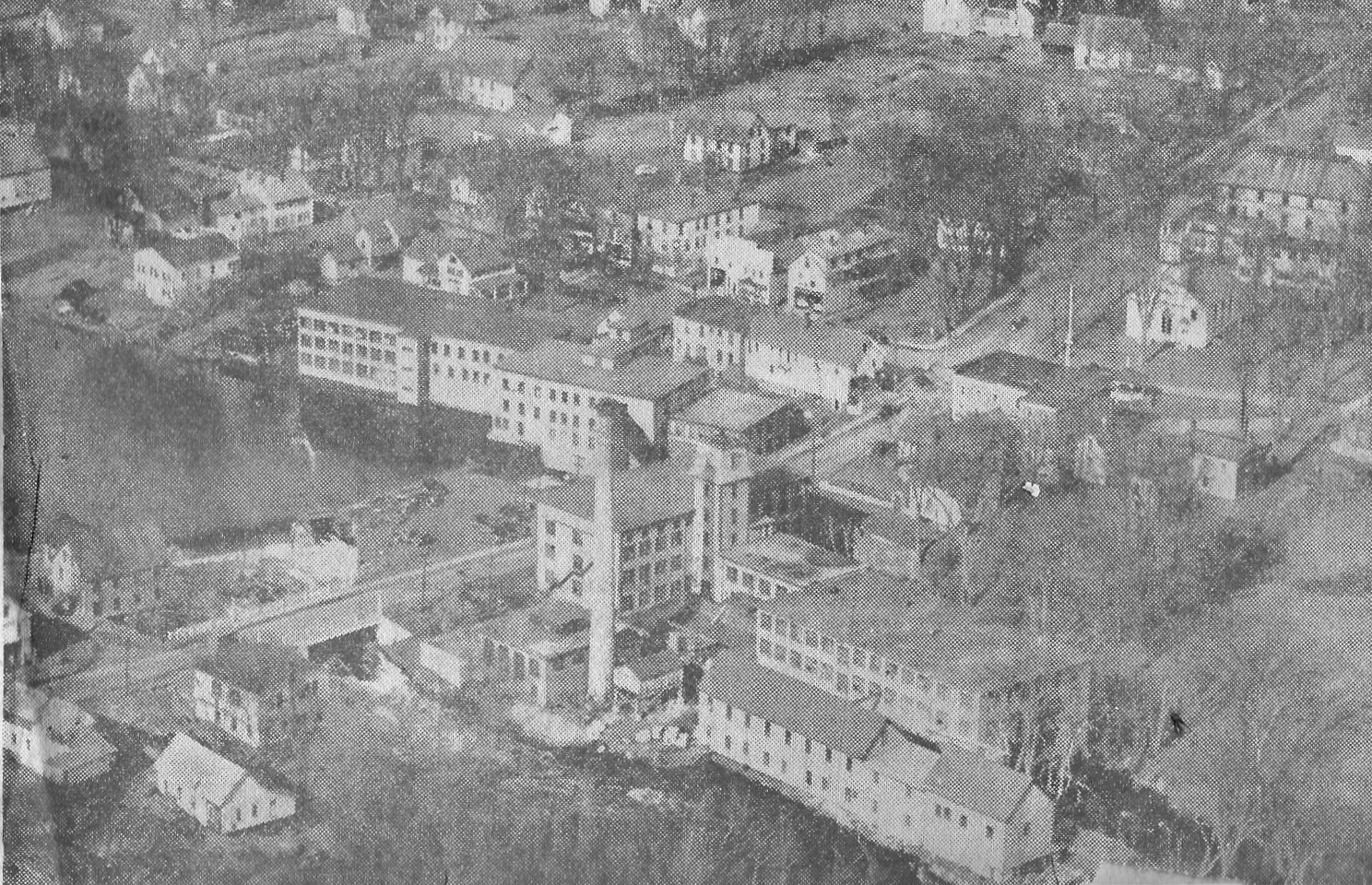
Hartland Tanning Company – 1949
*
Several major changes were made at the Maine Central Railroad Hartland Train Yard on Outer Main Street in the mid-1940s including the demolition of the original depot which was relocated in the former grain storage building. Hartland Tanning Company purchased the old storage building and converted it into the Hide House for storage of “blues” before they were brought to the main plant for processing.
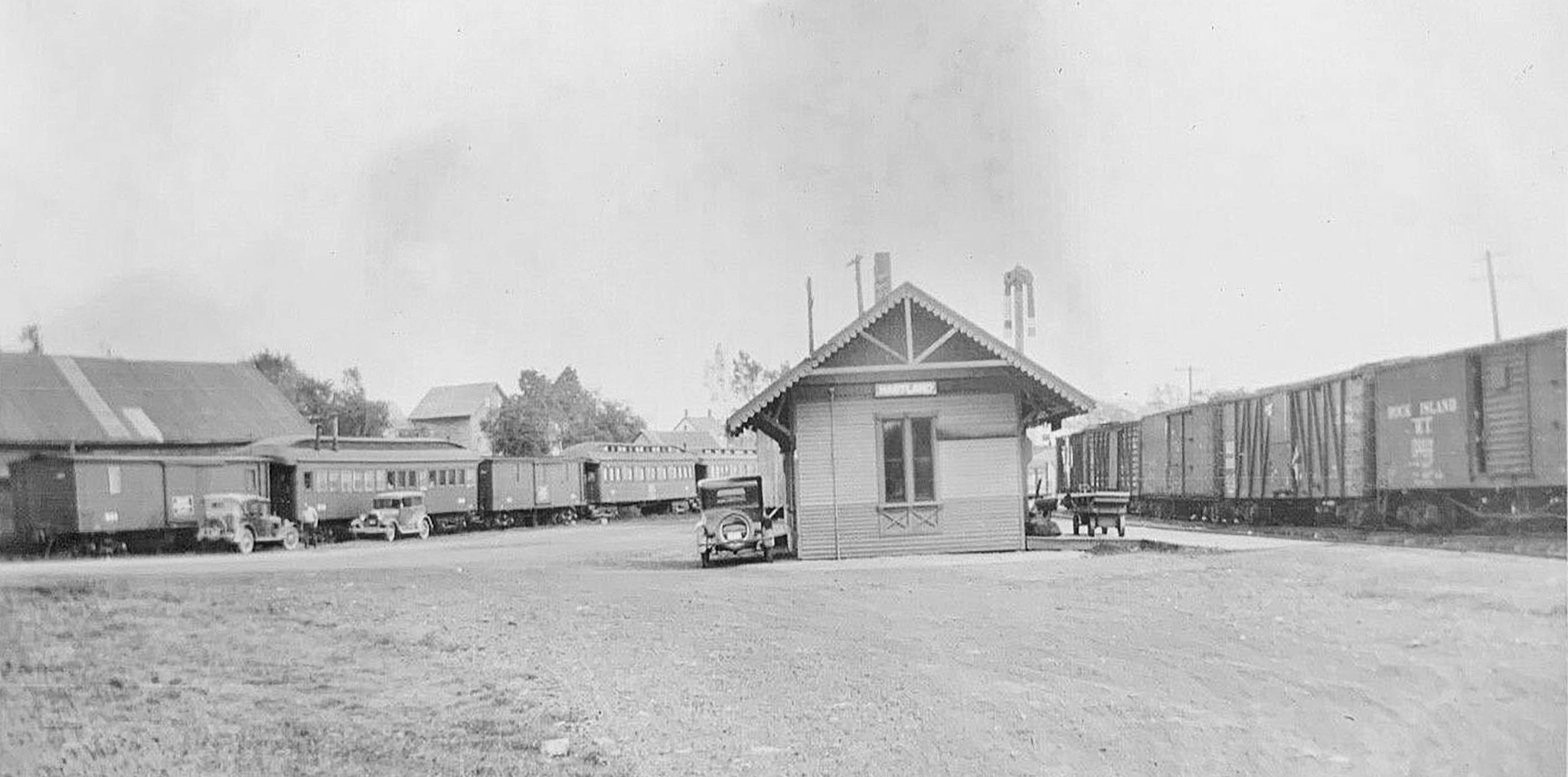
Hartland Railroad Depot before Demolition
*
Raymond Gregorie and his crew were contracted to take down the original Hartland Train Depot.
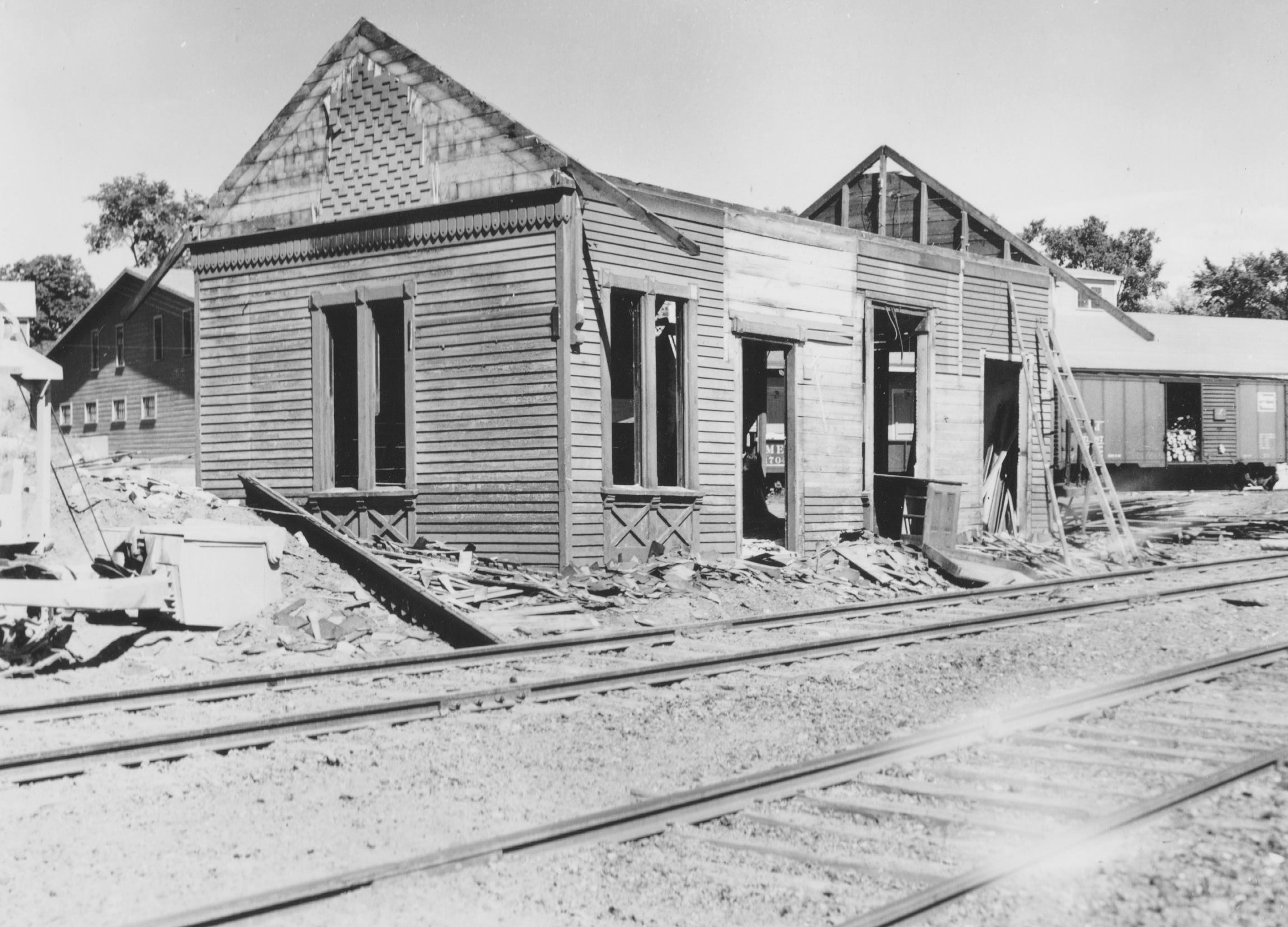
Hartland Depot Demolition
*
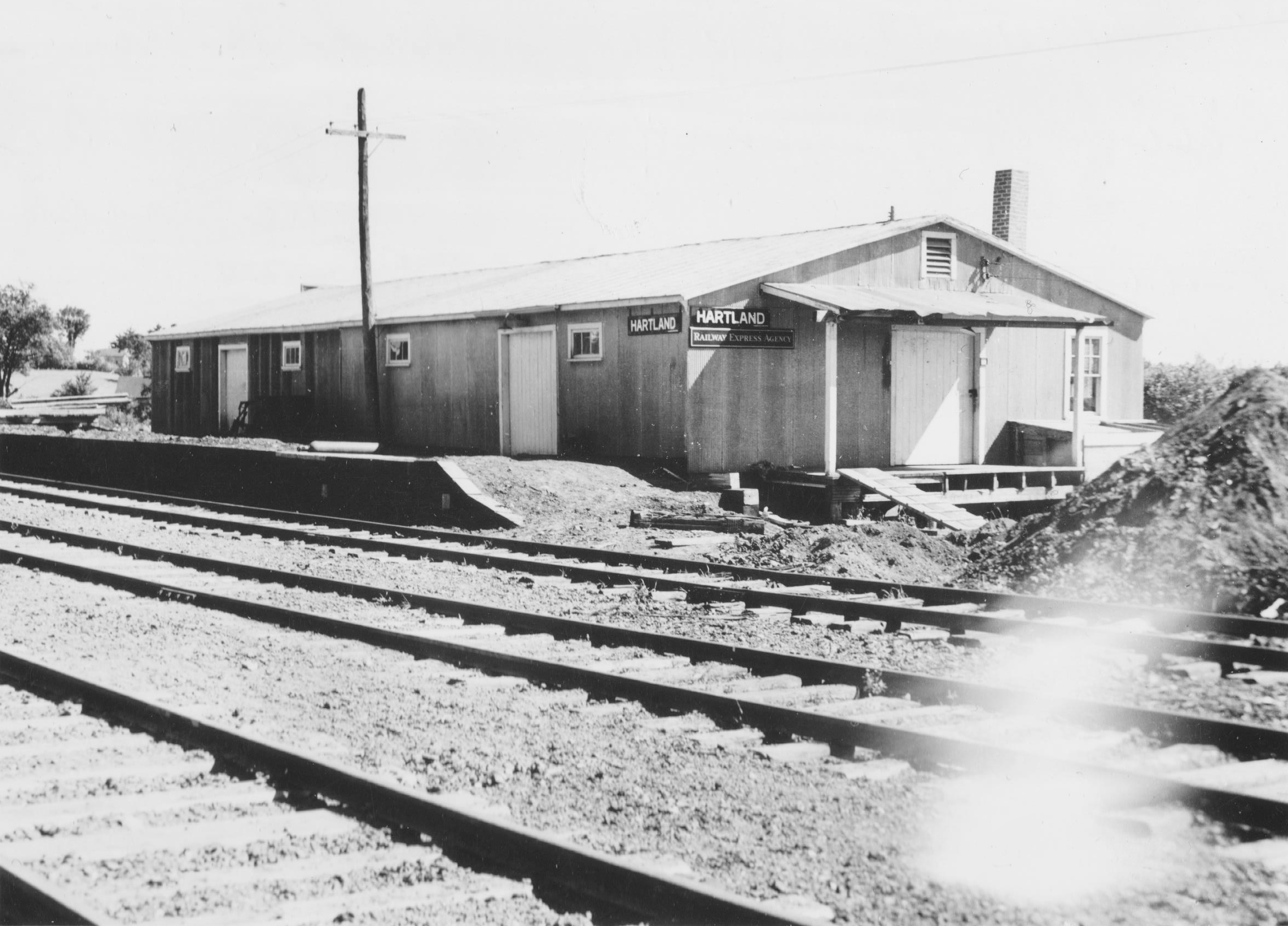
New Home of the Hartland Depot at former Hartland Grain & Grocery Grain Storage Building
*
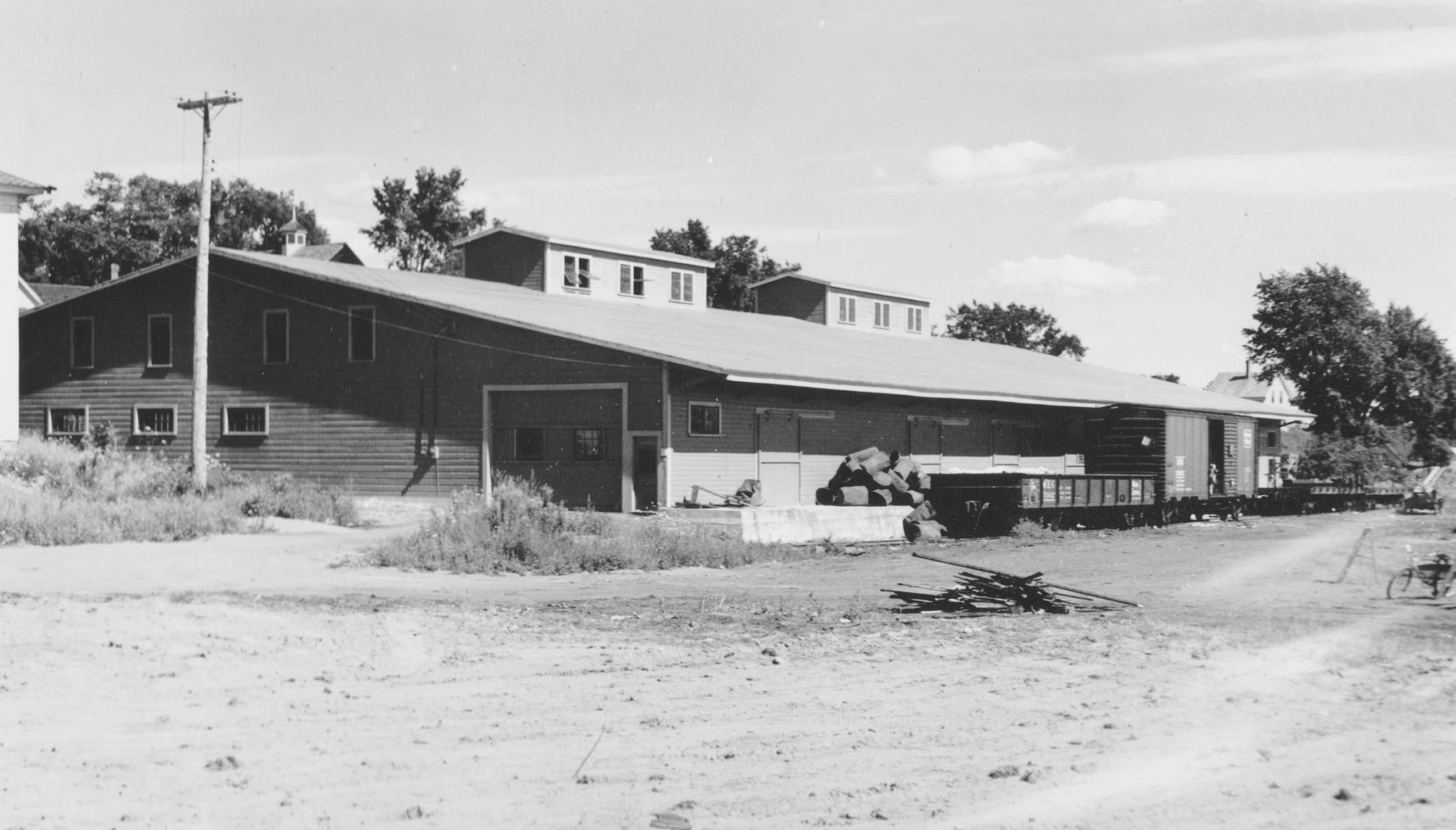
New Hartland Tanning Company Hide House
*
In 1945, Linwood Randlett took over his father’s business at Hartland Grain & Grocery following Carl’s retirement. Following Carl’s death in 1951, Linwood retired and his daughter Estelle Randlett and her husband Keith Tapley took over the business on April 1, 1951. Although the business officially operated under the original company name of Hartland Grain & Grocery, the store became known to locals as Tapley’s Market.
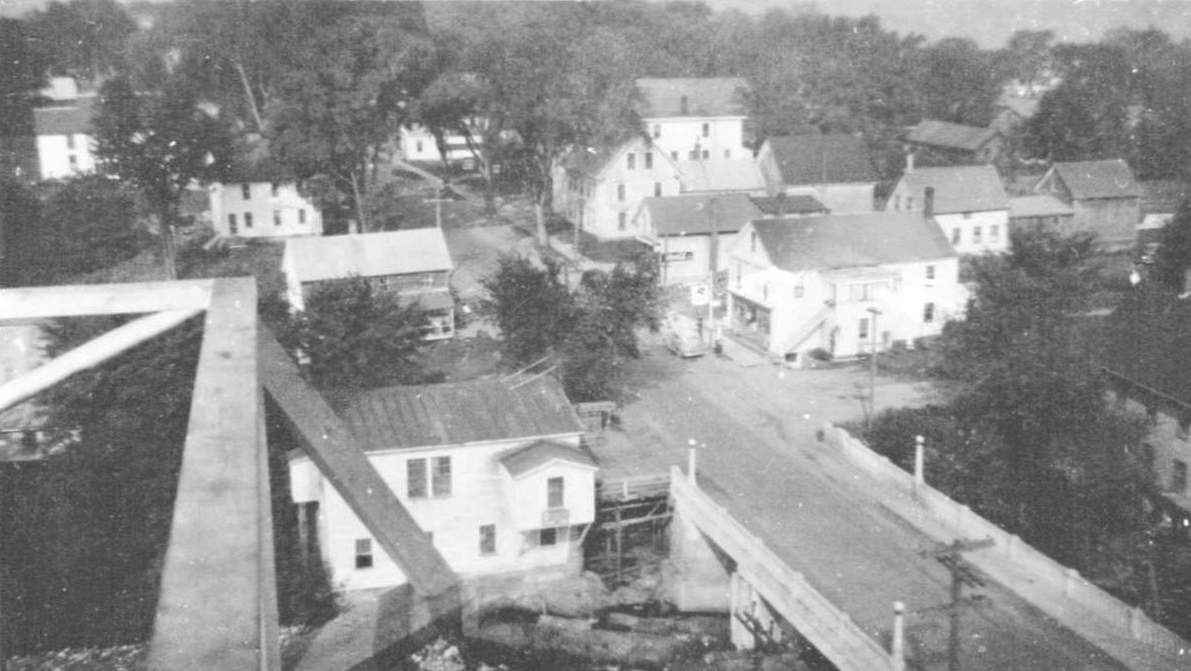
Hartland Grain & Grocery Store and Grain Storage Building – c1945
(Photo courtesy of Cheryl Simpson & Donna Perkins)
*
In 1948, a major renovation and construction project was completed at Scott-Webb Memorial Hospital including the addition of a new 2 story North Wing increasing the hospital’s overall normal capacity to 60 beds. The new wing included new patient rooms, X-Ray Room, Obstetrical Ward, Nursery, Mother’s Ward and a Children’s Ward.
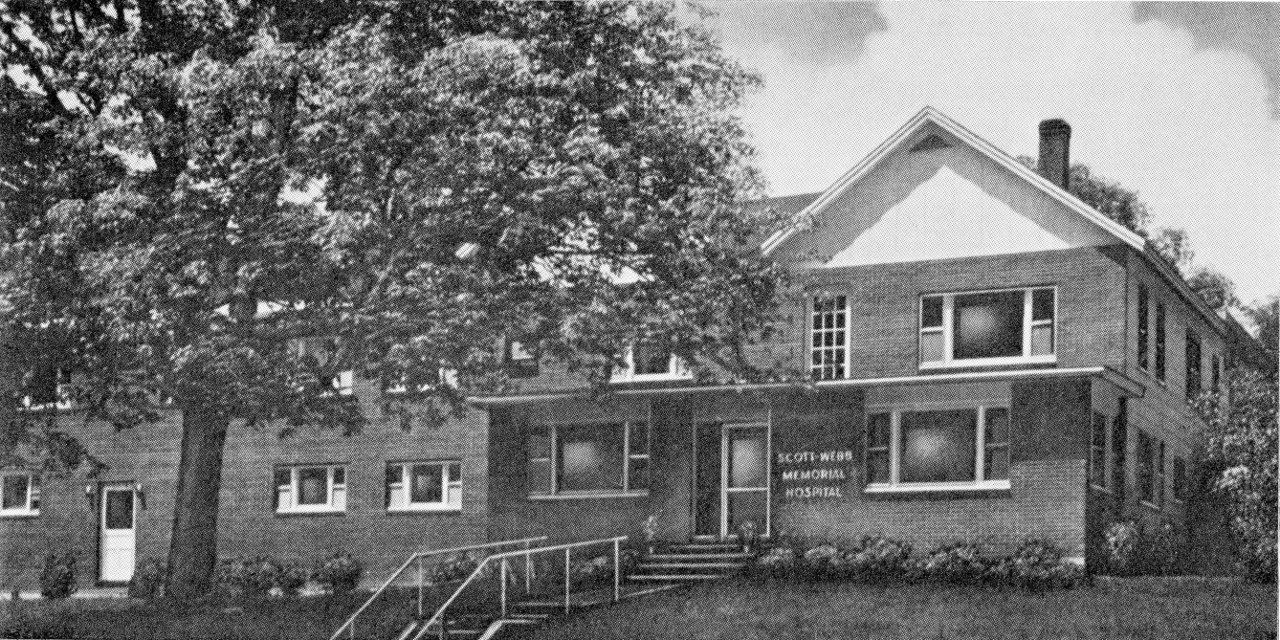
Scott-Webb Memorial Hospital
*
In 1954, Lewis H. Barden and his wife Ada purchased the former Albert W. Miller Drug Store from the estate.
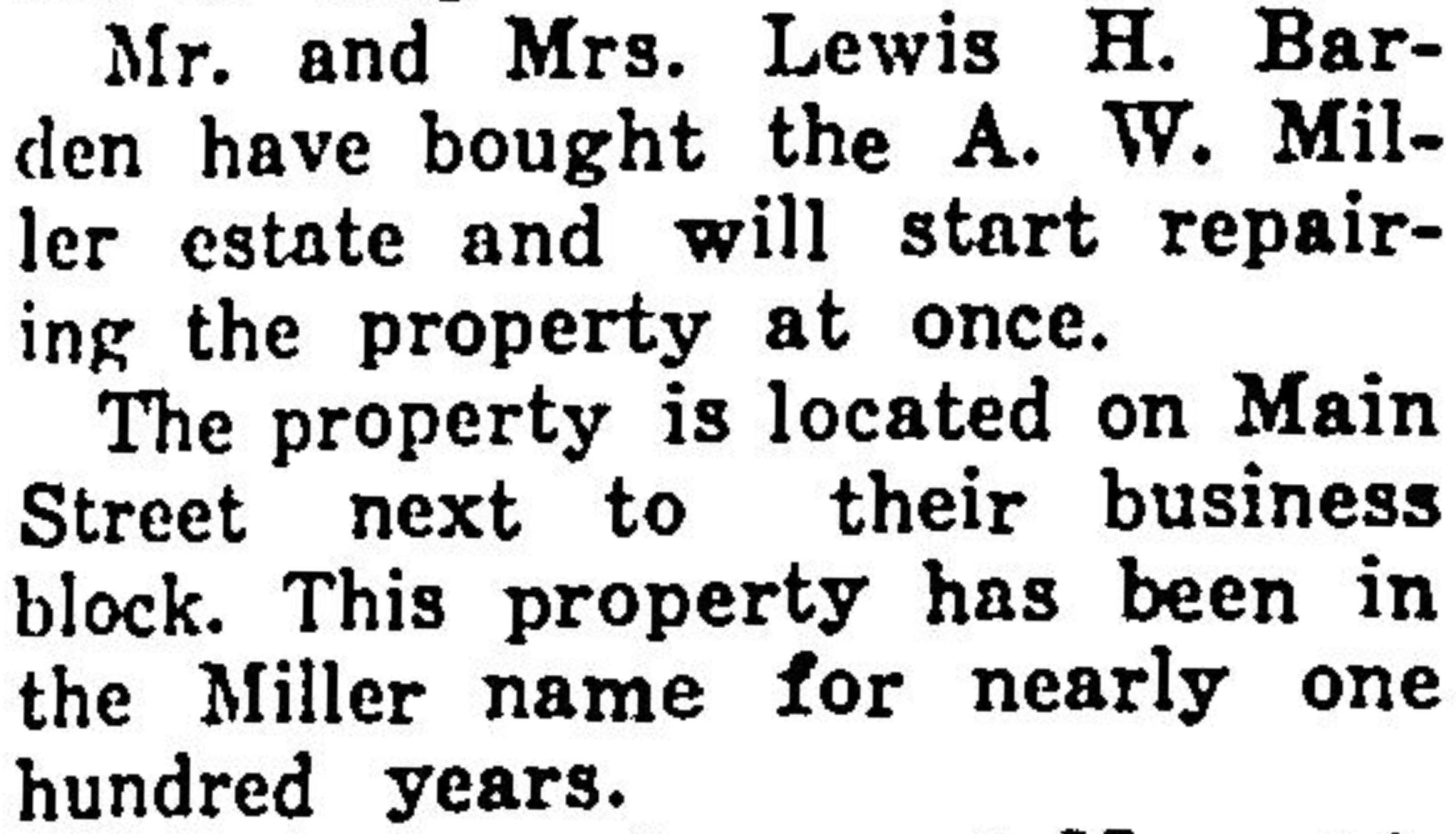
March 25, 1954
*
Soon after the Barden purchase, Dr. Harvey W. Hartley, a retired Veterinarian of some 30 years originally from New Brunswick, and his wife Jessie Hathaway purchased the former A. W. Miller Drug Store building where Dr. Hartley opened a clothing store. Jessie started a small restaurant in the back to help bring in more money but they soon closed the clothing store as the restaurant was doing better business. Their daughter Verlie and her husband Robert Watt, Sr bought the building from her parents and leased it back to them until they retired.
Verlie & Robert then leased it around 1956 to Roland Parent who also operated a restaurant in Pittsfield. His parents, Fred & Emma Parent, moved from Limestone with Roland’s sister Christine Parent to run the Hartland location operating as Parent’s Grill until 1959. Verlie & Robert and their children then moved in upstairs and opened Verlie’s Imperial Restaurant for the next several years. A laundromat was built in the attached building about 1960 and a beauty parlor opened above on the second floor about 1963. It was later leased in the late 1970s and operated by Hazel (Grignon) Brooks as The Kozy Korner Restaurant before being sold to the Hartland Tanning Company who razed the entire building in the mid-1980s. (Special thanks to Robert Watts, Jr & Christine (Parent) Lewis for details)
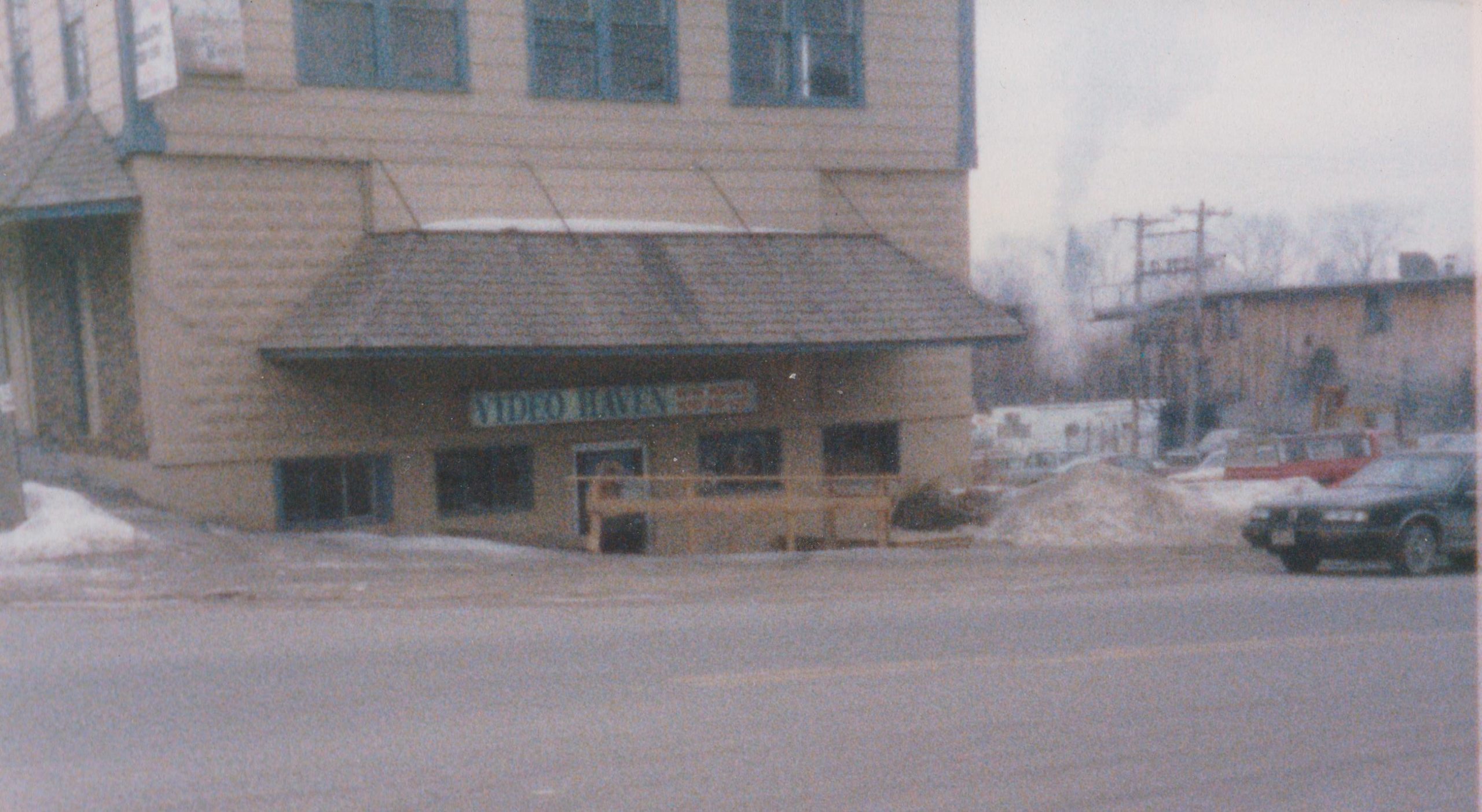
Razed lot, seen to the right, of the former A. W. Miller Drug Store Building – 1987
*
In the early part of 1952, Ted Griffith purchased the former Ensign Hubbard store from Wes Harrington and operated his store for a couple of years. Melvin Wyman took over the business until his death in 1957. His widow, Hope Wyman continued operating the store until Elmer & Joan (Southard) Ballard purchased it in 1961 with Jack Dyer who operated the store. On April 7, 1964, Elmer & Joan sold the store to Ronald “Joe” & Christine (Parent) Lewis who operated the store as Lewis’ Market at this location until 1992.

Lewis’ Market – 1970
*
In 1955, a large construction project began to reconstruct the entire street including cutting back the steep hill at the corner of Warren Square.
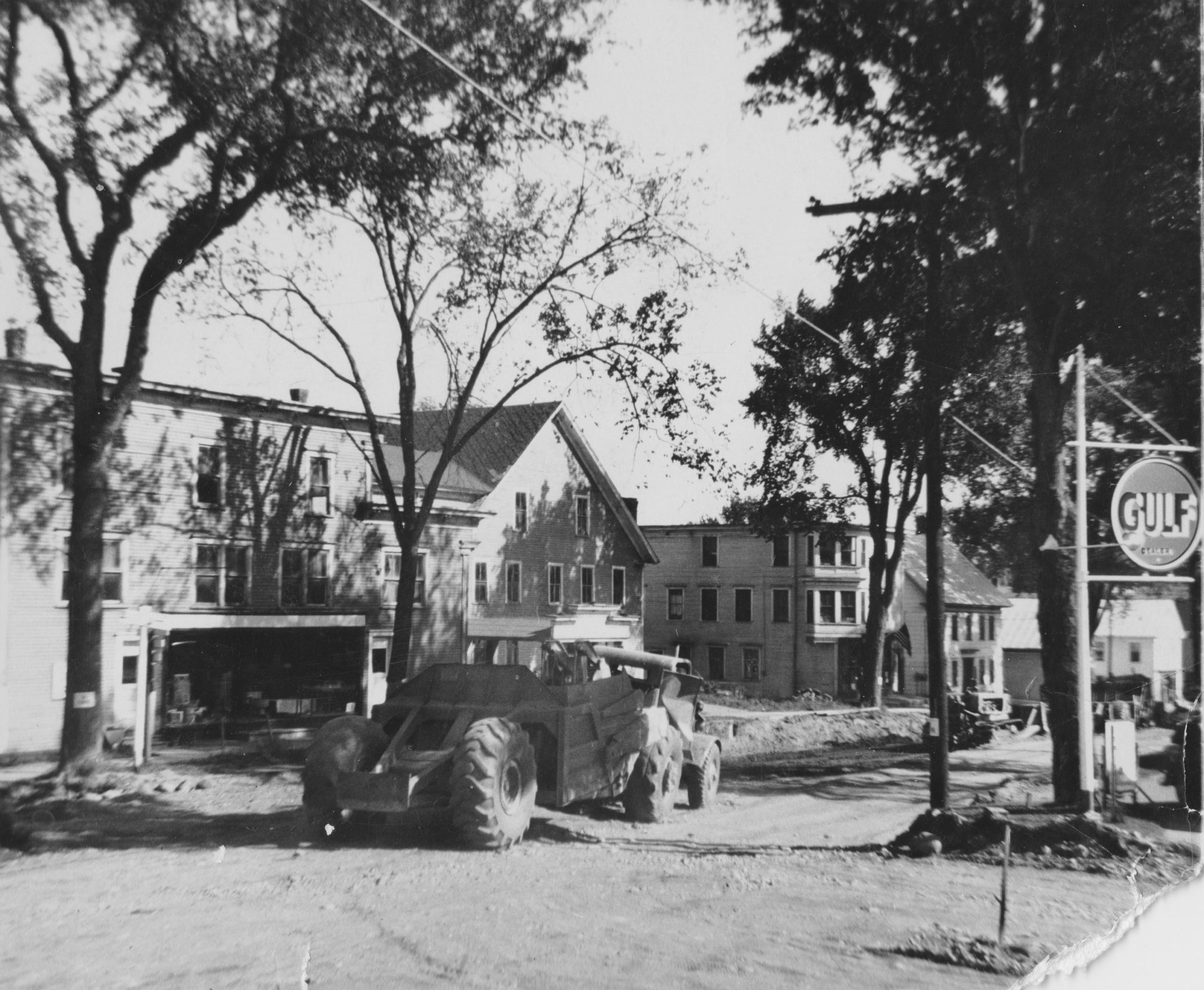
Main Street Construction from the corner of Mill Street & Pittsfield Avenue – 1955
*
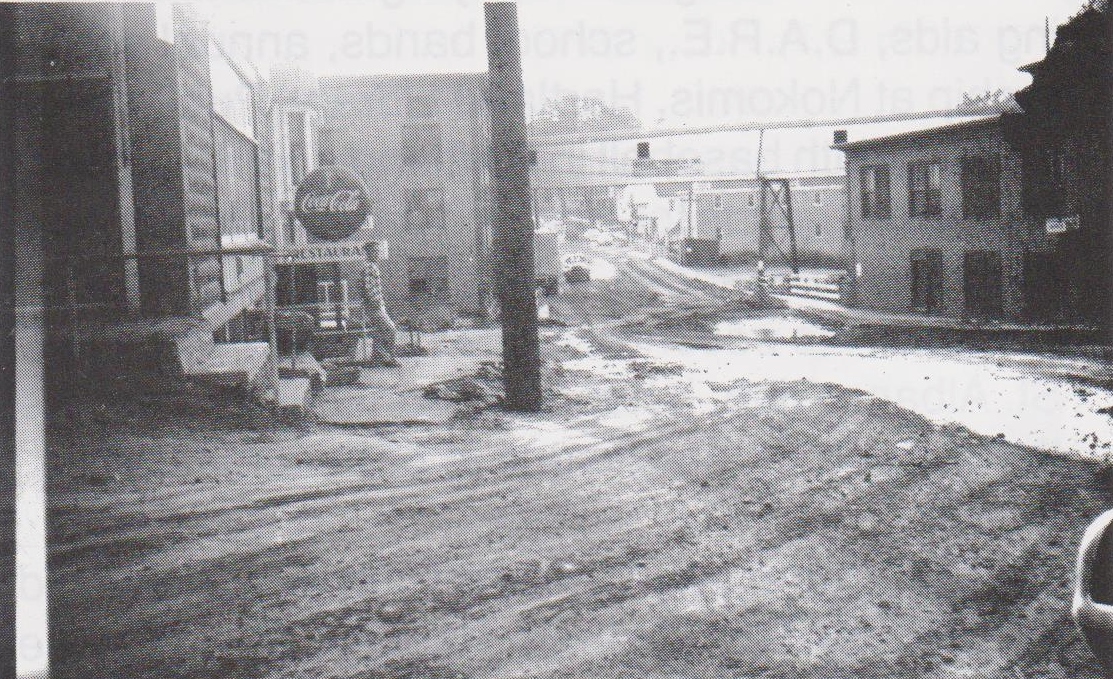
Main Street Construction from the corner of Warren Square – 1955
*
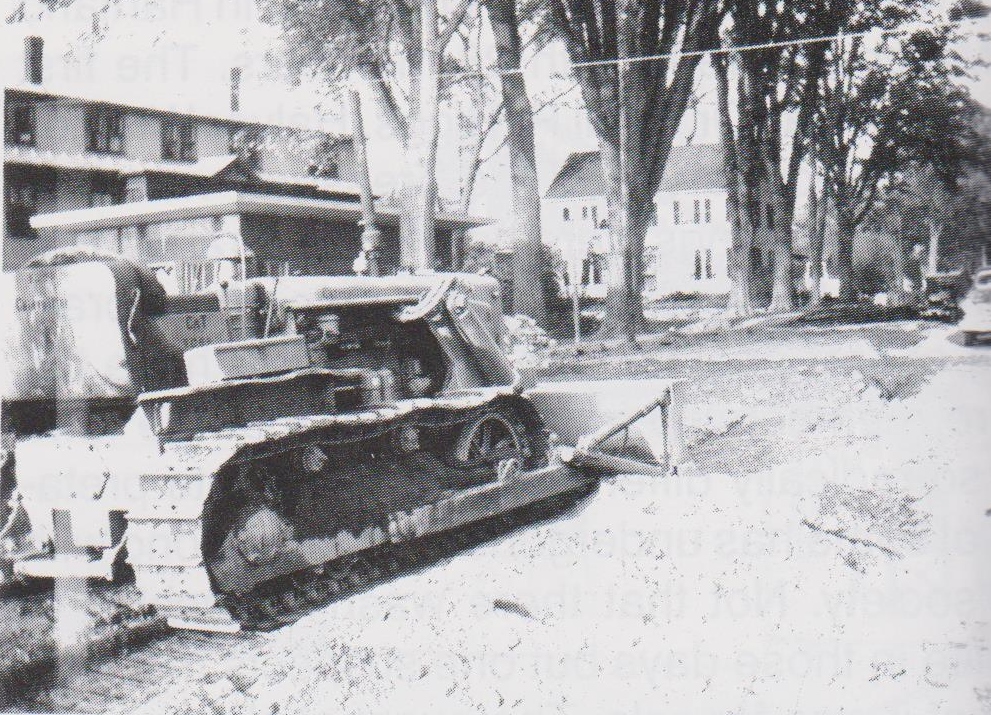
Main Street Construction at the intersection of Commercial Street & Warren Square – 1955
*
The Raceway Bridge on Main Street was also reconstructed in 1955 with concrete replacing the wooden bridge that had been rebuilt in 1935.
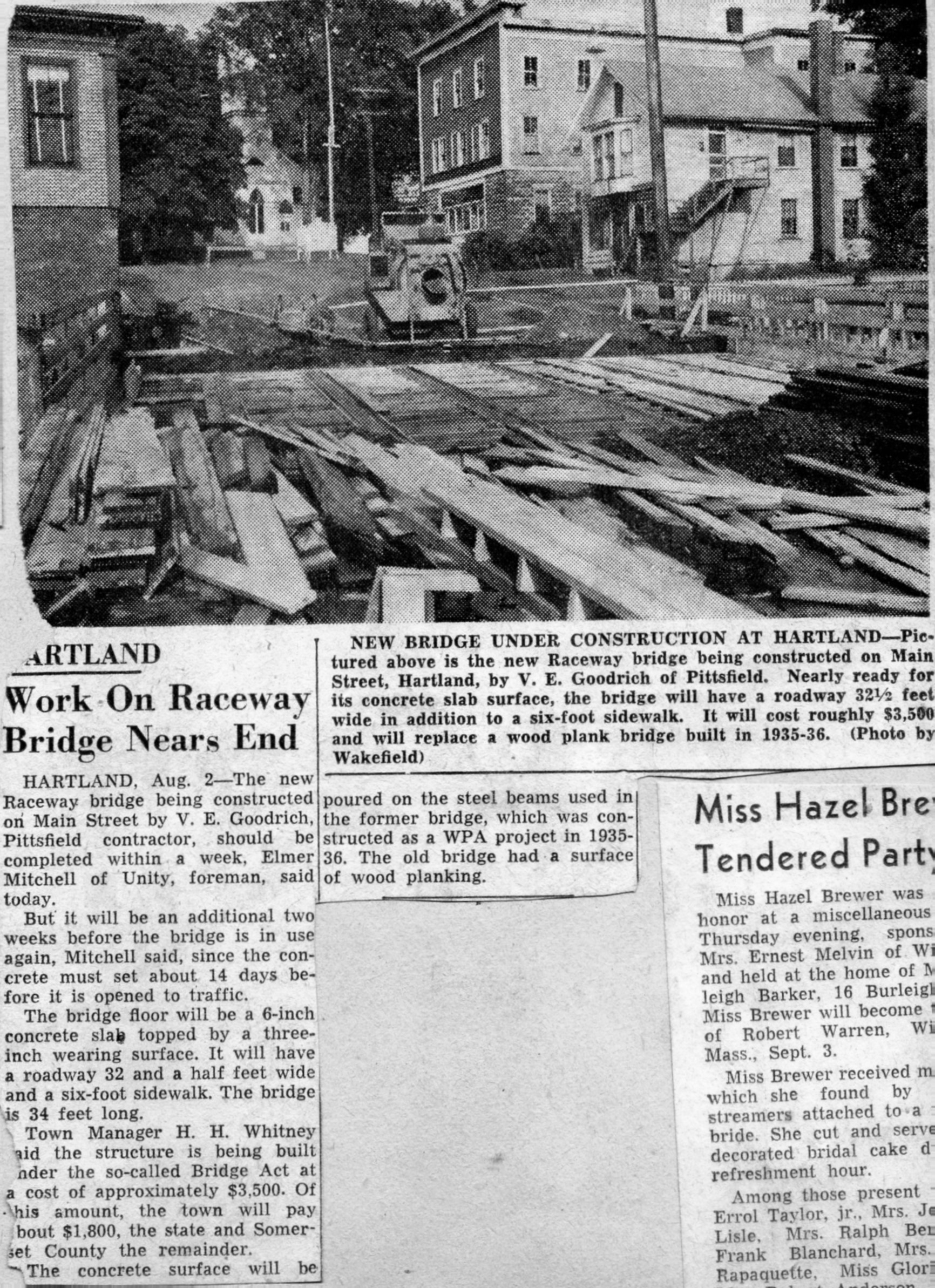
Raceway Bridge Reconstruction Article – August 2, 1955
*
By 1955, Hartland Tanning was producing 1500 sides per day but needed more space to expand production. Hartland citizens then endorsed a bond issue, guaranteed by Irving Tanning Company, that would raise sufficient funds to build a new Beam House off Main Street to house operations from soaking to shaving and increase production to 6000 sides per day. A Grand Opening was held on July 16, 1956.
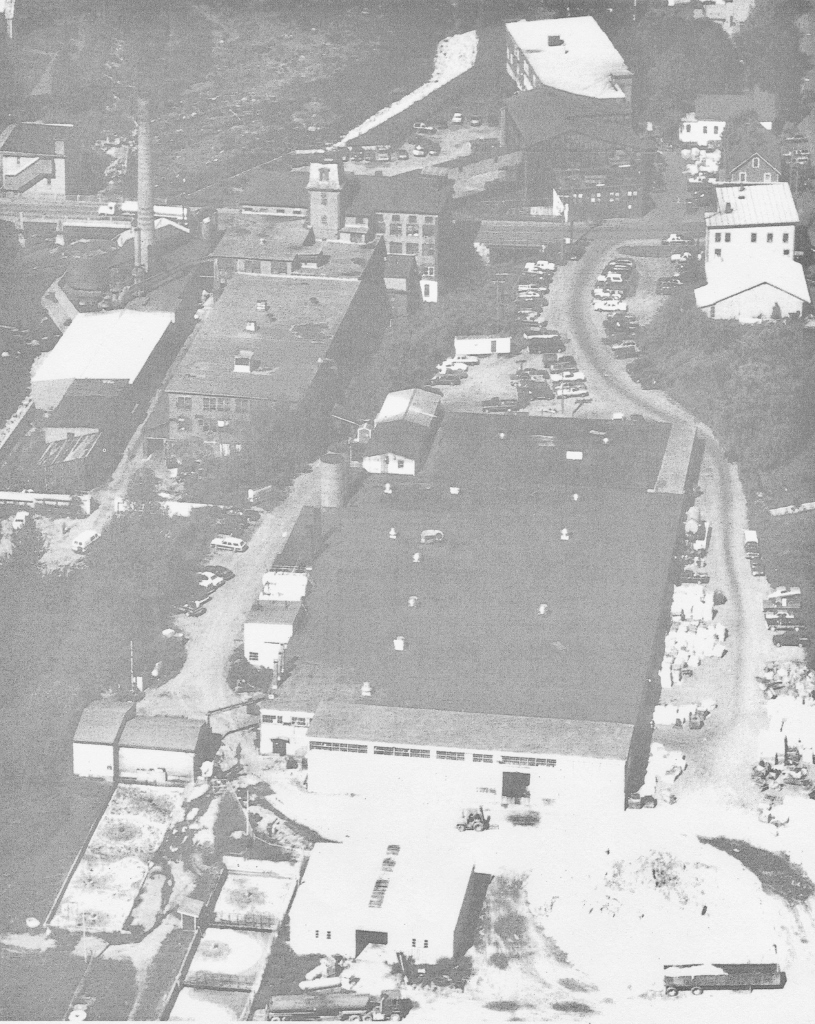
New Irving Tanning Company Beam House – 1956
*
The Main Street Crossover between the two mill buildings remained a familiar landmark since it was built around 1916.
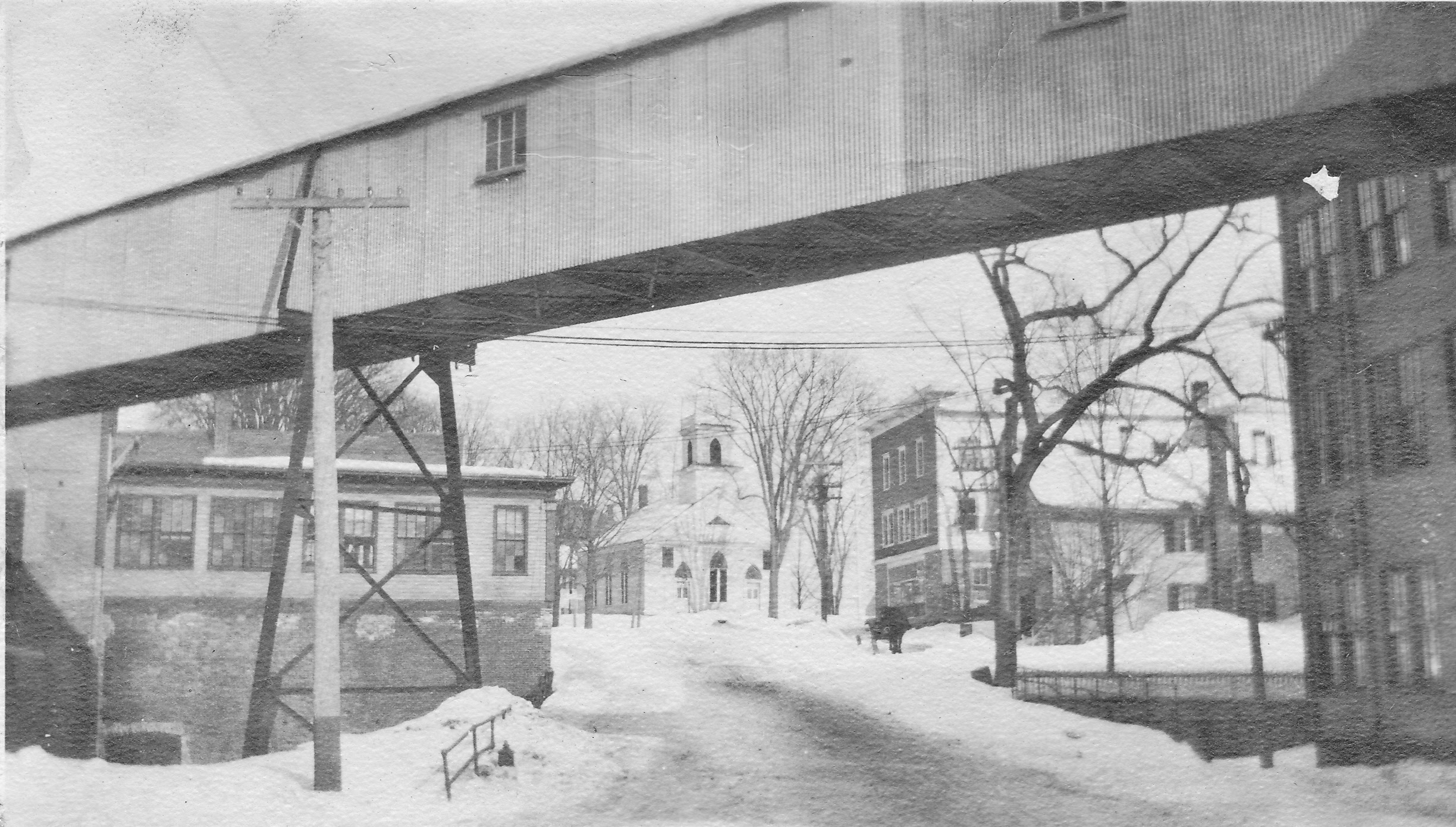
Main Street Crossover
*
Dutch Elm Disease took its toll on dozens of the old, large elm trees which lined the streets throughout the Village including those along Main Street most of which were removed along with many other trees on other streets.
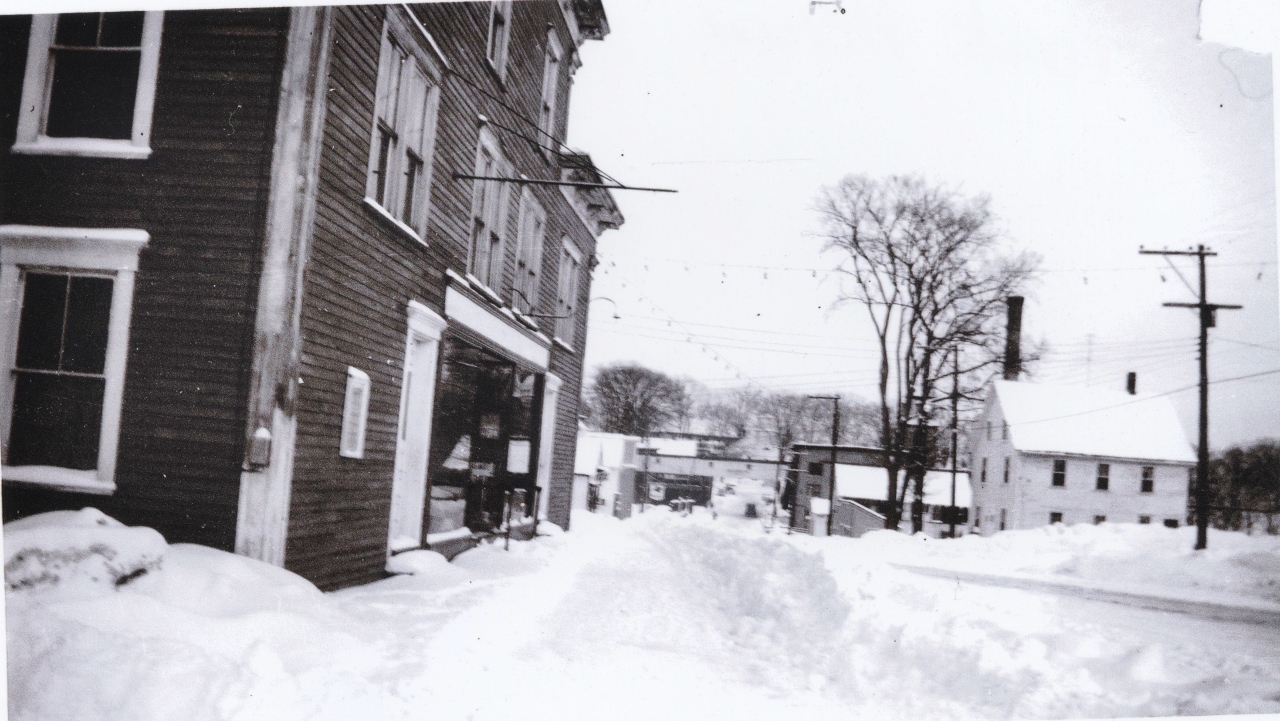
Main Street from Hartland Hardware Store following removal of Elm Trees
*
The former L. B. Wheeler Store had been home to the Sebasticook Lodge No. 141 Knights of Pythias for many years before they disbanded in 1956 and the building was given to Scott-Webb Memorial Hospital with plans to convert it into elderly patient housing. Sewer issues hindered the plan and it was sold in 1958 to the Hartland Corinthian Chapter to be used as their new Masonic Lodge which it stills uses today.
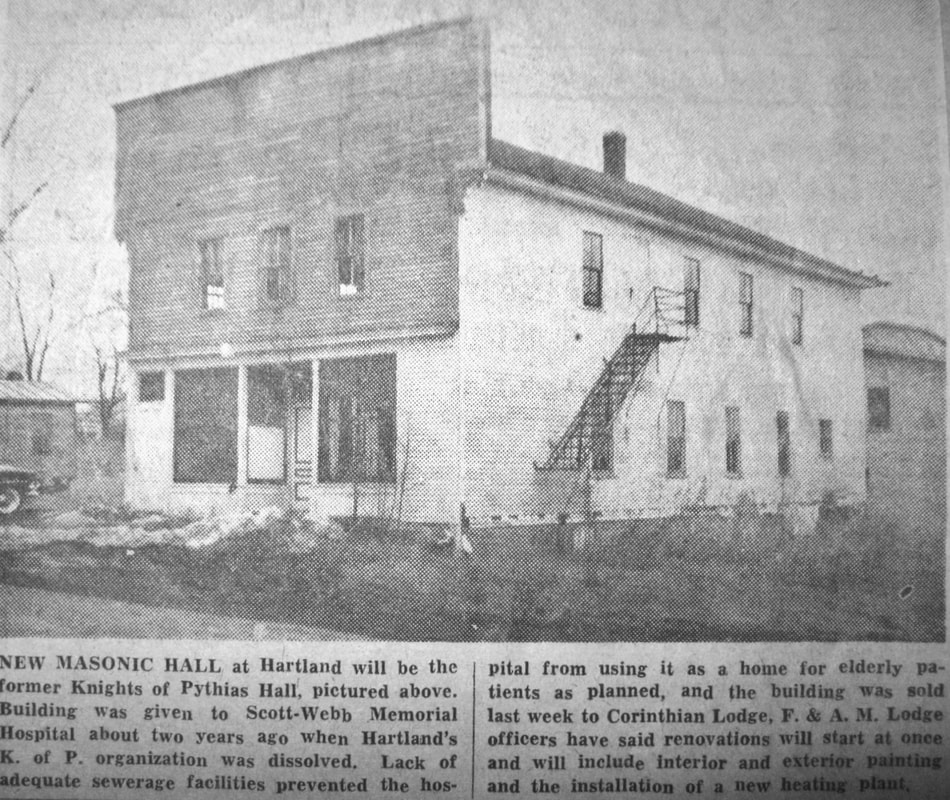
Former Knights of Pythias Building Article – January 13, 1958
*
Following Ralph Hamilton’s death on January 24, 1955, his 2nd wife Gertrude “Gertie” Pryor took over and did extensive renovations and reopened the business in March of 1955 as the Hartland Variety Store but passed away just a few months later in October. Ralph had no children with either of his wives so Gertie’s half-sister Vita Crocker and her husband Ernest A. Elliott of Portland took over the business until 1958 when it was purchased by Violet Bickford. She continued operating as the Hartland Variety Store, but locally the store was known simply as Vi’s and was a popular gathering place for years until 1977.
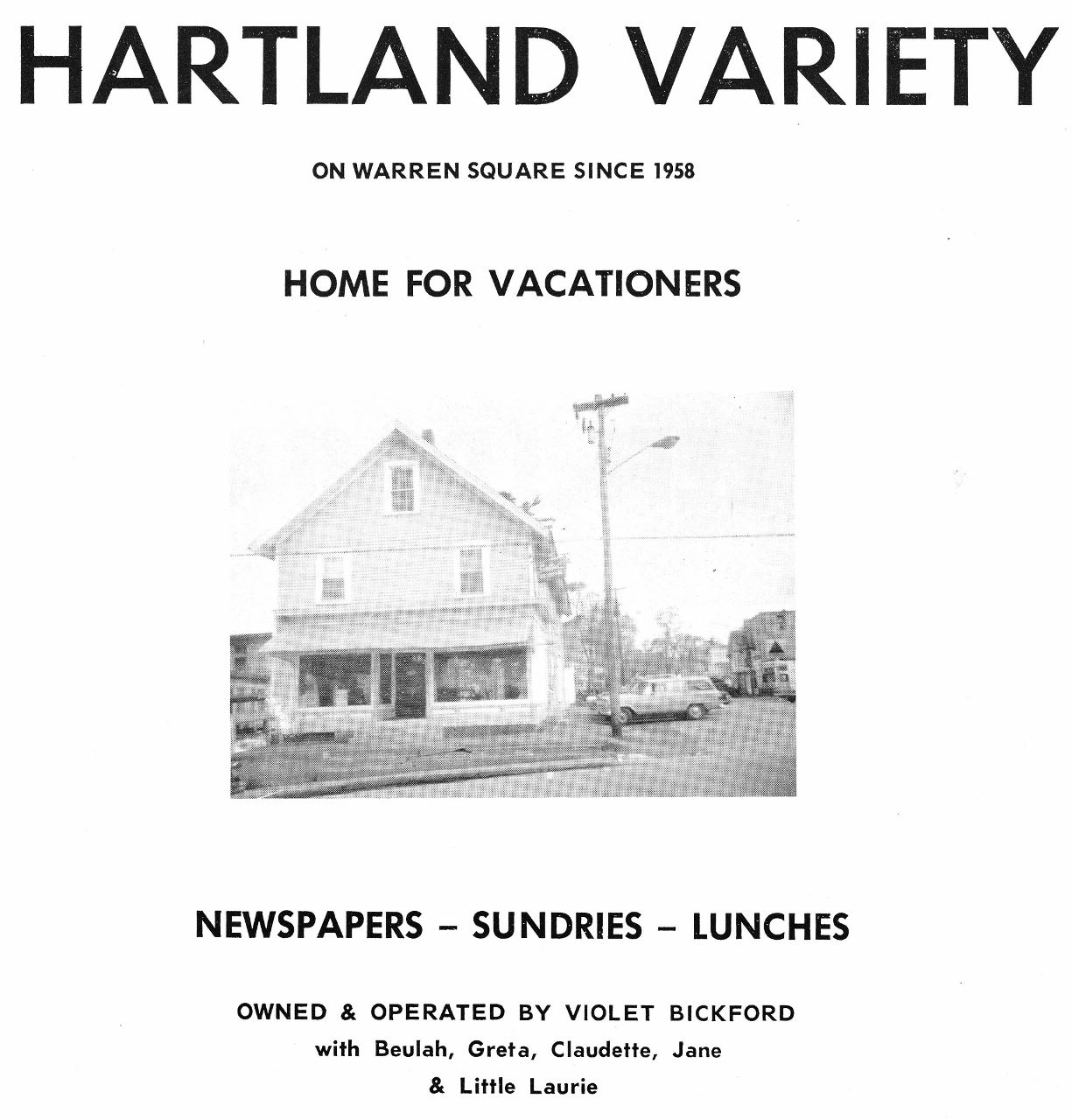
Hartland Variety Ad – 1970
*
In 1959, John Plummer purchased the Hartland Hardware Store from Harry Randlett and opened as the Hartland Emporium operating his business there until 1984. John would give the building its familiar red coat of paint making it instantly recognizable from a distance.
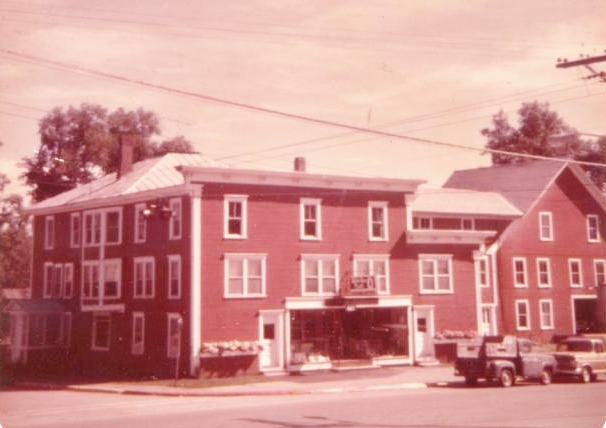
Hartland Emporium – 1970
(Photo courtesy of Cheryl Plummer)
*
In 1962, Meyer Kirstein began negotiations for the sale of the Irving Tanning Company. The company was sold to the Seagrave Corporation, a holding company consisting of diversified divisions whose shares were listed on the New York Stock Exchange.
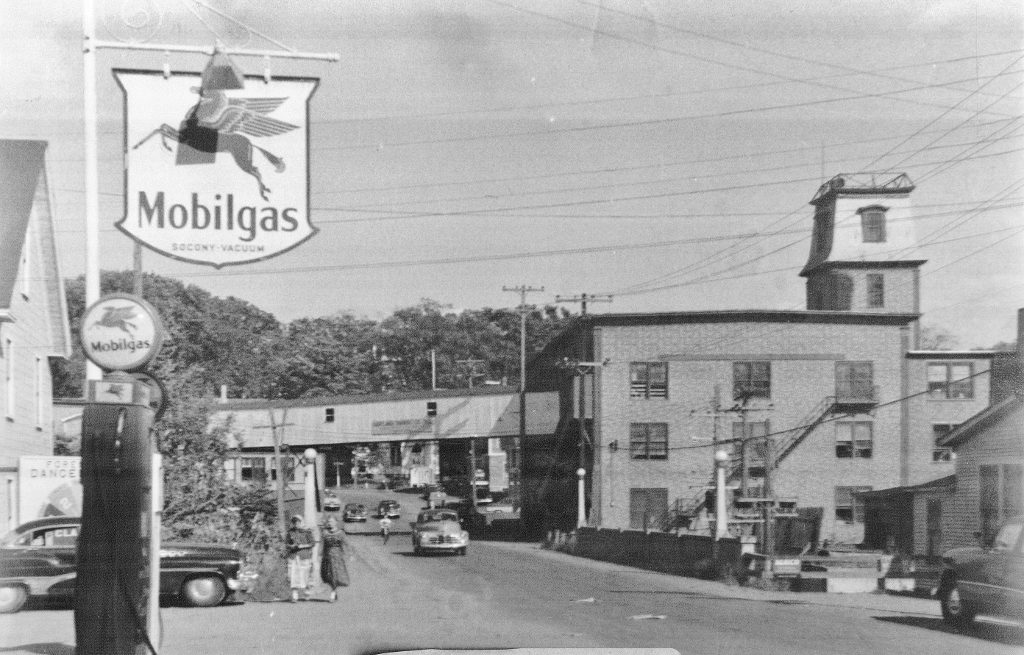
Main Street from Tapley’s Market – c1958
*
In 1962, the first dedicated United States Post Office building in Hartland was built on the corner of Main Street & Pittsfield Avenue which still services Hartland residents today. Postal Service in one form or another had been around for most of Hartland’s existence. In the Village, the earliest known Post Office location was at Fuller & Buck’s General Store at Warren Square before it was relocated to the Hartland Drug Store in 1878. In 1889, it moved to the new Linn Block on Commercial Street until 1922 when it was relocated at the Latty Block on Main Street.
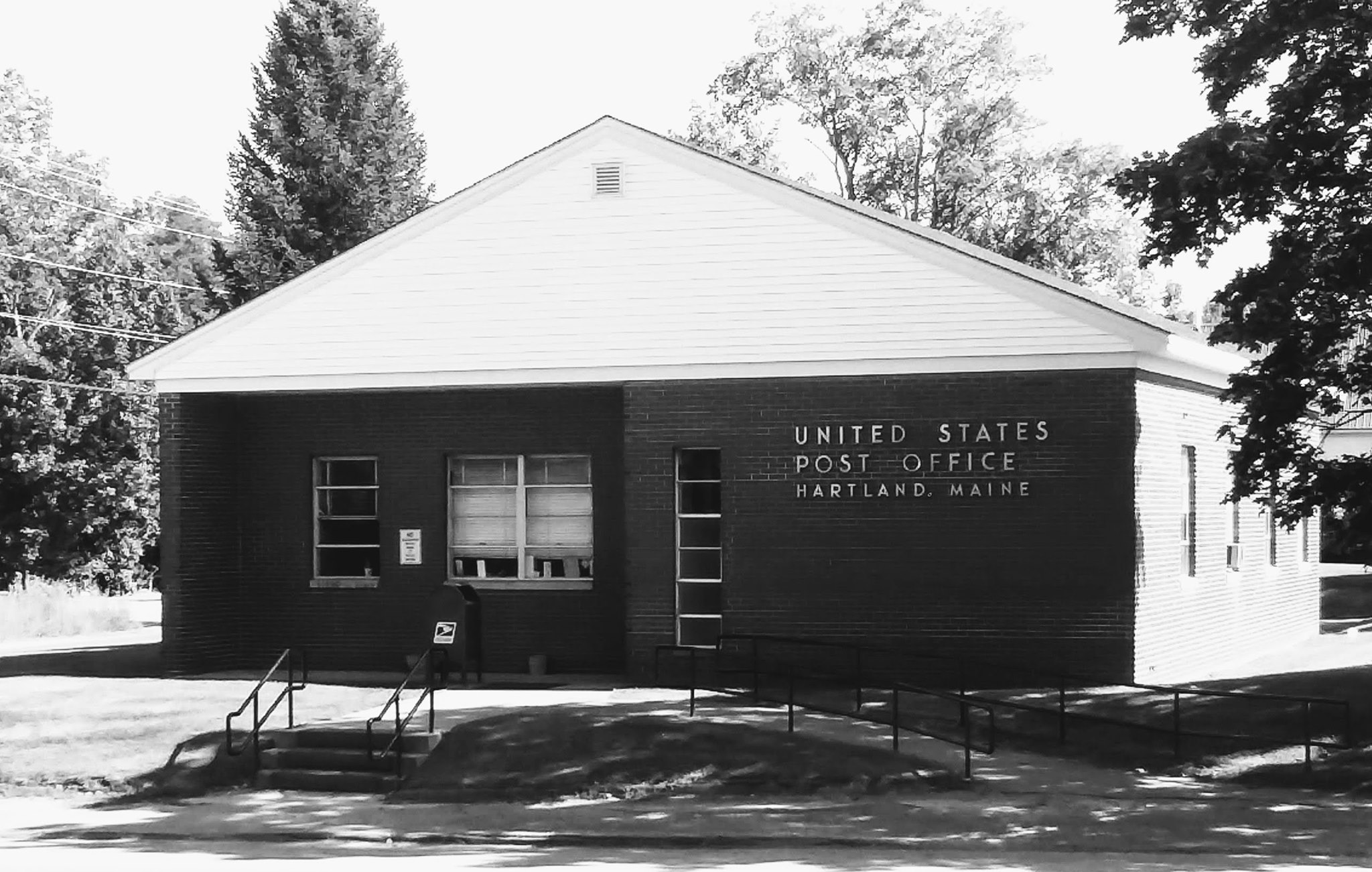
United States Post Office – 2019
(Photo courtesy of Will Bunker Photography)
*
In April of 1964, Steve & Sandra (Southard) McNichol purchased Maurice Hall’s Gas Station and operated it as Steve’s Gulf until the late 1970s.
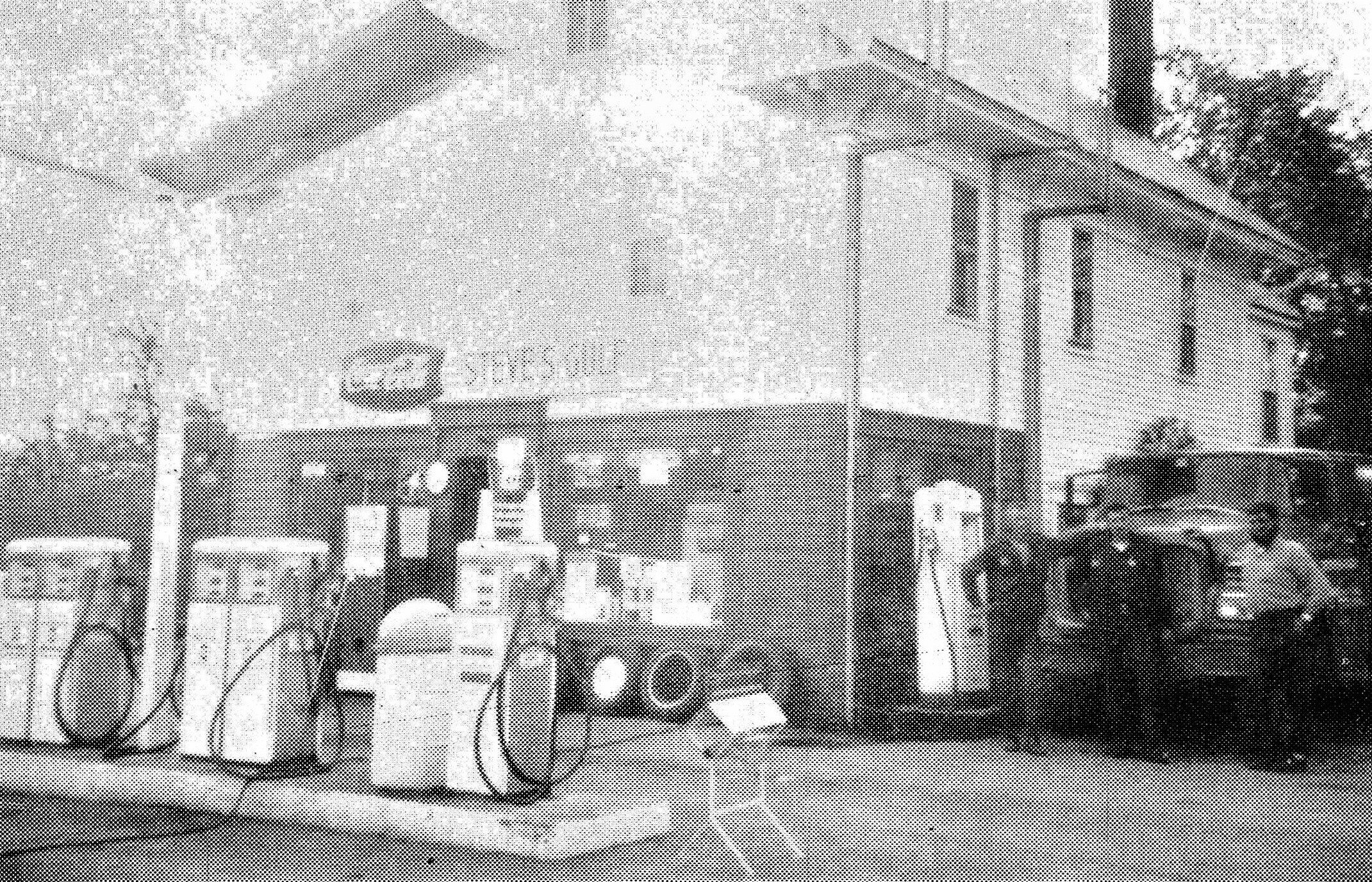
Steve’s Gulf – 1970
*
No matter the event, parade routes always travel on Main Street and have been a common sight celebrating various occasions over the years including Hartland’s Anniversary Celebrations, America’s Bicentennial Parade in 1976 and the Annual Memorial Day Parade.
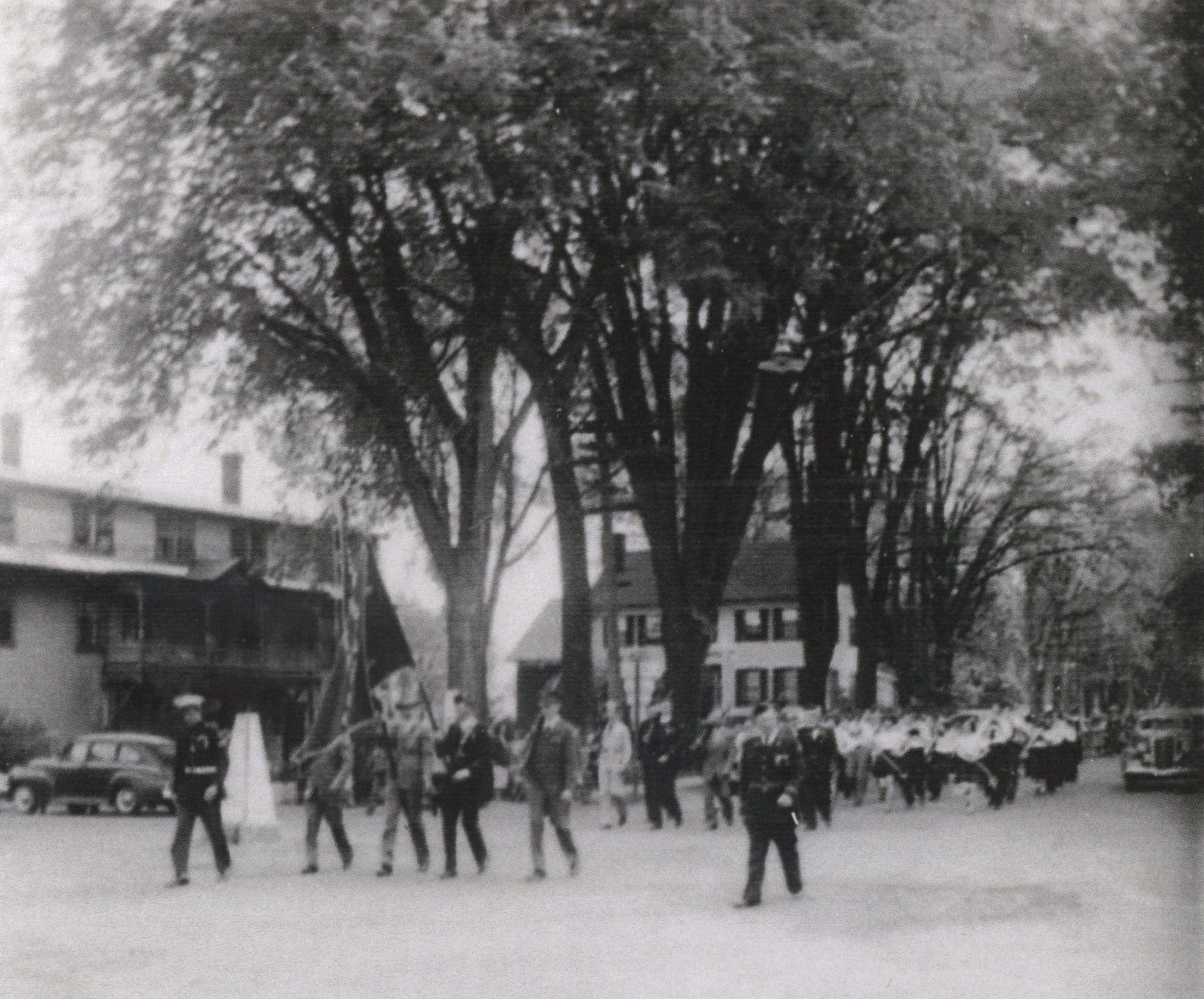
Memorial Day Parade – 1946
*
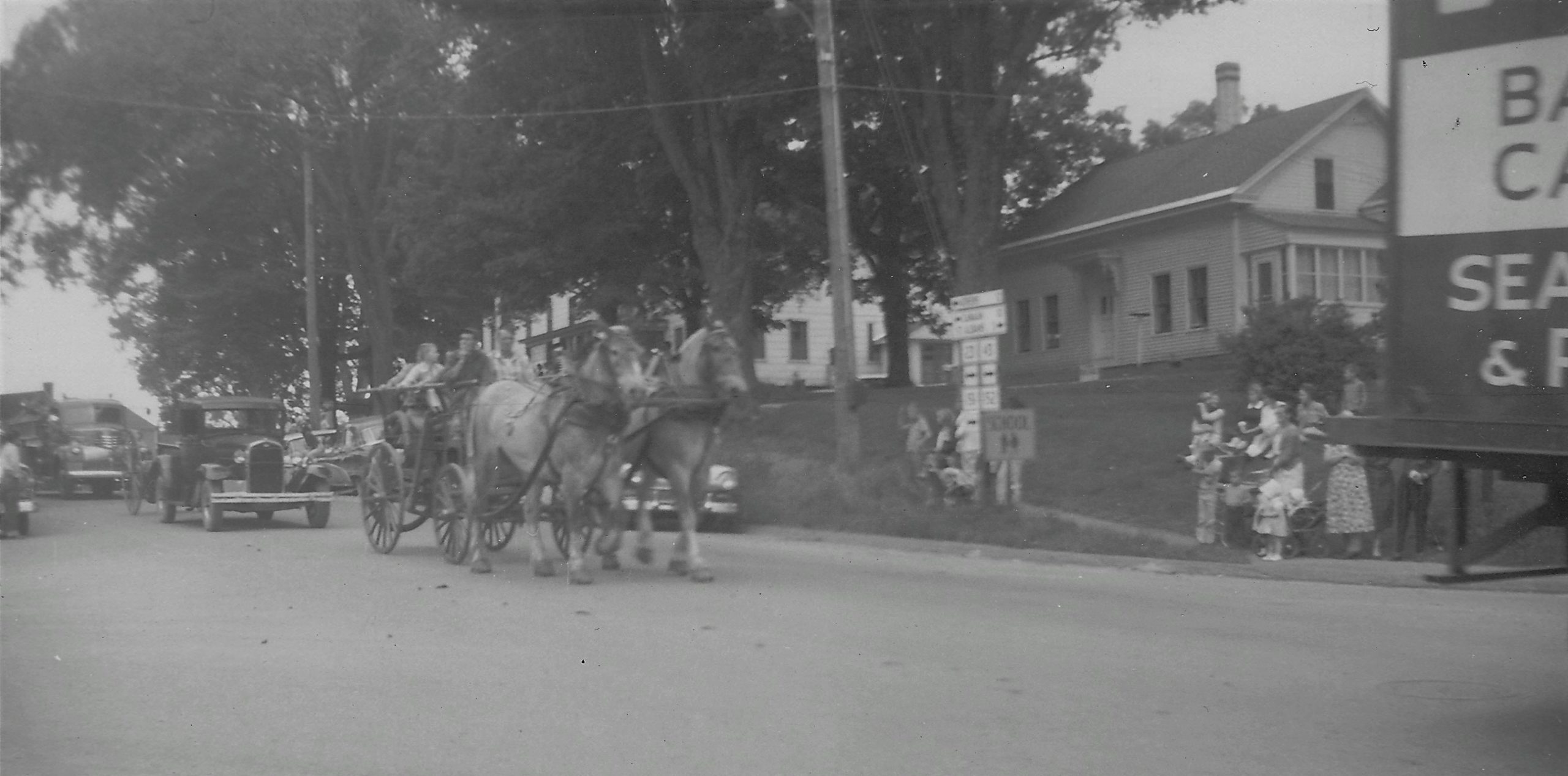
Claire Russell’s Team leading a parade at the corner of Main Street & Mill Street
*
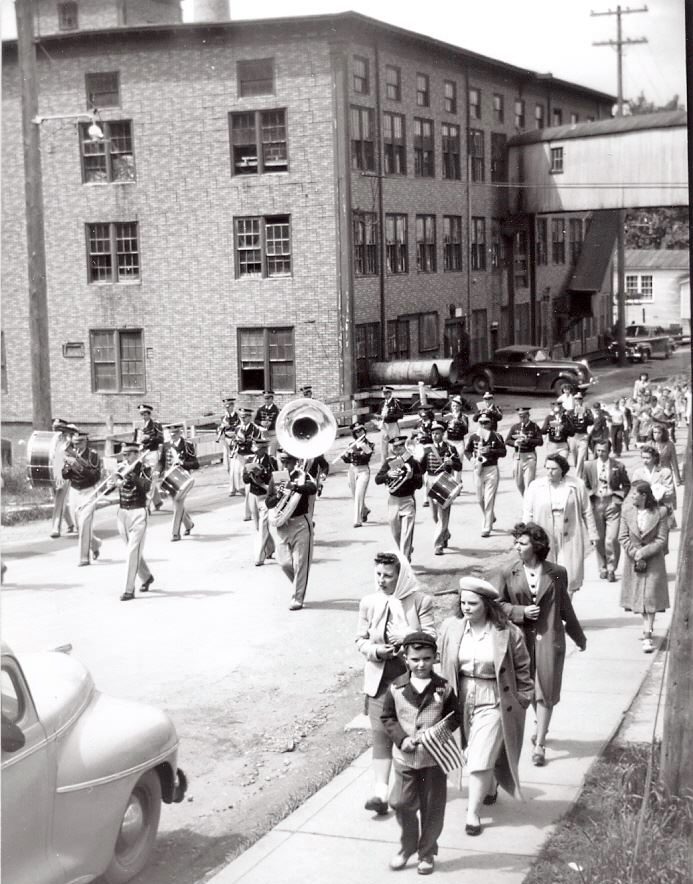
Hartland Academy Band marching past the Tannery
*
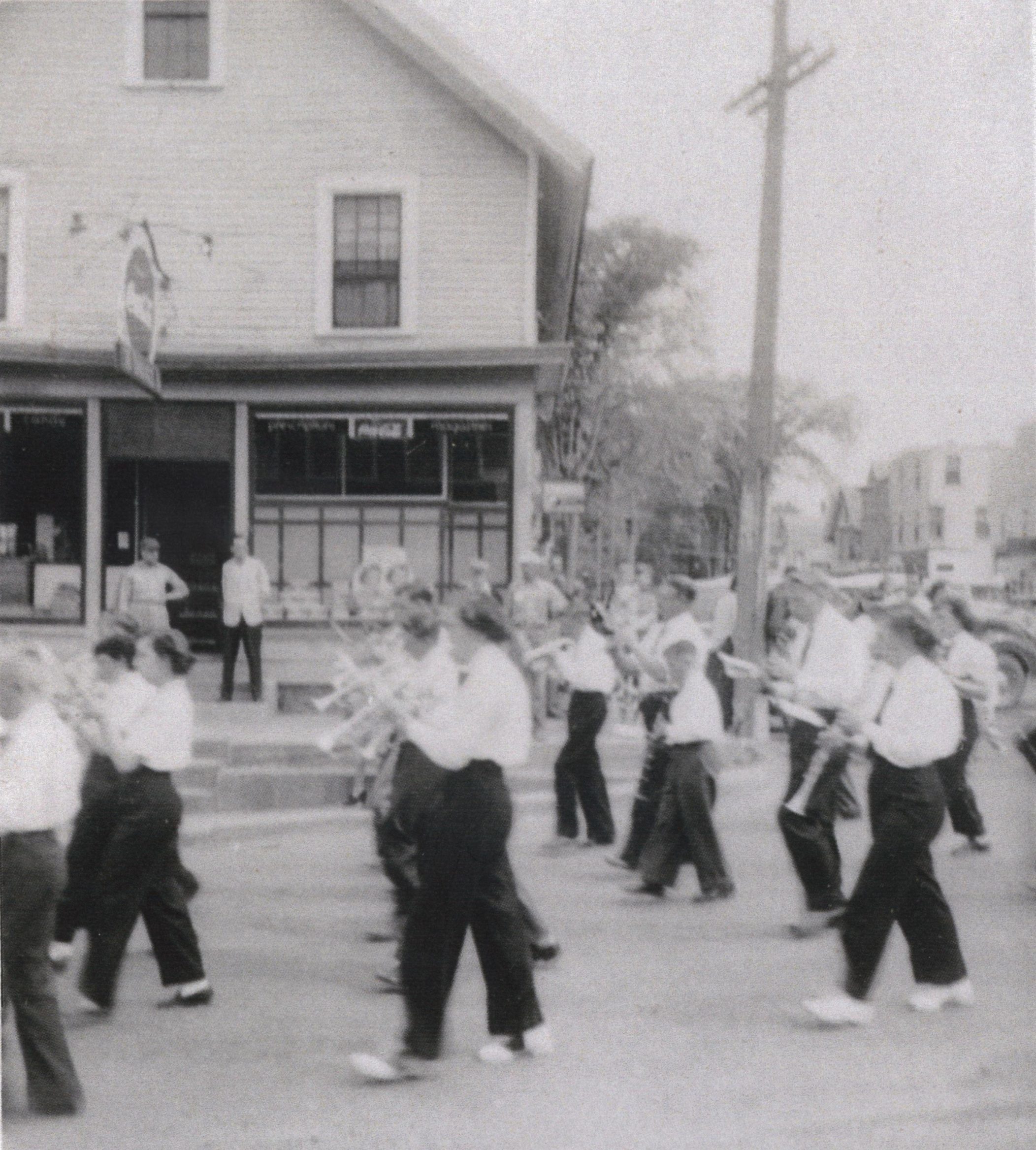
Hartland Academy Band passing Hartland Drug Store
*
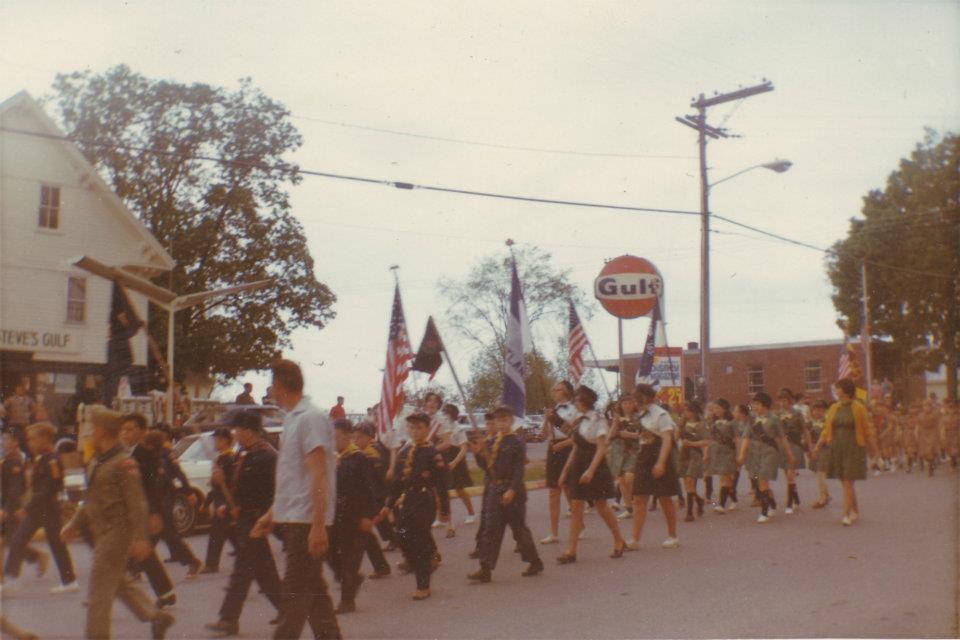
Scouts passing Steve’s Gulf – Memorial Day Parade – 1969
*

John Plummer leads the Hartland Sesquicentennial Parade past Steve’s Gulf – 1970
*
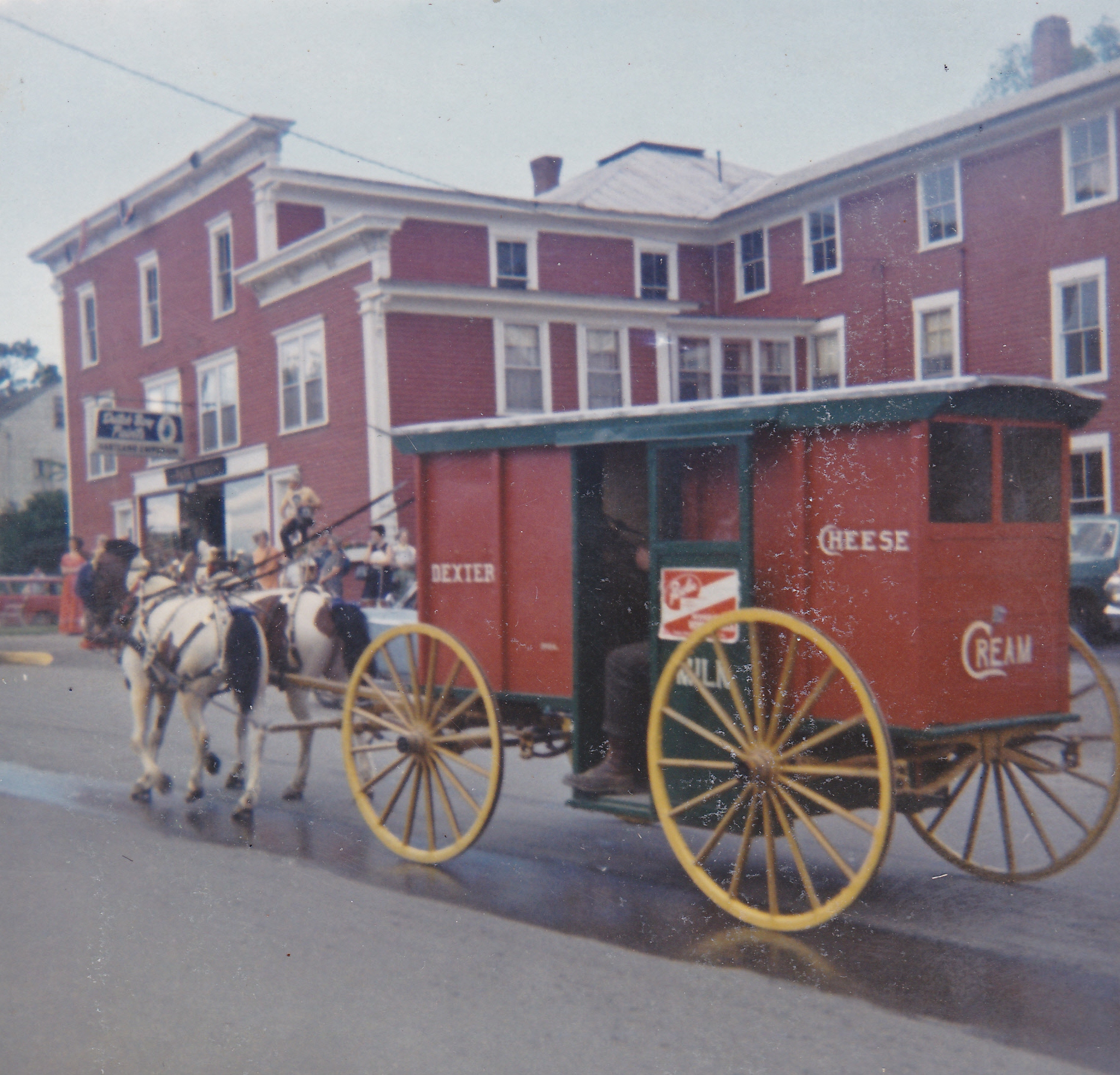
Hartland Sesquicentennial Parade passes The Hartland Emporium – 1970
*
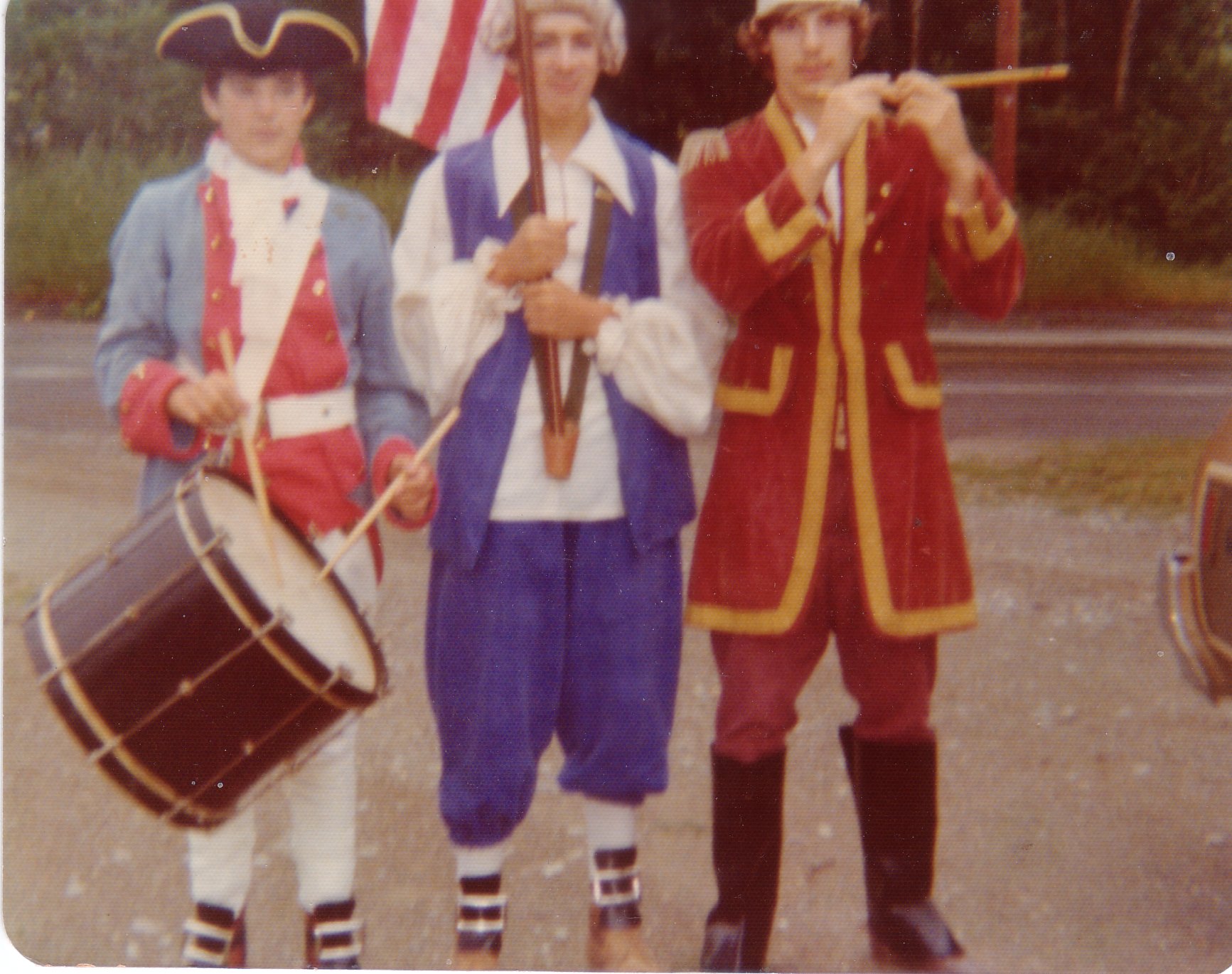
America’s Bicentennial Parade – Daniel McNichol, Andy Merrow & Rocky Leavitt – 1976
*
As railway passenger service declined into the 1950s, Maine Central Railroad began shedding many of its passenger services on their smaller branch lines by reducing them to freight only service. In 1966, the rail line extension out of Hartland to Great Moose Lake & Harmony was discontinued with those tracks and the Sebasticook River Trestle removed soon after. Limited freight rail service into Hartland from Pittsfield continued for several more years before it to was finally abandoned in 1983. The tracks were removed and the entire line eventually became part of the trail system for snowmobiles and summer off-road vehicles. Less than 100 years after it was built in 1886, railroad service to Hartland was gone forever.
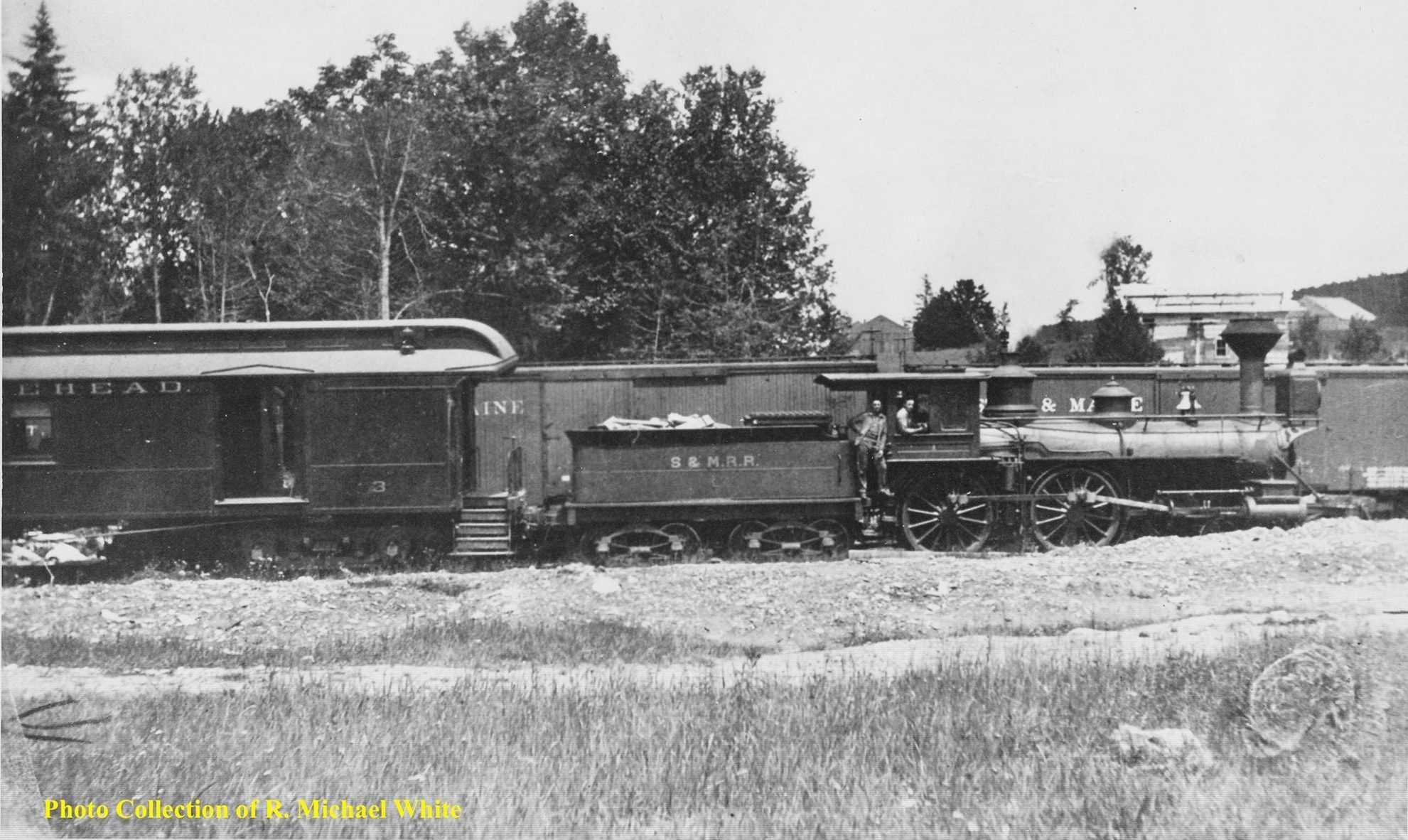
Sebasticook & Moosehead Railroad – Locomotive #1 – “The Hartland” – c1888
(Photo courtesy of R. Michael White)
*
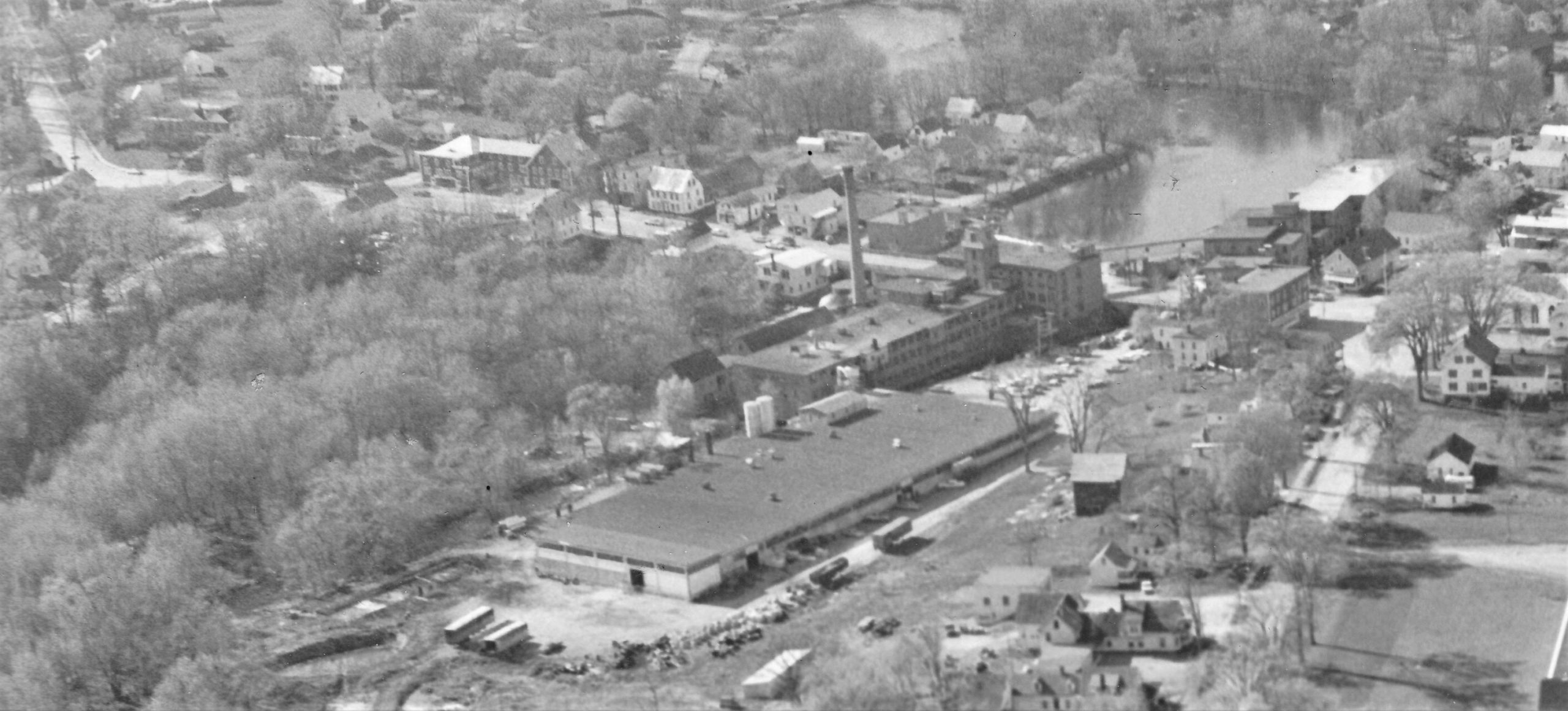
Aerial View of Main Street – 1970
*
In 1972, Scott-Webb Memorial Hospital was sold and was later converted into the Sanfield Rehabilitation and Living Center. In 1984, North Country Health Care Associates purchased the facility and continue operating it today under the Sanfield banner.
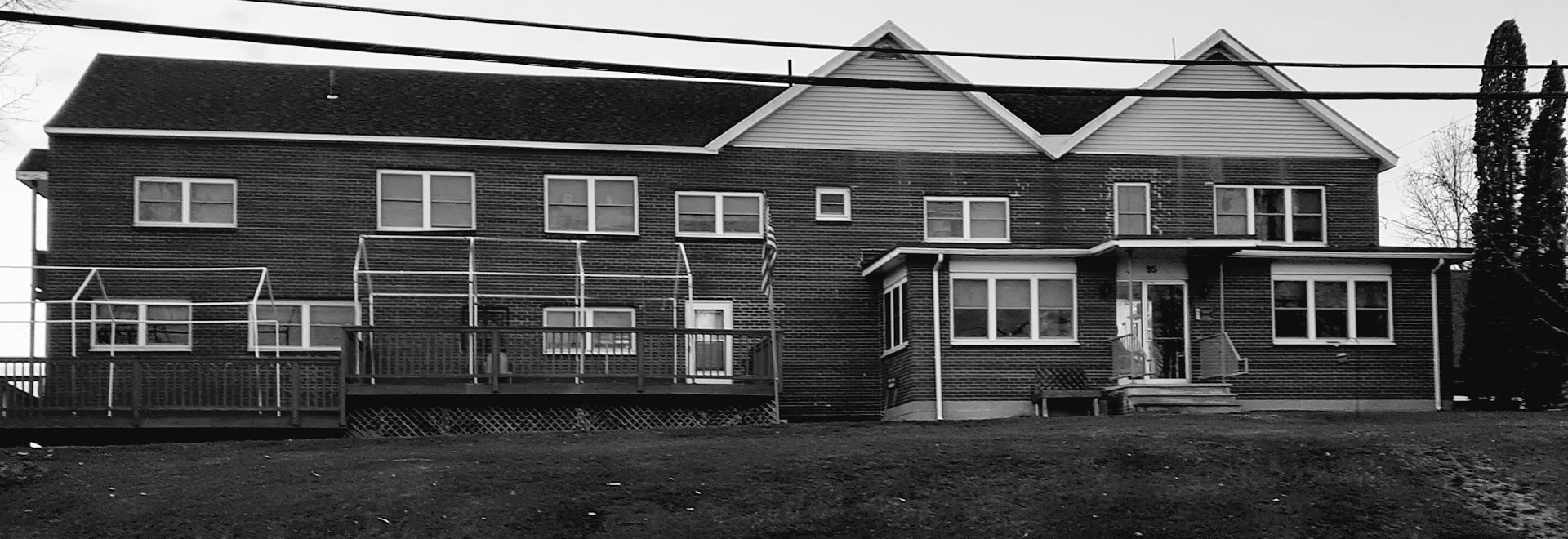
Sanfield Rehabilitation and Living Center – 2019
(Photo courtesy of Will Bunker Photography)
*
In 1976, John Plummer opened “The Coffee Shoppe” in the center section of the building which became a popular gathering spot for many locals. He sold/rented the restaurant business to Harry & Hope Graff who renamed it “The Park House Restaurant”. Harry Finnemore, Jr and his wife, Donnice eventually took over the restaurant business. Plummer and his business partner sold the building and businesses in 1984.
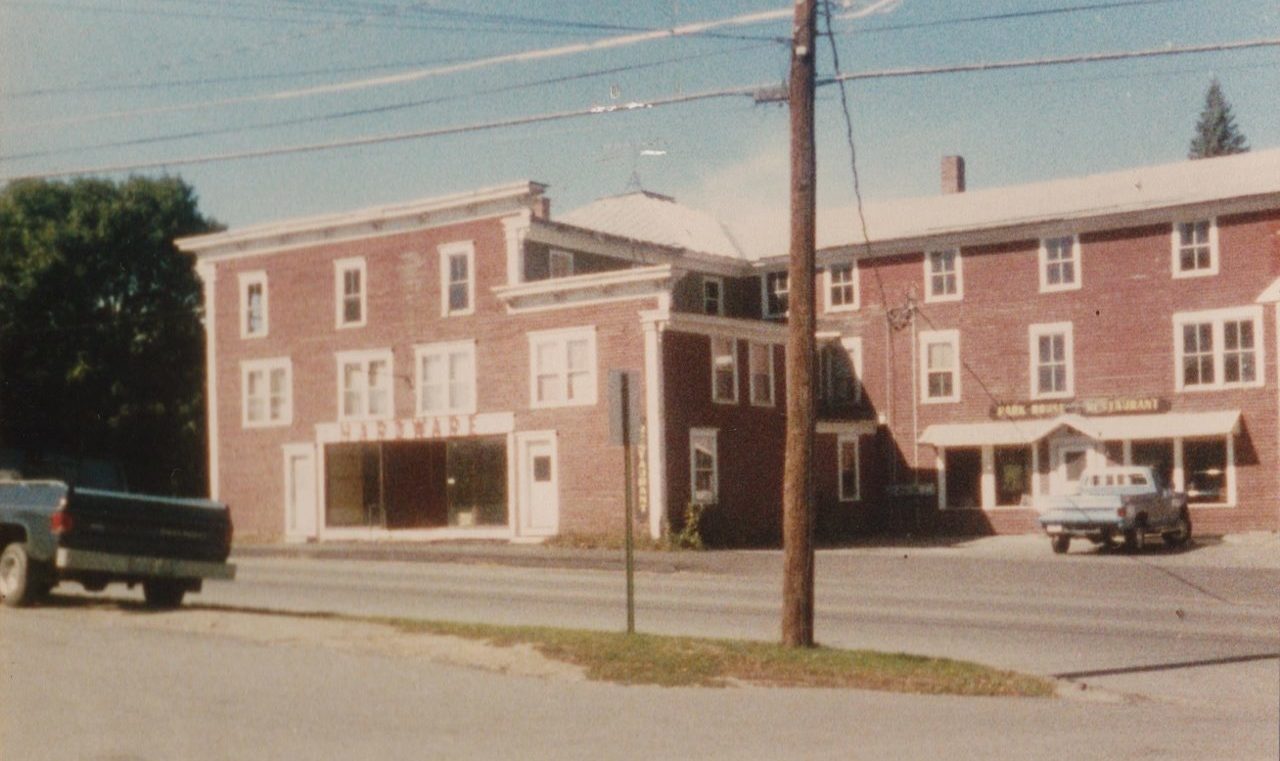
The former Hartland Emporium & Park House Restaurant – 1984
*
In 1977, Steve & Sandra McNichol’s daughter Annette and her husband Jim Towle continued operations as a full service gas station and garage as Jim’s Mobil. The business was sold around 1984 to Buddy Smart and became Smart’s Garage.
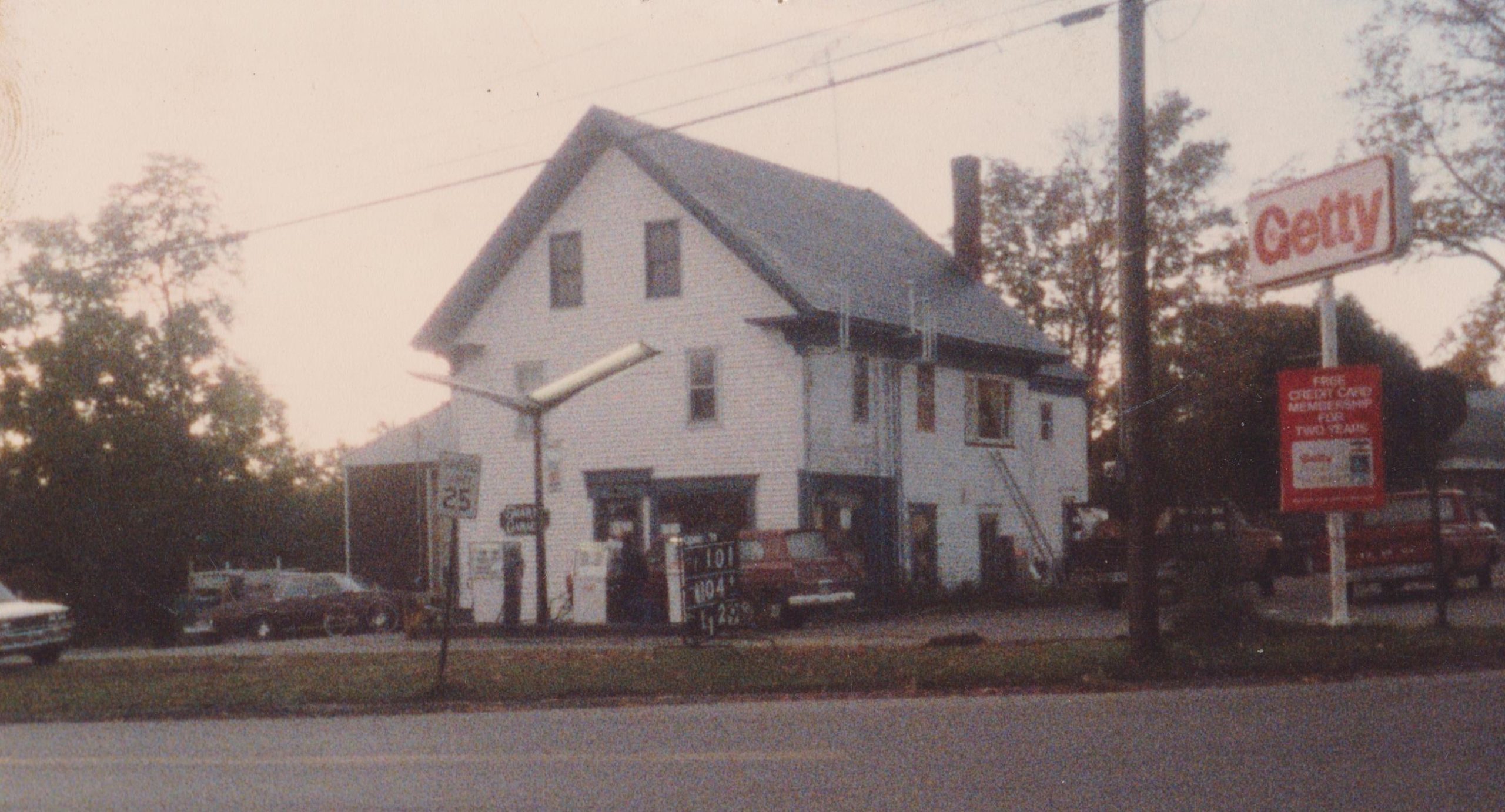
Smart’s Garage – 1984
*
In the early 1980s, a major new exterior siding project at Irving Tanning revitalized the looks of the century old buildings.
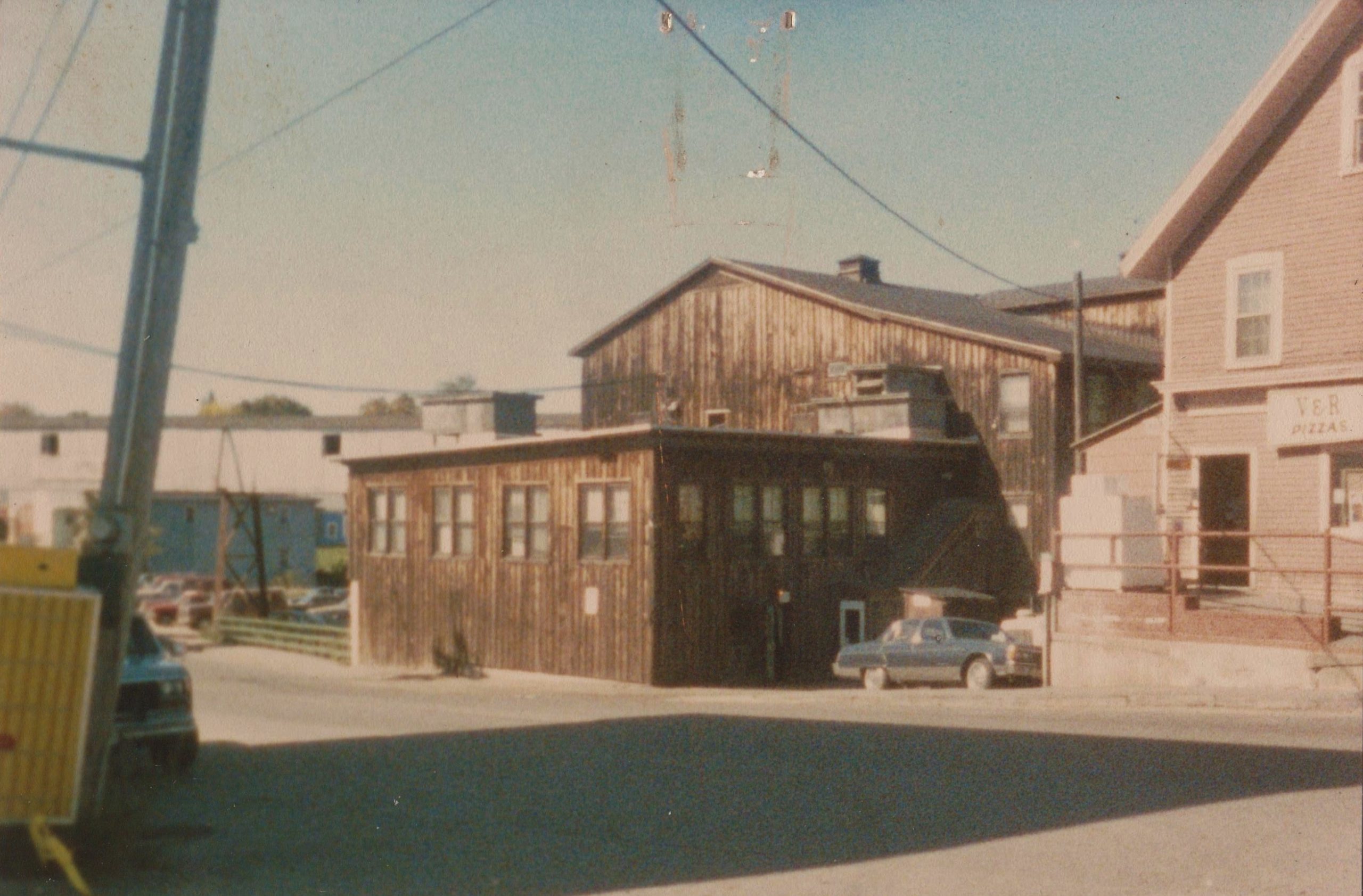
Irving Tanning Company with new Siding – 1984
*
In 1981, Rocky & Vicki (Getchell) Rice moved their V & R Variety business from their previous location on Commercial Street into the former Hartland Drug Store Block at the corner of Main Street. In 1987, they moved the business to the former Wright’s Store Block in Warren Square.
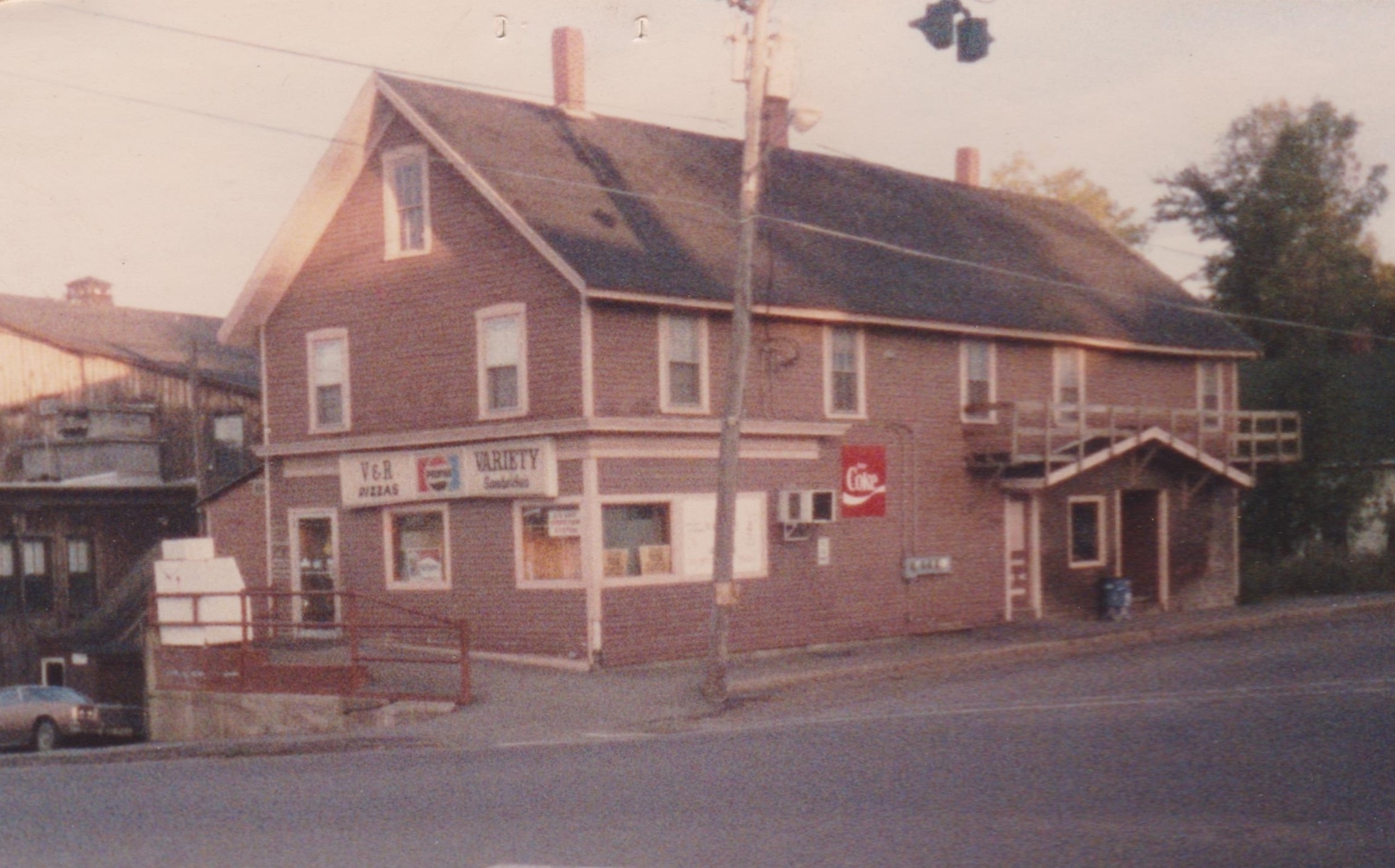
V & R Variety Store – 1984
*
In 1981, Hartland Citizens were presented with 3 options for a proposed Lower Dam Project to alleviate future flooding issues. The 3 proposals were similar except for the fate of the old timber dam; to either leave it, remove it or replace it.
Plan A: Leave the Lower Dam intact, block the river through the Raceway Bridge side of the island, surround the tannery area with retaining walls and build a dike on the Great Moose Lake outlet that feeds from North Street to Mill Pond.
Plan B: Remove the Lower Dam, block the river through the Raceway Bridge side of the island, surround the tannery area with retaining walls, build a dike on the Great Moose Lake outlet that feeds from North Street to Mill Pond and build a water pipe to supply water for the tannery and fire department in lieu of losing the Mill Pond behind the lower dam.
Plan C: Replace the Lower Dam with a new dam which would automatically open for flood stage water levels and remain closed the remainder of the time keeping the Mill Pond intact. This plan also included blocking the river through the Raceway Bridge side of the island, surrounding the tannery area with retaining walls and building a dike on the Great Moose Lake outlet that feeds from North Street to Mill Pond.
*
Hartland Citizens voted to choose Plan B and construction began soon after.
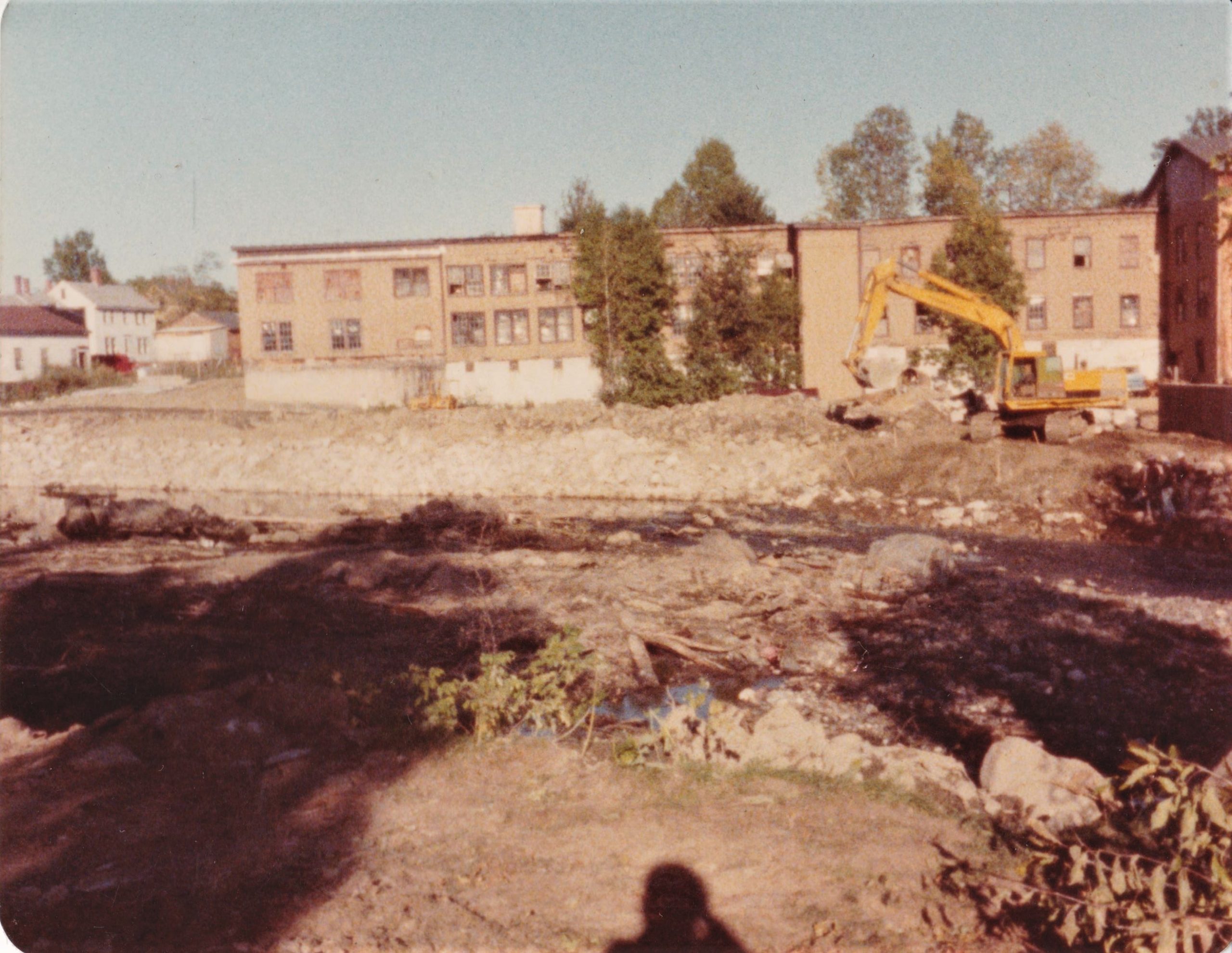
Construction on the project above the Lower Dam
*

Construction on the project above the Lower Dam
*
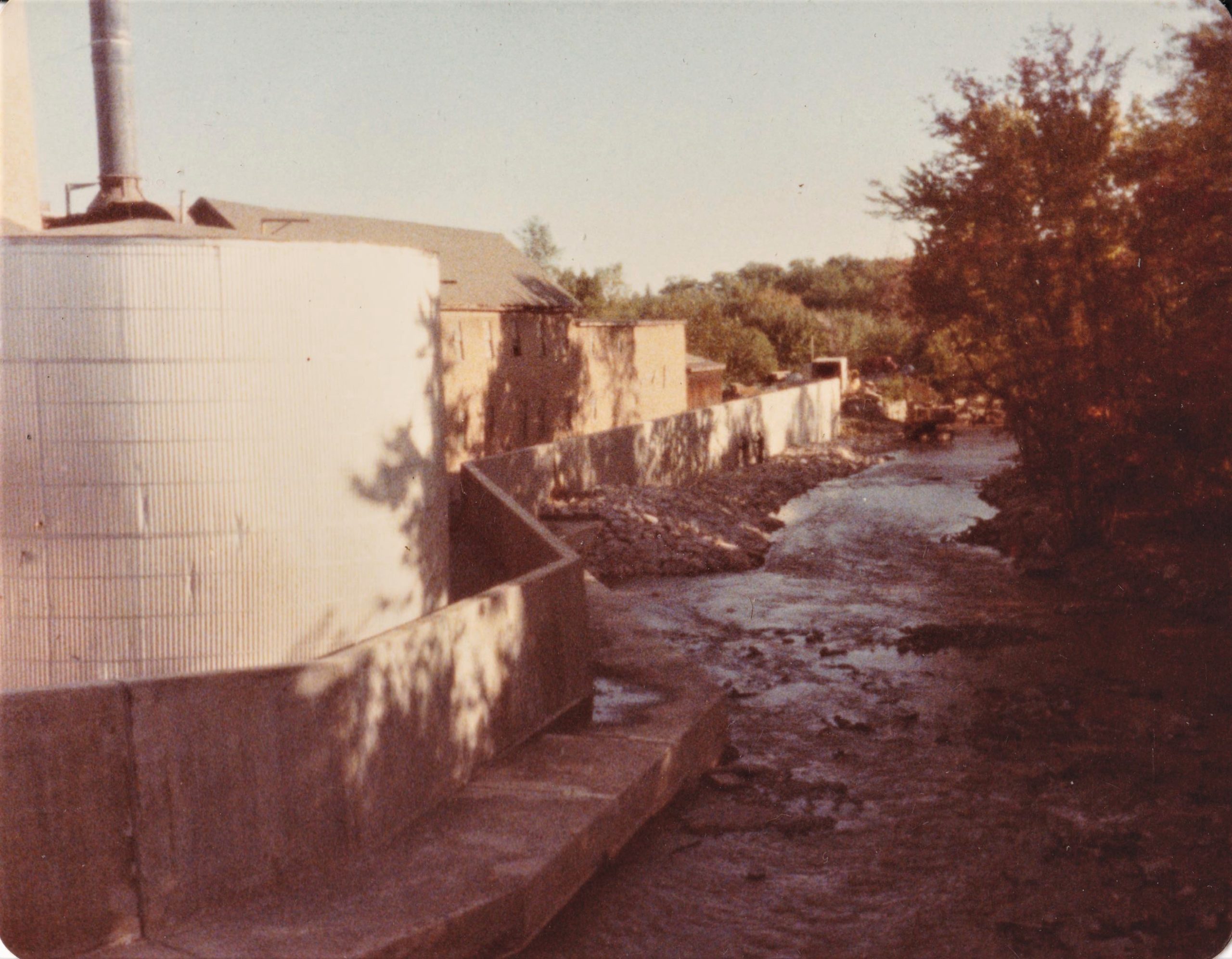
Construction on the project below the Lower Dam
*
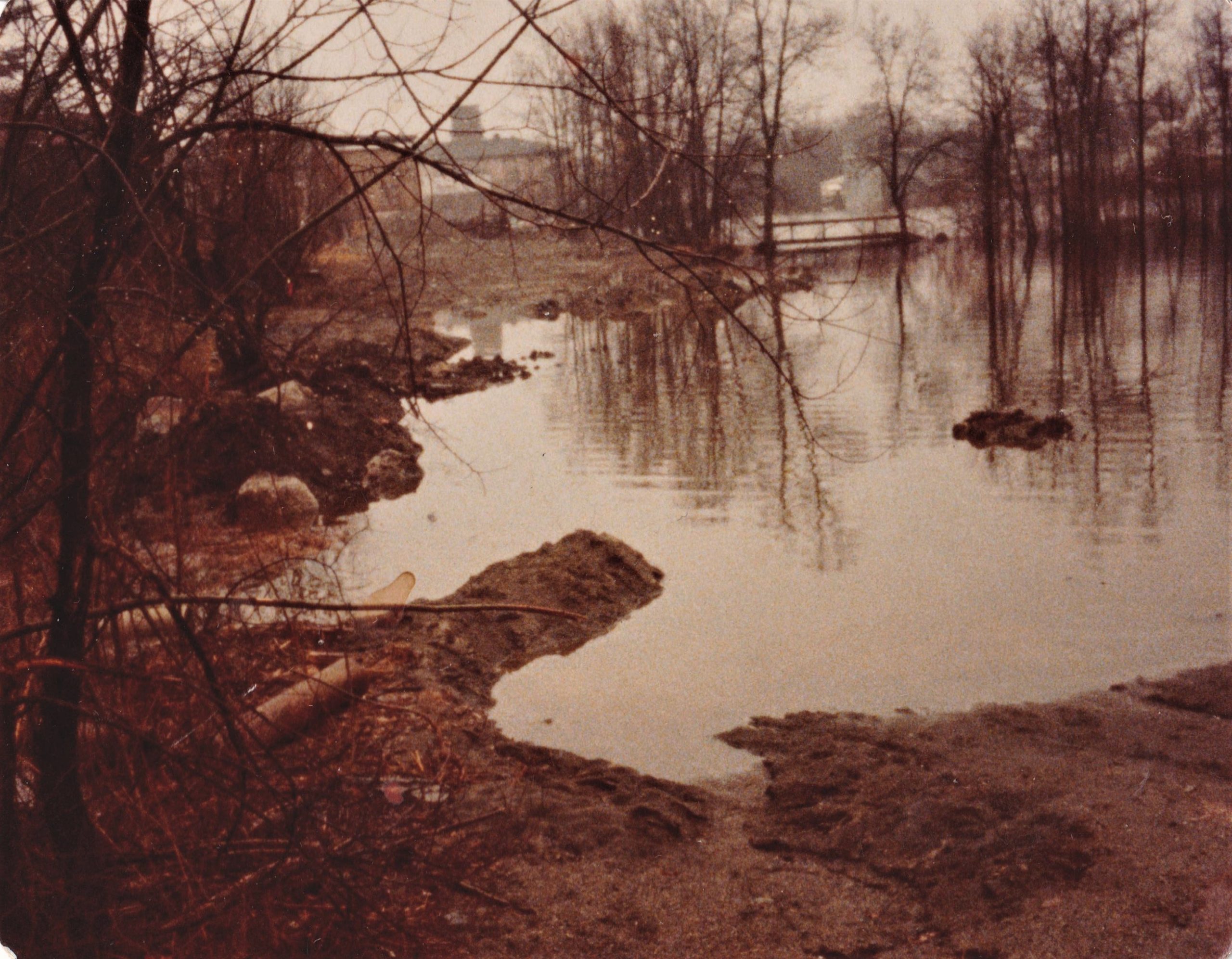
Mill Pond Lagoon from Water Street before the dike was built on the Great Moose Lake outlet to North Street
*
The completed project with the Lower Dam removed, island raceway outlet blocked and retaining walls built.
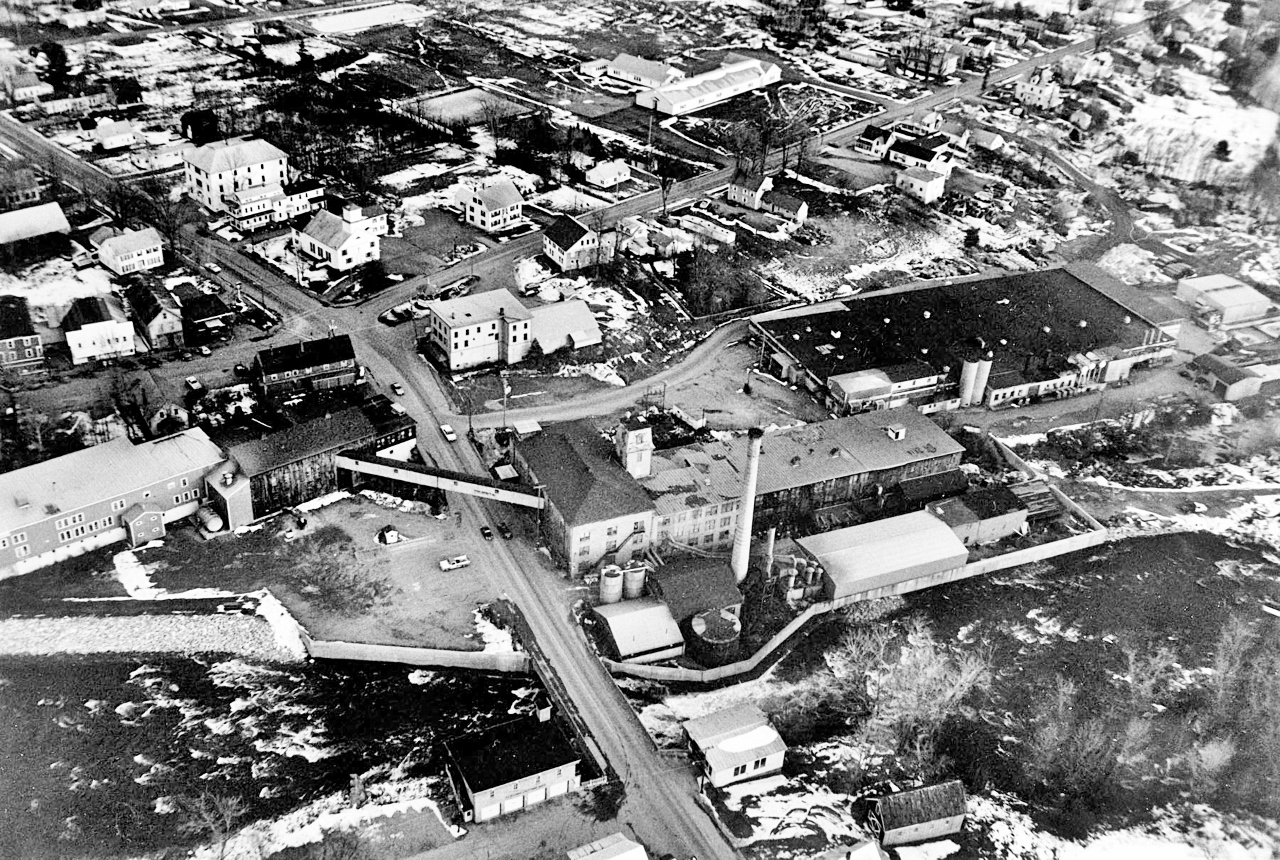
Aerial View of Completed Lower Dam Project – 1986
*
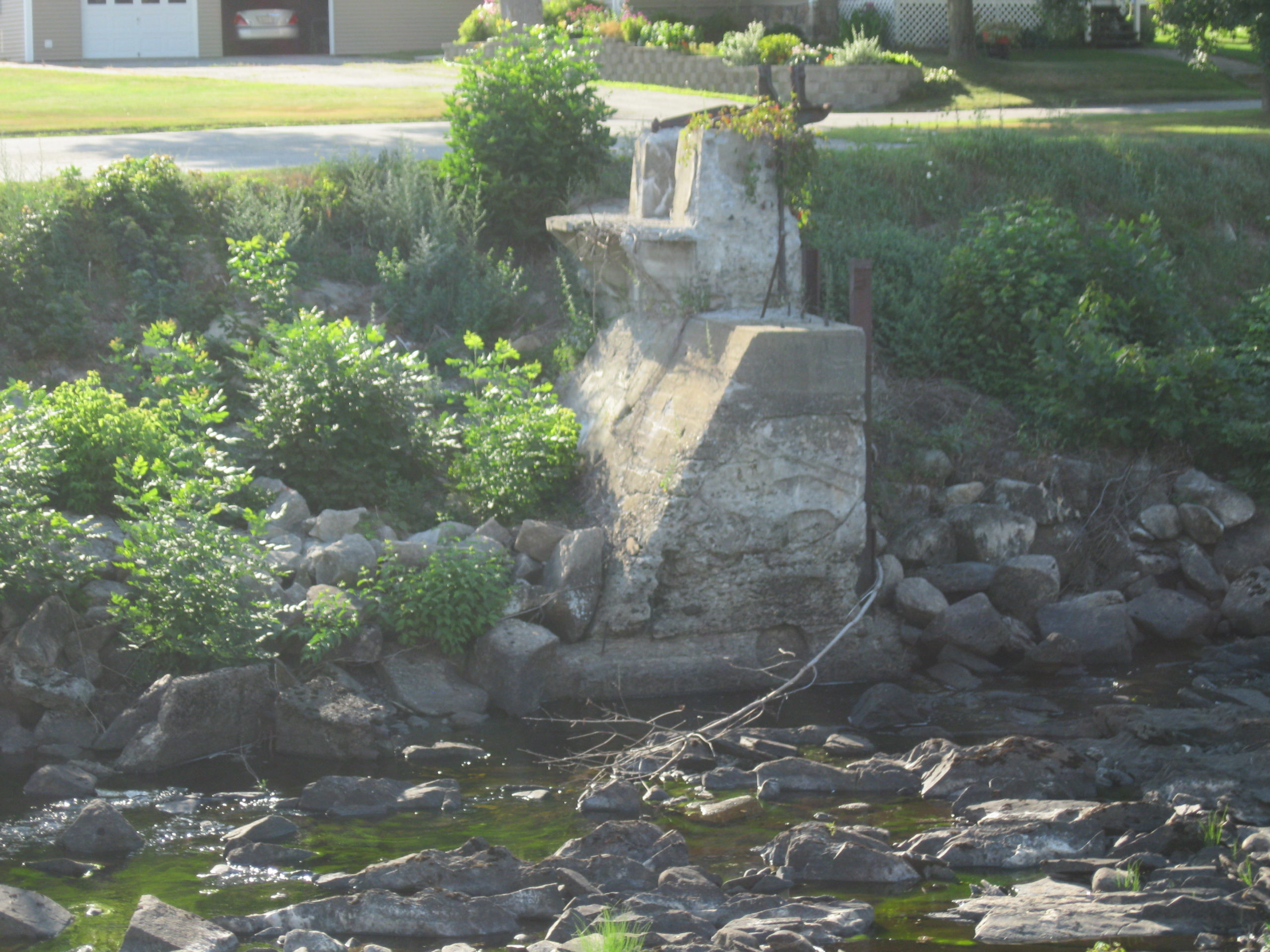
Remains of the Lower Dam – 2014
(Photo by Bruce Fowler)
*
The Lower Dam Project was soon tested to its full capacity when the infamous “April Fool’s Day Flood” in 1987 ravaged Main Street and the surrounding area. Fortunately, the rebuilt region with its new retaining wall prevented major damage during this catastrophic flooding event.
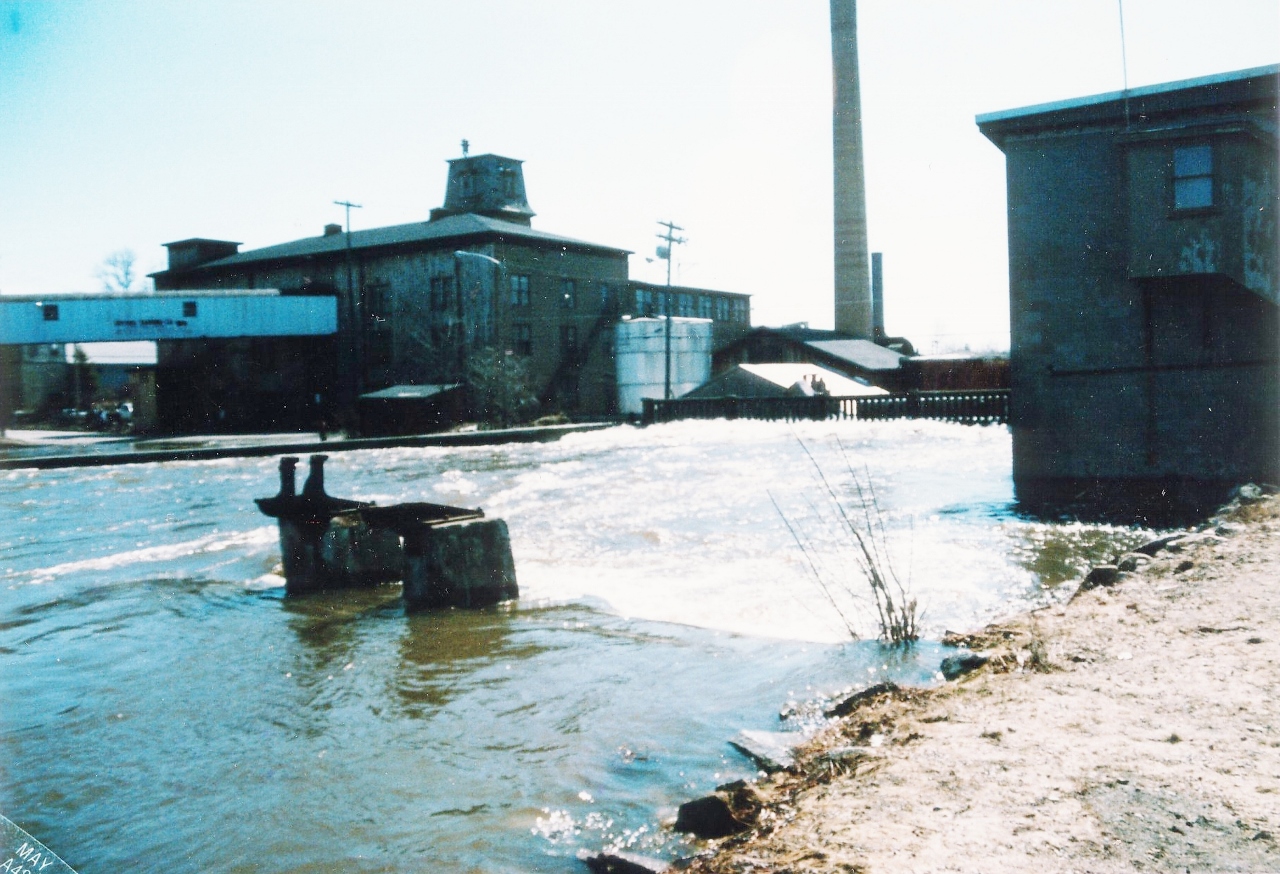
April Fool’s Day Flood – 1987
(Photo courtesy of Joe & Christine Lewis)
*
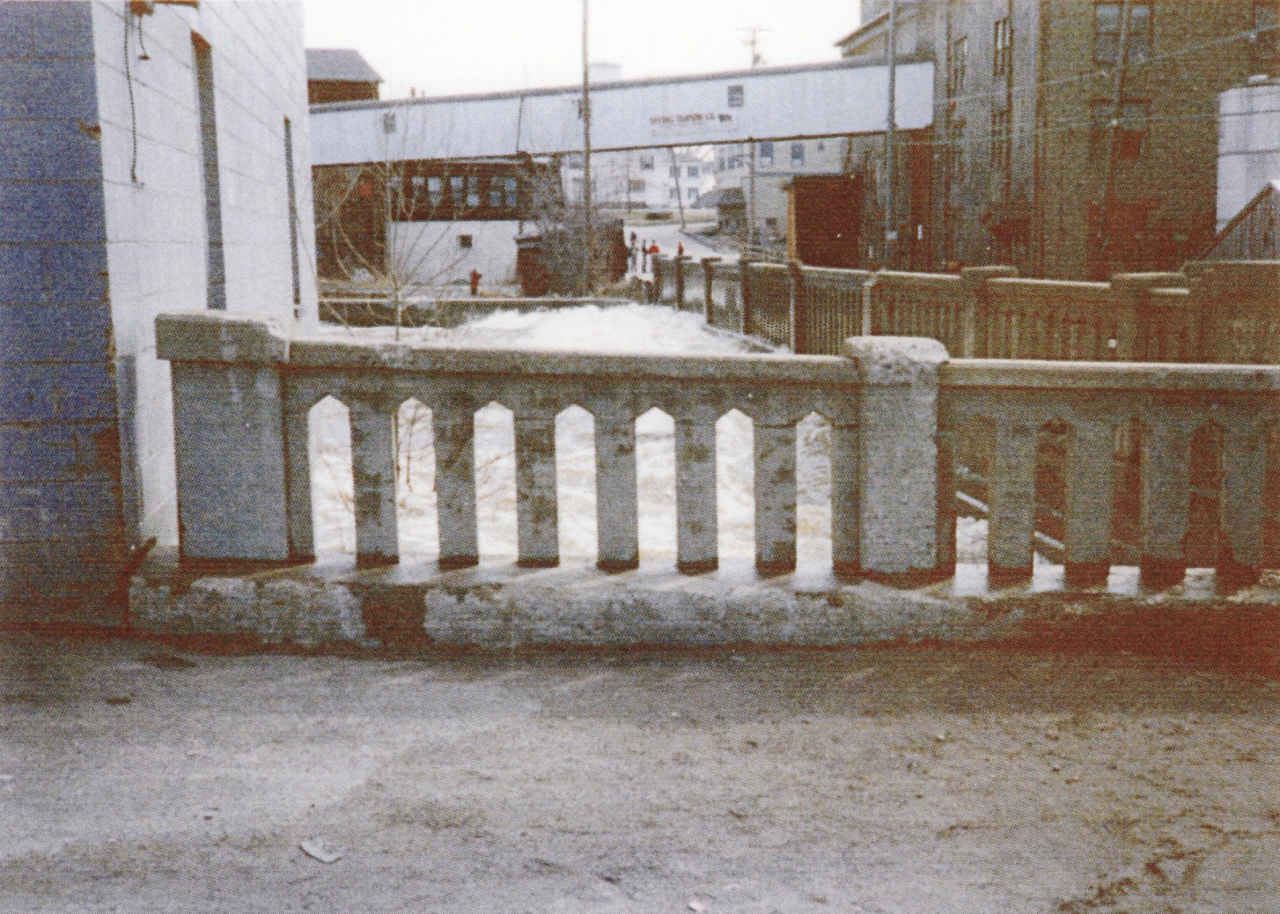
April Fool’s Day Flood – 1987
(Photo courtesy of Joe & Christine Lewis)
*
Following their retirement in 1979, Keith & Estelle (Randlett) Tapley sold their building and business which continued operating as a store.
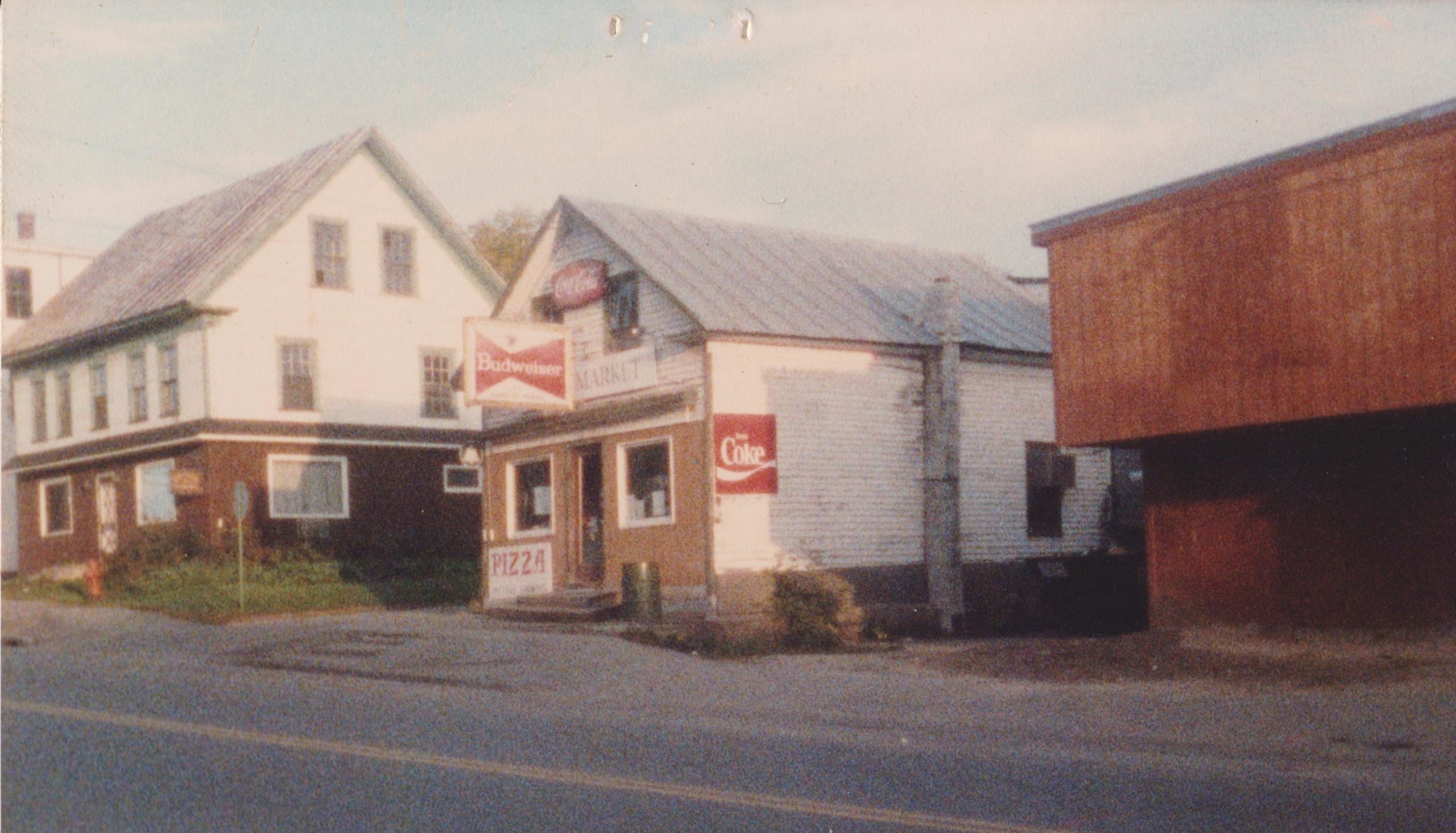
(L-R) Former Harrington Block, Lewis’ Market and former Hartland Grain & Grocery Store – 1987
*
By 1987, several renovations were made at Smart’s Garage including the addition of a new attached garage.

Smart’s Garage – 1987
*
Mildred (Latty) Gregoire eventually sold the building her father Edward E. Latty built in 1896 and several renovations have been made since her death in 1993. The building, which was once home to the Hartland Post Office, still stands today.
The former Harrington Block was also eventually sold and its large attached barn razed. It has since been the location of a chiropractor’s office, credit union and a law office and still stands today as a private residence.
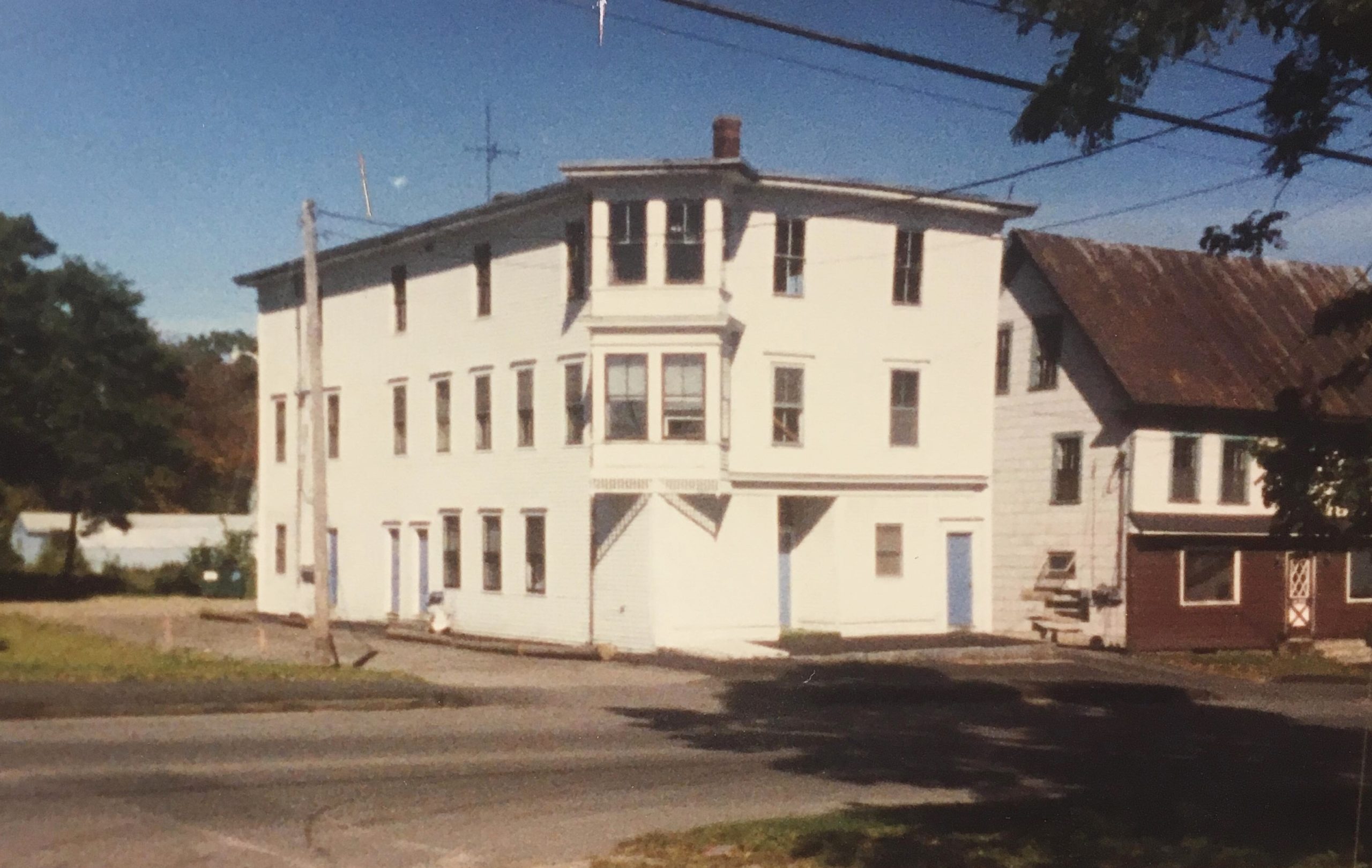
(L-R) Former Latty Block & Harrington Block – 1987
*
The former Harrington Block was again sold in 2014 and was remodeled as a private residence.
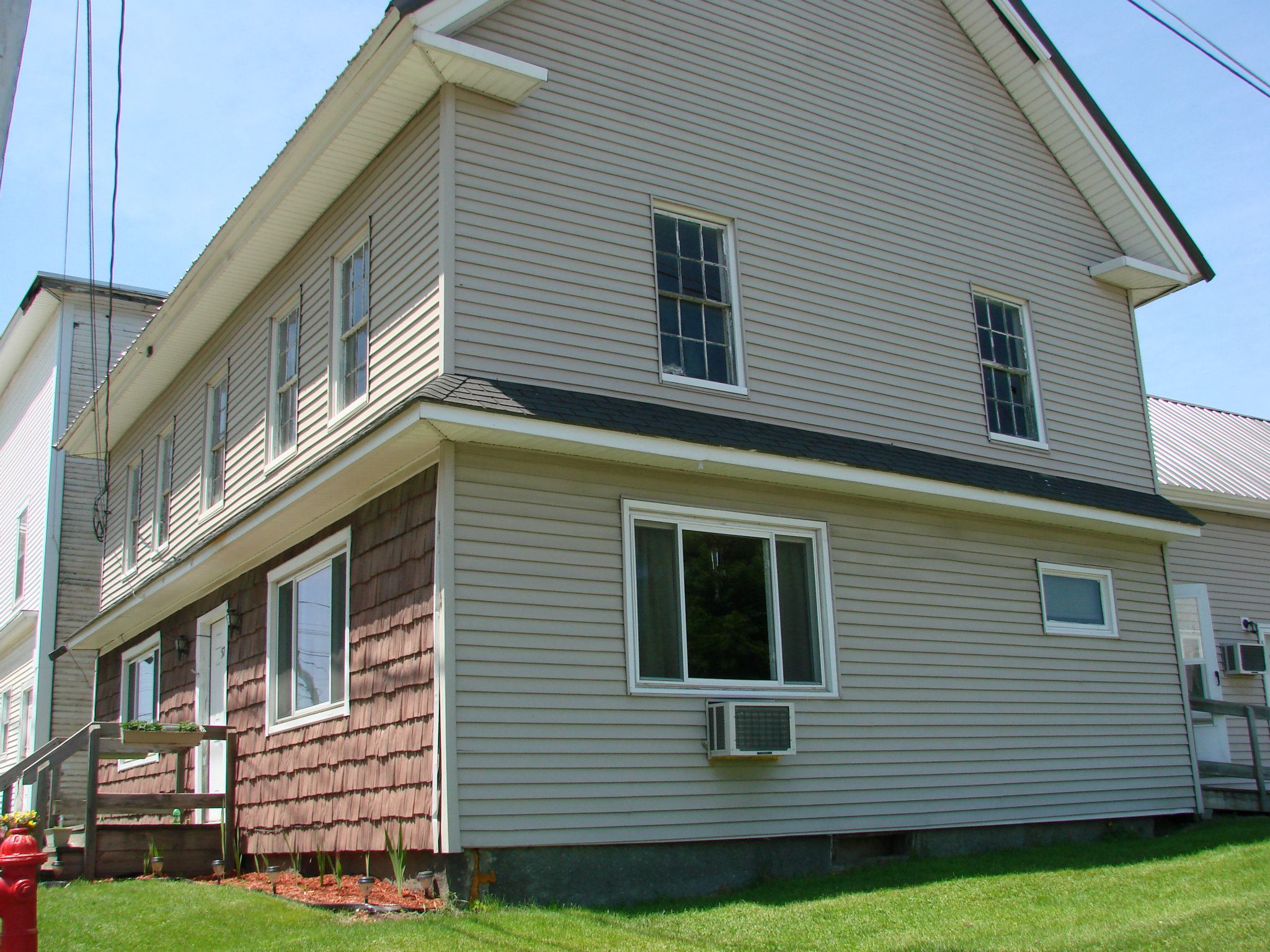
Former Harrington Block – 2012
*
In 1992, Christine & Joe Lewis moved their business next door into the former Hartland Grain & Grocery Store location.
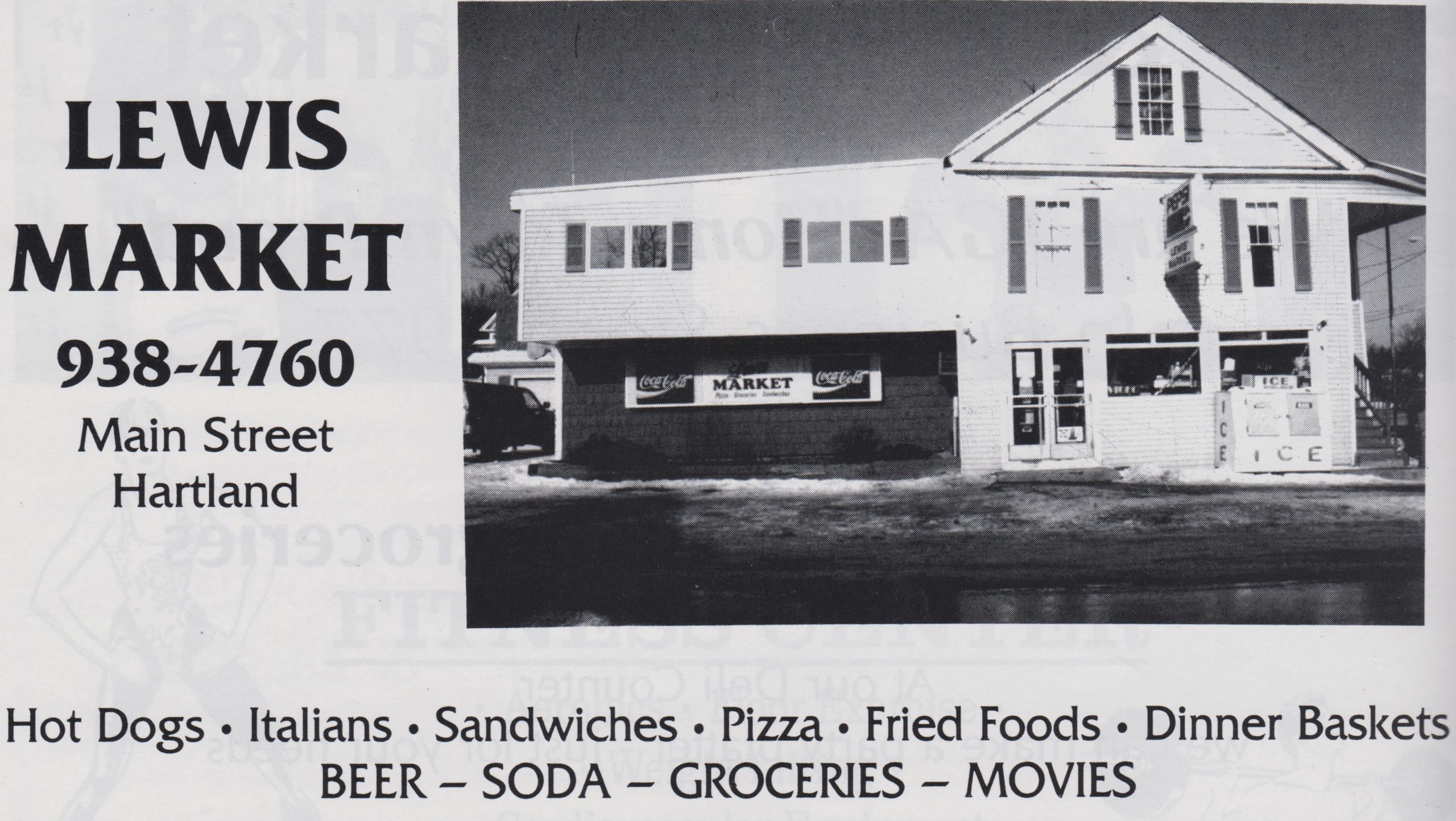
Lewis’ Market – 1995
*
The Lewis’ old building was razed in 1994 after being operated as a store by various owners for over 115 years.
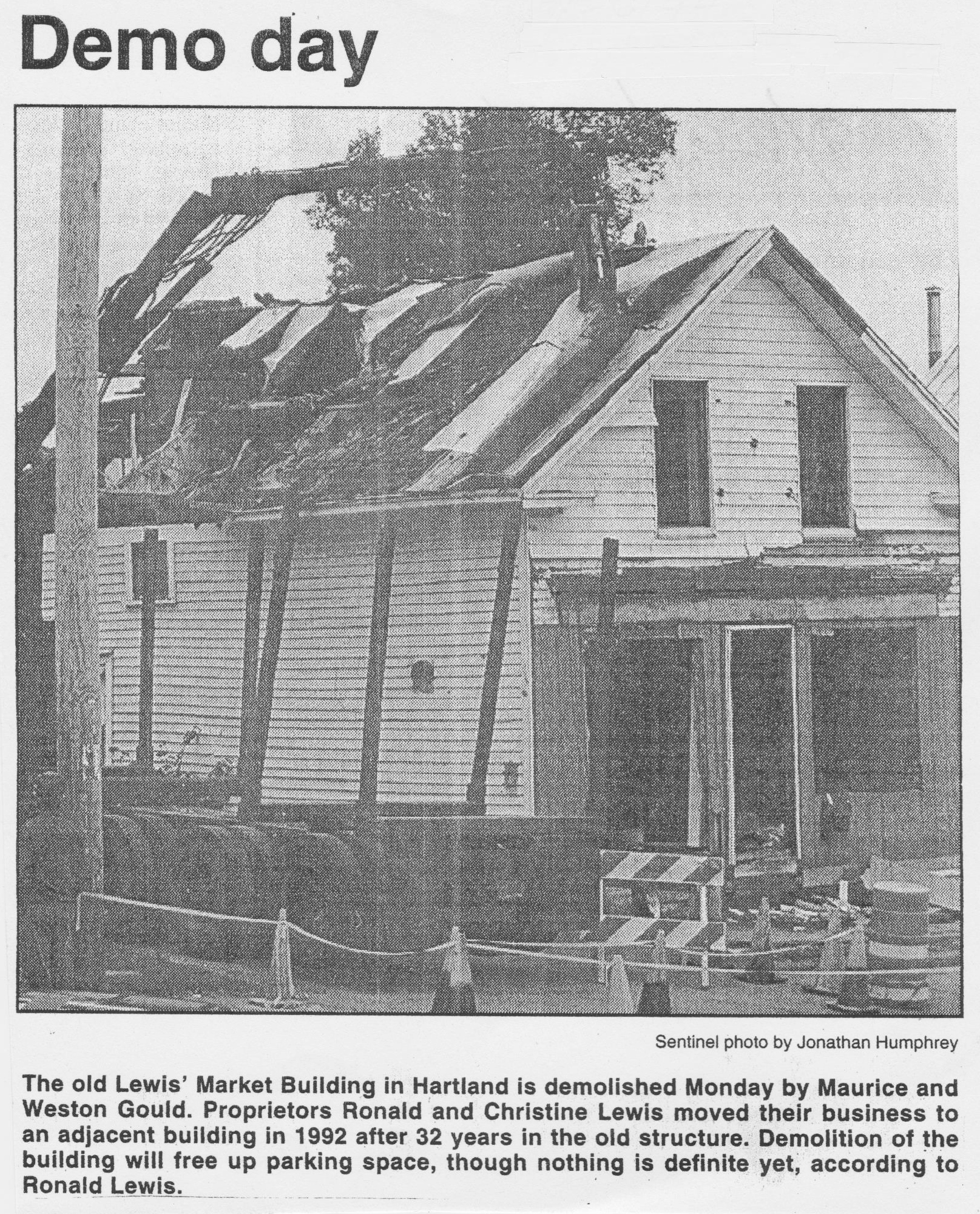
Demolition Day at Lewis’ Market – 1994
*
Numerous changes in ownership occurred over the years following Seagrave Corporation’s purchase of Irving Tanning from Meyer Kirstein in 1962. Seagrave eventually sold all its operations except the leather division to become Vista Resources, Inc. In 1990, the controlling interest in Vista Resources was assumed by the Fuqua Family of Atlanta, Georgia who began a massive modernization plan laid out in two phases to bring the plant back into its place in the international tanning community. Following bankruptcy filing in March of 2005, Irving Tanning Company merged with Prime Tanning Company in August of 2007 but in November of 2007, Prime then announced its merger with Cudahy Tanning Company of Milwaukee, Wisconsin.
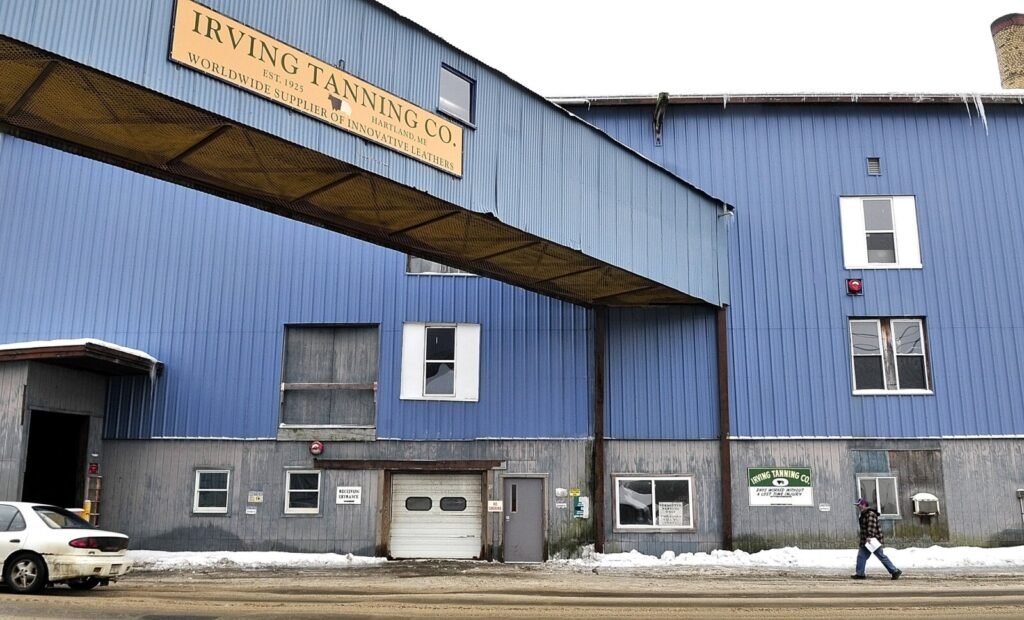
Irving Tanning Company – 2014
*
In 2011, Tasman Leather Group acquired the Hartland Prime Tanning Company. Optimism ran high for long term operations at the plant but in early May of 2020, Tasman announced declining demand for leather products due to the Coronavirus Pandemic had forced it to begin decreasing operations with the intention of closing its tannery facility in Hartland. Its future once again hangs in the balance.

Tasman Leather Group Hartland Facility – 2019
(Photo courtesy of Will Bunker Photography)
*
The former Hartland Emporium building and lot were purchased by Rocky & Vicki Rice but by then the old building was beyond affordable repairs and in 1996 the entire block was razed to make way for their new Moose Lake Market location.
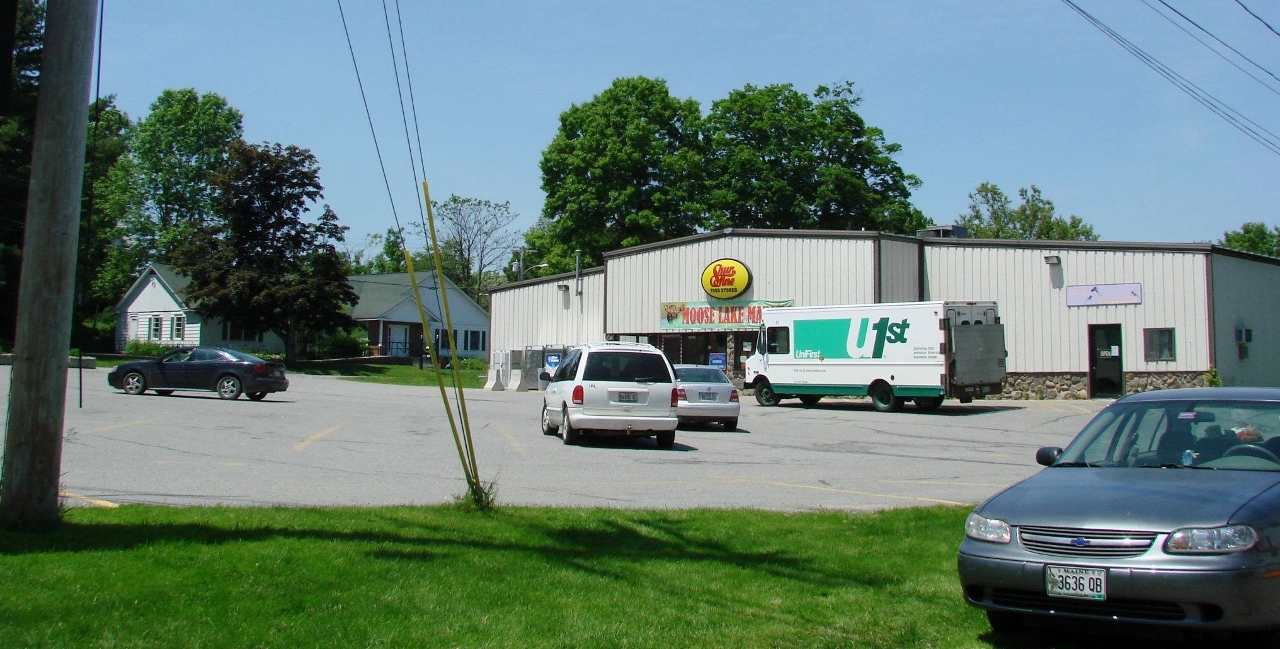
Moose Lake Market – 2012
*
In 1997, Michael & Jeanette (Marble) Tripodi bought the former Hartland Drug Store opening Nettie’s Restaurant which they operated until 2021.
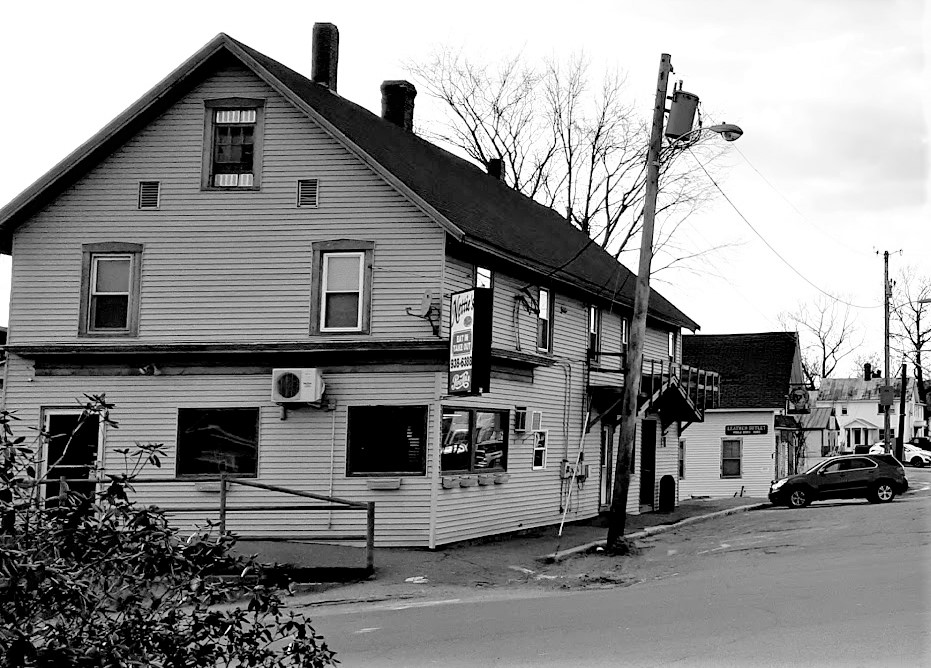
Nettie’s Restaurant at the corner of Main Street & Commercial Street – 2019
(Photo courtesy of Will Bunker Photography)
*
The empty lot where the former A. W. Miller Drug Store stood along with all of Warren Square and The Hartland House on Elm Street were purchased by Bangor Saving Bank who razed the entire area and built a new Hartland Branch in 1999. In 2016, Bangor Savings Bank closed its Hartland location. In 2017, lifelong Hartland resident & Hartland Historical Society Co-Founder Myrtle (Lovely) Marble purchased the building and lot donating it to the town for the specific purpose of relocating the Hartland Town Office.
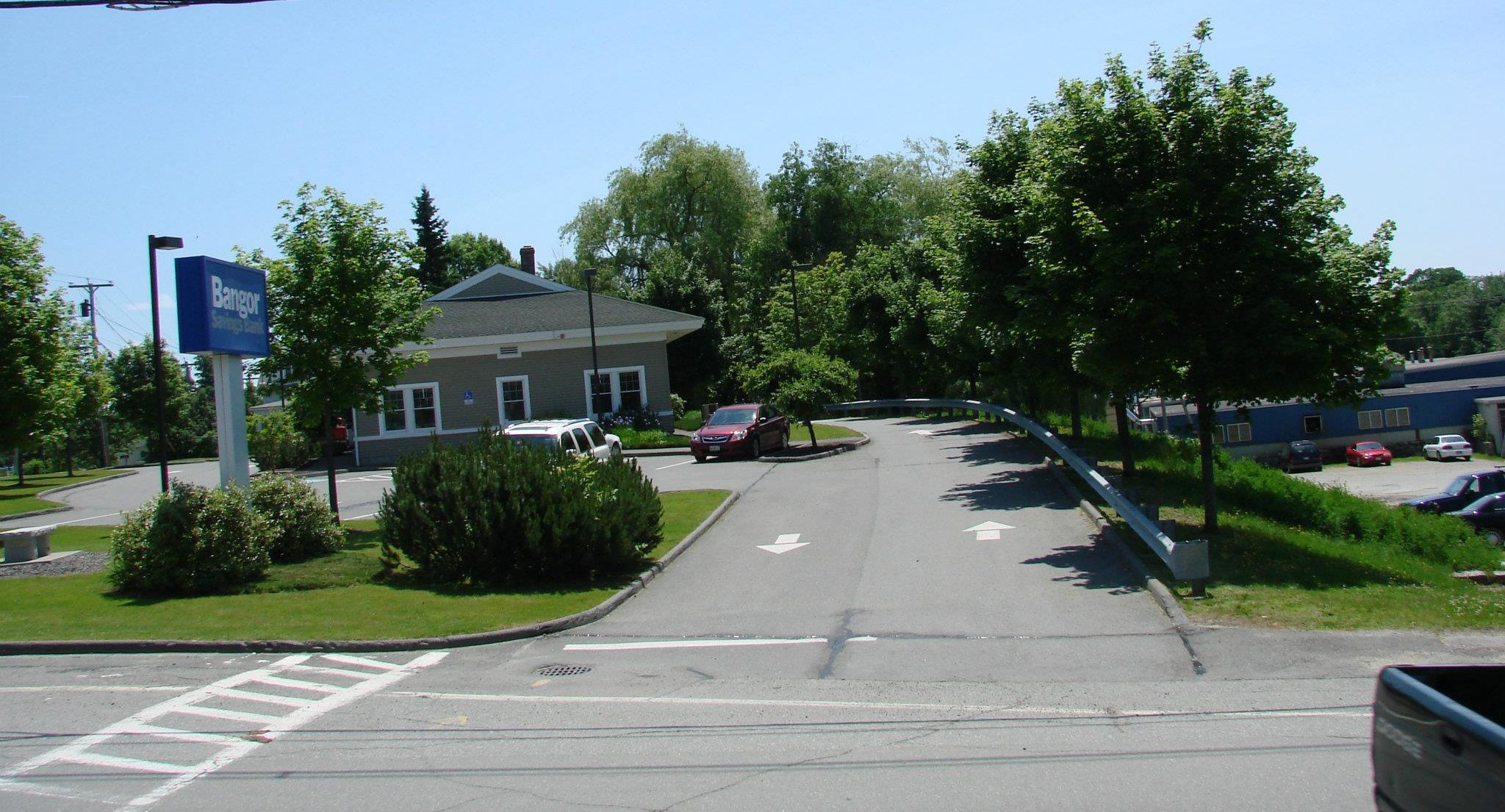
New Main Street Entry into the Hartland Branch of Bangor Saving Bank – 2014
*
The former John Page Residence which had served as the location for several gas stations over the decades was purchased and renovated to open as The Glass Eel Variety Store however legal issues soon arose forcing the closure of the new business which still remains vacant as of 2022.
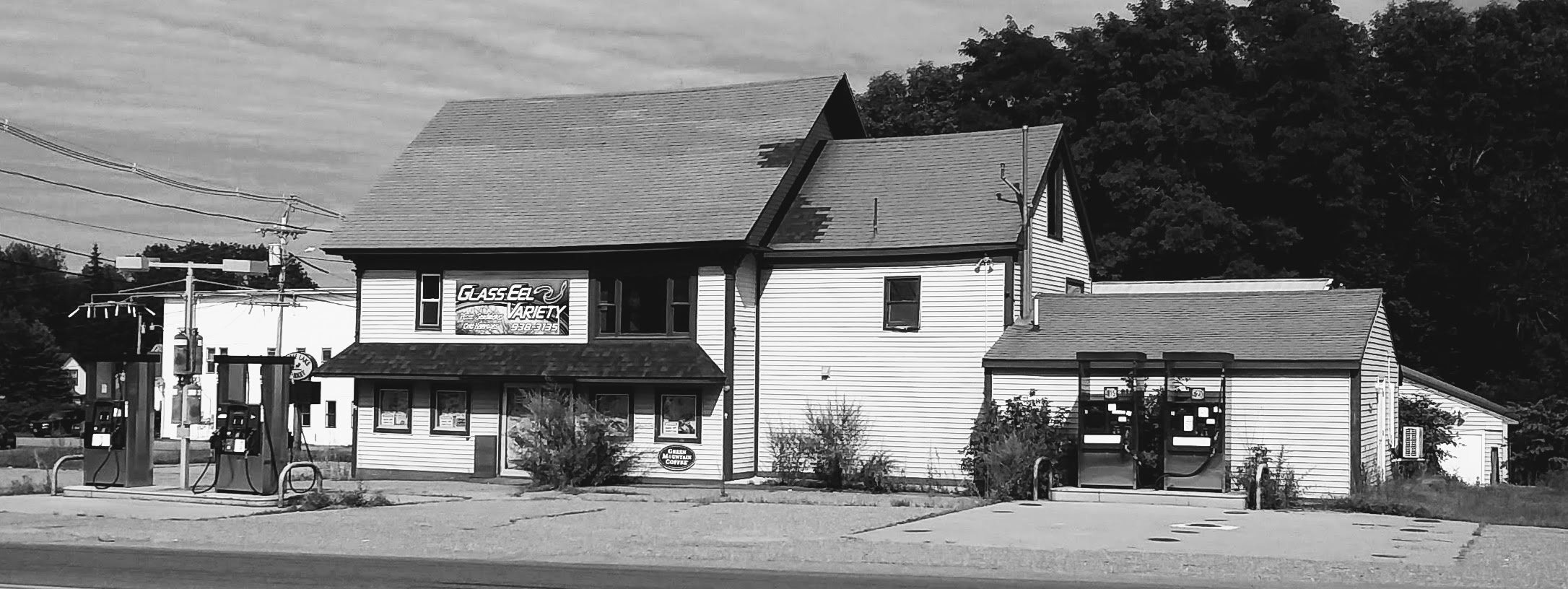
Glass Eel Variety Store – 2019
(Photo courtesy of Will Bunker Photography)
*
In 1999, construction began on Outer Main Street for a new Fire Hall for the Hartland Volunteer Fire Department which opened in June of 2000.
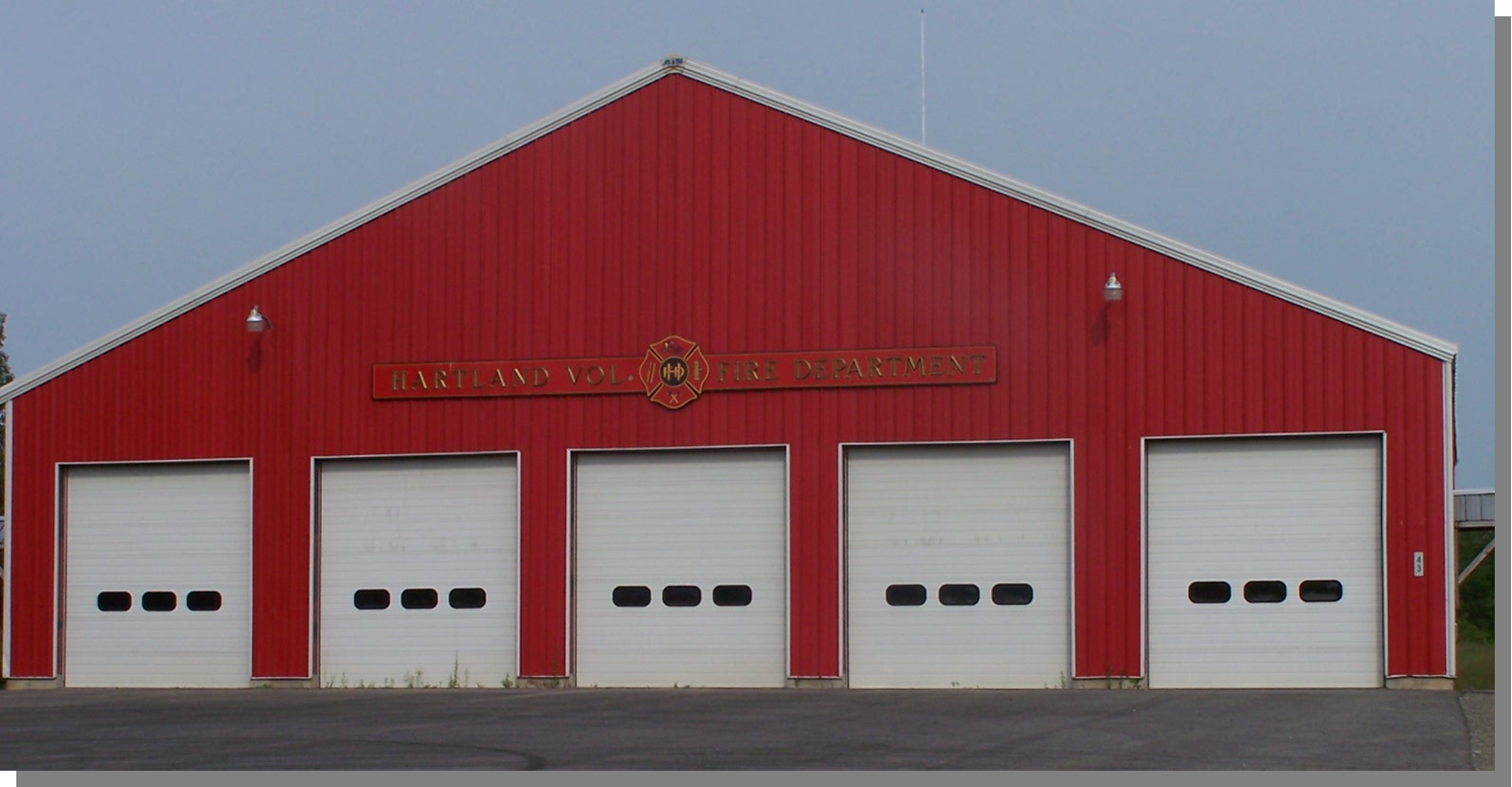
New Hartland Volunteer Fire Department Fire Hall – 2000
*
The outline of the old East Somerset Agricultural Fairgrounds and former Sebasticook & Moosehead Railroad line still remains visible today.
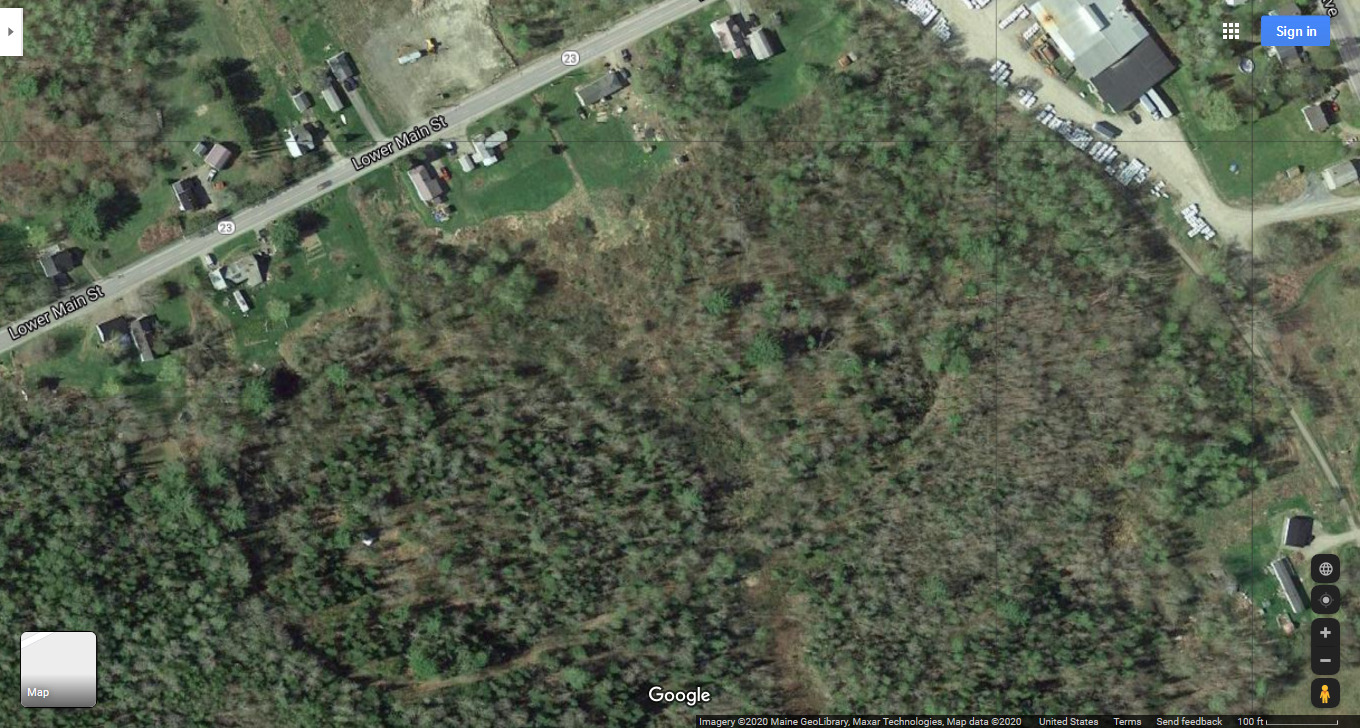
Ariel View of Outer Main Street – Google Maps 2020
*
While much has changed over the decades, several buildings still remain intact on Main Street today.
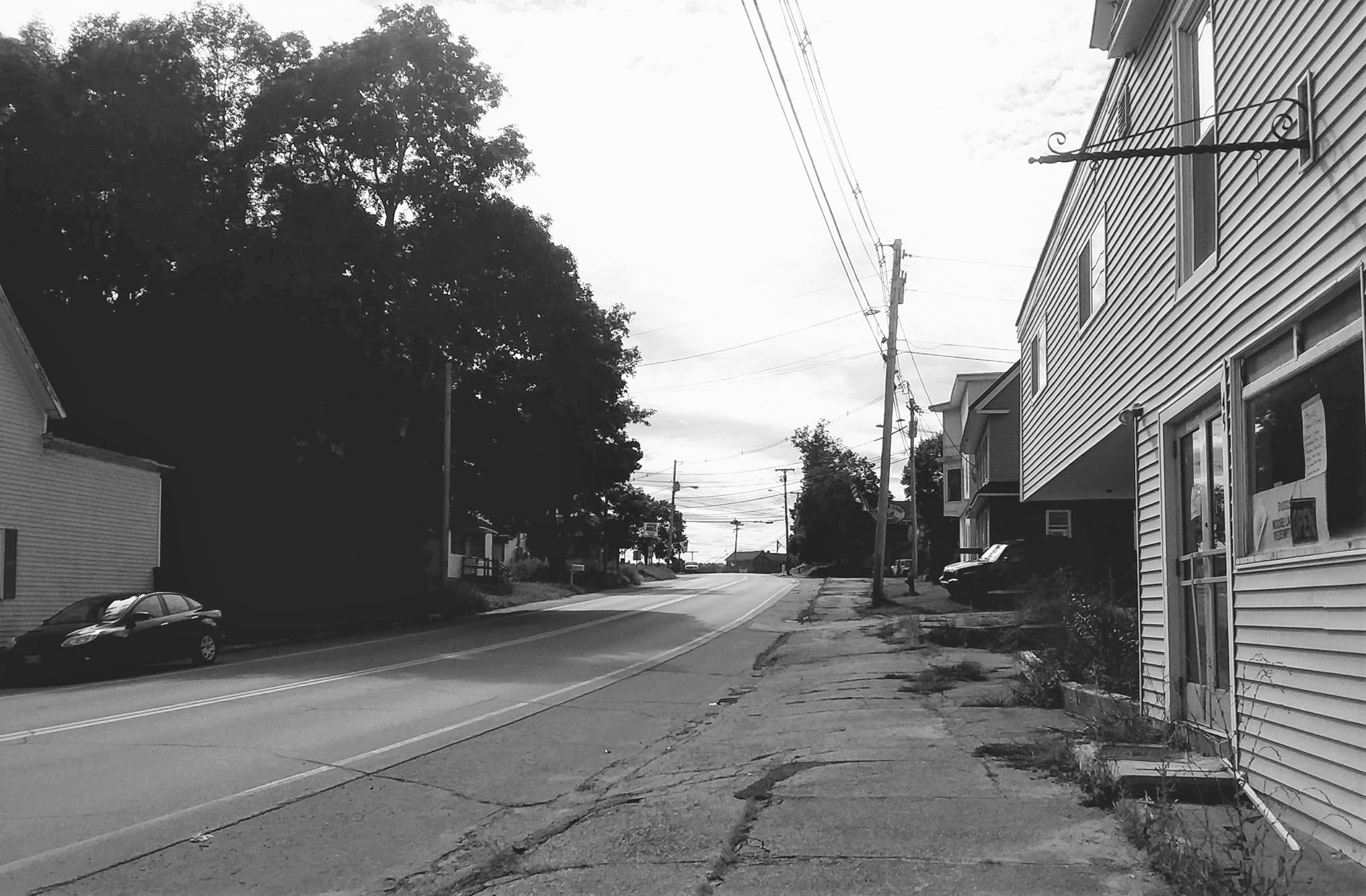
Main Street from the former Hartland Grain & Grocery Store – 2019
(Photo courtesy of Will Bunker Photography)
*
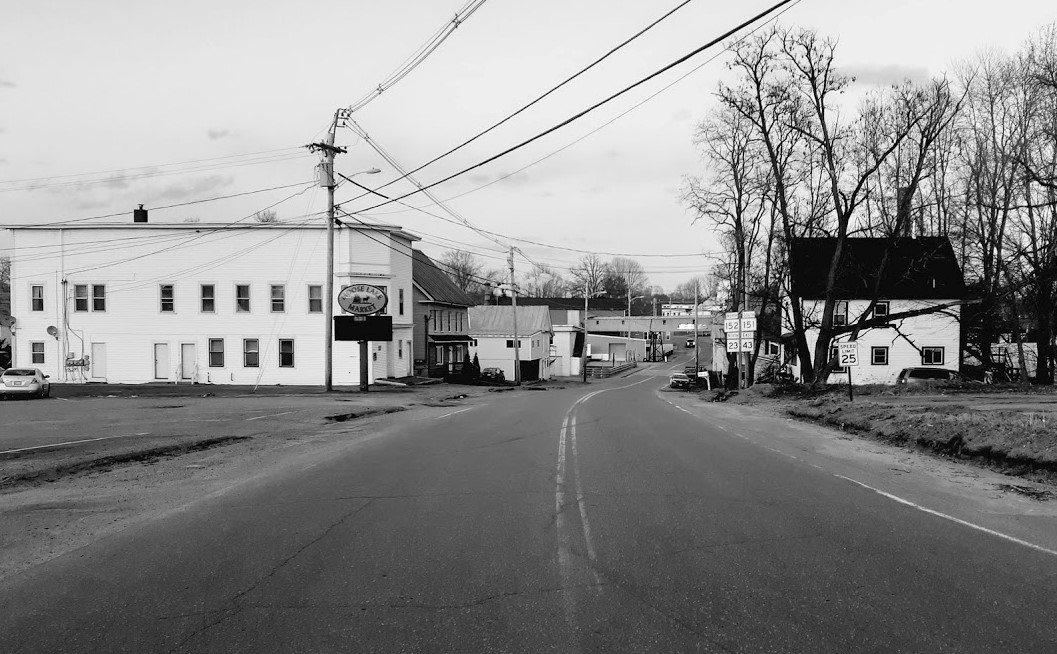
Main Street from the corner of Pittsfield Avenue – 2019
(Photo courtesy of Will Bunker Photography)